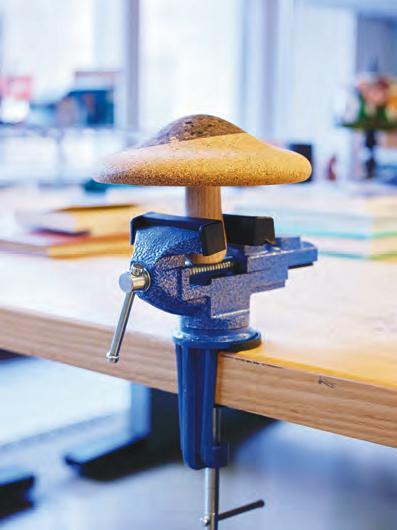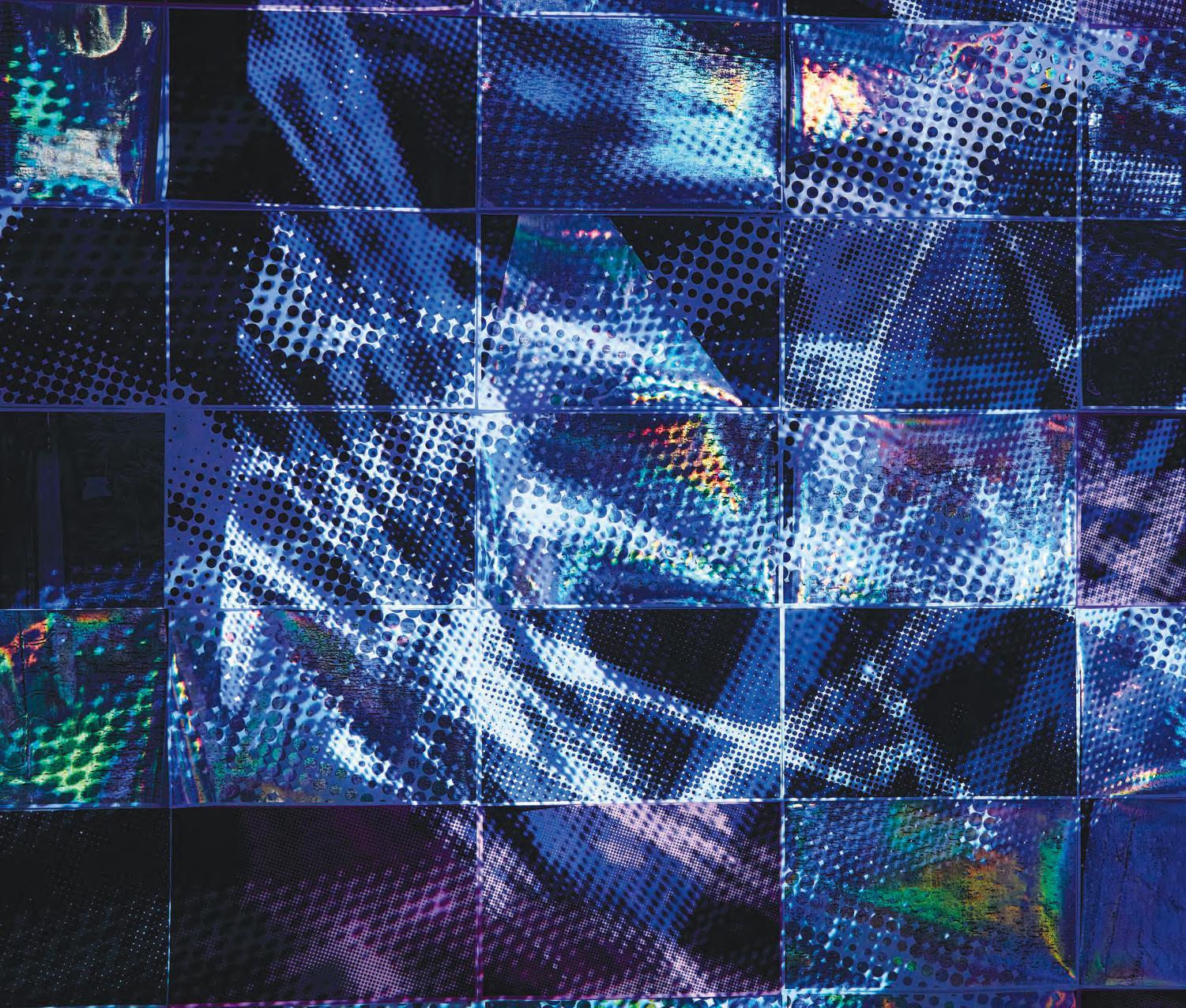SAIC Graduate Programs





 Sarah Aziz Architectural Typologies
Cover Weiyang Gao
Inside Cover
Maria Burundarena Vidrios rotos que brillan como un rayo (A broken glass shines like lighting), 2022
Sarah Aziz Architectural Typologies
Cover Weiyang Gao
Inside Cover
Maria Burundarena Vidrios rotos que brillan como un rayo (A broken glass shines like lighting), 2022

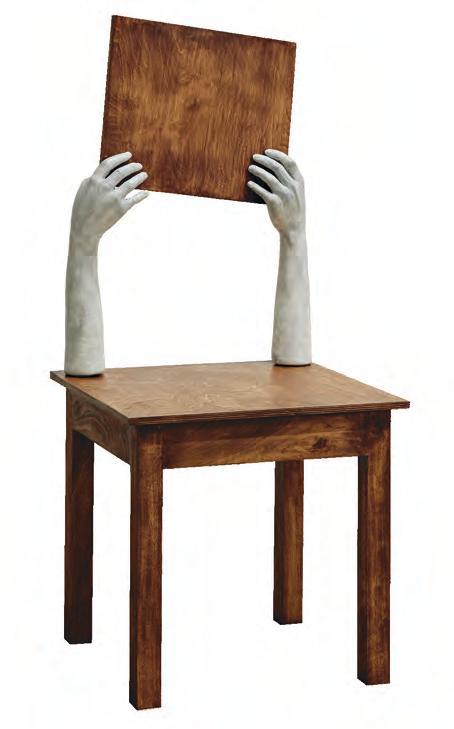


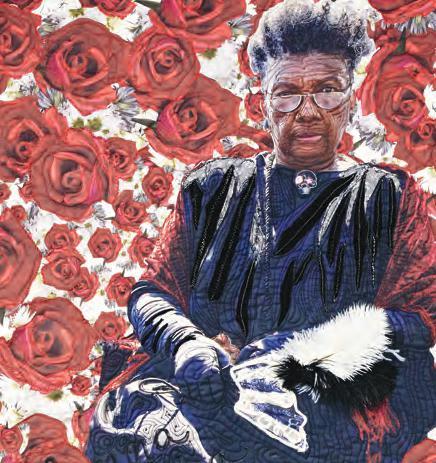

saic.edu
A top-ranked fine arts school


A world-class museum
A community of passionate thinkers and creators from around the globe
A graduate experience like no other
SAIC has been reinventing the practices that define artistic expression and exploration since 1866. Our own iconic Art Institute of Chicago and our emphasis on interdisciplinary exploration set SAIC apart, creating a uniquely rich educational experience.
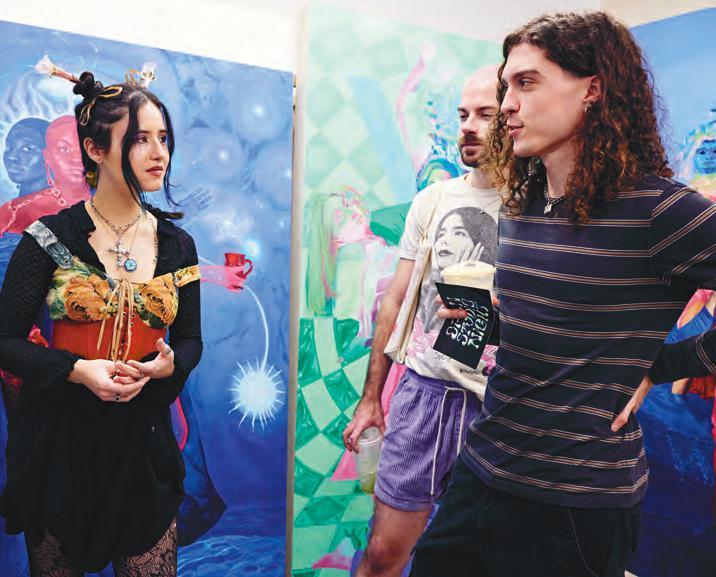
At SAIC, we make history. Our faculty, students, and alums have made groundbreaking contributions to contemporary art, design, and scholarship—and continue to do so.
We invite you to join them
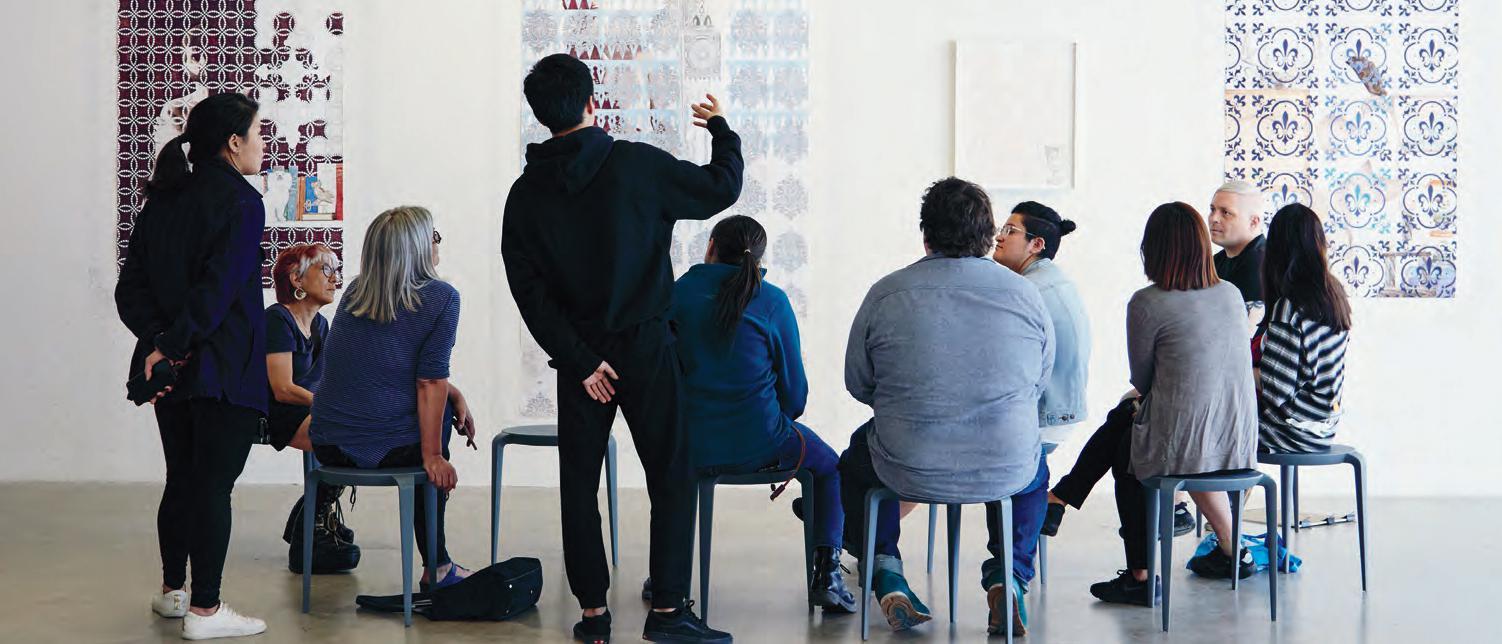
At SAIC, you’ll be part of a vibrant community of creators and scholars, where you are encouraged to go beyond the boundaries of your program to explore other disciplines.
Our urban campus in the heart of downtown Chicago’s “Loop” provides a unique student experience with the Art Institute of Chicago and the bustling city itself serving as educational resources. Yet the campus also offers quiet, intimate spaces where students can connect and collaborate.
The SAIC community is one where lifelong bonds are formed. SAIC alums regularly collaborate with each other, forming companies, galleries, institutions, and installations, exhibiting their works locally, nationally, and abroad.
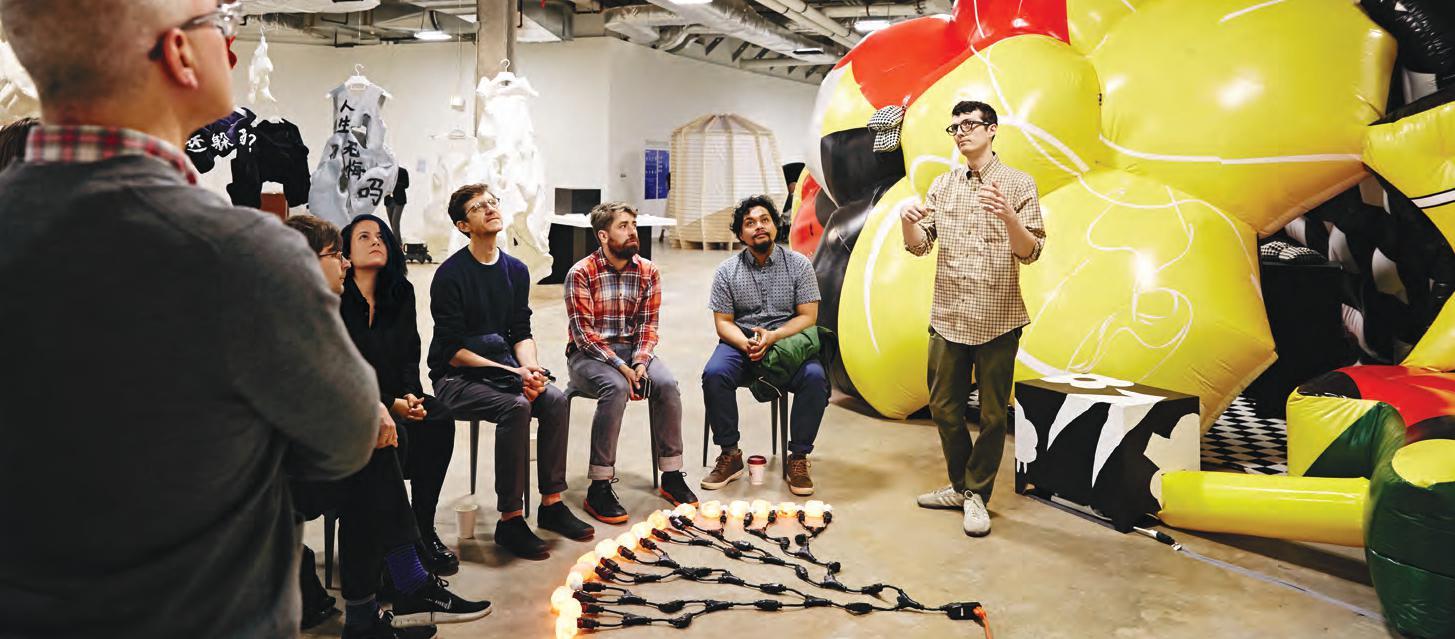

saic.edu/international
The SAIC student body includes artists from more than 80 countries, providing a global perspective that enriches and inspires creative expression and dialogue. The SAIC Office of International Affairs supports the needs and interests of students from all backgrounds.
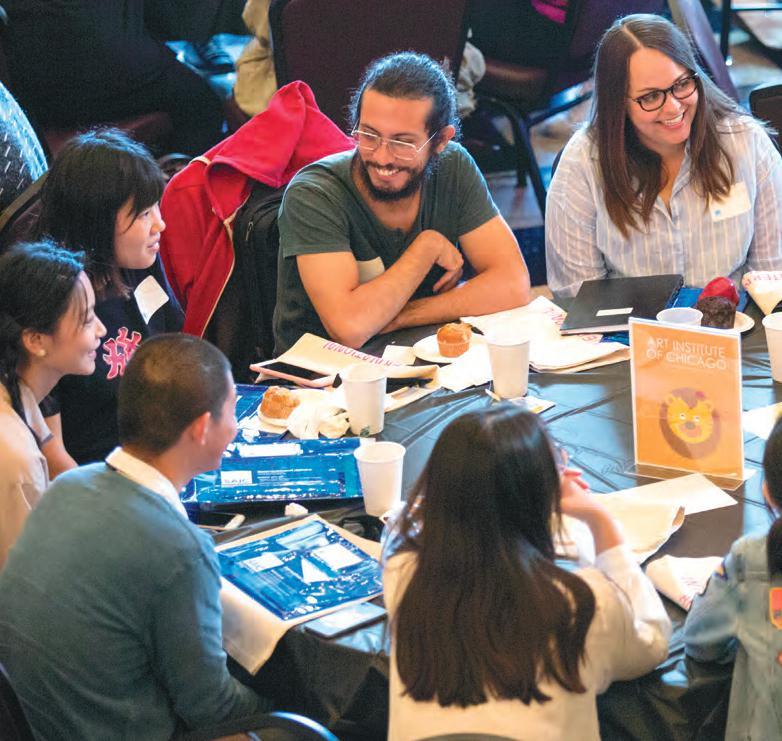
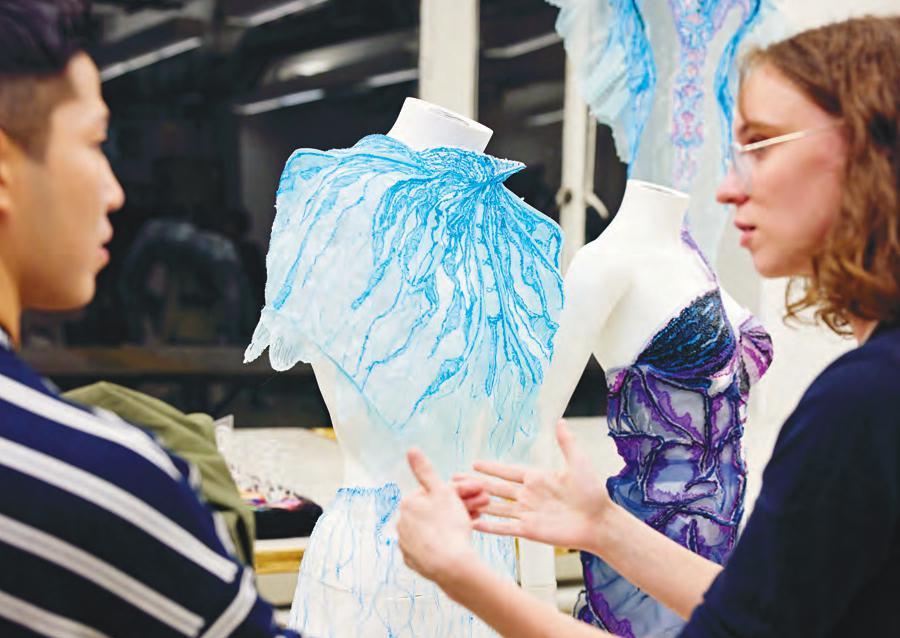
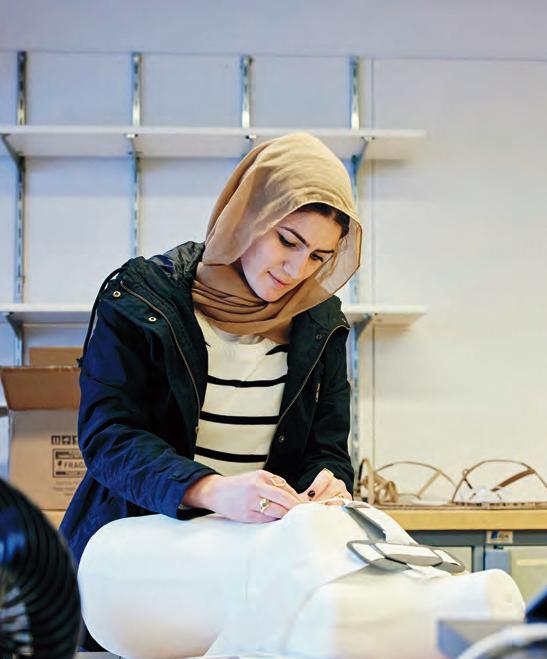
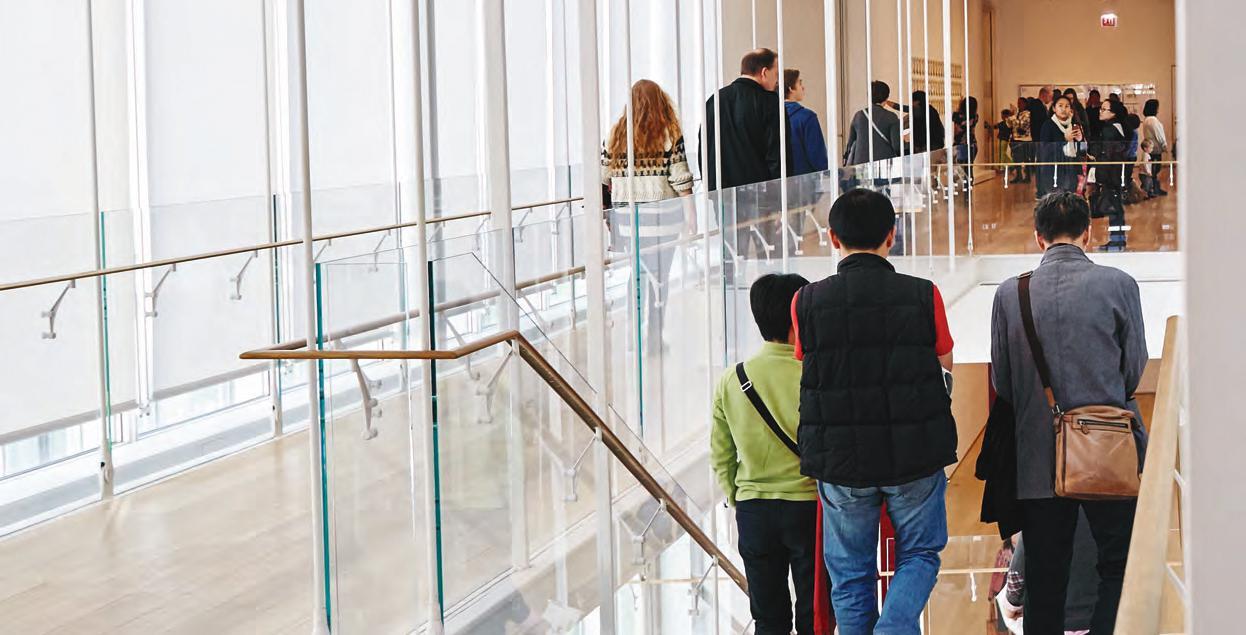
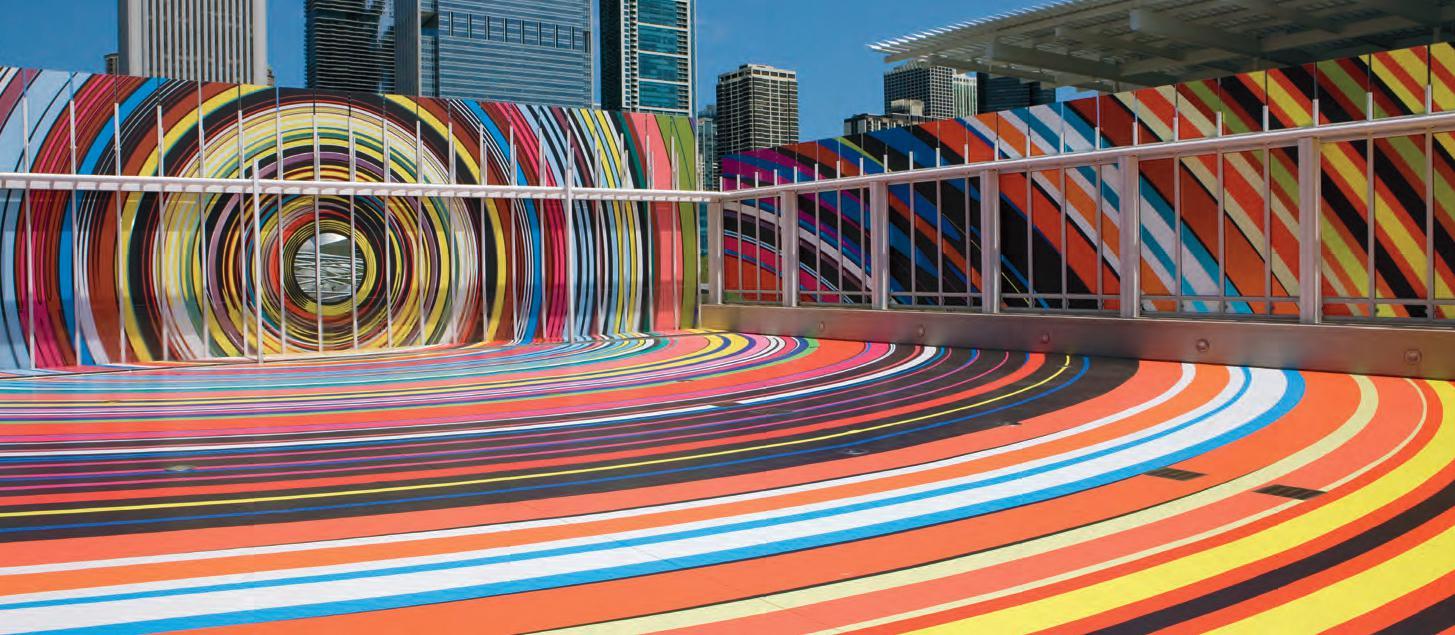
The Art Institute of Chicago is home to one of the world’s largest collections of art, spanning centuries and representing cultures from around the globe. In addition to groundbreaking contemporary works in the 264,000-square-foot Modern Wing, the Institute is home to ancient cultural treasures and the greatest collection of Impressionist art outside of Paris. In addition to the Institute’s own collections, it regularly hosts headlining exhibitions and events celebrating artists past and present.
SAIC students enjoy open access to the museum and its collections, as well as its research libraries. The AIC is an exceptional resource for research and inspiration.


The Ryerson and Burnham Libraries constitute a major research collection in the fields of art and architectural history serving the museum, SAIC, and the public. Resources include catalogues raisonnés, scholarly journals, auction catalogs, comics, artists’ sketchbooks, and documents and papers of Chicago-area artists and architects.


The Art Institute of Chicago was founded by faculty in 1879 as a teaching collection for students.
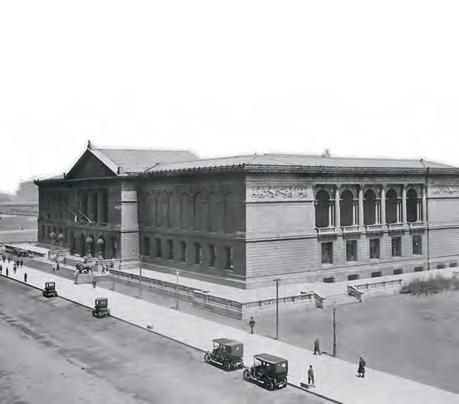

SAIC students have access to the Prints and Drawings room, where original works of art by world-renowned artists and designers are available for up-close examination. Art History classes often use this space to spark and drive discussion.
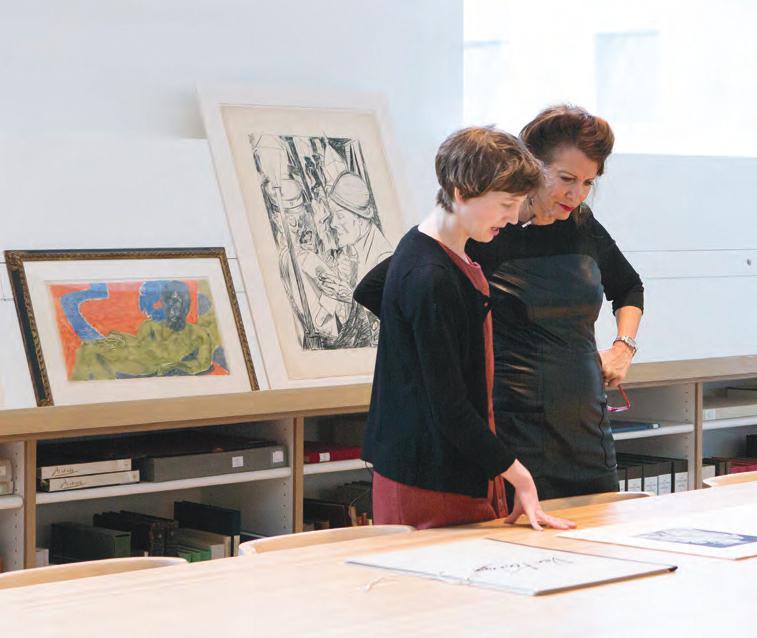

This world-class city plays a leading role in your SAIC experience
SAIC’s urban campus places students in the epicenter of Chicago—a world-class city that is stimulating and dynamic, progressive and historic. Our central location offers easy access to the city’s astonishing variety of architecture, visual and performing arts, diverse communities, and more. With one of the top three public transportation systems in the U.S., Chicago is easily accessible.
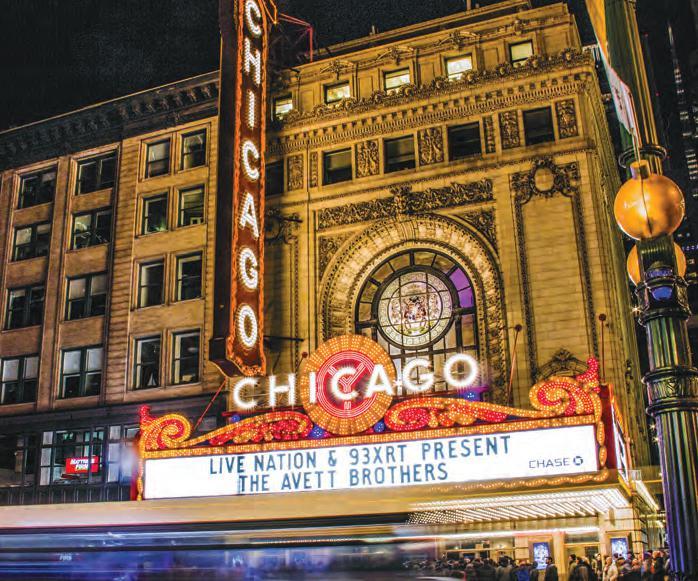
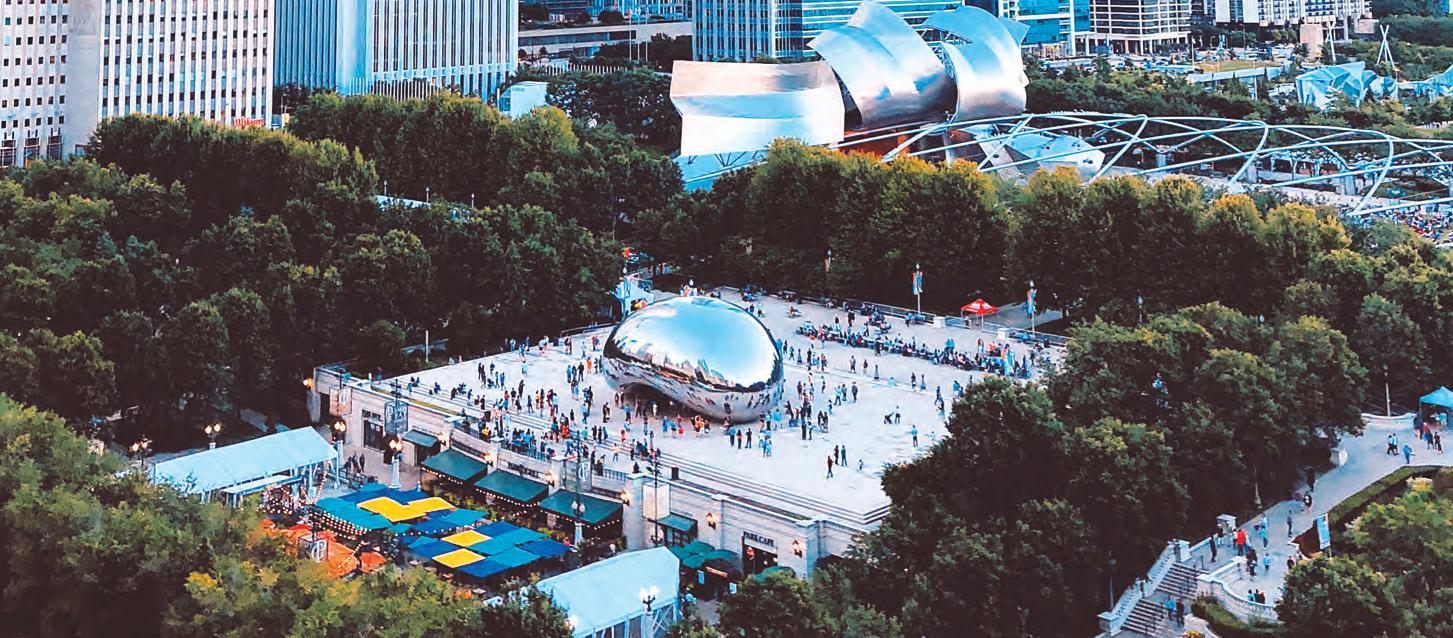
Chicago is one of America’s most livable big cities thanks to its 77 neighborhoods, each with its own unique personality, population, and street life. Many draw on their histories as ethnic enclaves and some retain their distinctive housing, dining, nightlife, shopping, and events and festivals rooted in, and celebrating, those cultures.
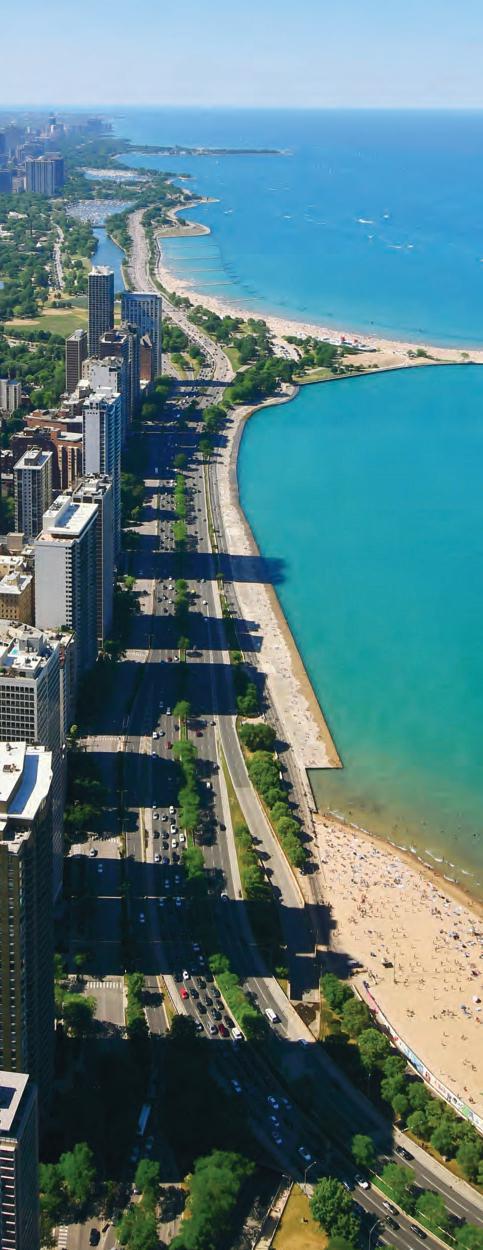
The path along Lake Michigan’s shoreline passes by some of the most popular and historic sites in Chicago, including the Museum of Science and Industry, Soldier Field, the Field Museum, Millennium Park, and Navy Pier. Twenty four beaches—including two dog-friendly beaches—are free and open to the public year-round. Explore the lakefront’s 18 miles of runners and bicyclists, beach volleyball players, swimmers, and parks hosting picnics, summer sports leagues, movie nights, and festivals.
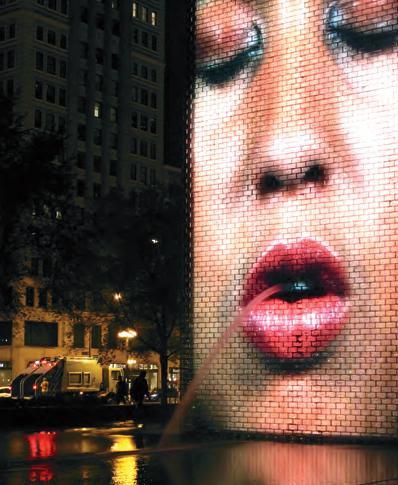
Chicago’s art scene is vast and diverse, from major museums such as the Art Institute and the Museum of Contemporary Art, to smaller, eclectic institutions throughout the city, such as the Intuit Center, the National Museum of Mexican Art, the Stony Island Arts Bank, and the groundbreaking work of Theaster Gates. SAIC faculty and alums are actively involved in the city’s art scene, from world-class institutions to galleries and art fairs.
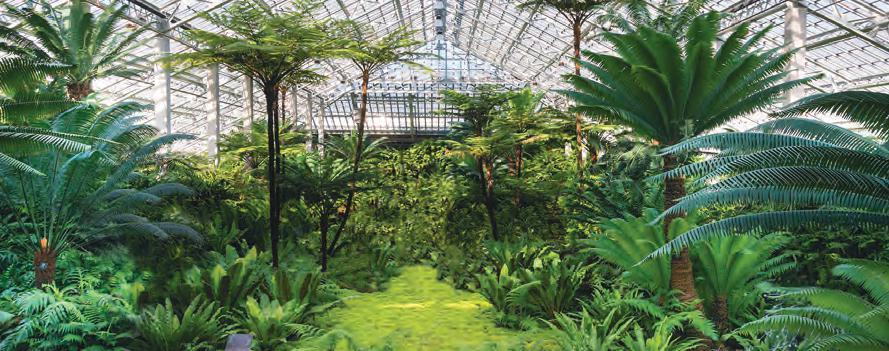
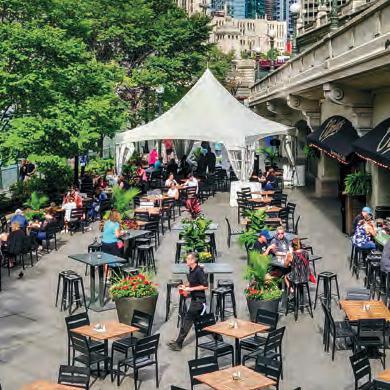
In a city as large and ethnically diverse as Chicago, it’s no surprise that food options are equally varied. Taste your way through tiny storefronts specializing in inexpensive, ethnic eats; food trucks offering a wide range of options; fine dining from nationally celebrated chefs; and neighborhood institutions serving up everything from burgers and dogs to specialties from around the world. Whatever you have an appetite for, you’ll find it here.
Music is embedded in Chicago’s heritage. The city’s music scene includes everything from classical, opera, and Broadway shows to blues, jazz, country, bluegrass, reggae, pop, experimental, and indie rock. The city is home to a vast array of venues, from downtown theaters, outdoor music festivals, the United Center, and the House of Blues to small, funky neighborhood spots featuring new and local artists. In the summer, free outdoor concerts at the Frank Gehry-designed Jay Pritzker Pavilion are just a short walk from SAIC.


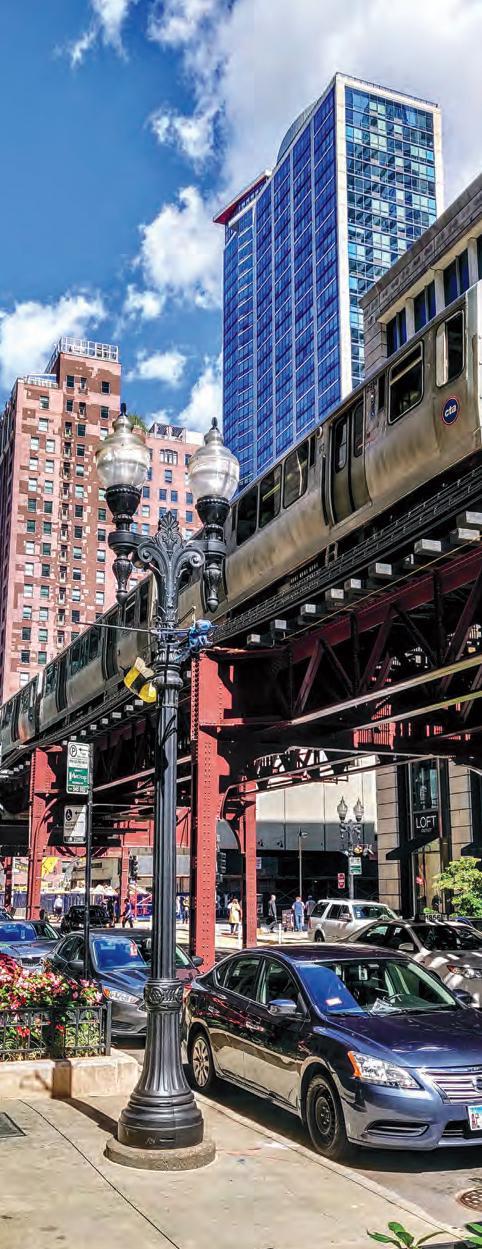
saic.edu/ourfaculty
SAIC faculty members are more than skilled educators— they are globally renowned artists, designers, scholars, influencers, and innovators. As practitioners themselves, they understand what it takes to thrive as an artist. Their insight, experience, and connections make them valuable mentors.
Whether pursuing our Studio, Design, or Academic programs, you will be enriched and inspired by our faculty’s insights and guidance.
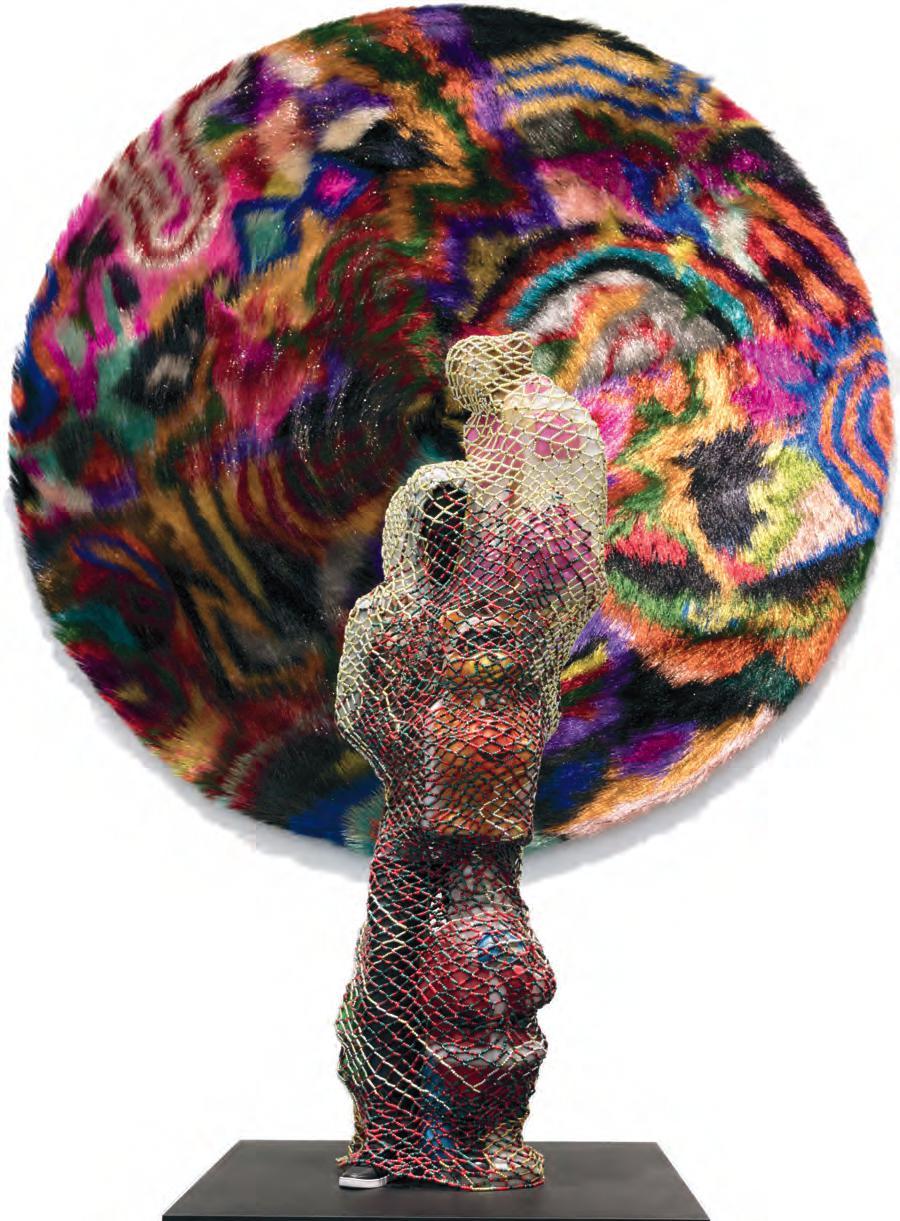


Nick Cave is celebrated as one of today’s most original artists. His work crosses disciplinary lines, combining fashion, sculpture, and performance. Cave’s body of work was spotlighted in his first-ever retrospective, Nick Cave: Forothermore, at the Museum of Contemporary Art, Chicago and the Guggenheim in New York. Serving as an ode to all who have been “othered” by discrimination, the exhibition spans Cave’s career, from vivid metallic wind spinners to his surrealistic Soundsuits. In collaboration with Knoll Textiles, Cave created a line of commercially available fabrics and wall coverings which were featured in a New York Times profile.
“SAIC graduates represent the next generation of artists and creators, and I’m interested in seeing and experiencing what their vision is going to look like. I’m interested in what they bring to the table, helping them problem solve and establish a particular point of view.”

Interdisciplinary artist and educator Andres Luis Hernandez focuses on reimagining the physical, social, and cultural environments we inhabit. A native Chicagoan, Hernandez created the Urban Vacancy Research Initiative (UVRI) focused on shifting the paradigm of vacancy from one of deficiency to one of opportunity. Hernandez was one of seven commissioned main exhibitors in the U.S. Pavilion for the 2018 Venice Architecture Biennale. He has collaborated with artist Amanda Williams on A Way, Away (Listen While I Say), a design-build commission organized by the Pulitzer Arts Foundation and the Sam Fox School of Design & Visual Arts at Washington University in St. Louis.

Adam Greteman was selected as a faculty member for the inaugural Hunt-Simes Institute in Sexuality Studies (HISS) at the Sydney (Australia) Social Sciences and Humanities Advanced Research Centre, the first initiative of its kind in the AsiaPacific region. As a queer scholar, Greteman recognizes the importance of including diverse voices and experiences in teaching, writing, and making. In 2019, he co-founded the LGBTQ+ Intergenerational Dialogue Project which connects two populations— LGBTQ+ youth and LGBTQ+ elders—through a partnership between SAIC, Center on Addison at Center on Halsted, and the University of Illinois.

Working at the intersection of painting, textiles, and design, Diana Guerrero-Maciá uses a variety of materials, sampling and revising abstract forms addressing myth, color, and iconography. Her collagebased hybrid paintings allude to cultural references—from databases and modernism to Romanticism and medieval art. GuerreroMaciá has exhibited nationally and internationally and her artworks are held in multiple public and private collections. She has created multiple public art commissions for the Public Art Fund, NYC, and the City of Chicago. In 2021, she was named a Guggenheim Fellow.

A 2021 Guggenheim Fellow and a National Academician in the National Academy of Design, Michelle Grabner is an artist, curator, and critic recognized for her broad perspective. A recent solo exhibition at MICKEY in Chicago highlighted Grabner’s remarkable range—incorporating painting, sculpture, and photography—featuring works all made in 2022. She was a curator of the Whitney Biennial in 2014. Grabner is a resident faculty member at Skowhegan School of Painting & Sculpture and codirects the artist-run exhibition spaces and residencies at The Suburban in Milwaukee and The Poor Farm in Little Wolf, Wisconsin. Her works are held in leading public collections in the U.S. and Europe.

Daniel Eisenberg has been making films and videos at the edges of documentary and experimental media for three decades. His films have been screened throughout Europe, Asia, and North America with solo exhibitions at leading art museums on both sides of the Atlantic. His film, The Unstable Object II, won top awards at the 2022 Marseille International Film Festival (FIDMarseille). The film explores the relationship between the hand and the machine by observing three factories around the world. He has also researched and edited major documentaries for National Public Television, including Eyes on the Prize: America’s Civil Rights Years and Vietnam: A Television History.
George Aye is deeply committed to using human-centered design to help the lives of people in need. He co-founded Greater Good Studio, focusing on translating user-centered research into tangible design outcomes across a variety of domains—from software interfaces to environments to user-centered experiences. Previously, he worked at global innovation firm IDEO and served as the first human-centered designer at the Chicago Transit Authority, designing a new rider experience for the CTA Bus Rapid Transit proposal. Listed among the world’s leading social innovators in the Public Interest Design 100 list, Aye was selected as a jury member for the 2023 CORE 77 Design Awards Social Impact Team.
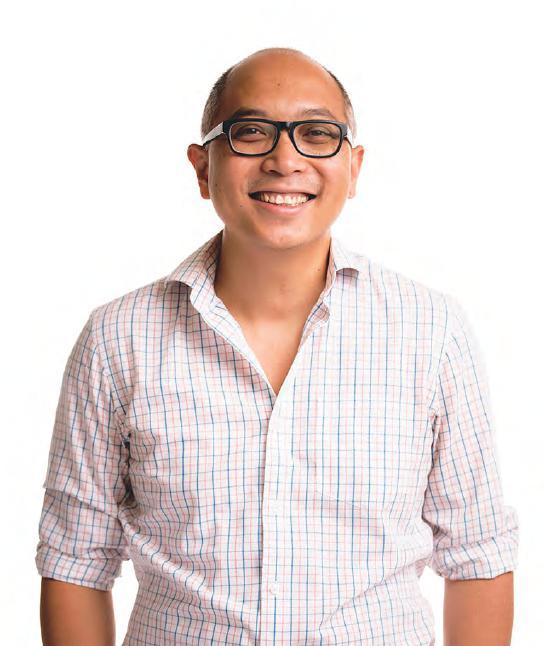
Novelist and poet Jesse Ball wrote his latest book, Autoportrait, in a single day while staying at John Grisham’s estate in Mississippi. Called “a master stylist, among his generation’s most ambitious and provocative” by The Los Angeles Times, Ball is interested in dreams, games, and ambiguity, often exploring dystopian themes. Ball’s novel The Diver’s Game was named one of the best books of 2019 by The New Yorker, and his novel The Children Six won the Berlin Prize from the American Academy in Berlin. Granta included Ball on their list of Best Young American Novelists in 2017.


Eduardo Kac’s art and poetry not only cross disciplinary boundaries, but even extend their reach into outer space, defying gravity. His Space Art comprises works made in or sent to space, including pieces created on the International Space Station and sent to Saturn on the Cassini spacecraft. His work expands the limits of locality, light, and language, integrating a wide range of media and technologies to present an imaginative view of art’s relevance to the contemporary world. He is internationally recognized for his groundbreaking work, including telepresence art, holopoetry, and aromapoetry. Kac’s work has been exhibited in premier museums and venues internationally.
For Leah Gipson, social justice and art therapy go hand in hand. During the recent pandemic, she collaborated with other artists and Black girls to create The Black Girlhood Altar, a sacred site in Chicago for Black girls and young women who have gone missing or been murdered. Gipson and her collaborators on the project were selected in 2023 as artists-in-residence in The Learning Lab at the Chicago Cultural Center, inviting the public to participate in creating The Black Girlhood Altar in that space. Gipson’s work has been featured at the South Side Community Art Center, Jane Addams Hull House Museum, Museum of Contemporary Art Chicago, and Project Row Houses in Houston, Texas.
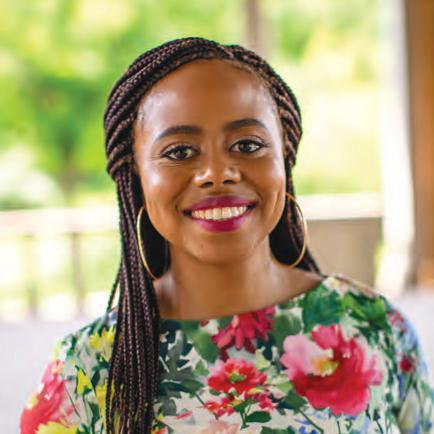
Nicholas Lowe has a fascination with panoramas from the past and how they connect with the virtual realities of the present. From rotunda paintings to the vast scrolling landscape panoramas of the 19th century called “Moving Mirrors,” Lowe examines these as forms of storytelling and cultural narratives. He also creates his own panoramas, including works focusing on Chicago and Lake Michigan, as well as vertical landscapes inspired by the overland trail of westward expansion. A frequent archiver of other artists’ work, Lowe is co-curator for an exhibition of Chicago sculptor and collage artist Alice Shaddle (1928 – 2017) at the Hyde Park Art Center, where Shaddle taught for 50 years.
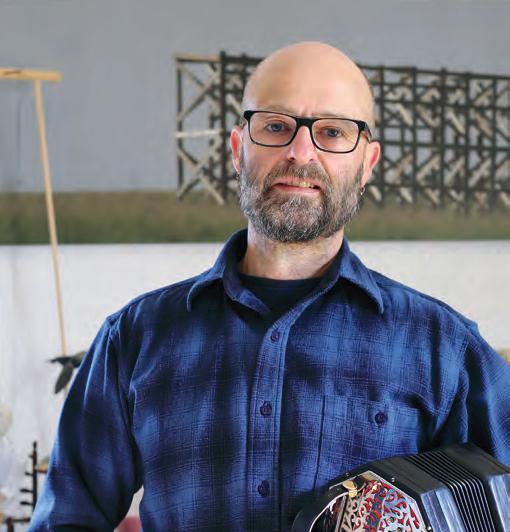
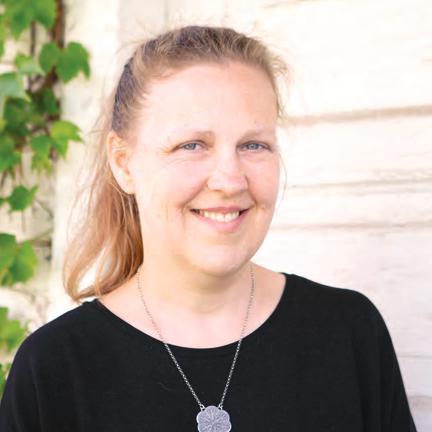
Aimée Beaubien’s work blurs the lines between photography and sculpture, as she cuts and reassembles printed images to create multidimensional collages that explore the oscillation between photographic depiction and material form. Her garden installations make associations among organic forms in the garden, the ephemeral, and the photographic. Cut forms interweave, encircle, and hang in ribbon-like shreds, becoming wild ornamental outgrowths. An SAIC graduate, Beaubien’s work has been exhibited at the Museum of Contemporary Photography in Chicago, the UCRC Museum of Photography in California, and galleries from New York to Berlin and has been featured in a variety of art publications.
Take a deeper dive into our exceptional faculty by reading the featured faculty profiles on pages 106, 110, 114, and 118.

SAIC’s libraries, archives, and special collections are ideally suited to satisfy the expansive and evolving research needs of graduate students. Resources include traditional library and archival collections along with interdisciplinary, multimedia, and site-specific resources that encompass the full range of subjects related to art and design.

37 S. Wabash Ave.
An epicenter for research and study, the John M. Flaxman Library houses more than 130,000 books, magazines, movies, and sound recordings—plus 110,000+ ebooks and ejournals, 150+ databases, and 200,000+ digital images available online in addition to the SAIC Digital Libraries, our digital repository.
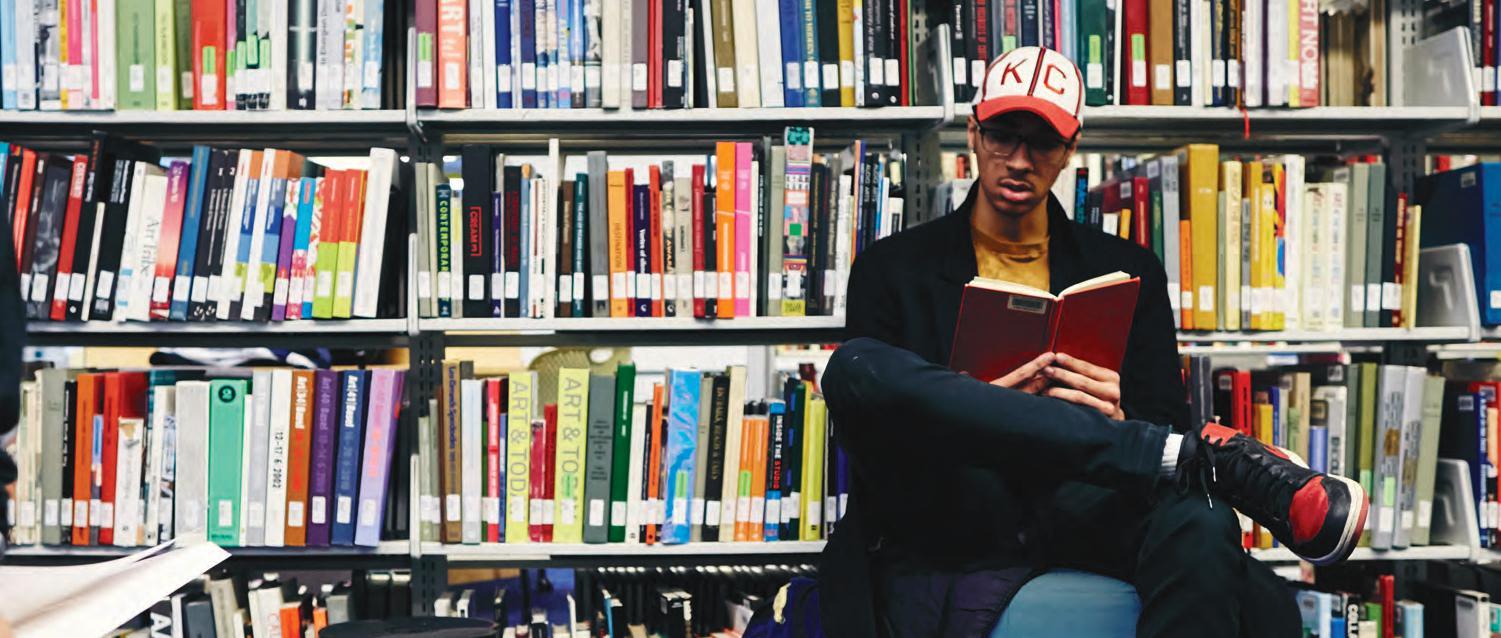
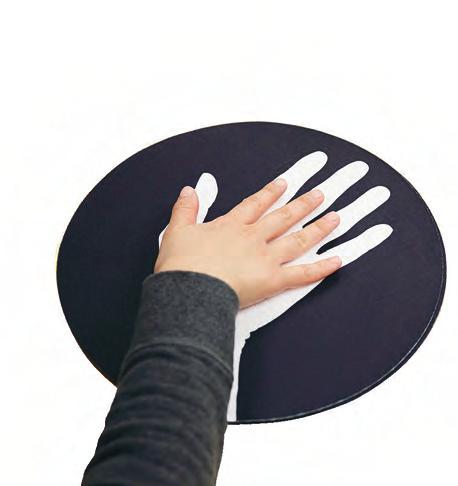
The Joan Flasch Artists’ Book Collection (JFABC) brings together close to 10,000 artists’ publications in all formats and media including books, zines, multiples, video and audio recordings, digital works, periodicals, and other intimate works of art created by significant local, national, and international artists from the 1960s to the present.
The archives contain historical records of performance, sculpture, visual, and other art forms created or curated by local and international artists during the two-decade history of this legendary Chicago institution.
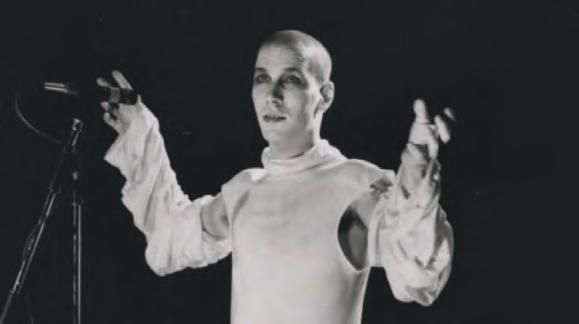

1926 N. Halsted St.
The Roger Brown Study Collection is a house museum, intimate study collection, and archive of more than 2000 works assembled by influential Chicago painter and SAIC alumnus Roger Brown. Preserved the way Brown installed it, the collection is a mélange of artworks by Chicago Imagists, nonmainstream artists, folk and indigenous art, objects from material and popular culture, costumes, textiles, furniture, travel souvenirs, and more. The collection serves as both a lab and an inspiration for both students and faculty.
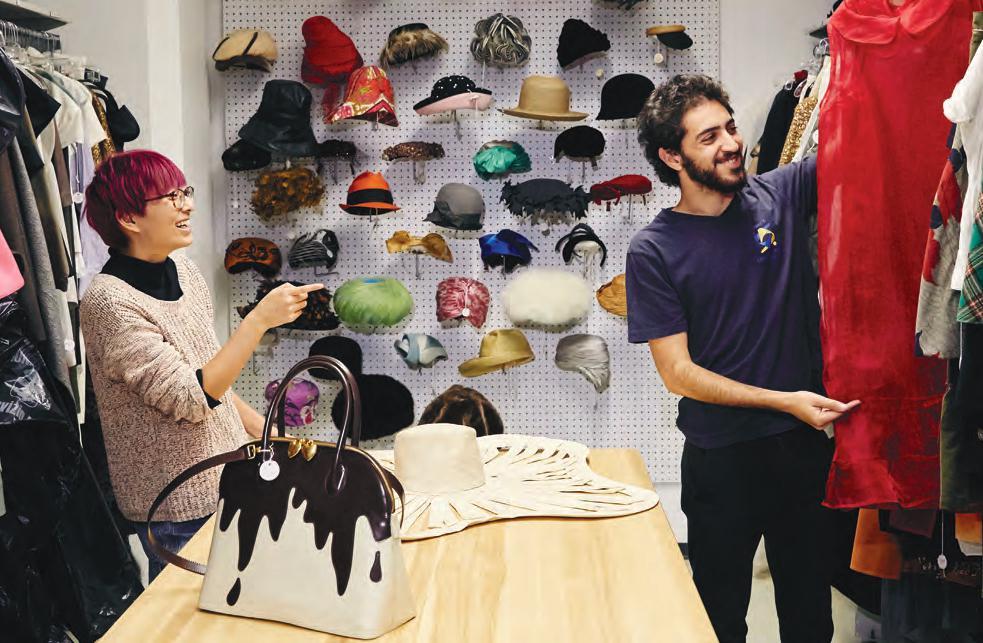
The Fashion Resource Center is home to contemporary and historical fashion publications, designer interviews, videos, and a large collection of innovative garments and accessories from leading designers, from Alexander McQueen and Halston to Claire McCardell and Rei Kawakubo. Open to all SAIC students, it’s a unique resource for engaging in hands-on examination and research.
Founded in 1976 at the inception of the media arts movement, the VDB is a leading national resource for video by and about contemporary artists. It offers access to the work of more than 600 artists and 6,000 video art titles.
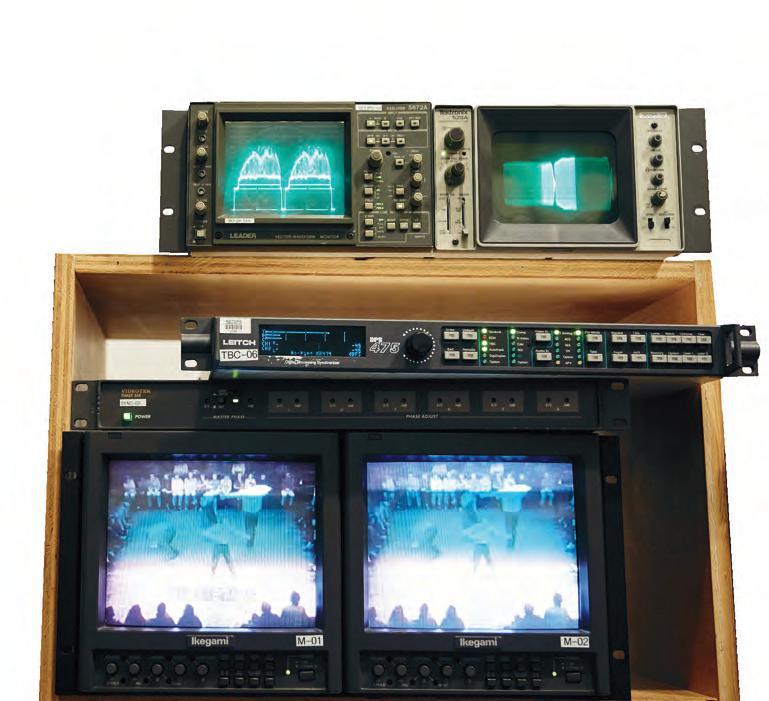
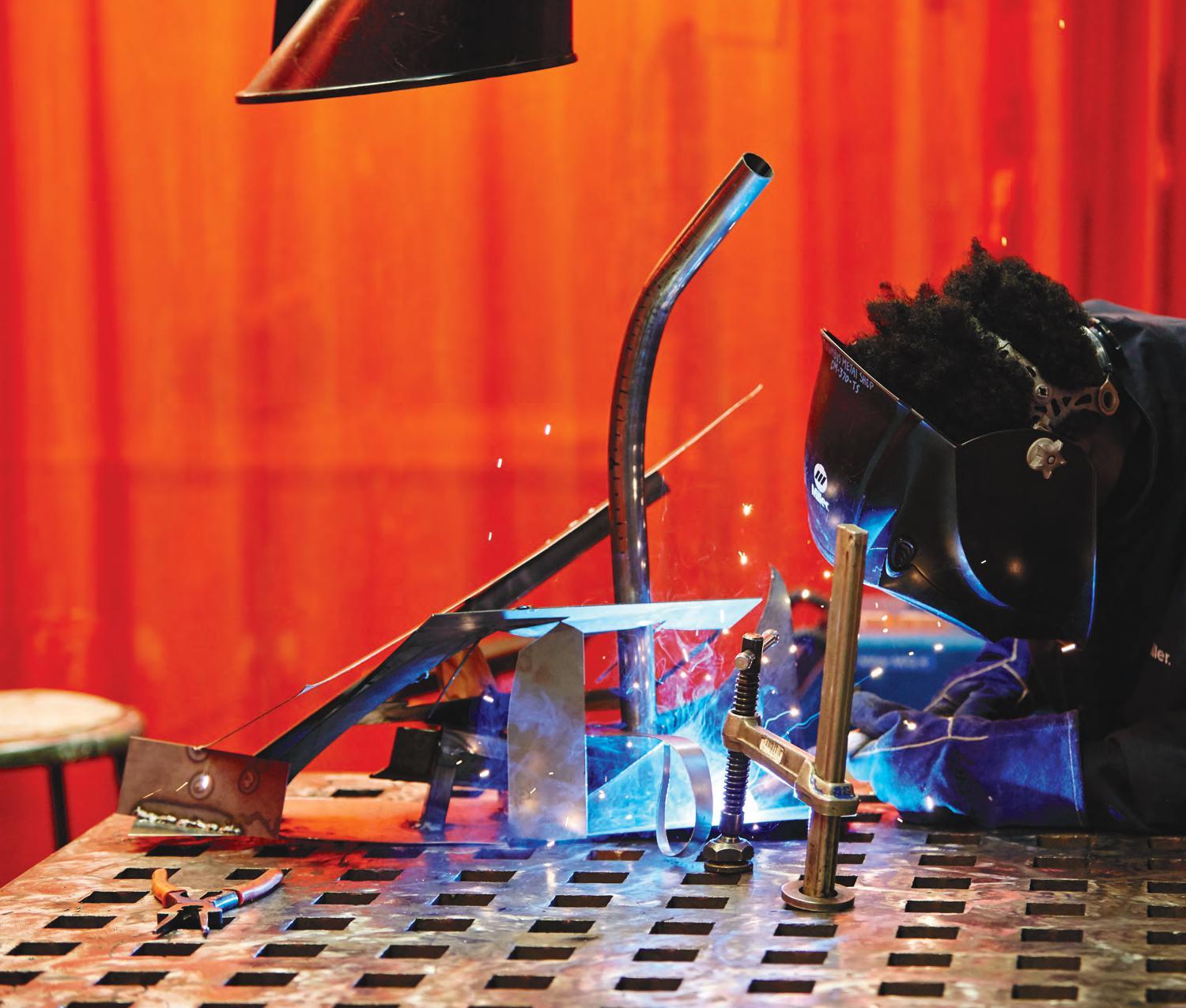
Metal+Wood Shop, 280 S. Columbus Dr. Resale Center, 37 S. Wabash Ave.
Digital Fabrication Studio, 280 S. Columbus Dr.
From traditional wood and metalworking to CNC milling, sewing machines and bedazzlers, the SAIC Instructional Shops have the resources to help you realize your projects. The shops are equipped with a wide range of hand, power, and stationary tools and staff are available to assist with project consultation, project development, and tool checkout.
Providing our community with access to a wealth of equipment and expertise
37 S. Wabash Ave.
Our on-campus, professional digital output center specializes in laser printing and archival-quality inkjet printing. Facilities include wide-format Epson printers able to produce prints up to 64” wide, with services including binding, folding, button making, vinyl cutting, bulk paper cutting, laptop monitor calibration, laminating, and CD/DVD duplication and printing.
112 S. Michigan Ave.
Students can check out a range of state-of-the-art audiovisual equipment for videography, filmmaking, and photography. Equipment includes high- definition and 4K video cameras, such as the Blackmagic Ursa Mini, Canon 7D and 5D Mark III, 7” field monitors, portable HD projectors, and a Canon 7D video kit.
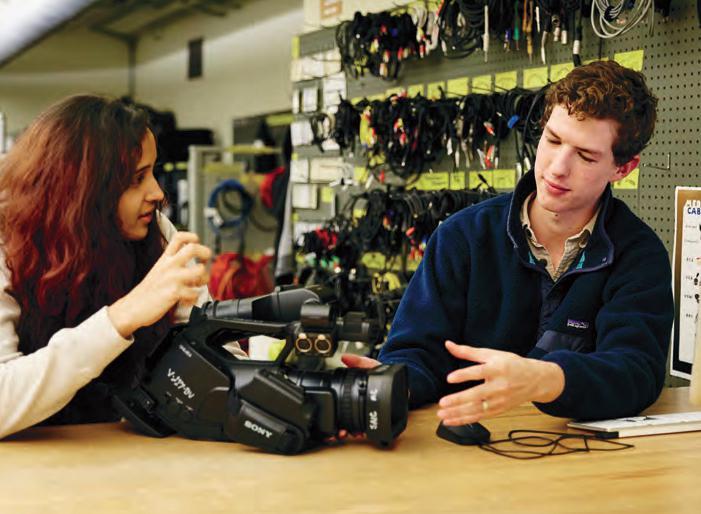
36 S. Wabash Ave.
SAIC’s prototyping lab specializes in laser cutting and 3D digital scanning and printing. The self-serve facilities are open to students who complete an authorization workshop.

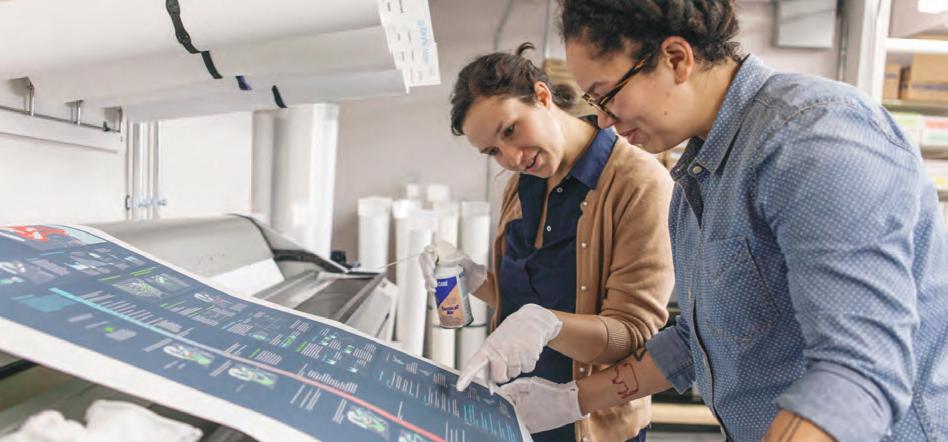
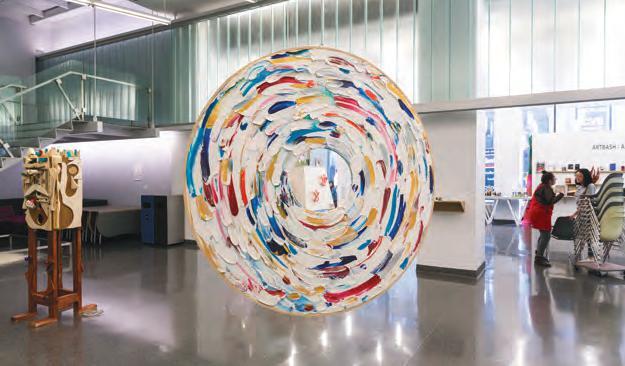
33
The SAIC Galleries represent 24,000 square feet of exhibition space. The galleries feature exhibitions, performances, lectures, and screenings by SAIC students, faculty, and guest artists–including the end-of-year MFA, BFA, Post-Bacc in Studio, and Graduate Design exhibitions.
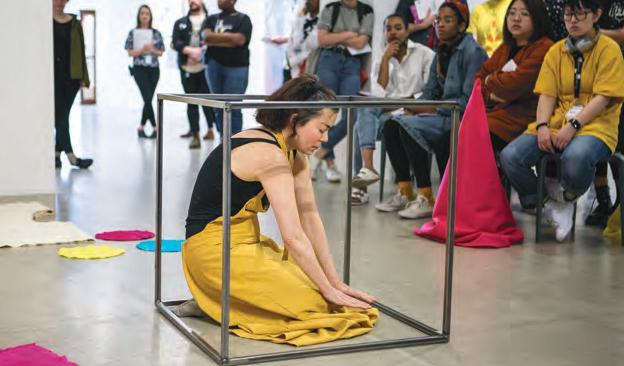
Graduate Curatorial Assistants (GCAs) play a significant role in the operations of the SAIC Galleries, assisting with major exhibitions and thesis shows, often working directly with artists and curating exhibitions of student work. GCA positions are open to all MA and MFA students, for semester, year, or multi-year terms, as dependent on projects assigned.
37 S. Wabash Ave.
The LeRoy Neiman Center brings the SAIC community together in novel ways, extending our campus into the urban fabric of Chicago. The first floor includes a street-level space for the SITE Galleries, a curated video wall, and a programming and event space hosting everything from lectures to informal gatherings.
The second floor lounge and café are the perfect spots to grab a bite, meet, relax, discuss, get involved, and be inspired. The lounge also acts as a space for programs and events ranging from open mic nights to film screenings and informal critiques. Also located on this floor are the Campus Life and Student Government/Programming offices and the Student Leadership Suite, where student groups can hold activities and meetings.
280 S. Columbus Dr. & 37 S. Wabash Ave.
Producing between 12 and 15 exhibitions of student work each year, SITE has become a staple of SAIC student life—a place where student artists and curators can present and challenge their work in a public setting. Any enrolled student may submit a proposal for an exhibition, allowing for programs that provide a more open exchange across disciplines and departments, as well as with vital members of Chicago’s art community.
SITE has two exhibition spaces:
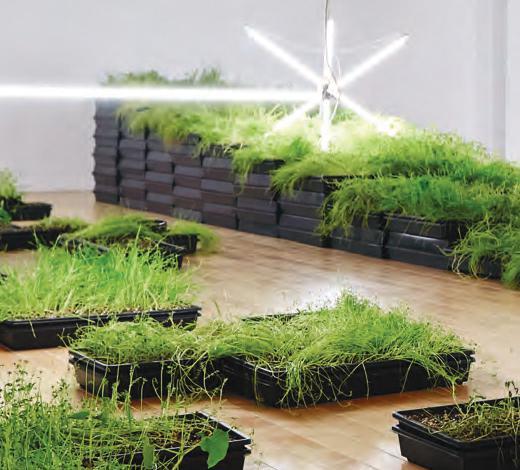
SITE 280, located in SAIC’s 280 S. Columbus Drive building
SITE Sharp, housed on the first floor of the highly visible student center at the corner of Wabash Avenue and Monroe Street
This student-run internet station’s “anything goes” format allows students to experiment with eclectic performances, narratives, and sounds.

This student-run broadcast platform shows student films, videos, and animations and hosts independent media, lectures, special events, and a community bulletin board.
Distributing 6,000 copies a month across the city, F Newsmagazine is a unique and widely read vehicle for displaying student writing and art, including fiction, reporting, poetry, essays, criticism, comics, and illustration.
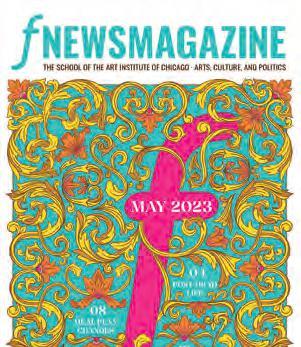
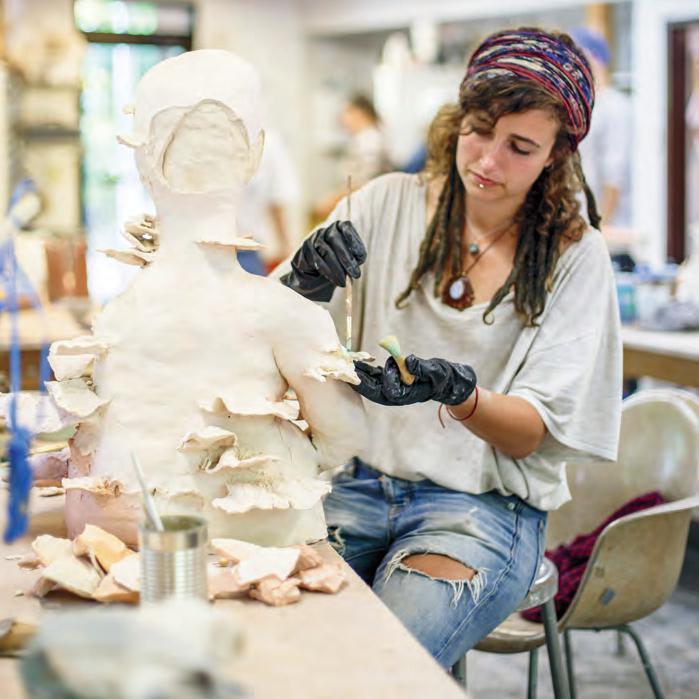
ox-bow.org
Ox-Bow, an artists’ residency center in Saugatuck, Michigan, about 140 miles east of Chicago, is more than just a place— it’s an experience. Students can immerse themselves in painting and drawing, printmaking, glassblowing and casting, sculpture and metals, papermaking, ceramics, fiber, and more during summer and winter intensives.


SAIC is a community of explorers, learning to live and work meaningfully in a complex, connected world. The Study Abroad office supports this mission by providing multiple faculty-led study abroad opportunities, advisory services, advocacy, and resources in support of international education programs and objectives.
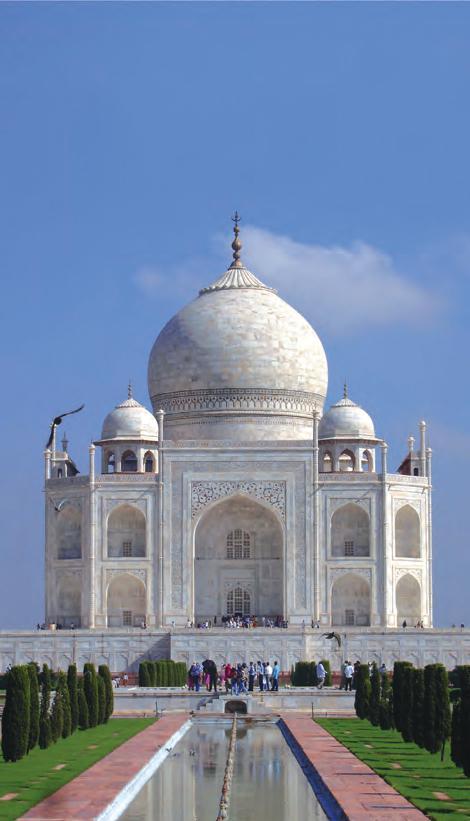
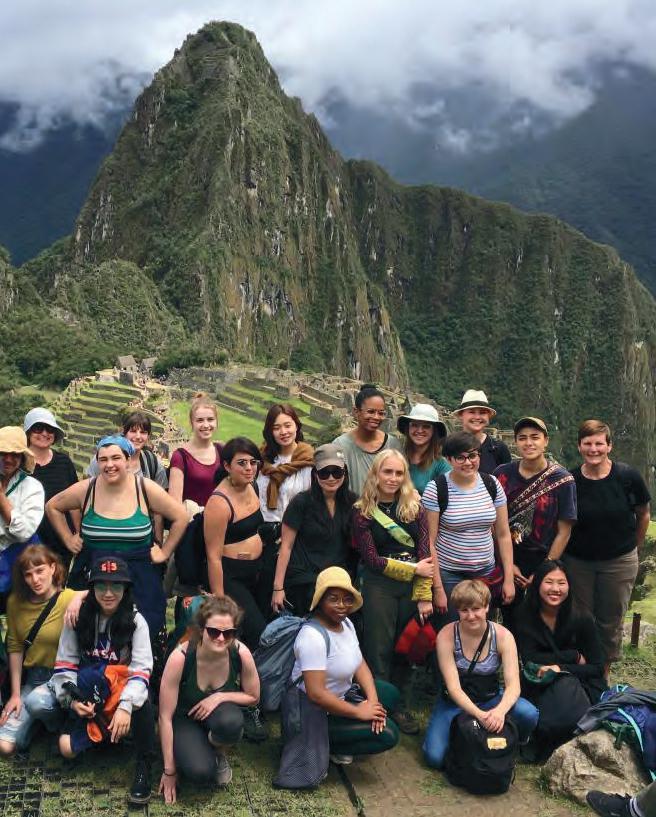

saic.edu/vap
One of the oldest public programs at SAIC, the Visiting Artists Program (VAP) is an invaluable resource to students and the public alike. VAP staff organize free public lectures, screenings, performances, and readings with some of today’s most influential thinkers and practitioners. VAP arranges studio critiques and roundtable discussions for students, providing direct access to world-renowned speakers working across disciplines, such as Caroline Bergvall, Sonya Clark, Ann Cvetkovich, Cao Fei, Fischerspooner, Ann Hamilton, Juliana Huxtable, Josh Kline, Daniel Joseph Martinez, Claudia Rankine, Wael Shawky, Tal R, Walid Raad, and Chris Ware.
Alok Vaid-Menon speaking at the Visiting Artists Program Lectureengage.saic.edu/organization/parlorroom
Parlor Room is a visiting artist program and lecture series created, run, budgeted, and curated by Photography graduate students. The series encourages dialogue and provides opportunities to connect with artists, curators, thinkers and critics through public presentations, studio visits, and informal group events with graduate students and faculty. Parlor Room guests have included Frank Wagner, Thomas Elsaesser, Helen Molesworth and Luis Gispert.
The IMPACT Performance Festival is a thesis event designed to support graduating students creating time-based work, live-art, and performance. The festival is coordinated by the Performance Department and the Department of Exhibitions and Exhibition Studies.


164 N. State St. siskelfilmcenter.org
The Gene Siskel Film Center (GSFC) presents approximately 1,600 screenings and 200 guest artist appearances annually to more than 65,000 film enthusiasts in its double theater space in downtown Chicago. Students can take advantage of the $5 student rate and the Center’s proximity to SAIC to enjoy independent, international, classic, and documentary films and themed film festivals.
In collaboration with the Film, Video, New Media and Animation department and the Video Data Bank, the GSFC also hosts Conversations at the Edge (CATE), a dynamic weekly series of screenings, artist talks, and performances by some of the most important established and emerging media artists working today.

SAIC offers a broad spectrum of master’s and post-baccalaureate programs. Our Studio Programs, Design Programs and Academic Programs combine the rigor of a world-class museum art school with the richness of an interdisciplinary education, pushing the boundaries of your practice.
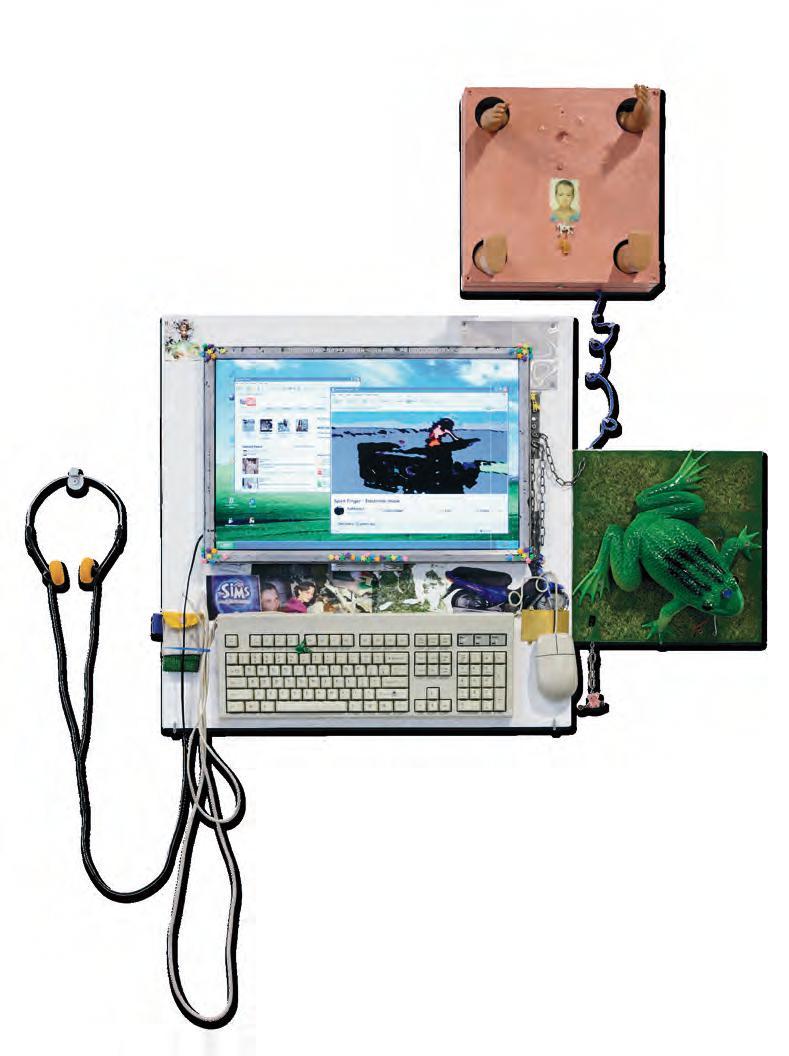

SAIC has one of the world’s most respected Master of Fine Arts programs for contemporary art. Our 60-credit program is exceptionally diverse, encompassing 15 departments and a vast array of media and methods. Our interdisciplinary approach offers students the ability to extend their studies beyond their area of specialization, adding new dimensions to their practice. Whether pursuing our residential program or Low-Residency MFA, students gain the experience and growth needed to create a sustainable practice.

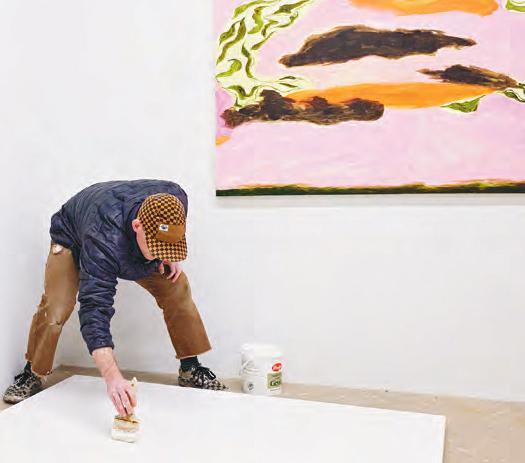
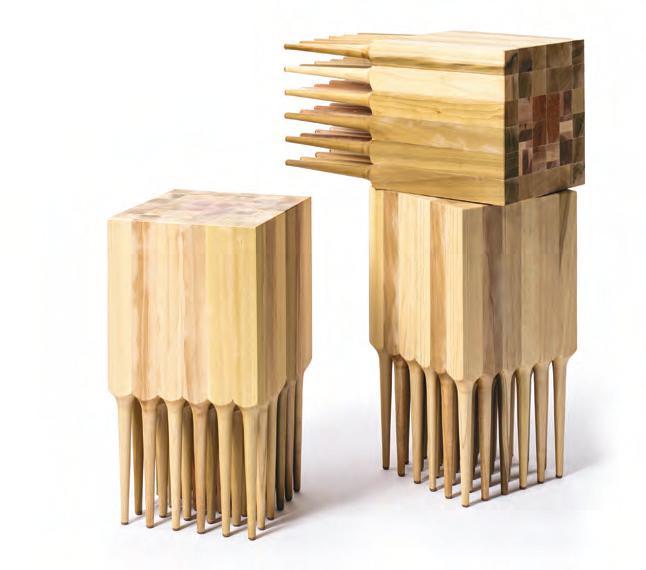
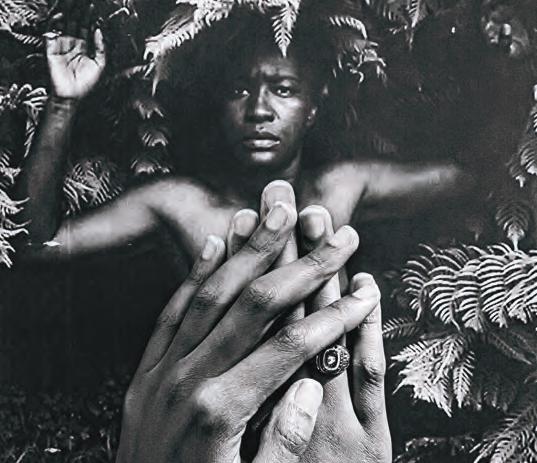

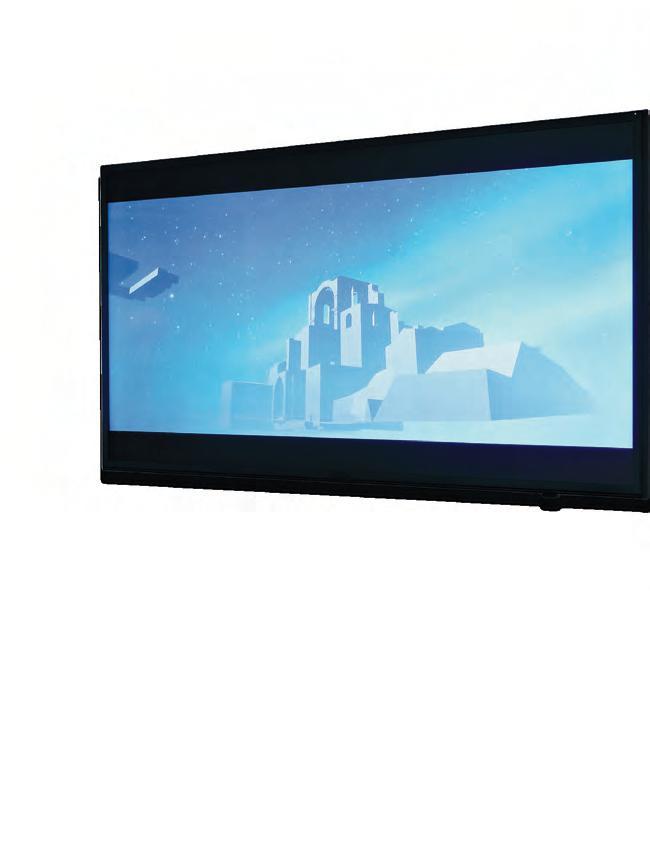
saic.edu/mfaarch
Our MFA in Studio, Architecture program supports advanced work in architecture, calling upon a broad range of art and design disciplines to challenge orthodox approaches and redefine how architecture is practiced.
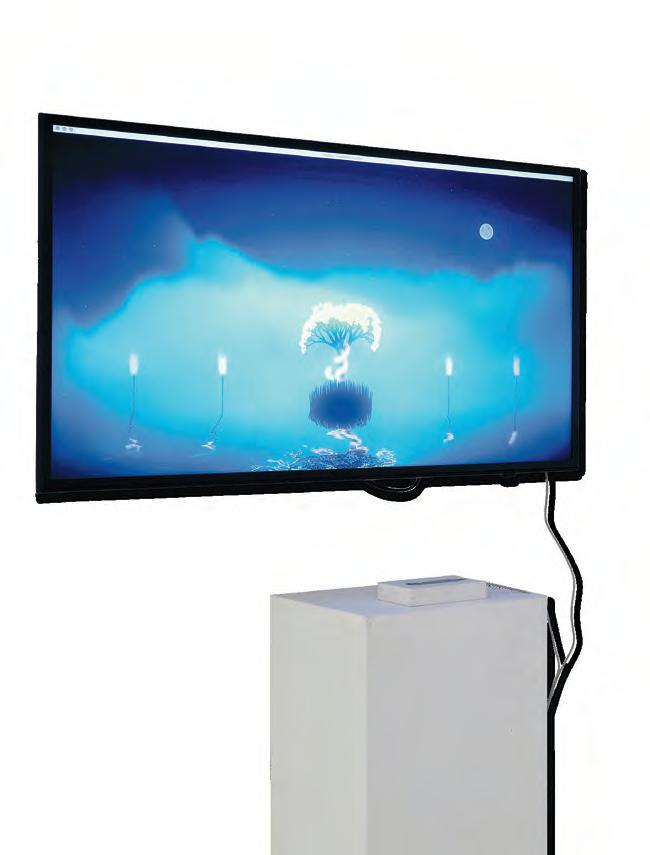 Jiayun Lu Maze in the Heterotopia, 2021
Jiayun Lu Maze in the Heterotopia, 2021
Interdisciplinary study is the foundation of our program. Students are encouraged to explore departments across SAIC, working with faculty and peers in any area that supports their graduate work and research. Students create a personalized curriculum by choosing from a wide variety of SAIC seminars and courses, broadening their perspectives through exploration and diverse artistic and intellectual exchanges.
Graduate-level courses and topical seminars support individual studio work by exposing students to the more extensive dialogues around the production, exhibition, and function of art, design, and architecture. Graduate critiques are central to the MFA experience and include discipline-specific panels in the fall semester and interdisciplinary conferences in the spring semester.
The program is focused on the graduate-level exploration of spatial questions, concerns, and alternative design practice formats. Students explore the future of how we live, work, and communicate—examining how design responds to shifting modes of belonging and the challenge of a changing climate.
An additional option for students is our 2- or 3-year NAAB-accredited professional Master of Architecture degree.
ELLEN GRIMES
LINDA KEANE
CARL RAY MILLER
DOUGLAS PANCOAST
HENNIE REYNDERS
JONATHAN SOLOMON
TRISTAN D’ESTRÉE STERK
ANDERS NEREIM
BEN NICHOLSON
Students have access to a fully equipped printing and prototyping lab, including:
• 120w laser cutters
• 3D printers, including machines that use PLA, ASA, and acrylic-like resin as building material
• 3D scanners, including Artec Eva, Handyscan, and NextEngine
• Flatbed and large format scanners
This dedicated fabrication workshop is equipped with a full range of hand tools and industrial wood- and metal-working machines.
• Material sales center with sheet goods, hardwoods, plastics, foam, etc.
• 2 CNC Routers (4’× 8’ highspeed)
• Large bed vacuum thermo-former (2’ × 4’)
• Power tools, including a jointer, planer, mortiser, drill press, lathe, table saws, band saws, and sanders
• Assorted sewing machines
• Mold-making facility with plaster mixing, dust collection, fume extractor, and vacuum chamber
• Large, high-flow paint and finishing hood
• On-site materials library
• Dedicated workspace in large, open-plan communal studios

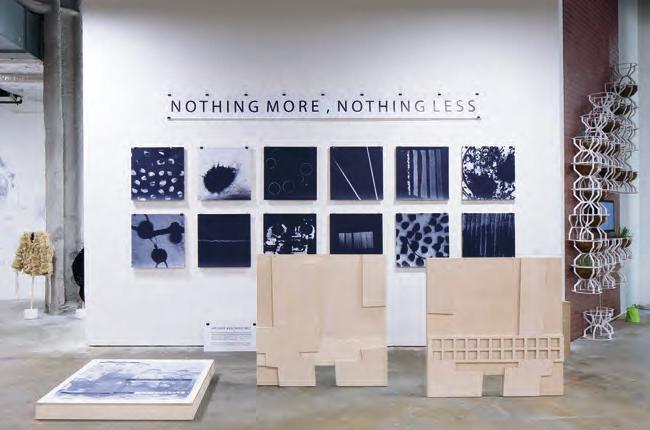
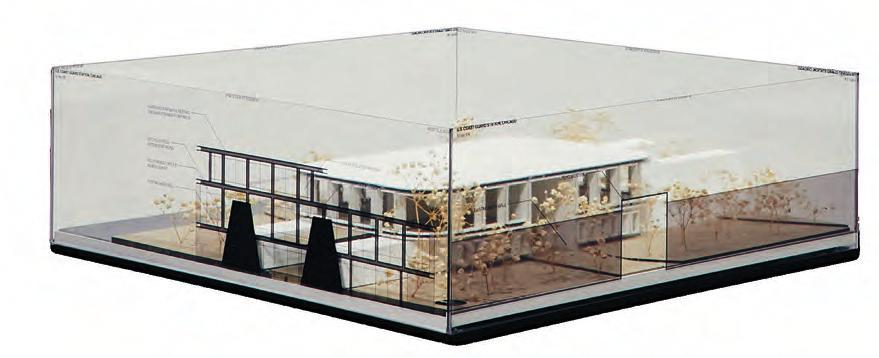 Roberto Quiroz, Regionalism, 2022
Nahyeong Lim, Paper-Pop Pavillion
Roberto Quiroz, Regionalism, 2022
Nahyeong Lim, Paper-Pop Pavillion
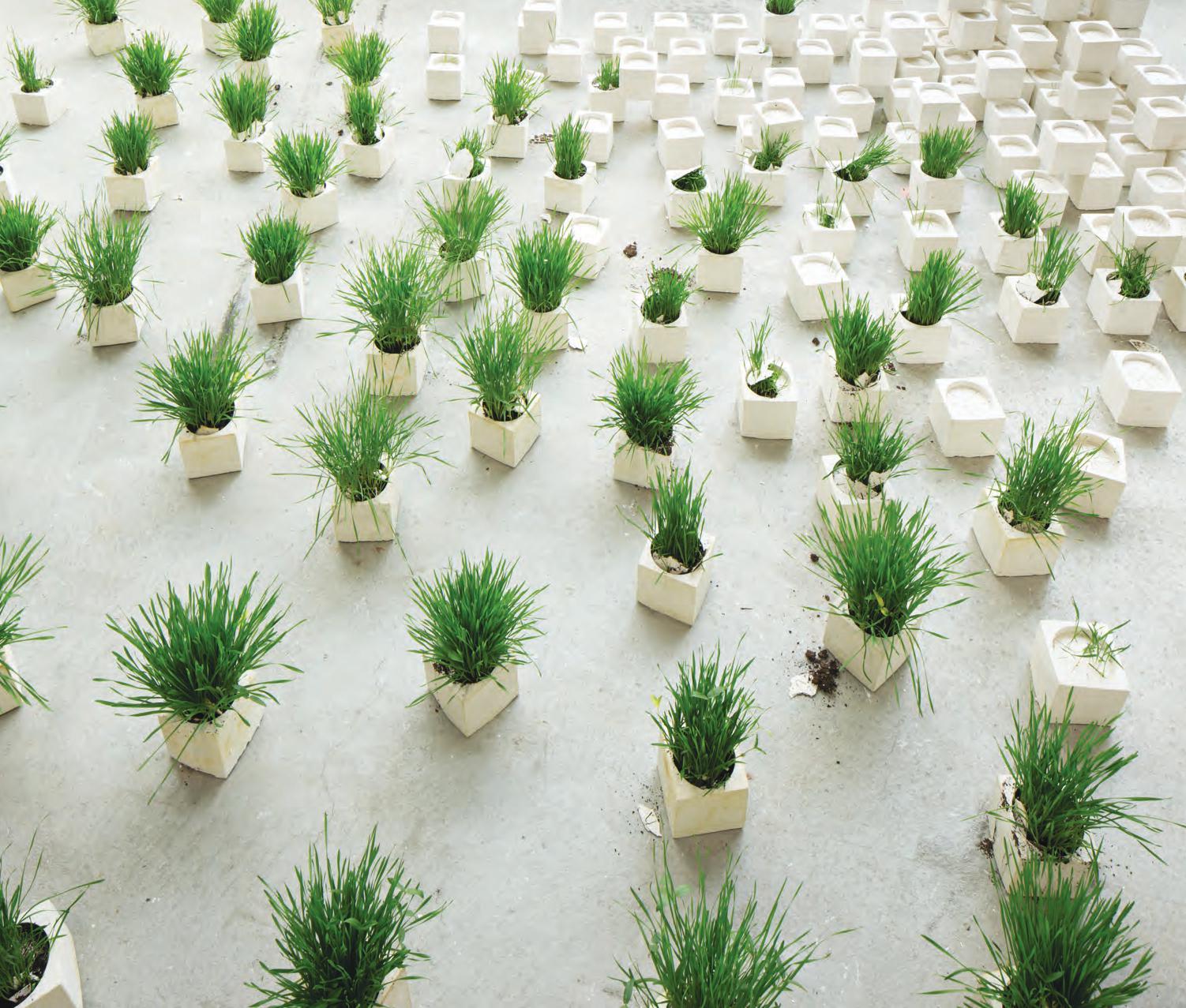
saic.edu/atsp
Art and Technology / Sound Practices
(AT/SP) is a place to explore, critique, and imagine the potentials of artistic production with technology, sound, or their hybrid forms. Its faculty and curriculum foster rigorous experimentation, robust research, inclusivity, and the interrogation of history and theory.
This is a flexible studio/ screening/ project space with light control, video and sound projection, and ceiling grid for testing and exhibiting installations, sculptures, and spectacles. The studio is equipped with a “Single Wall CAVE” using stereoscopic 3D video, motion tracking systems, head mount displays, and multichannel audio.
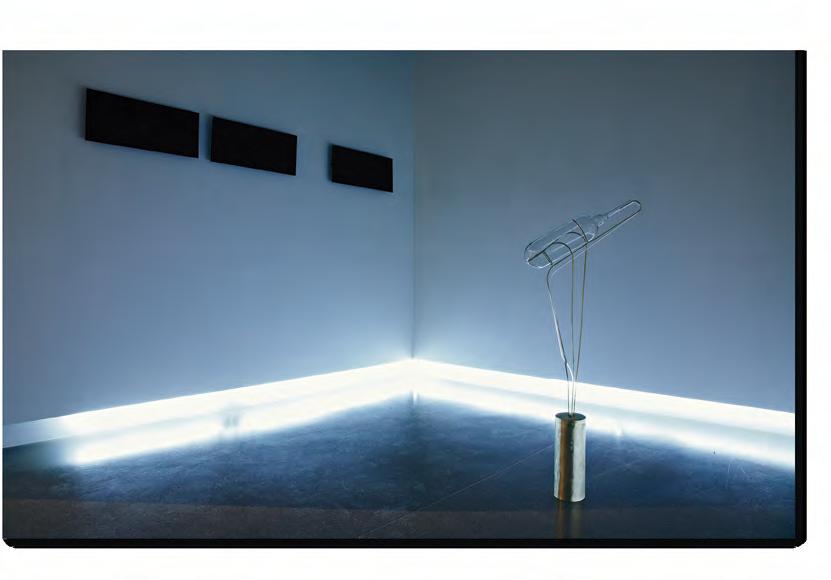
Students create future-facing works in a dynamic learning environment. With a legacy of more than 50 years of experimentation in the technological and sonic arts, the department is unique in its focus, history, and depth. Through courses, advisers and seminars, students can pursue a wide-ranging interdisciplinary path, or take a focused approach to specific media, disciplines, or topics in the AT/SP ecosystem. Technology and sound are viewed not only as media, but as cultural materials with complex histories and ecological, social, personal, and philosophical implications.
AT/SP faculty are accomplished artists representing a diverse range of practices, backgrounds, and theoretical perspectives. They draw on their rich experiences and expertise to develop a challenging pedagogy that supports students in acquiring the technical, conceptual, and critical skills necessary in a contemporary and global cultural context.
Students have access to a wealth of digital and analog resources, purpose-built labs and studios, and expert support staff. These facilitate a wide range of practices including creative coding, sound art, olfactory art, bio art, experimental music, acoustic ecology, installation, performance, AR, VR, games, kinetics, neon, holography, electronics, and more.
Students have access to a range of equipment and facilities:
• Electronics Lab with tools and electronic parts to develop new hardware and Surface-Mount Lab for producing rigid and flexible circuit boards
• I/O Lab with 3D printers, desktop milling machines, and 3D scanner
• Light Lab for producing neon works, exploring digital control of neon pieces, and experimenting with other light sources
• Bio Art Lab, facilitating artistic research using the tools and techniques of molecular biology
• Retro Lab, a media archeology facility for studio practice and research offering access to vintage equipment, such as the Paik/Abe Synthesizer and the Sandin Image Processor, the Commodore 64, early home computers, and game consoles
• Digital and analog recording studios for live recording, electronic music production, sampling, synthesis, mixing, mastering, and critical listening
• Sound Kinetics Lab with a fabrication and machining facility, power supplies, and electronic and mechanical components
• Flex Space, a multi-purpose facility hosting exhibitions, lectures, performances, workshops, and receptions
• Digital Audio Workstations in various platforms
LEE BLALOCK
NICOLAS COLLINS
SHAWN DECKER
EDUARDO KAC
LOU MALLOZZI
KRISTIN MCWHARTER
JUDD MORRISSEY
DOUG ROSMAN
MARK BOOTH
KAMAU A. PATTON
JAN TICHY
• Workstations for modular synthesis, digital audio production, and a Yamaha Disklavier computer-controlled acoustic piano
• Multi-channel and surround-sound playback systems
• Performance controllers and installation microcontrollers

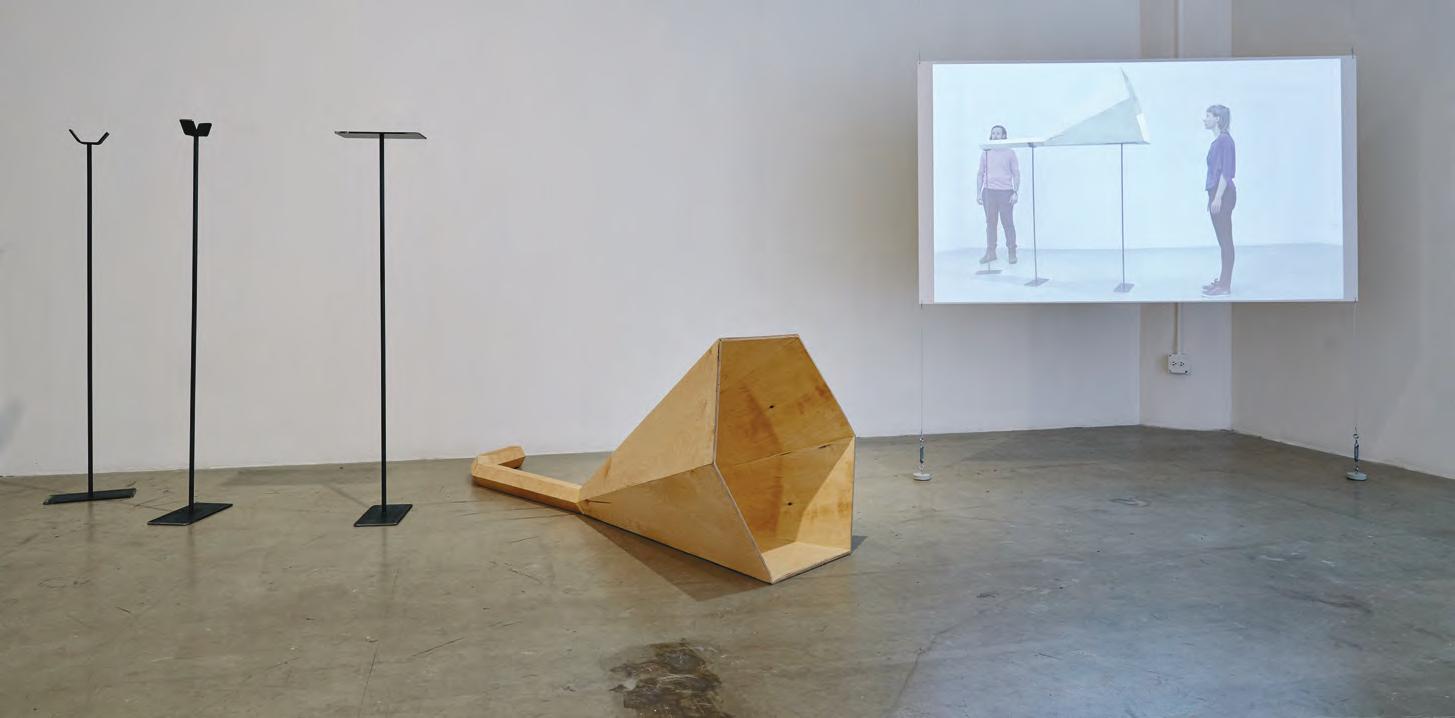

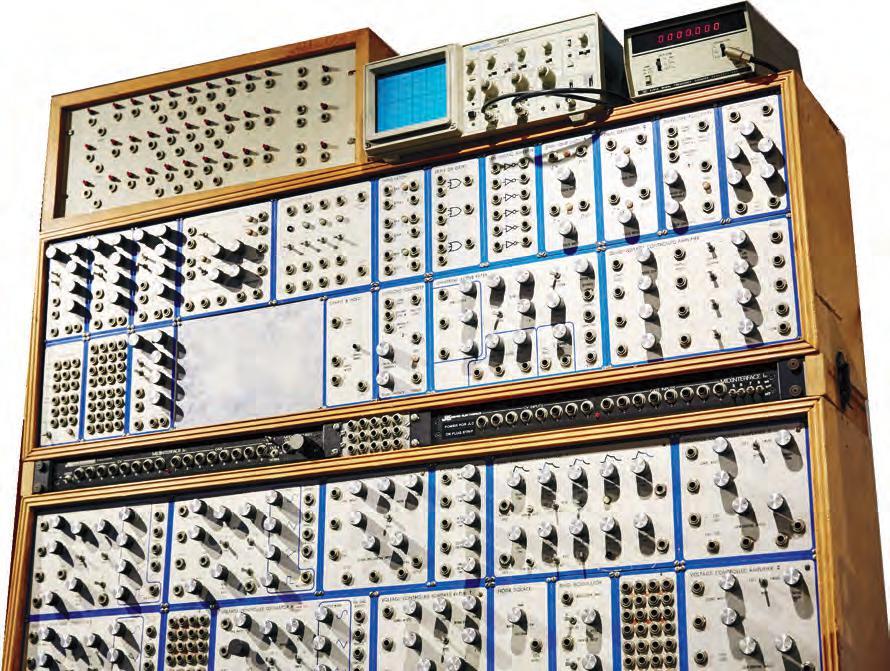
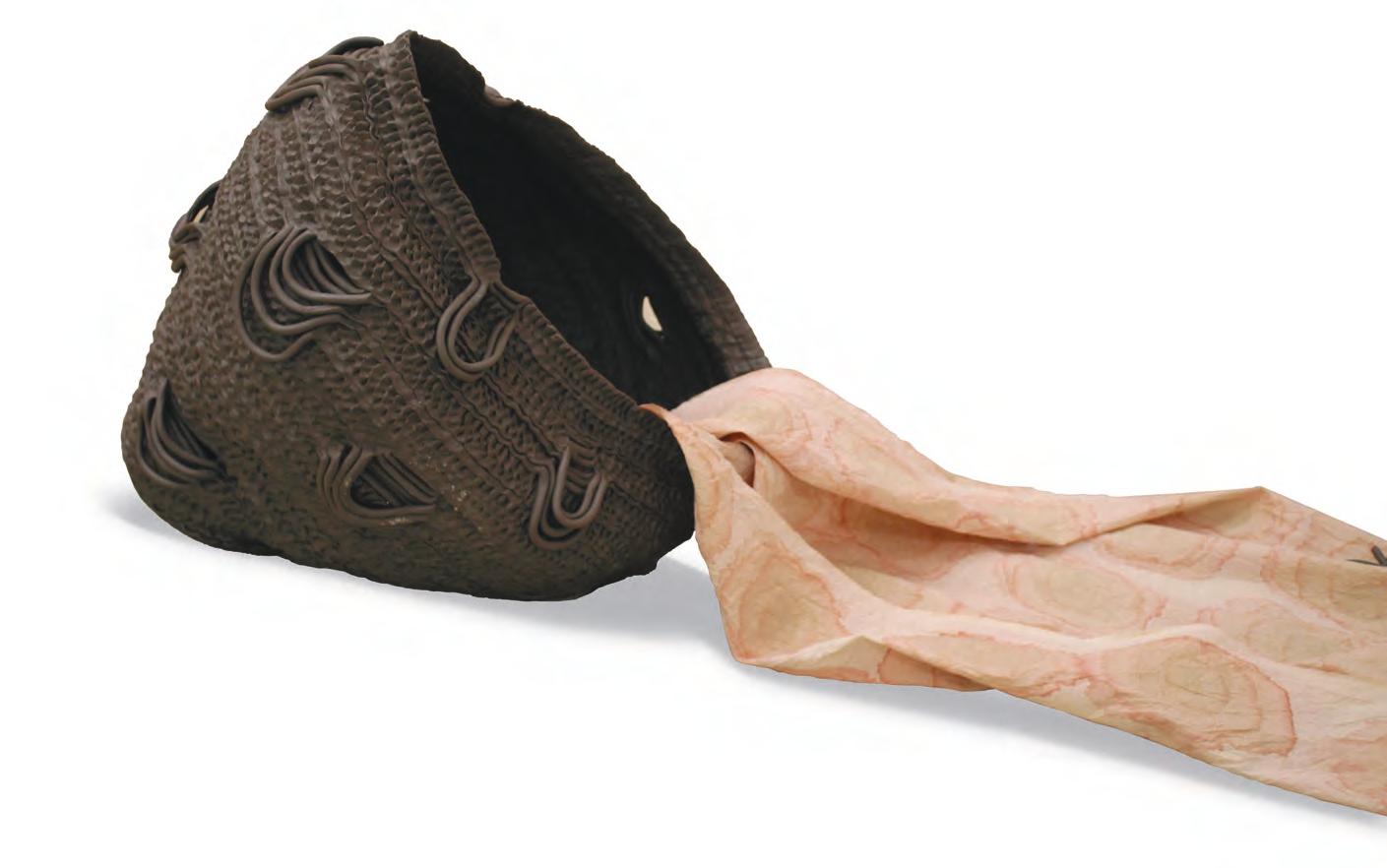
Offering one of the few programs that focuses on experimental, contemporary ceramics, both traditional and innovative processes and technologies are embraced. Students are encouraged to move fluidly across media, materials, and methods to create bold work that subverts the ordinary.
Shea Burke Body Vessel, 2020 MasterOur approach draws on a wealth of technical and cultural traditions—from clay, sculpture, and studio pottery to high-tech, industrial applications across a wide range of media. This provides a springboard for creating work that is both highly personal and urgently contemporary. Work often incorporates multidisciplinary elements, including installations, mixed media, performance, time arts, and community practices.
Students individualize their ceramics study with courses across departments—from Architecture to Fiber and Material Studies to Performance, adding a rich dimension of influences to inform their work. Students participate in seminars along with peers in the Sculpture department to widen their perspectives and provide for collaboration. Critiques with peers, panels of faculty, and visiting artists provide essential feedback to inform refinement and growth.
Students have access to a broad array of facilities and resources, including free bulk materials, allowing unlimited experimentation. The Art Institute of Chicago’s collections of ceramics, sculpture, architectural ornamentation, painting, and more provide an exceptionally diverse resource.
The city of Chicago offers a wealth of ceramics resources, from its architectural facades to the extensive holdings of its art institutions and the artists who live here. You’ll find an ever-expanding array of ceramic-based works in galleries and museums throughout the city.
Ceramics students have access to state-ofthe-art equipment and facilities, including:
• Individual graduate studios
• Clay and glaze mixers
• Extruder, slab roller, and wheels
• Free bulk materials (clay, slip, and glazes)
• Mold-making facilities
• Fully equipped casting facilities
• 18 gas and electric kilns
• Three state-of-the-art Blaauw computerautomated gas kilns
• Two departmental installation/ gallery spaces
• Ceramic color decal printer
• Walk-in spray booth
• 3D Potterbot ceramic printer
• Cold working equipment: lapping machine, water feed drill press with diamond coring bits, large diamond brick wet saw, diamond tile wet saw
The 3D Potterbot ceramic printer uses 3D printing technology to enable the quick creation of intricate designs produced in a uniform manner.

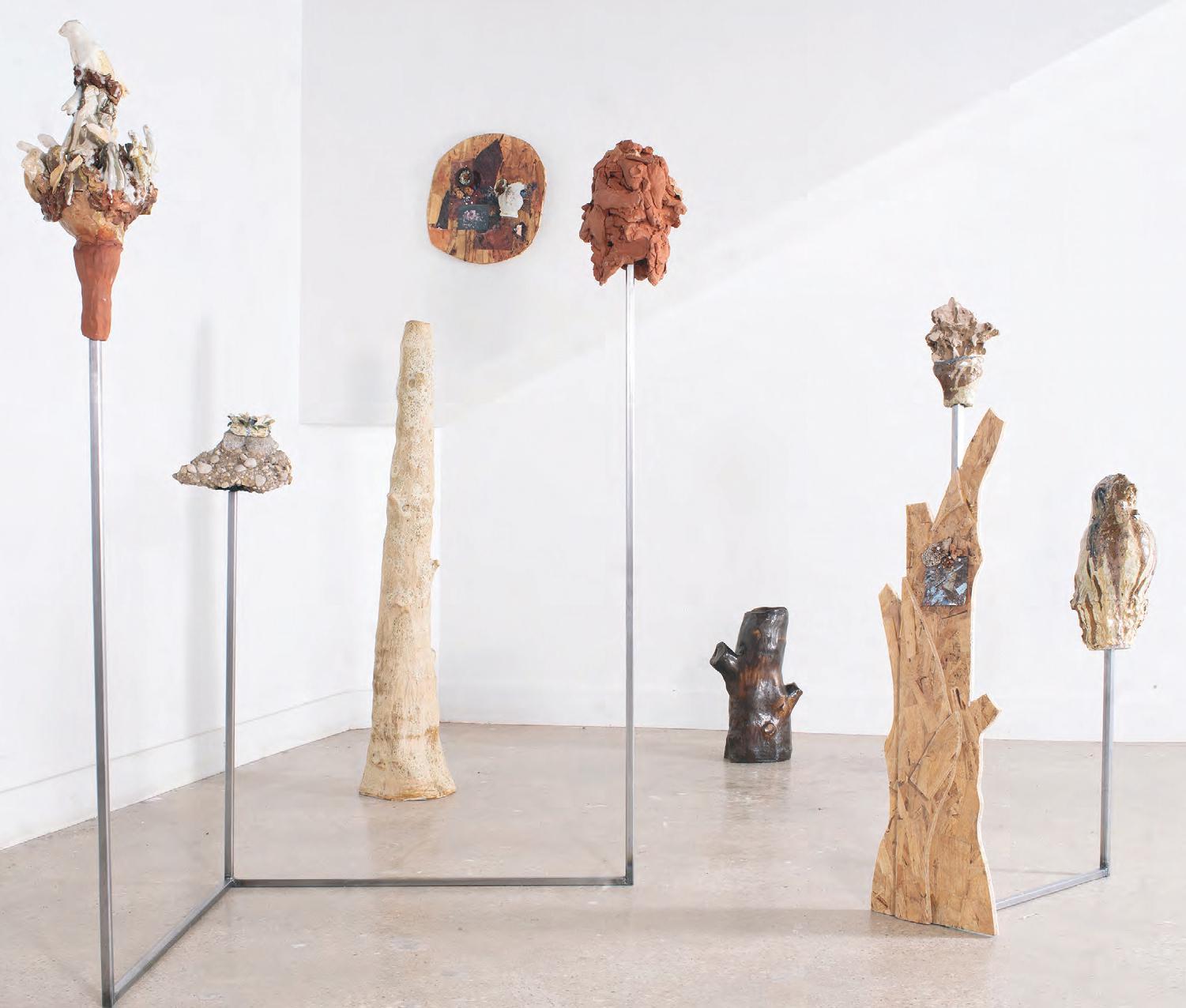
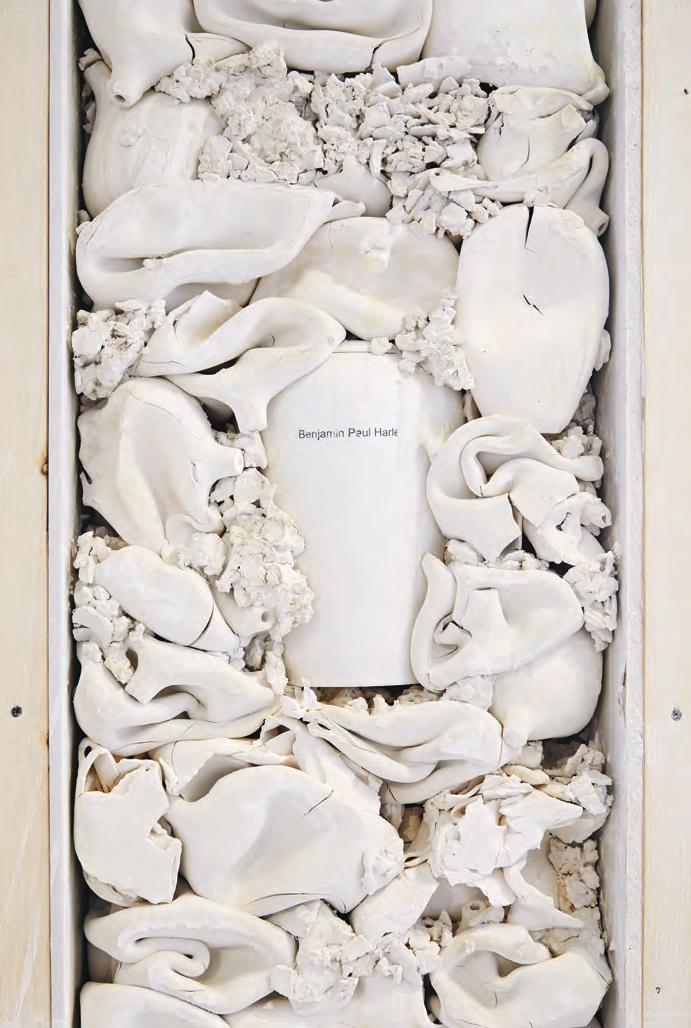
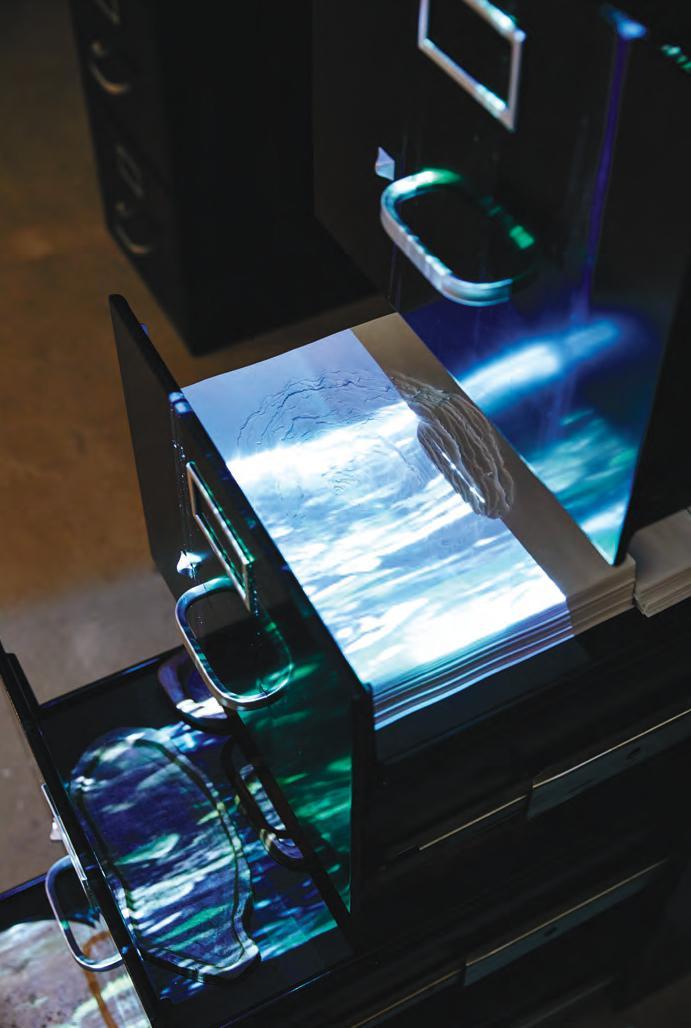 Désirée Coral MINE, Yours–Ours
Désirée Coral MINE, Yours–Ours
Explore the intersection of art and technology and contribute to building the creative world of tomorrow. This program brings together a rich array of technologies and design disciplines, empowering students to pursue a wide range of creative directions.
The Advanced Output Center
• 120w laser cutters
• 3D printers, including machines that use PLA, ASA, and acryliclike resin as building material
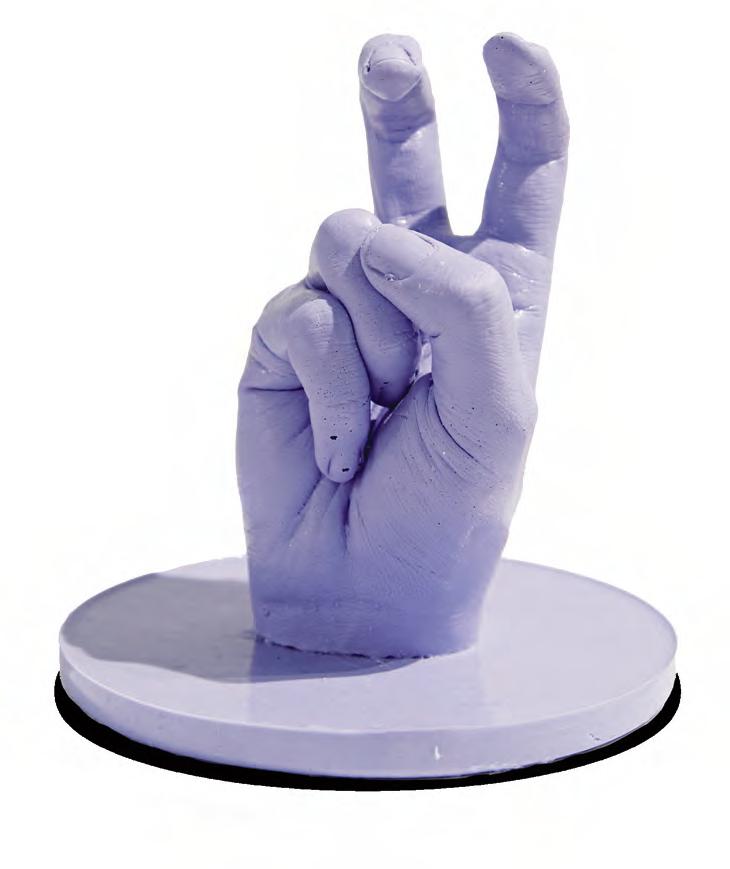
• 3D scanners, including Artec Eva, Handyscan, and NextEngine
• Flatbed and large format scanners
Students have access to a broad range of resources, including community and environmental technology, immersive environments, information architecture, physical and situated computing, parametric design, and design for connected objects and environments. Together with the diverse experience of our renowned faculty, this enables students to create a personalized program according to their interests and creative objectives.
Our expansive educational model emphasizes history, critical thinking, and engagement across disciplines. We encourage students to work with faculty and peers in any area that supports their graduate work and research. Graduate MFA studios for Architecture, Designed Objects, and Design for Emerging Technologies are clustered, providing a sense of community and easy access to shared fabrication facilities.
Studio work and graduate projects are supported through coursework and seminars that expose students to dialogues around the production, exhibition, and function of art and design. Students have the freedom to choose from a wide variety of seminars, courses, and advisors across SAIC. Graduate critiques are central to the MFA experience and include discipline-specific panels in the fall semester and interdisciplinary conferences in the spring semester.
ELLEN GRIMES
GIONATA GATTO
ERIC HOTCHKISS
LINDA KEANE
T. CAMILLE MARTIN-THOMSEN
CARL RAY MILLER
DOUGLAS PANCOAST
TIM PARSONS
HENNIE REYNDERS
JONATHAN SOLOMON
TRISTAN D’ESTREE STERK
JIM TERMEER
This dedicated fabrication workshop has a full range of hand tools and industrial wood- and metal-working machines.

• Material sales center with sheet goods, hardwoods, plastics, foam, etc.
• 2 CNC routers (4’× 8’ Highspeed)
• Vacuum thermo-former
• Power tools, including a jointer, planer, mortiser, drill press, lathe, table saws, band saws, and sanders
• Tools for soft construction, including sewing machines, plastic casting, and interactive electronics
• Mold-making facility with dust collection, fume extractor, and vacuum chamber
• Large, high-flow paint and finishing hood
• On-site materials library
• Dedicated workspace in large, open-plan communal studios
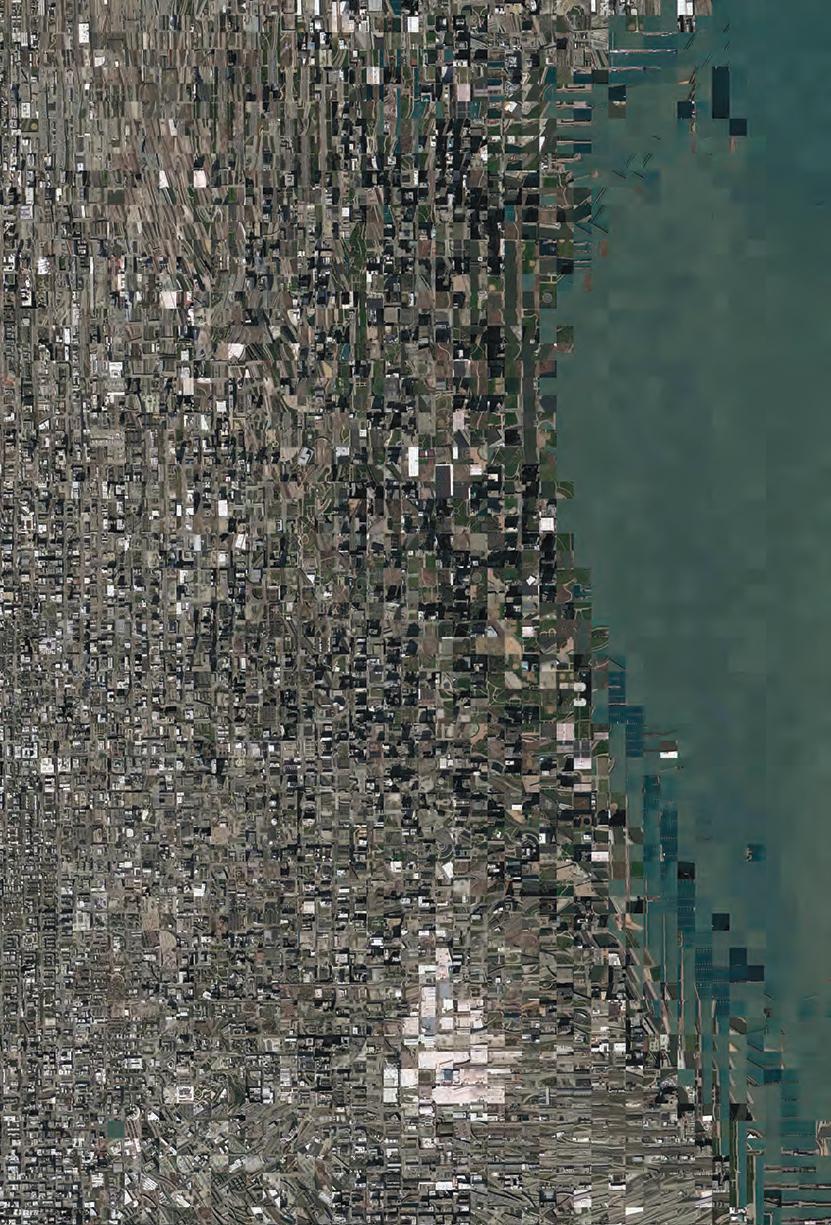
 Ting-Yu Tseng
Ting-Yu Tseng
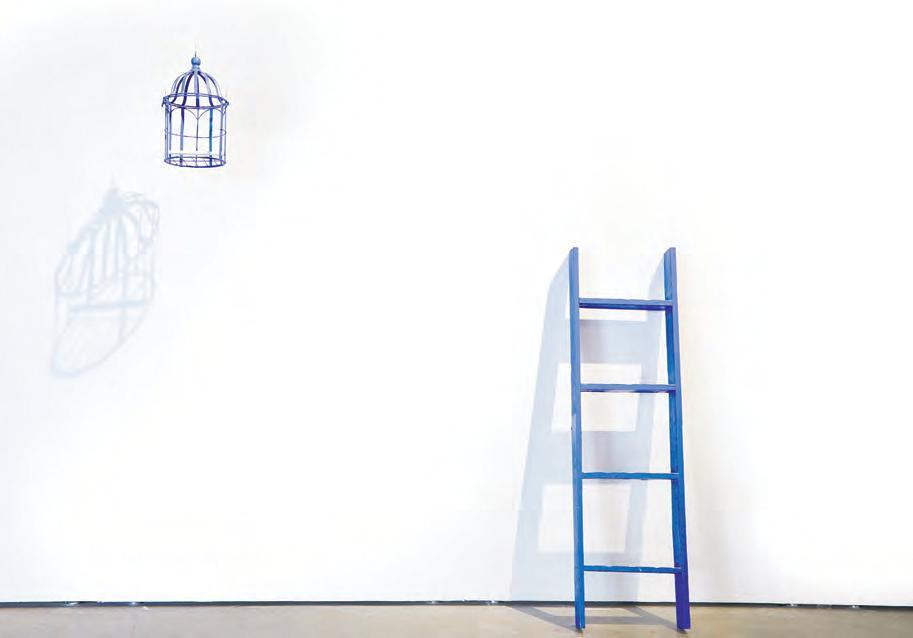
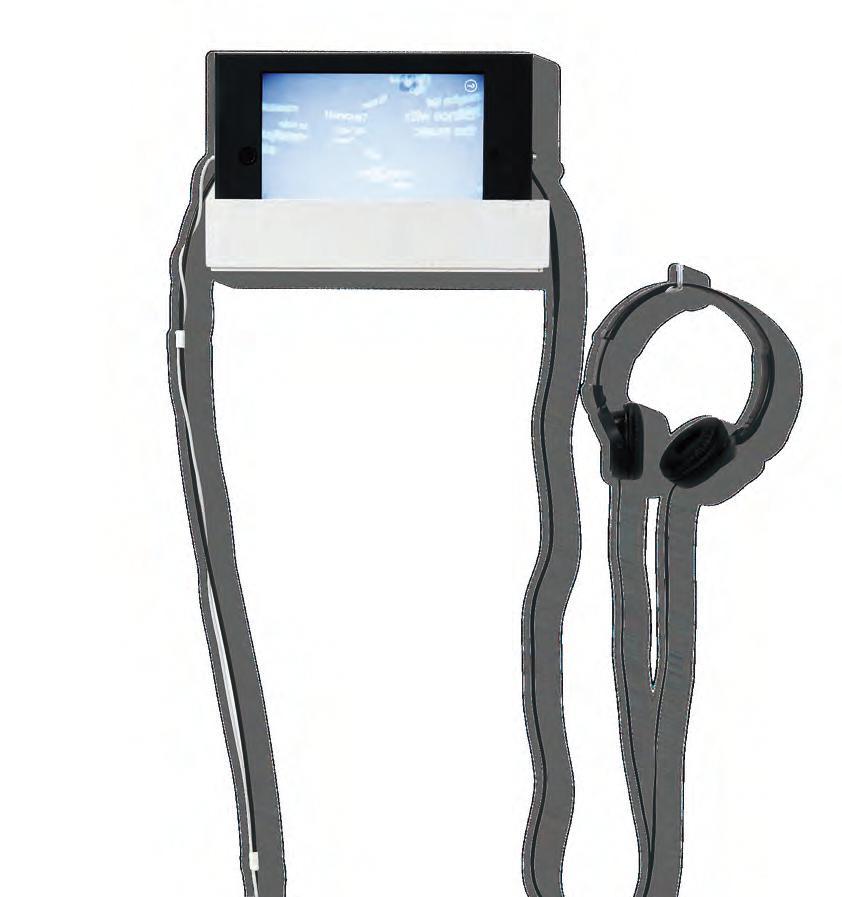

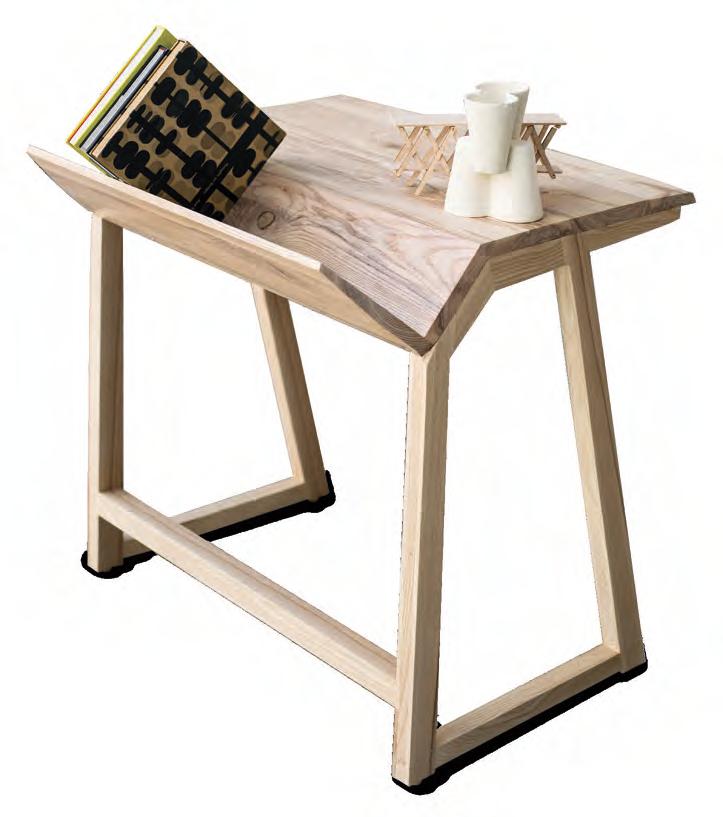
saic.edu/mfadesob
Our MFA program in Designed Objects focuses on reimagining the objects that exist within the current and upcoming realities that we navigate and negotiate within every day. Students cultivate new relationships between the designer and the consumer, citizen, and society through critical thinking, historical study, and interdisciplinary engagement.
• 120w laser cutters
The Advanced Output Center Students have access to a fully equipped printing and prototyping lab, including:
• 3D printers, including machines that use PLA, ASA, and acryliclike resin as building material
• 3D scanners, including Artec Eva, Handyscan, and NextEngine
• Flatbed and large format scanners
The program offers an expansive educational model that encourages students to engage the world both in and outside of design, working with faculty and peers in other areas that support their research and creative development. SAIC offers an exceptionally vibrant and diverse community of makers and scholars, offering the freedom to choose from a variety of studio classes, topical seminars, material approaches, and faculty advisors.
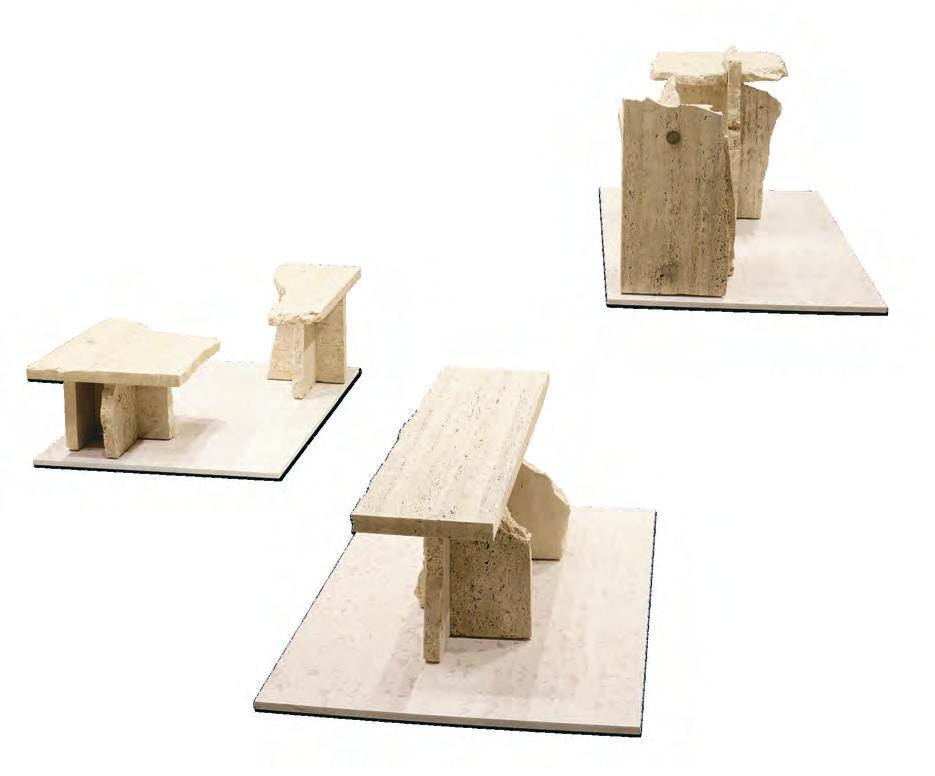
Through their studio work and graduate projects, supported by coursework and seminars, students are exposed to dialogues around the production, exhibition, and function of art and design. Graduate critiques are central to the MFA experience and include discipline-specific panels in the fall semester and interdisciplinary conferences in the spring semester.
Immersive alternative
Students may opt to pursue the Master of Design in Designed Objects (MDDO). This program is intended for those seeking immersive training focused on building the critical and technical skills necessary for advanced object design practice. The MDDO program provides an opportunity to study within a structured, course-based curriculum of Designed Objects-specific studios, seminars, and technical labs.
This dedicated fabrication workshop is equipped with a full range of hand tools and industrial wood- and metalworking machines.
• Material sales center with sheet goods, hardwoods, plastics, foam, etc.
• 2 CNC routers (4’× 8’ highspeed)
• Vacuum thermo-former
• Power tools, including a jointer, planer, mortiser, drill press, lathe, table saws, band saws, and sanders
• Assorted sewing machines
• Mold-making facility with plaster mixing, dust collection, fume extractor, and vacuum chamber
• Large high-flow paint and finishing hood
• On-site materials library
• Dedicated workspace in large, open-plan communal studios
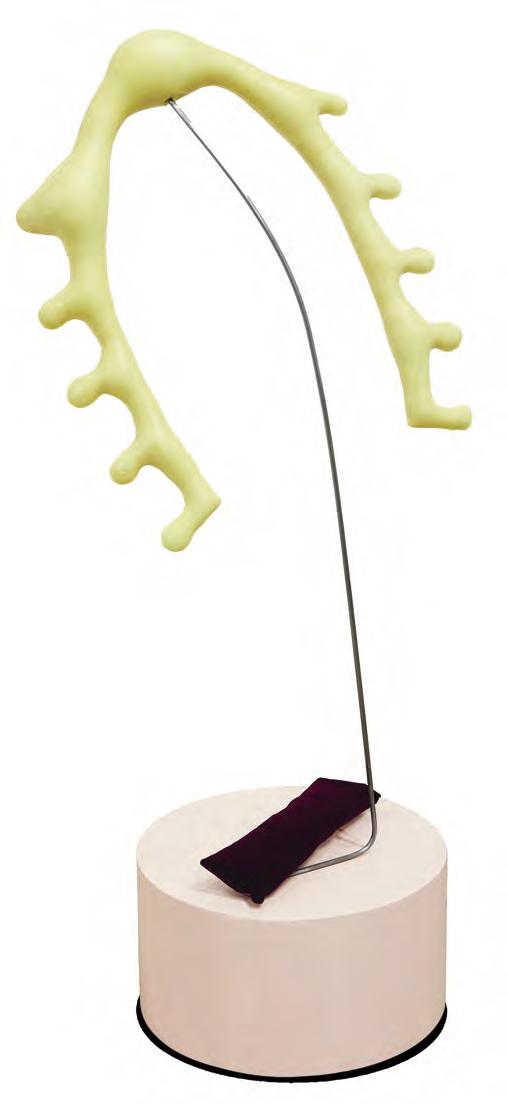
 Martha Poggioli Passage Simulation
Martha Poggioli Passage Simulation
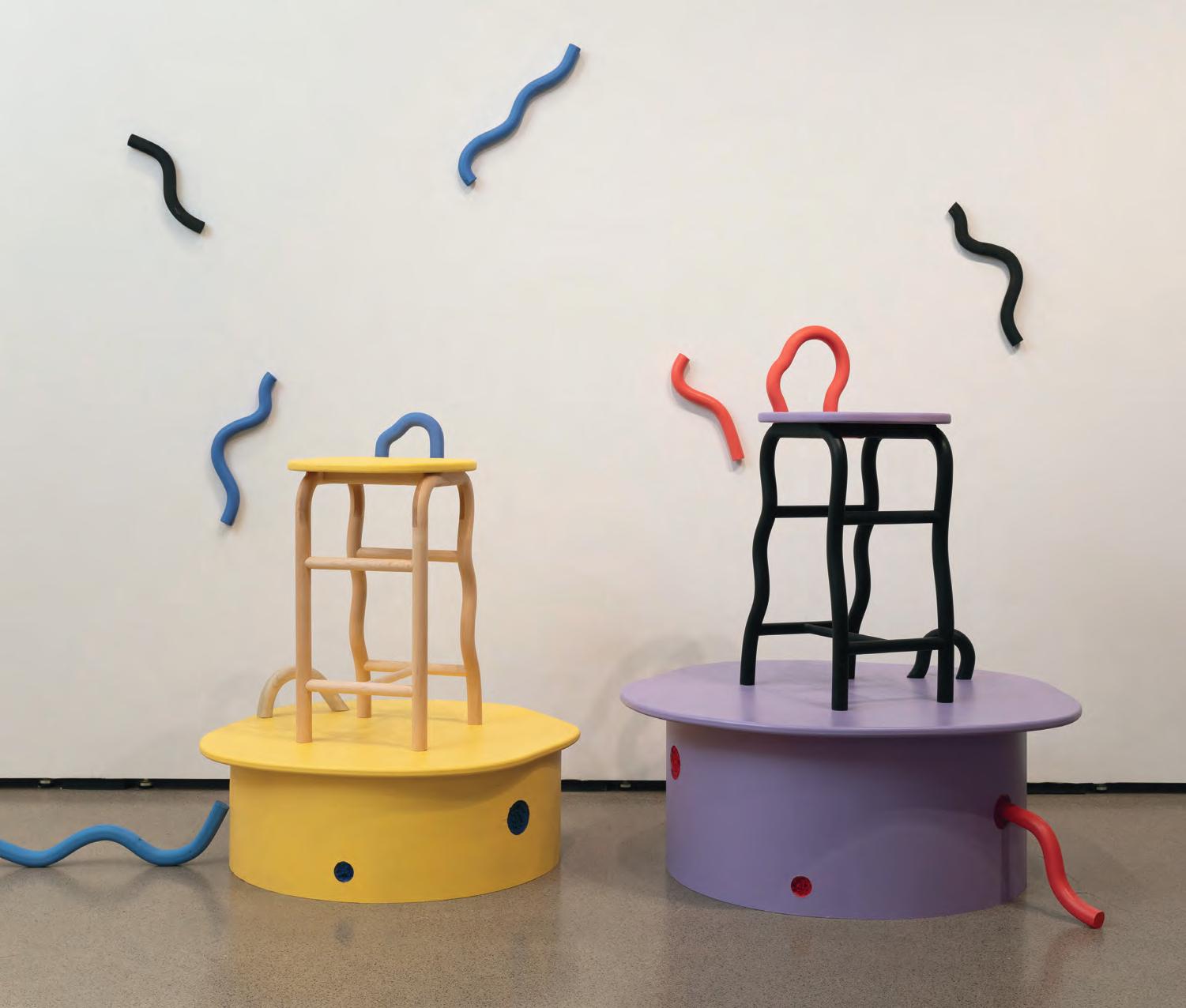 Eunsil Ji
Eunsil Ji
saic.edu/fiber
The Fiber and Material Studies program fosters experimentation across disciplines. Students explore cloth, print, and constructed textiles, as well as new media technologies, computer-assisted tools, sculpture, installation, and performance to make complex, cross-disciplinary work.
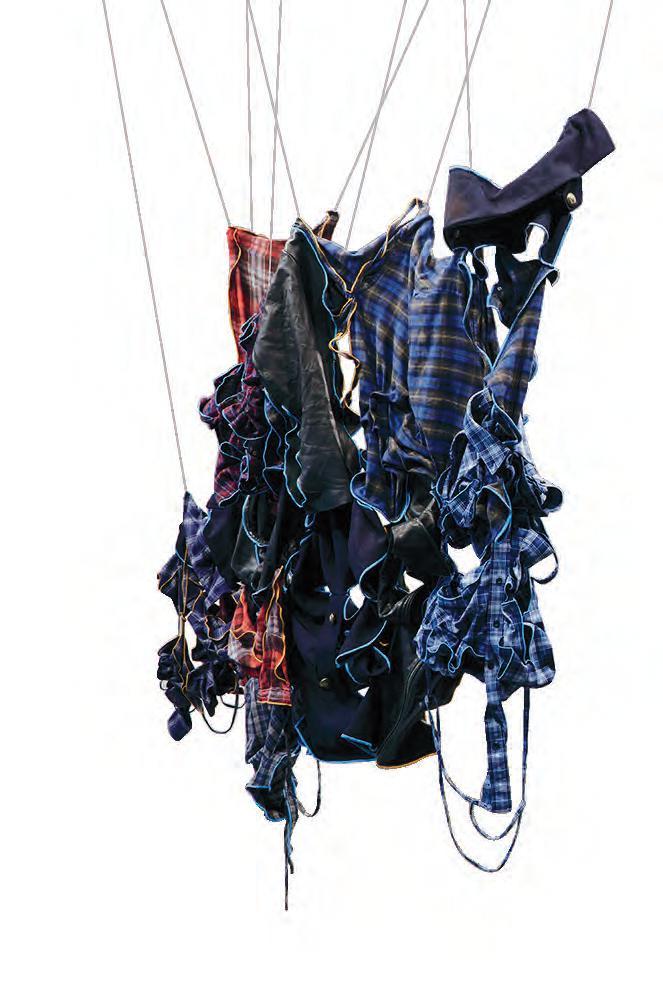
The Textile Resource Center is a hands-on study collection of historic and contemporary textiles from around the world, books, exhibition catalogs, and contemporary artist projects. The center employs two graduate research assistants, and hosts the first year graduate critique seminar and the class Micro/Macro Textiles: Artist Research.
The program, the largest and best resourced program of its kind in the world, is led by a distinguished faculty of innovative and accomplished artists and scholars. Students work with a wide range of materials, disciplines, and approaches with production, craft, and skills taught alongside critical thinking informed by theoretical discourse.

Students receive in-depth, one-on-one advising with faculty in Fiber and Material Studies and other studio areas. Courses and seminars allow students to engage deeply with materials, techniques, concepts, politics, histories, and current developments in the field, while courses in other studio and academic departments serve to inform and enrich their practice. Students give a onehour public presentation each year, help organize lecture series and visiting critics, and have significant opportunities for teaching assistantships.
Studios offer access to an exceptional array of facilities for weaving, printing, papermaking, dye making, and more. Students can learn traditional hand processes and experiment with new techniques, including new media technologies and computerassisted approaches to making. The Art Institute of Chicago offers a comprehensive collection of textiles, fiber, and contemporary art for inspiration and research, and our Textile Research Center offers access to an impressive collection of fiber-related materials and publications.
Students participate in critiques, studio visits, and roundtable discussions with visiting artists, curators, and scholars through the department’s Mitchell Lecture series. The Fiber and Material Studies department has hosted prominent lecturers, including Jeffrey Gibson, Tanya Aguiniga, Josh Faught, Namita Gupta Wiggers, John Chaich, Jenni Sorkin, Chakaia Booker, Elissa Auther, Marie Watt, Miyoshi Barosh, Stephanie Syjuco, Jen Bervin, Elana Herzog, Camille Ann Brewer, Christine Checinska, and Diedrick Brackens.
Our students have access to individual graduate studios as well as:
• Three TC-2 Digital Jacquard Looms
• Dobby loom
• Floor looms (4- to 16-harness)
• Table looms and tapestry looms
• Fully equipped screen printing studio with darkroom and large scale exposure unit and 40-foot table for printing yardage
• Large format heat press
• Fully equipped dye studio with facilities for hot and cold chemical, natural, and indigo dyeing, batik, and resist techniques
• Industrial 10-needle embroidery machine and computerized embroidery machines
• Long arm quilting machines
• Free motion sewing stations
• Industrial and home sewing machines and sergers
• Fully equipped 2D and sculptural papermaking studio with a Hollander beater, molds, press, and dryer
• Knitting machines
• Plotter/cutter
• Felting facilities and equipment
• Spinning wheels and drop spindles
• Tufting gun
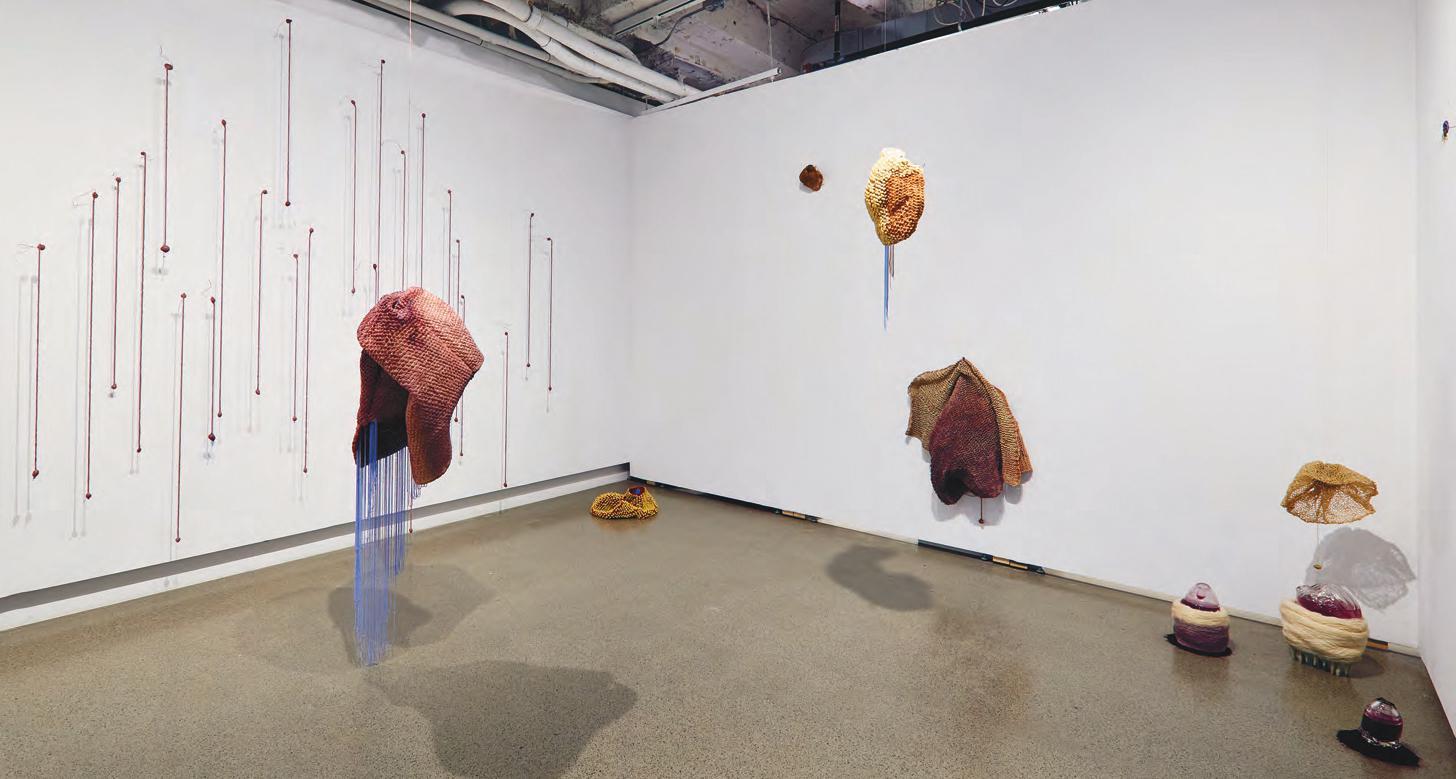
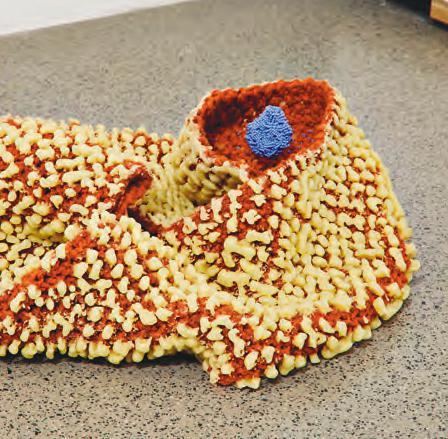
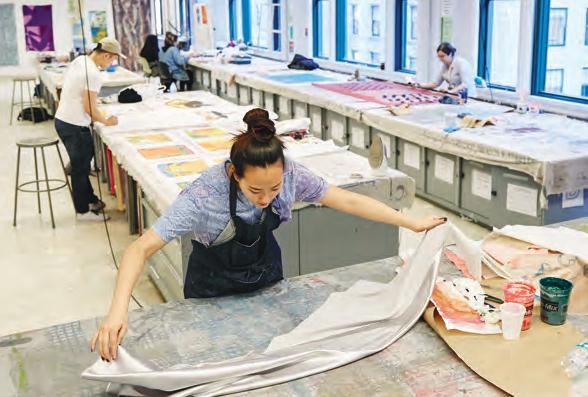
 Erica Maria Littlejohn
I called to say we have two lives, 2021-2022
Erica Maria Littlejohn
I called to say we have two lives, 2021-2022

saic.edu/fvnma
The department of Film, Video, New Media, & Animation has long been central to the development of highly influential independent and experimental media practices in the field. The international character of our department and the cultural diversity of our community have produced an array of expanded approaches and driven many of our working procedures toward trans-cultural practices that push boundaries while engaging in formal experimentation, technical innovation, and critical investigation.
Claire Fleming Staples, time is a rubber band... installation for IMPACT Festival, 2023 MasterStudents reach beyond conventional approaches to media, investigating new directions for nonfiction and narrative film and video, moving-image installation, analog and digital animation, interactive art, web-based projects, and media art histories. Students explore moving images in all their contemporary venues—from the cinema and performance sites to the internet and mobile devices, as well as museums, galleries, festivals, and community-based projects.
Working with graduate advisors of their choice, students create a course of study informed by their own interests and artistic goals. Within this personalized framework, they establish a theoretical and historical context for understanding their work, the work of other artists, and work from the broader media ecosystem. Students are encouraged to explore courses in other departments to enrich their practice.
The department has helped to produce 11 Guggenheim Fellows, as well as multiple winners at international festivals, including the Palme d’Or at the Cannes Film Festival. Most recently, our graduates have earned top prizes at the Berlin Film Festival, Cinema Du Reel, the Montreal Film Festival, and the Rotterdam International Film Festival, among others.
• The Art Institute of Chicago’s Film, Video, and New Media Gallery, which showcases the work of major contemporary artists who have helped define the field
• Video Data Bank, an internationally recognized distribution center for video by and about contemporary artists
• Flaxman Library’s 16mm Film Study Collection, with an extensive holding of experimental film and MFA productions
• Gene Siskel Film Center, one of the leading cinematheques in the nation
MELIKA BASS
DANIEL EISENBERG
TIRTZA EVEN
BRUCE JENKINS
ALAN KWAN
FREDERIC MOFFET
MARY PATTEN
CHRISTOPHER SULLIVAN
JAMES TRAINOR
Students have access to SAIC’s production studios and to state-of-the-art equipment and facilities, including:
• 4K and 6K digital production cameras and cine lens packages
• 16mm and 8mm motion picture cameras and accessories
• Production sound and lighting equipment
• 2 production studios, including a green screen cyclorama
• 6 advanced post-production suites
• Professional grade sound production and editing facility, with surround sound and ADR capabilities
• 2D and 3D animation, stop motion studios, 5 individual advanced animation suites
• Dedicated render farm for 3D animation
• 3 dedicated production/post-production computer labs including Cintiq displays
• 16mm and 8mm telecine transfer, and analog to digital video transfer
• Film editing, contact and optical printing
• Sandin Image Processor and portable video synthesizers
• 2 video installation spaces
• 52-seat screening room
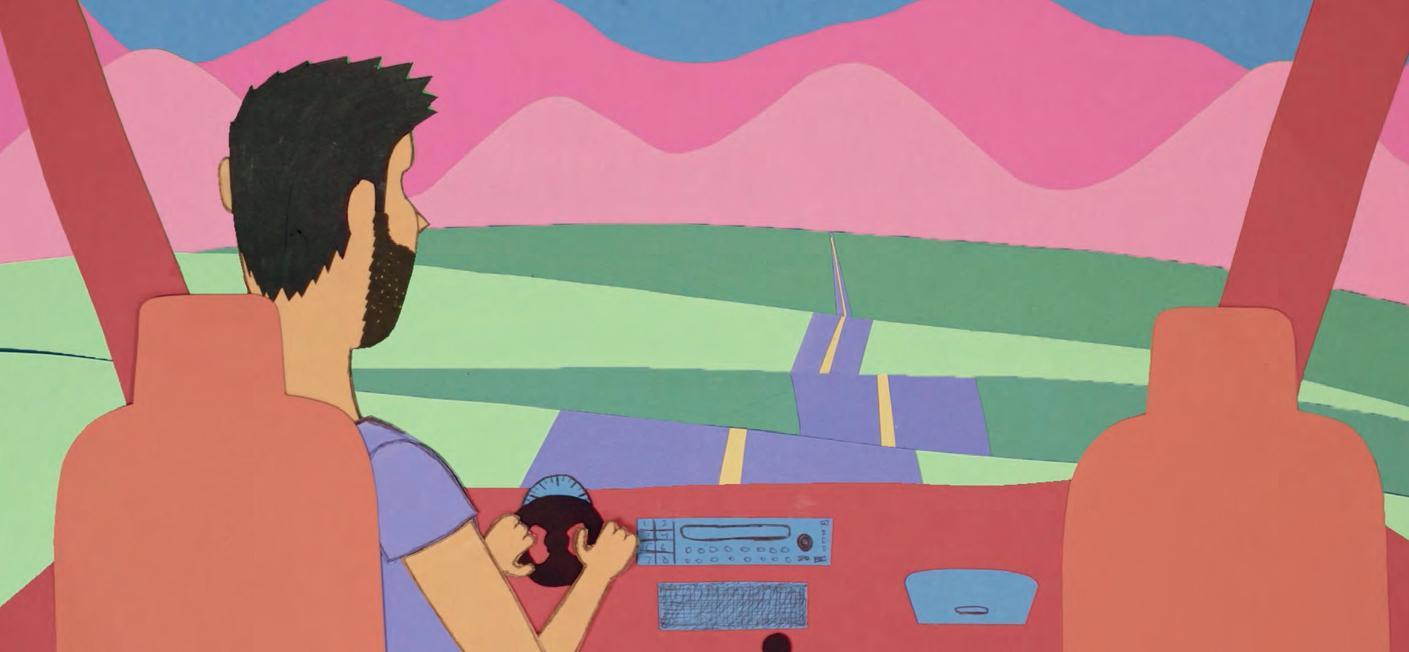
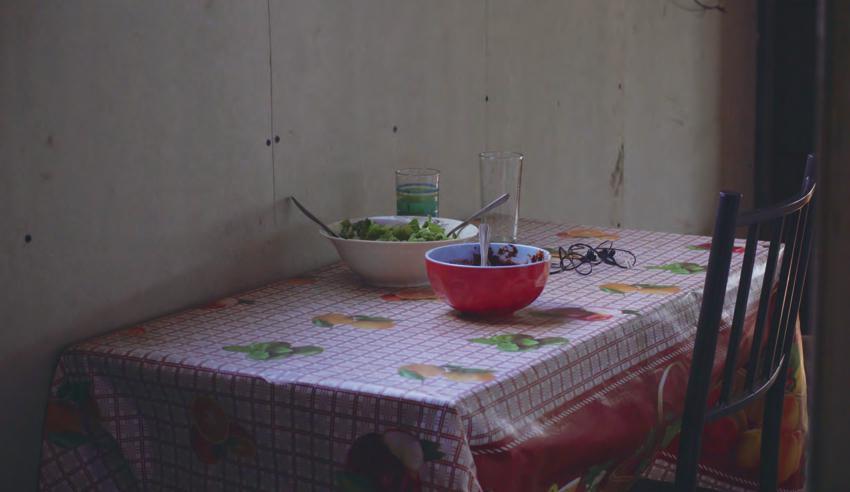
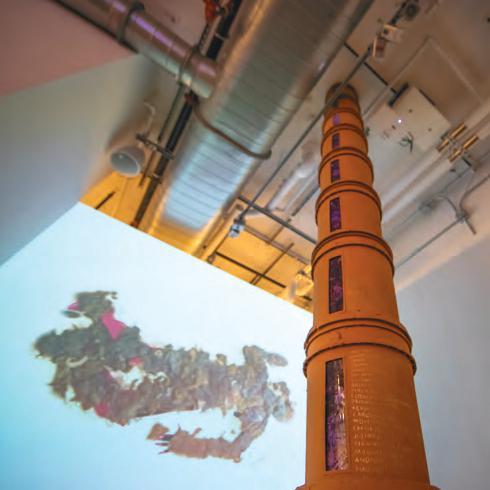 Rudradutt Soumitra Ranade, Hey Rudy
Fernando Antonio Saldivia Yáñez
Brief Space of Time
Rudradutt Soumitra Ranade, Hey Rudy
Fernando Antonio Saldivia Yáñez
Brief Space of Time
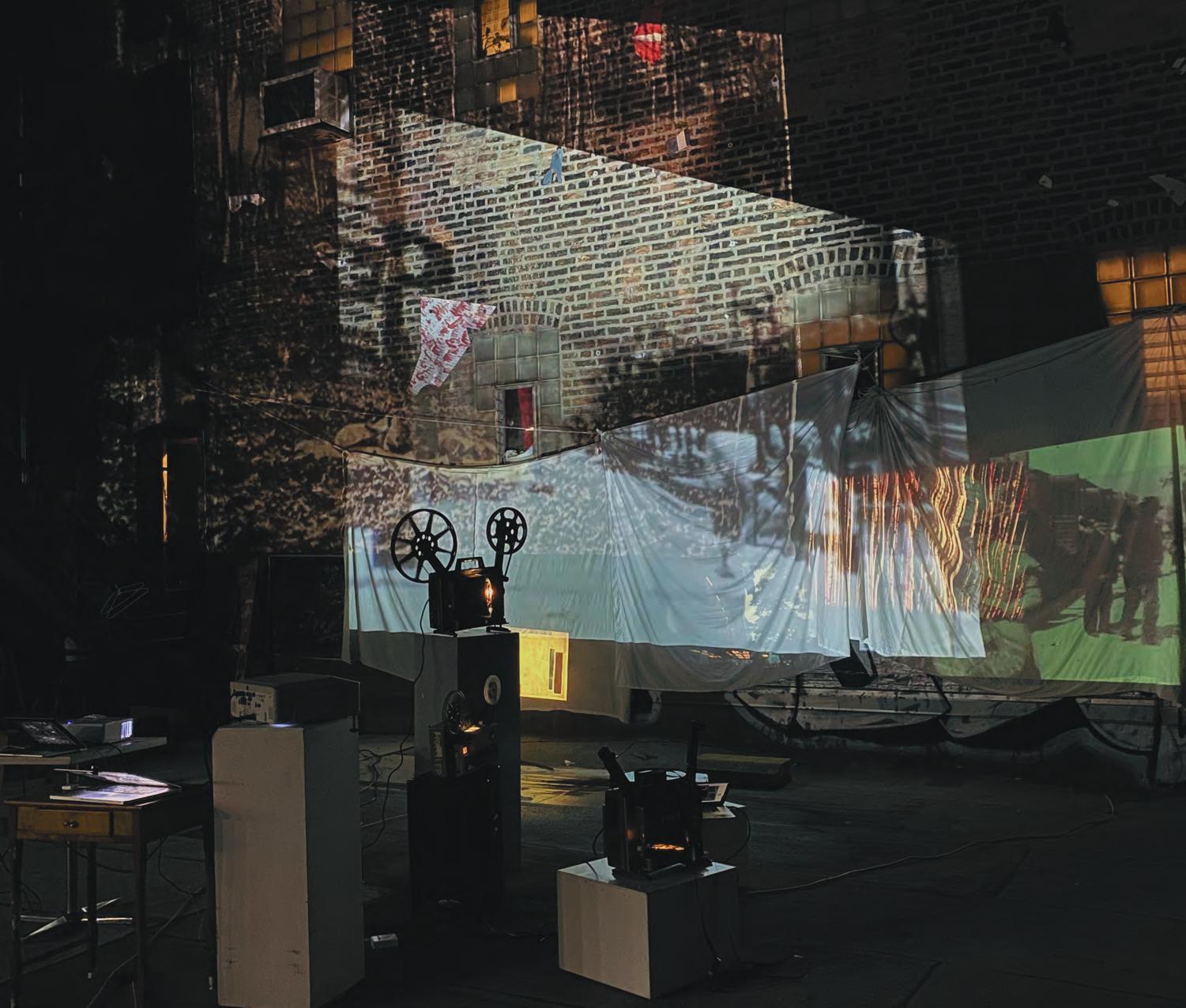
saic.edu/ptdw
Widely considered one of the most important studio programs in the country, Painting and Drawing promotes the development of new approaches that are redefining contemporary painting. Through studio production, critical discussion, and experimentation, students acquire the conceptual, material, and methodological tools to build a sustainable practice.
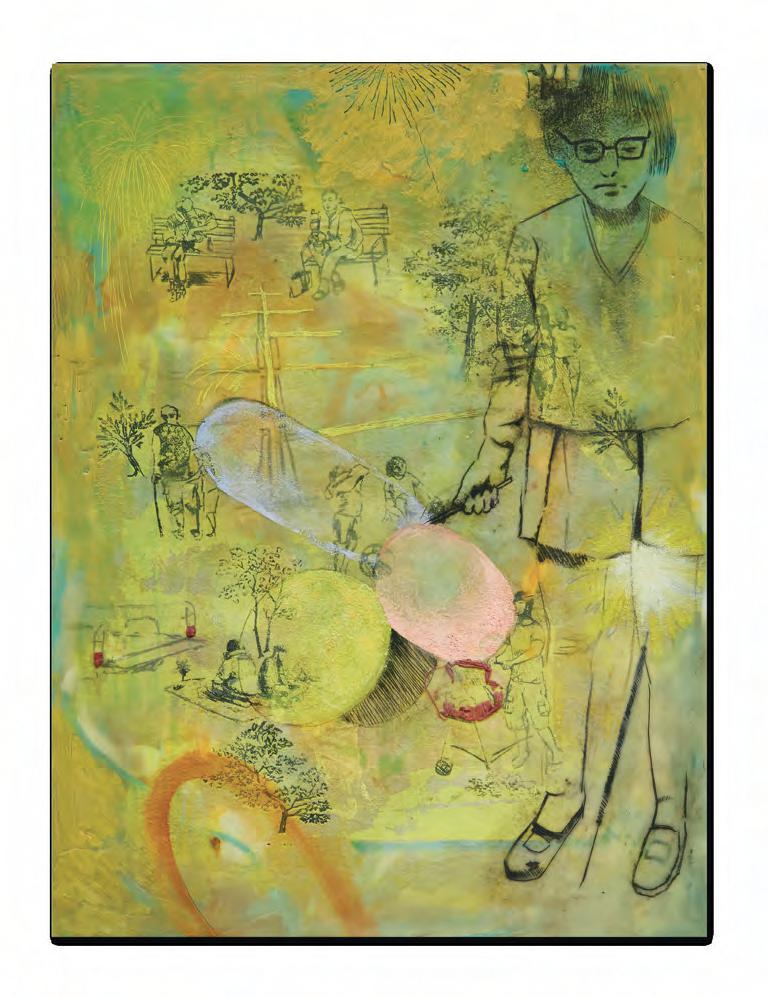
This state-of-the-art facility is the center for material study and exploration, offering opportunities to safely navigate the breadth of material possibilities guided by faculty experts.
Our interdisciplinary approach challenges students to explore their ideas across a wide range of creative approaches, from traditional painting and drawing practices to methods incorporating other media and materials—including fibers, ceramics, printmedia, film and video, digital imaging, and performance. Students are encouraged to develop their individual studio practices using critical and historical frameworks to inform their aesthetic and conceptual decisions.
The Painting and Drawing faculty are accomplished artists, writers, critics, curators, and gallerists actively engaged in the local, national, and international art community. They have been awarded grants from the National Endowment for the Arts, Fulbright Program, and the Tiffany, Ford, Guggenheim, Warhol, and Newhouse Foundations and support a wide array of conceptual and material models for painting and drawing.
Students have access to resources unique to SAIC, including the Art Institute of Chicago, an internationally renowned museum offering a depth and breadth of exhibitions and collections including its Prints and Drawings room. The department boasts a thriving Visiting Artists Program, in which a variety of artists, critics, and curators present lectures and participate in individual or group critiques.
Chicago also has an active artist-run gallery scene, vibrant commercial galleries, and not-for-profit spaces, and the department hosts an annual curated alum exhibition at an influential Chicago gallery.
Graduate Painting and Drawing studios are situated around a spacious open critique space, ideal for students to exhibit work and take part in ongoing conversations with their peers.
CANDIDA ALVAREZ
SUSANNE DOREMUS
MARI EASTMAN
ANDREW FALKOWSKI
GAYLEN GERBER
MICHELLE GRABNER
ANNE HARRIS
ARNOLD KEMP
JOSÉ LERMA
JIM LUTES
FRANK PIATEK
SCOTT REEDER
TYSON REEDER
Painting and Drawing students have access to individual studios and a range of equipment and facilities:
• StudioLab, a state-of-the-art painting and drawing materials lab, studio, and database
• Large critique spaces with natural light
• Computer labs throughout campus
• Laser cutting facilities and multiple on-campus woodshops
• Video and audio editing equipment and professional-grade digital cameras and light kits
• Affordable digital printing through SAIC’s Service Bureau
• Well-ventilated spray booths
• Storage racks
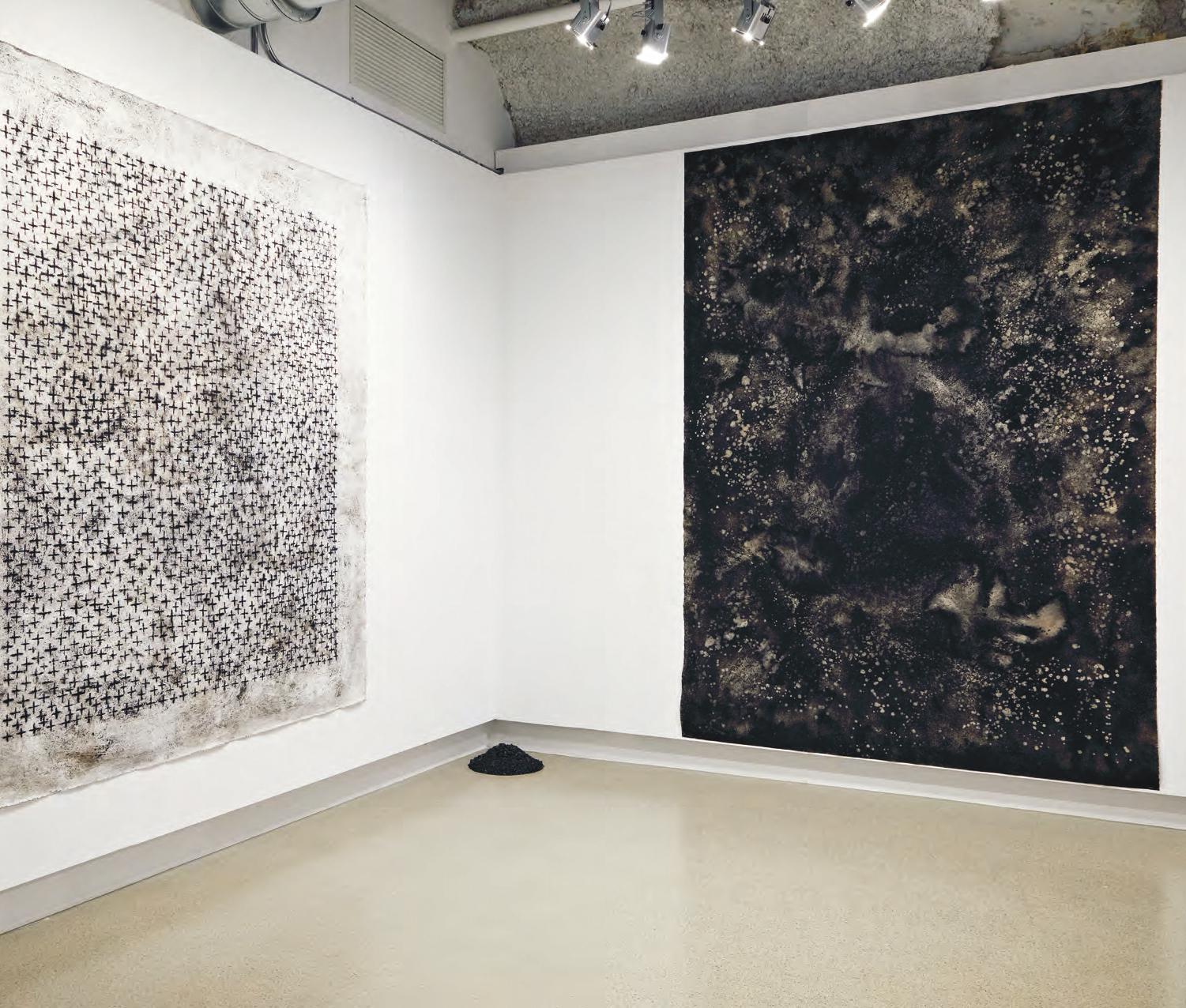

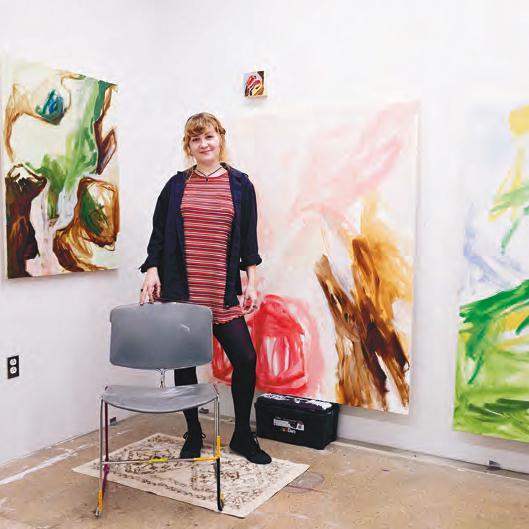
 Patrick Dean Hubbell
A Portrait of You: Nihima Nahaasdzaan (Mother Earth), 2021
Eleana Daniel
Patrick Dean Hubbell
A Portrait of You: Nihima Nahaasdzaan (Mother Earth), 2021
Eleana Daniel
saic.edu/performance
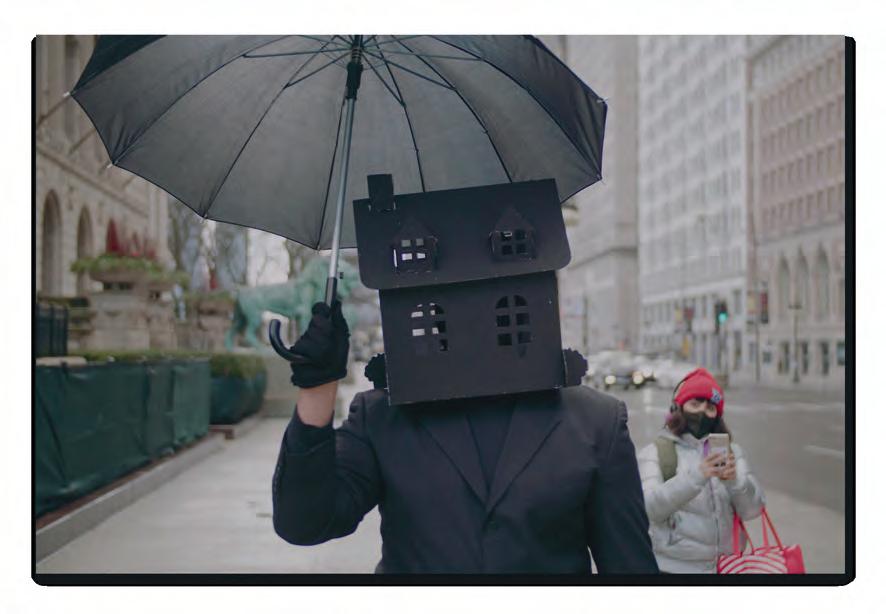
One of the only graduate-level contemporary live art programs in the country, our Performance program cultivates artists who produce experimental work that reflects radically changing concepts of the body, time-based art, social practice, new media technologies, and the social and cultural conditions of a mobile society.
Spaces are managed by a performance technician who works closely with students to help realize their projects from inception to completion.
Tony Sims, 2022 (photo by Greg Reigh)Students engage in performance reenactments, social justice and activism, abandoned practices, performance lectures, immersive technologies and social networking performance, tactical and sitespecific performance, and choreographic actions. Rigorous approaches to assessment and critique are applied throughout the program, emphasizing structured dialogue and response. Our interdisciplinary approach is well suited to the fluid nature of performance, and students are encouraged to explore other SAIC departments to enhance their work.
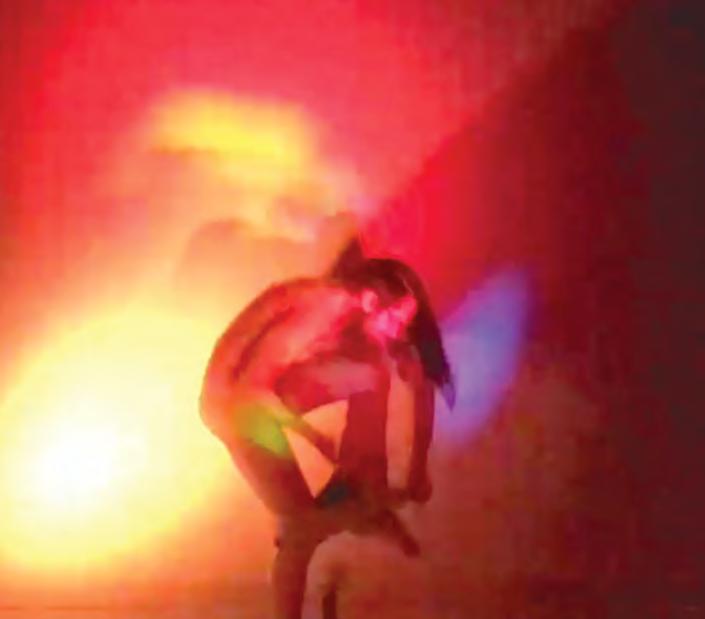
Internationally renowned artists lead our department, and nurture students as independent practitioners, asking them to examine their practices through political,
social, and philosophical lenses. Students are challenged to make bold statements in their work through experimentation and discovery.
Students are provided guidance for showings and curatorial projects, and have the opportunity to share their work through public events such as the annual fall New Blood Performance Festival and the spring IMPACT Performance Festival. Guest artists are regularly invited for symposia, workshops and individual graduate critiques. Representatives from organizations such as Franklin Furnace, Inc., Performa (NYC), SPILL International Festival of Performance (UK), City of Women (Slovenia), and the ANTI Festival (Finland) engage in dialogue about their work and share networks and post-MFA opportunities.
Students work in the galleries and spaces of Chicago’s performance community, including experimental, non-traditional, and artist-initiated spaces. The city itself is an urban classroom, with students having the opportunity to engage throughout numerous communities through projects and performances.
Students have access to an 80’ × 40’ × 14’ multi-use performance space and a dedicated graduate performance studio and installation space, both with a programmable LCD lighting system and a wide range of audiovisual equipment, including a 4K video camera.
Students also have exclusive access to a dedicated Performance department video editing suite. These spaces are managed by a performance technician who works closely with students to help realize their projects from inception to completion.
Corey Smith Etudes, performing live at the SAIC Watchparty, 2021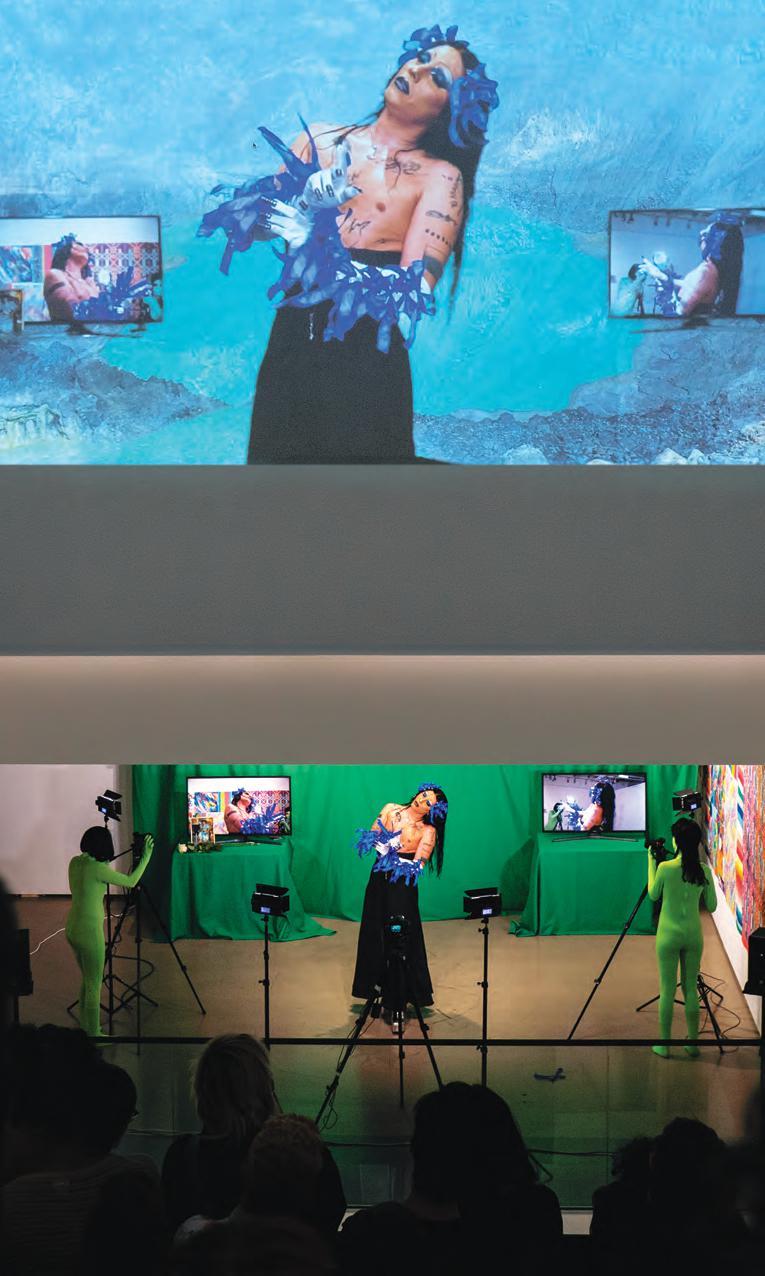
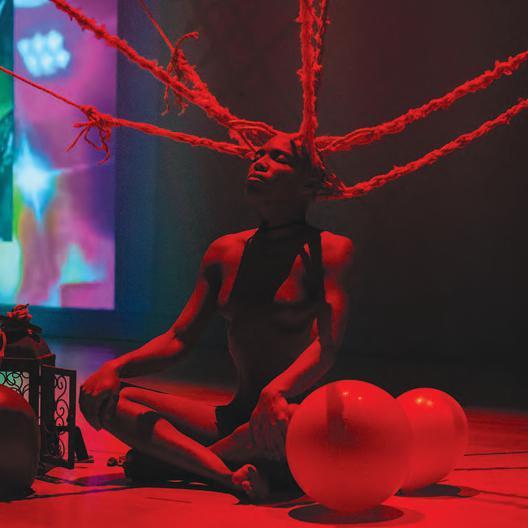
 Ále Campos, Con Esos Ojos / With Those Eyes IMPACT Performance Festival, 2022 (photo by Ji Yang)
Lynn Hunter, LoveSpace, IN/FORM Festival Links Hall Performance Space, Chicago, 2022 (photo by Ricardo E Adame)
Ále Campos, Con Esos Ojos / With Those Eyes IMPACT Performance Festival, 2022 (photo by Ji Yang)
Lynn Hunter, LoveSpace, IN/FORM Festival Links Hall Performance Space, Chicago, 2022 (photo by Ricardo E Adame)

saic.edu/photo
Renowned as one of the most formidable programs in the country, our Photography program stands out for its unwavering commitment to exploring, comprehending, and pushing the boundaries of traditional and experimental forms of image making, while nurturing students as emergent artists, intellectuals, and professionals.
This series offers students the opportunity to select, recruit, and work closely with visiting artists, critics, and curators, who participate in critiques, roundtable discussions and studio visits with graduate students.
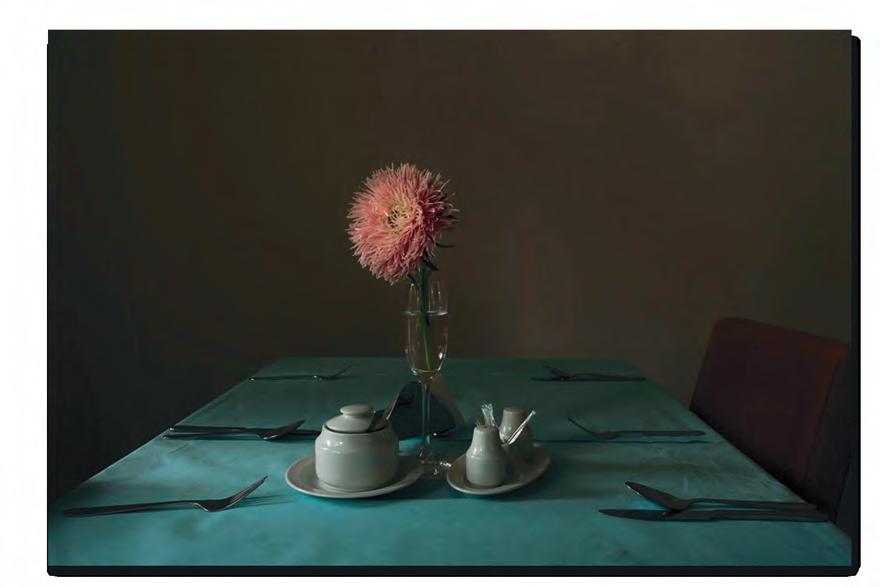 Jenny Rafalson Unconscious returning
Master of Fine Arts in Studio Photography
Jenny Rafalson Unconscious returning
Master of Fine Arts in Studio Photography
In addition to the exploration of imagery, the faculty exhibit an exceptional range of diversity in their artistic practices. This enables them to provide extensive support for a wide spectrum of experimentation and investigation, accommodating interests spanning the full gamut of photography. Students are encouraged to embrace conceptual challenges and push the limits of their technical skills and boundaries, tapping into the expertise available both within and outside the department to help articulate and pursue their unique and personal artistic visions.
The program places a strong emphasis on critical thinking skills as students engage in meaningful critiques with their peers. Students augment their photographic projects with extensive research, delving into both historical and contemporary cultural contexts to enrich their personal artistic pursuits. The department offers various opportunities to ensure students emerge as competent practitioners. Students refine their practice by delivering two public lectures, honing their critical writing skills and the ability to effectively articulate their ideas. They are guaranteed teaching assistantships for each semester of the program.
Students are provided with private studios and have access to up-todate facilities and equipment. By engaging in the Parlor Room Lecture Series and the SAIC Visiting Artist Lecture Program, students interact closely with visiting artists, art historians, critics, and curators who engage in critiques and studio visits. In addition, students collaborate with a curator on the creation of a departmental catalog showcasing their work, further contributing to their professional development.
Photography students have access to a wide range of equipment and facilities, including:
• Individual graduate studios with dedicated critique space
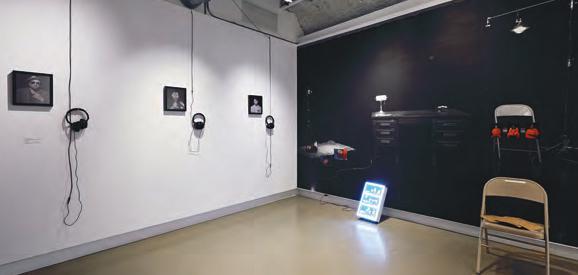
• 2,000+ square foot fully equipped digital facilities, including more than 38 editing workstations and color-calibrated monitors, Imacon, copy-stand and flatbed scanners, 20 professional digital printers with output up to 42” wide, and calibrated print viewing stations
• Two Advanced Checkout Centers. The Photo facilities window supports our lab facilities. The 280 Media Center checks out photo equipment for off-campus use, including digital full-frame mirrorless and medium-format cameras; analog 35mm, medium-format, and view cameras up to 8” x10”, and a large selection of lenses and accessories
• Black and white darkroom with 13 enlarger stations
• Film processing room with up to 4 processing stations
• Dedicated alternative process darkroom that supports a wide range of activities, including historic and current alternative processes and digitally enlarged negatives
• 3-Bay Professional Shooting studio outfitted with dedicated strobe systems, backdrops, and a tethered 100 Megapixel digital studio camera system
• SAIC Service Bureau with 62 inch inkjet printer, wide-format latex printer, pre-press quality laser output, book binding capabilities, and a wide variety of printing media

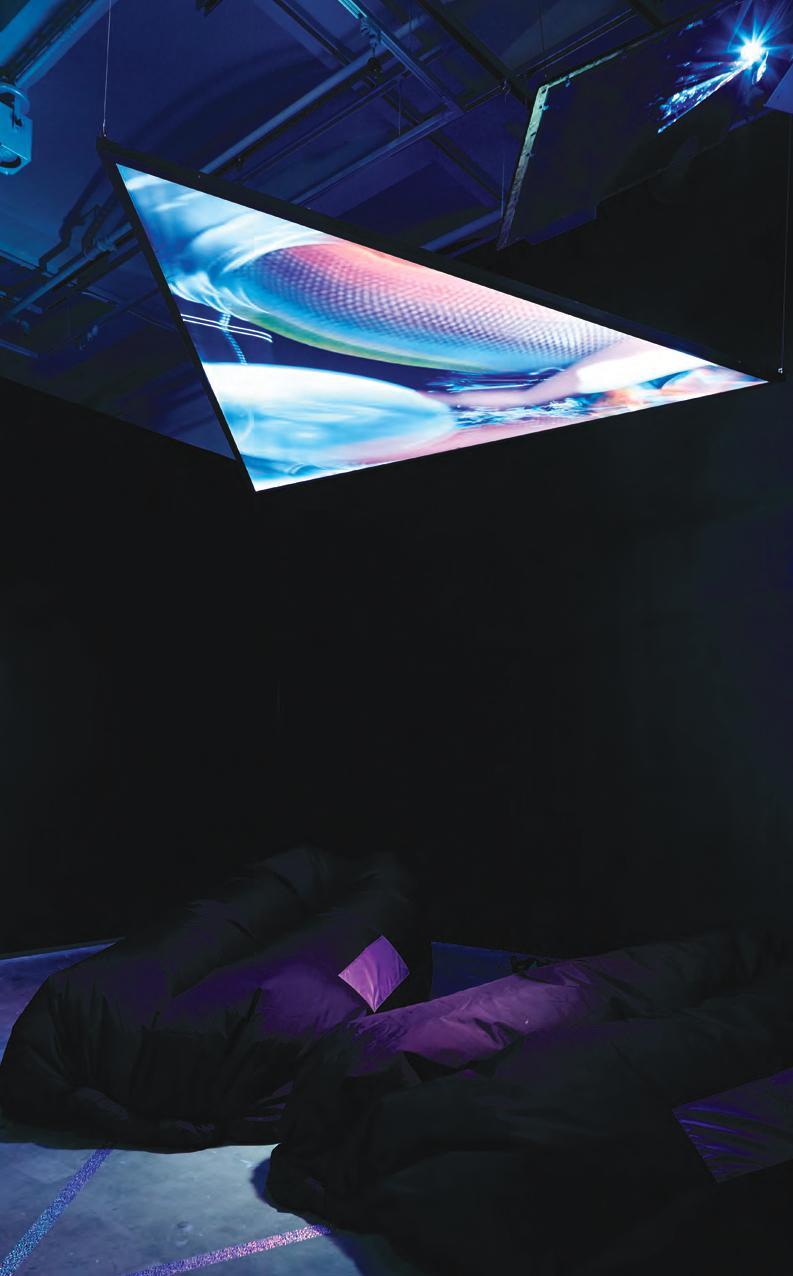
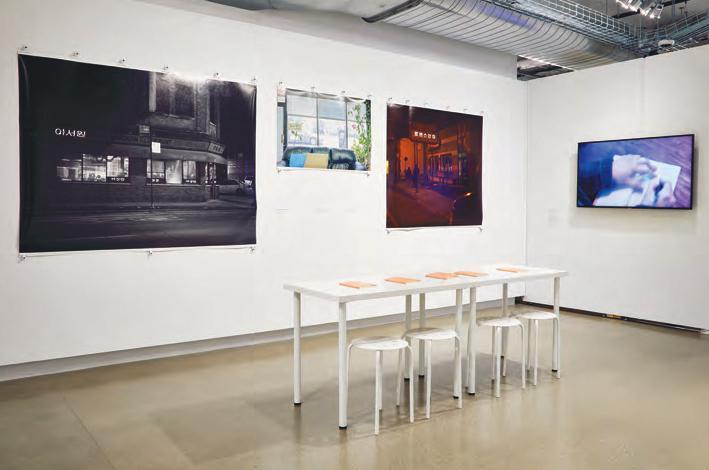
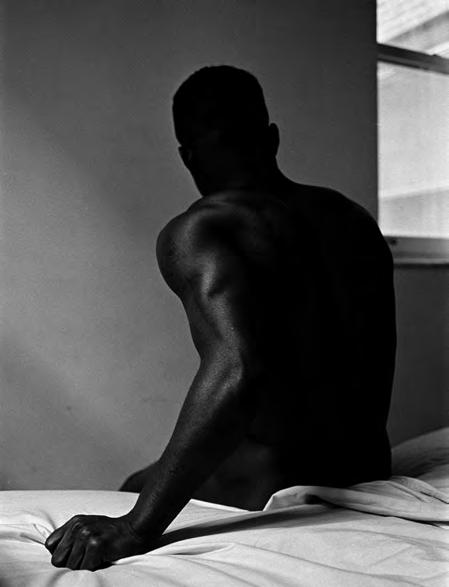 Michelle Marie Murphy She + They in Space (Chapters 2, 7, And 0)
Arda Asena, hold
Michelle Marie Murphy She + They in Space (Chapters 2, 7, And 0)
Arda Asena, hold
saic.edu/printmedia
Our Printmedia program acknowledges traditional forms of the medium and actively encourages expanding the boundaries of contemporary print by promoting experimentation with materials, techniques, and processes informed by research and critical thinking.

The department hosts visiting artists, critics, and scholars from around the world for lectures, critiques, and collaborations, providing opportunities for students to engage in a community beyond SAIC.
Students employ a wide variety of printing approaches and developing technologies, and access techniques from across disciplines to create prints, artists’ books, three-dimensional objects, installations, new media, and time arts. The department’s interdisciplinary philosophy supports and advances new ideas and novel approaches.
Our faculty of nationally and internationally recognized artists is engaged in contemporary theoretical debates, creating a stimulating environment for the exchange of ideas that inform the production of cultural objects and images. Students select graduate advisors from within the department or from more than 100 graduate faculty advisors representing a myriad of disciplines at SAIC.
Students are eligible for up to two teaching assistantships per semester, gaining valuable professional experience. Annual graduate lectures offer students opportunities to present their studio research to faculty and peers from diverse disciplines.
Printmedia students have access to individual graduate studios with 24-hour access and extensive equipment, including:
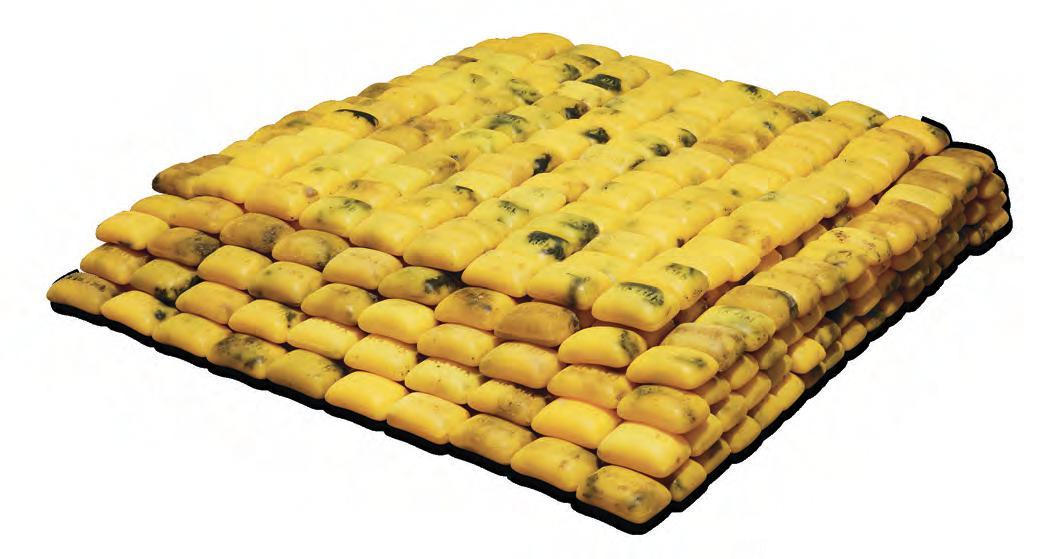
• 13,000-square-foot printmaking facility
• 6 intaglio/relief presses
• 15 screen printing stations with 2 large-format vacuum tables
• 4 lithography presses
• Offset studio with 2 automated presses using direct-to-plate printing and 2 Risograph printers
• Darkrooms for screen printing, lithography, and intaglio
• Artists’ books/bookbinding studio
• Fully equipped Macintosh computer lab with workstations, scanners, and large/ medium format printers
• Access to laser cutters, 3D printers and scanners, CNC routers and other advanced digital and analog technologies
• Access to highly regarded collections of prints and multiples in the Joan Flasch Artists’ Book Collection at SAIC and the Prints and Drawings Study Room at the Art Institute of Chicago
Maddie May, Scrub, 2021

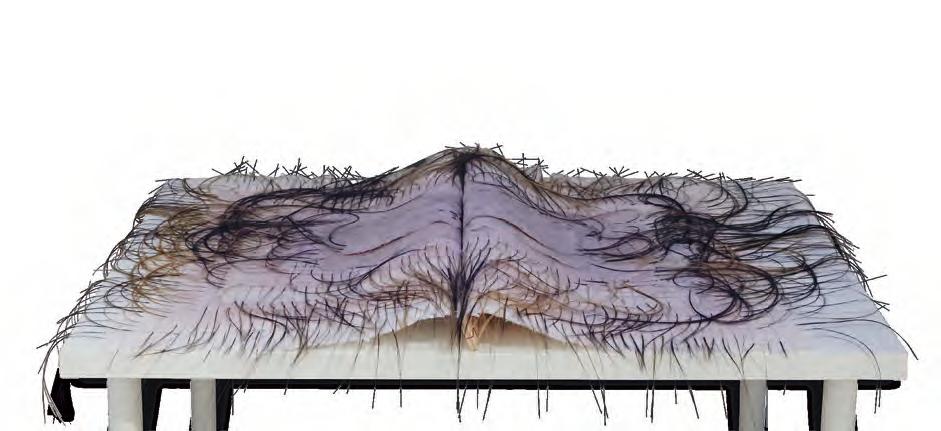

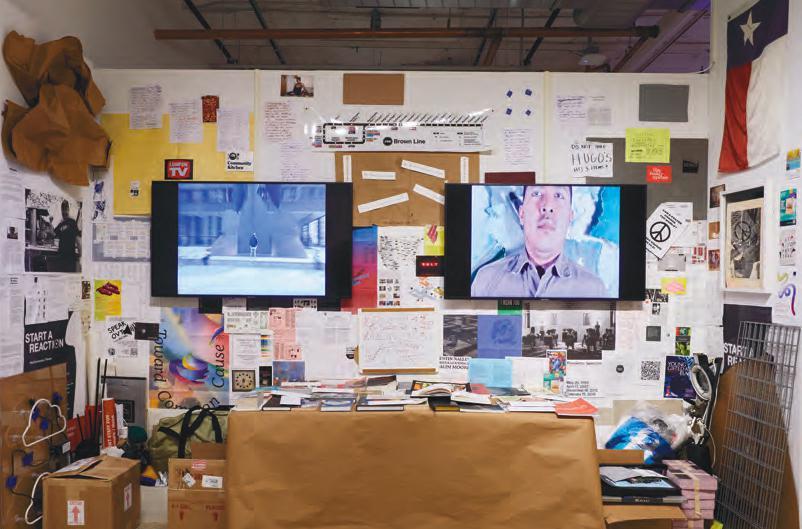
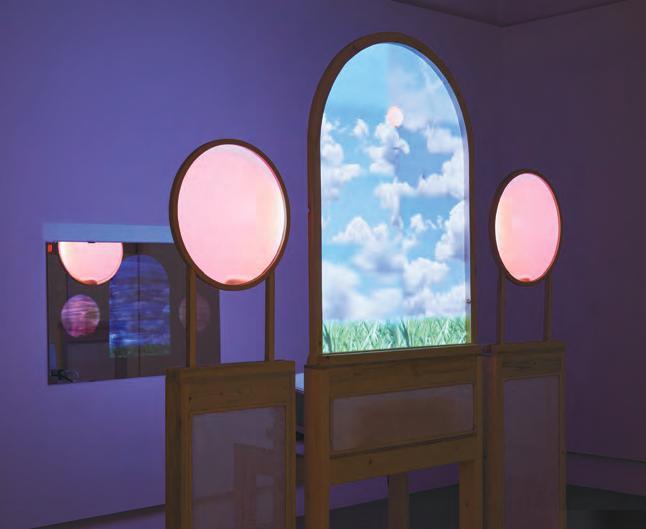 Florence Lanxuan Liu Intertwined No. 2, 2021
Hugo Ivan Juarez Alatorre have you ever put everything into one room?, 2022
Florence Lanxuan Liu Intertwined No. 2, 2021
Hugo Ivan Juarez Alatorre have you ever put everything into one room?, 2022
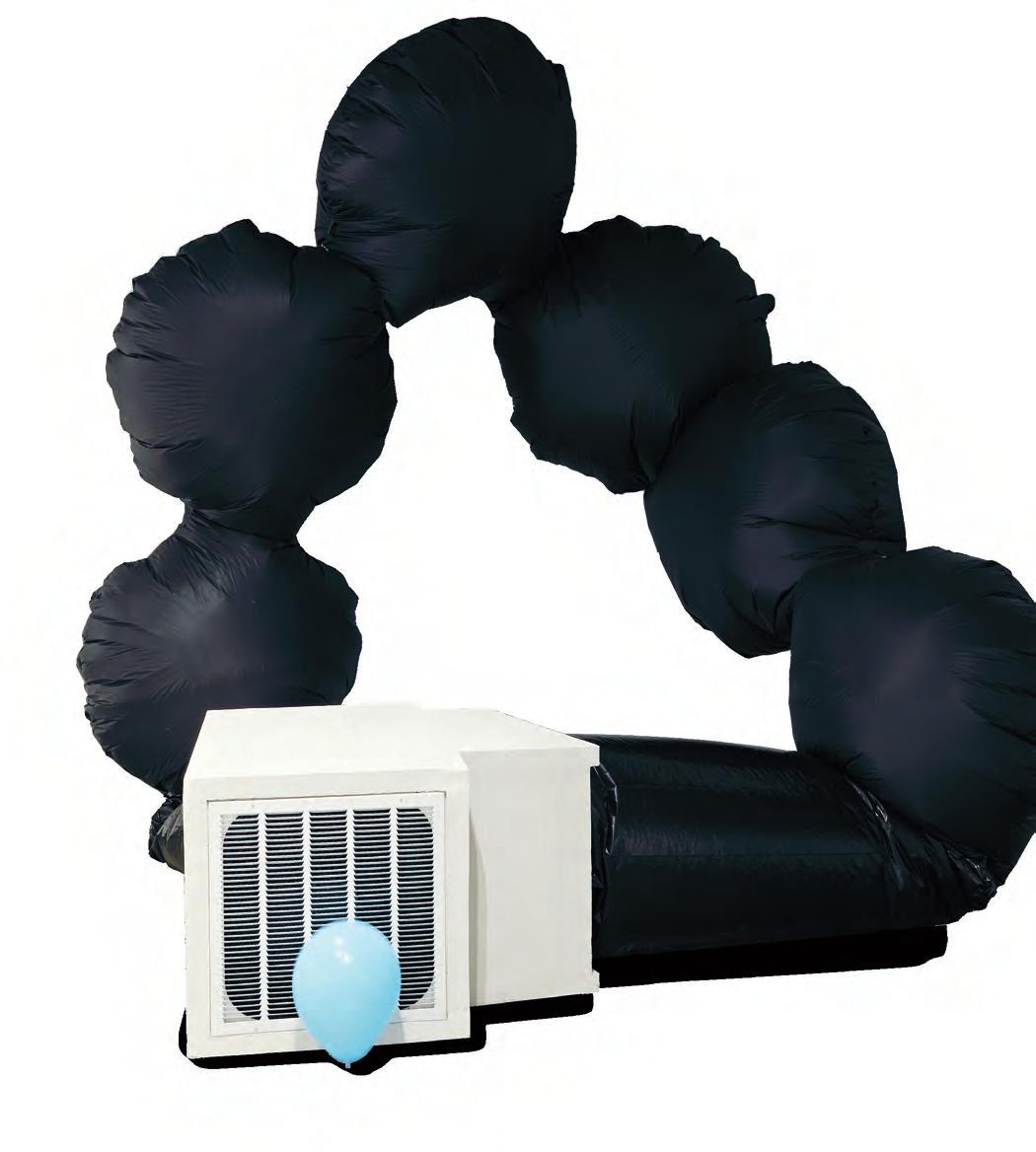
saic.edu/sculpture
Our distinctive Sculpture program encourages experimentation while giving form to social, environmental, and theoretical concerns. Students are encouraged to embrace a wide variety of approaches—from casting bronze to organizing public spectacles, from growing food to digital fabrication.
A state-of-the-art critique space with gallery lighting, audio, video, sculptural and technological assets for installation.
The program emphasizes experimentation and engagement with a wide range of contemporary and interdisciplinary processes and skills—from metal casting, mold-making, and figure studies to site-based projects, mixed-media installations, video- and webbased projects, puppetry, 3D digital modeling and fabrication, and more. The curriculum includes research-based and sciencerelated projects, as well as engagement with exhibition and curatorial practices. Graduate sculpture seminars immerse students in critique, writing, and theory, and may include peers from the department of Ceramics.
The department is committed to a culture of artistic growth through collaboration. Students and faculty forge lasting bonds through shows and critiques in the Sculpture Base Space, work in the Knowledge Lab courtyard gardens and greenhouse, and special events such as off-campus iron pours.
The department encourages students to move outside the studio through interdepartmental collaborations, open exhibitions, and interdisciplinary seminars and critiques. Workshops, such as Sculpture Boot Camp, provide specific skills and opportunities for professional practice.
Local and international visiting artists present a range of sculptural perspectives and practices in lectures and critiques throughout the year. Students present their work alongside visiting artists in a public lecture series, offering an opportunity to hone presentation skills.
Sculpture students have access to state-ofthe-art equipment and facilities, including:
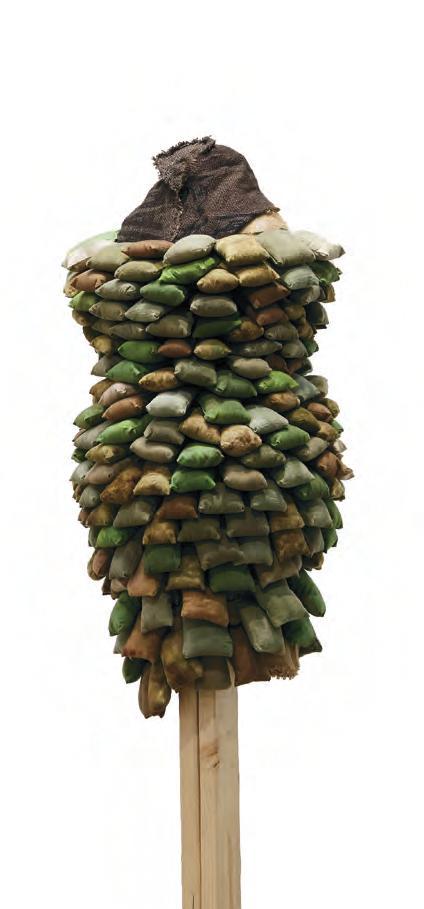
• Comprehensive woodshop with finishing areas
• Metal shop with fabrication capabilities that include gas, MIG, TIG, arc welding, forging, and CNC plasma cutting
• Digital fabrication facilities, including 60 and 150 watt laser cutters, 3 and 6 axis robotic CNC milling capabilities, 3D printers and scanners
• Foundry equipped to pour bronze and aluminum into ceramic shell, sand, and classical investment molds
• Off-campus iron pours
• Mold-making shop with rotocaster, vacuum chamber, and powder-coat kiln
• Industrial sewing machines
• State-of-the-art computer lab with Intuos Cintiq tablets for 3D visualization, GIS, modeling, and animation development
• Indoor and outdoor exhibition spaces
• Organic outdoor garden and greenhouse
• Large individual graduate studios
SARA BLACK
MARY JANE JACOB
JEFFERSON PINDER
DAN PRICE
LAN TUAZON
ADRIAN WONG
Lisa Bjornstad Anechoic Suit, 2021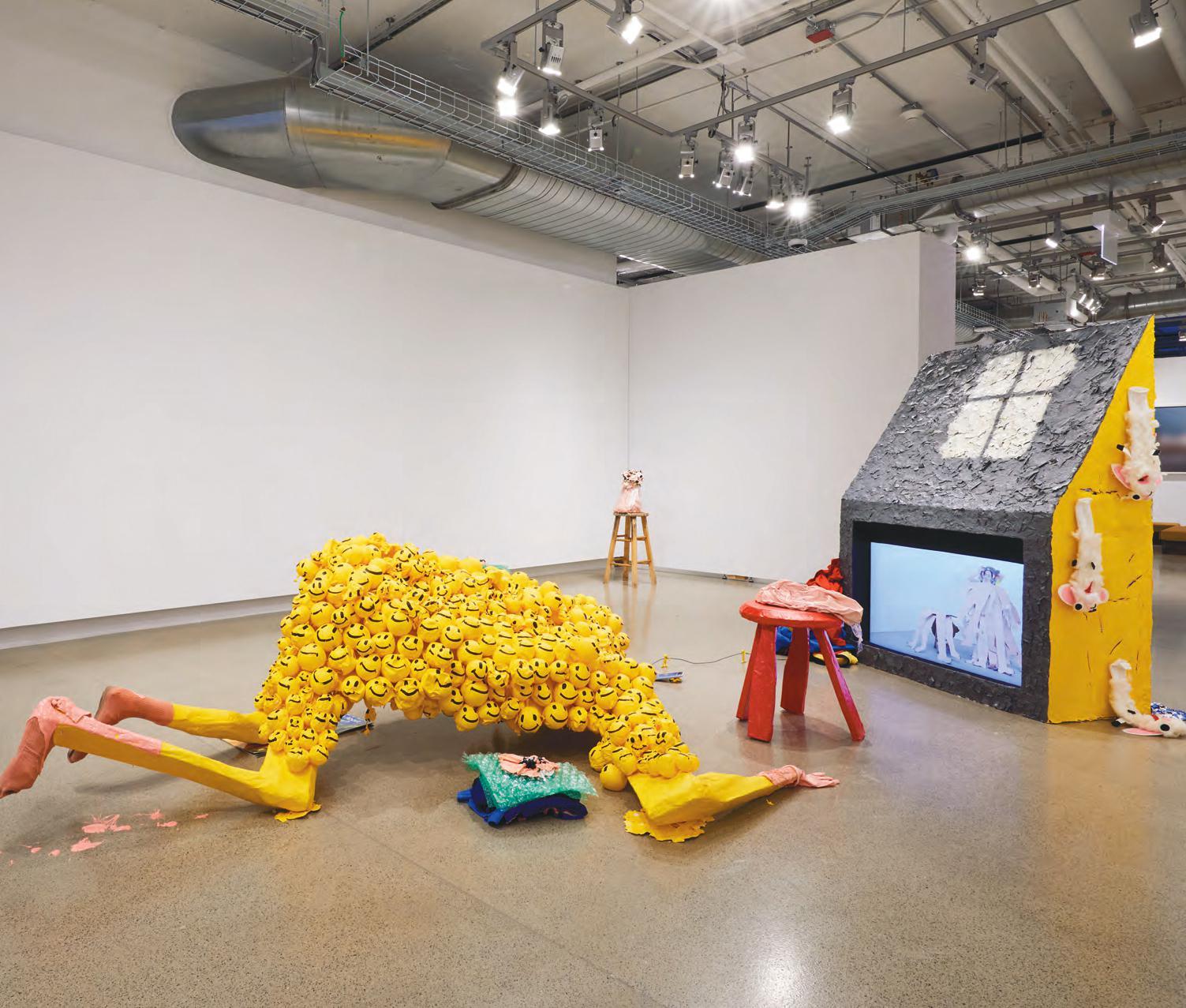
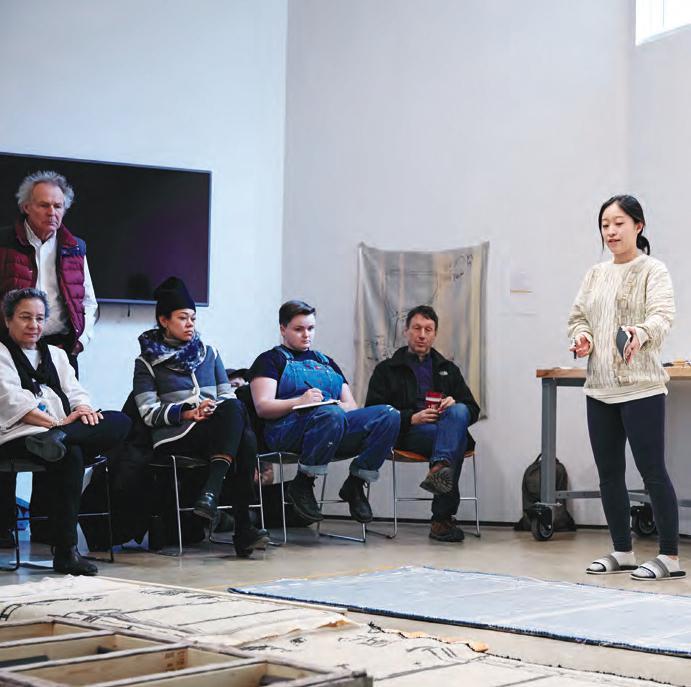

saic.edu/viscom
Visual Communication Design students explore the transformative power of design, as they develop their analytical skills, personal voice, and visual language. The program challenges students to actively engage the world and define their role as contributing designers working at the intersection of art, design, and mass culture.
Each year, the department hosts Exploratory Languages, a lecture series featuring leading designers and design educators. Recent lecturers have included Henk van Assen, Michelle Bowers, Kate Bingaman-Burt, Philip Burton, Anne Bush, and David Dunlap.
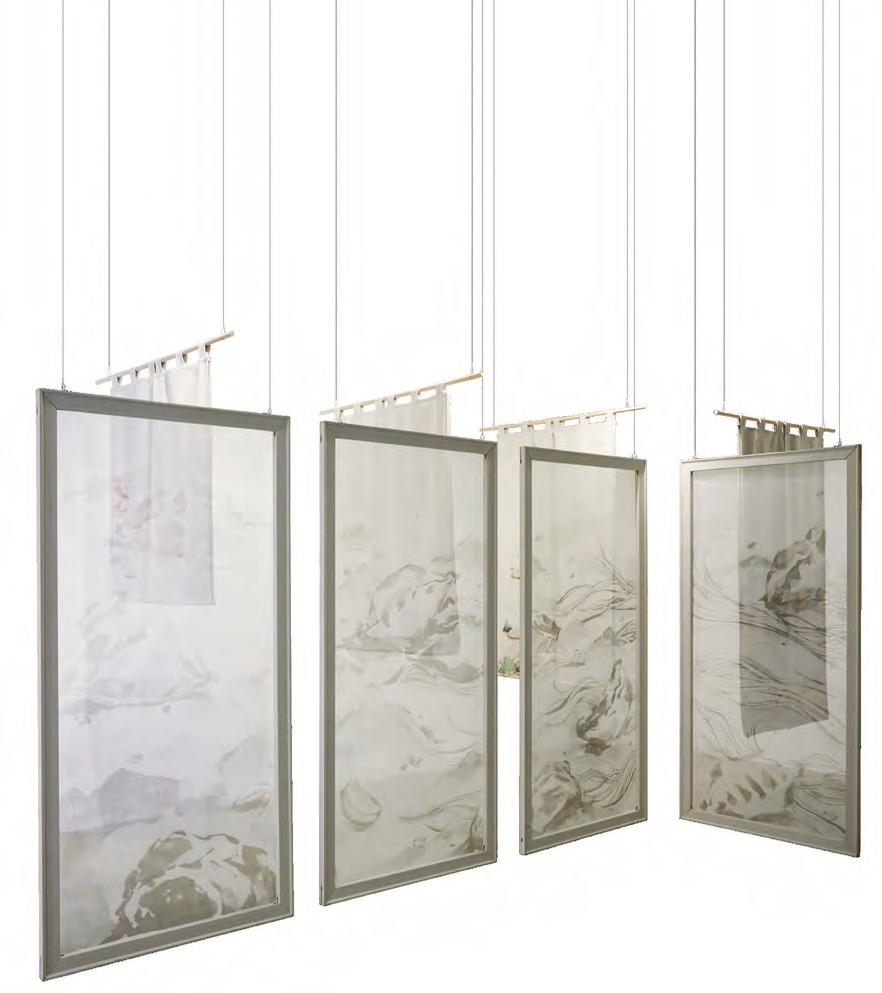 Yiting Liu
Yiting Liu
Experimentation is at the core of the program. Students begin by exploring different methodologies before charting their own trajectories to pursue their interests. With access to a rich array of tools and ideas, students acquire new skills and hone their studio practice as they develop an innovative and mature body of work, culminating in projects that are critically presented in the MFA thesis exhibition.
The individualized approach allows students to add new dimensions to their design by exploring other disciplines—from Printmedia and Writing to Photography, Film, Video, New Media, Animation, and Architecture. Engaging with like-minded creatives across departments allows students to make inventive and often unexpected connections in their work.
Our renowned faculty represents the diversity of contemporary design, practice, theory, and research, with thriving practices both self-initiated and clientassociated, physical and virtual, individual and collaborative. They guide students to explore issues of personal interest while examining how design influences and reflects cultural, social, political, industrial, and technological forces.
In addition to the two-year Master of Fine Arts (MFA) program, students without prior experience can also pursue the one-year Post-Baccalaureate Certificate in Studio to prepare for admission into the MFA program.
 JOHN BOWERS
Yihong Zhang, Until you disappear, 2022
JOHN BOWERS
Yihong Zhang, Until you disappear, 2022

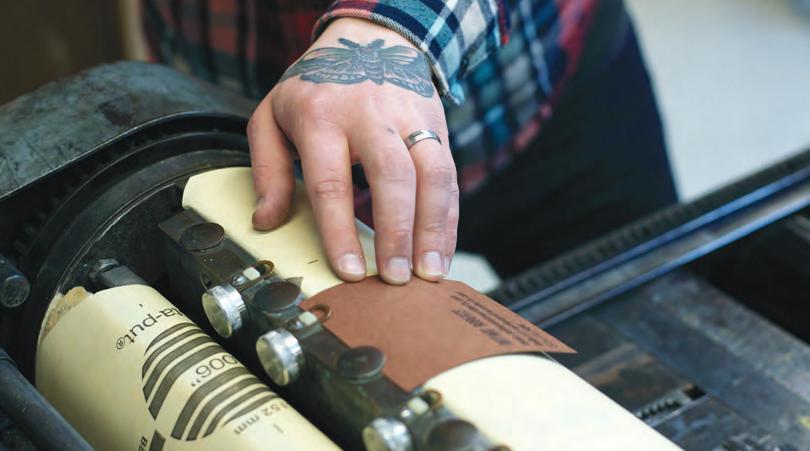
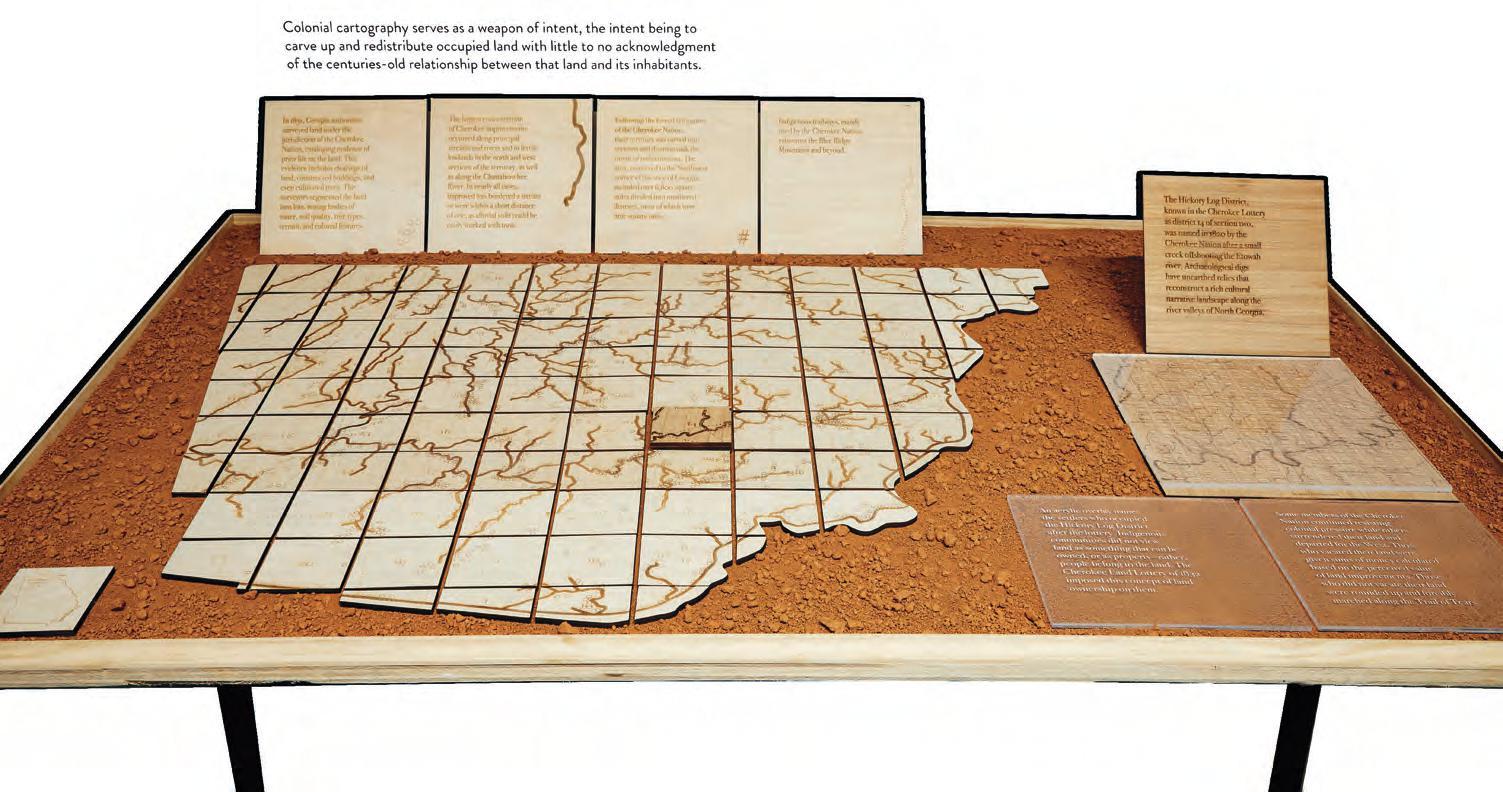
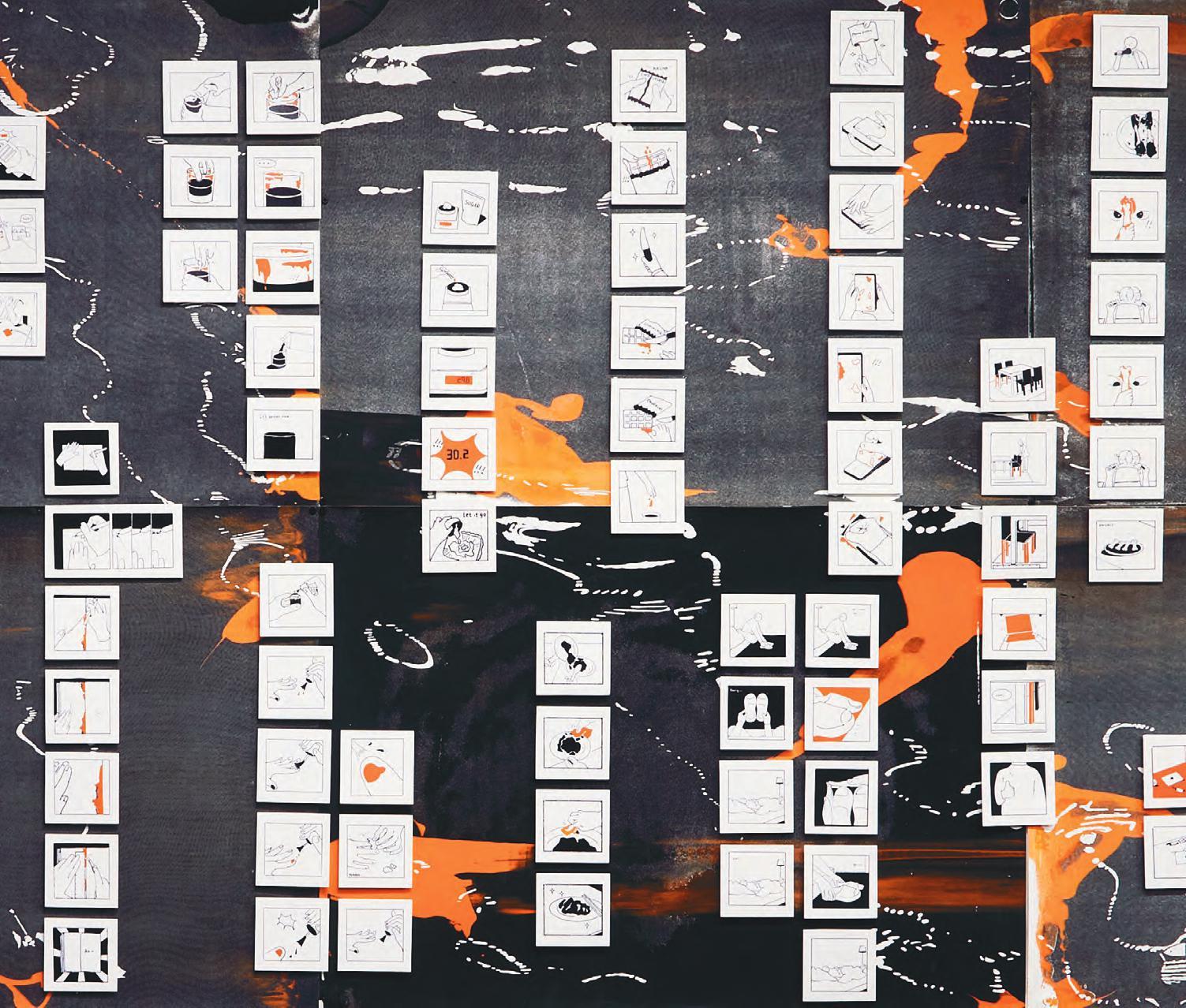
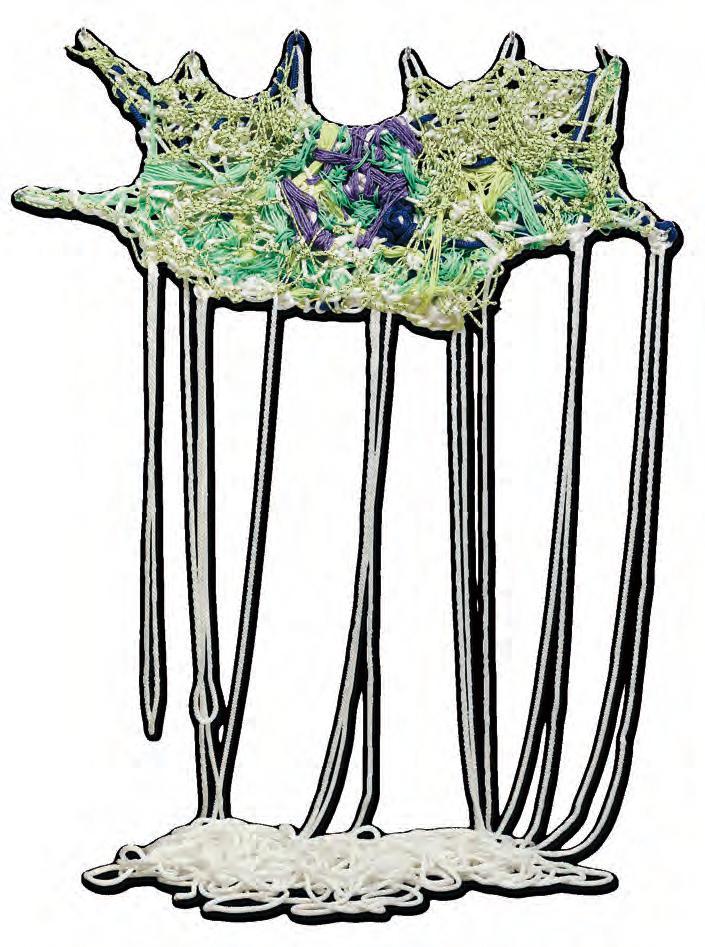

Three consecutive six-week summer residencies at SAIC bring students together to participate in studio and classroombased courses and symposia, with spring and fall semesters focused on online classes and remote home studio work supported by SAIC-based faculty and a local SAICsponsored program mentor. A rotating core of SAIC faculty delivers on-campus and online curricula, including individual and group critiques, one-on-one studio advising, art history and philosophy seminars, technical labs, discussion groups, online forums, and thesis composition tutorials, as well as pedagogical and professional development workshops.
Each year, students will focus on a distinct area of study. The first-year curriculum focuses on mobilizing the senses and constructing objects to explore the capture and destabilization of the viewer’s attention. Second-year students examine the connection between sensation and the creative process. Students spend their last year exploring the history of perception, including the relationships between objects and their viewers.
Students attend three summer sessions structured around weekly seminars and studio visits with faculty and visiting artists, a wide range of readings on artmaking, distribution, and interpretation methods,
and a series of specialized professional practice courses. Successive summers introduce students to resources necessary for off-campus semesters, studios and galleries in Chicago, and the development of networks and resources needed for a successful transition into professional practice.
During the summer residencies, visiting artists and scholars serve as role models for navigating the art world. They spend four days each presenting their work, participating in the Graduate Studio Seminar, and hosting studio visits with individual students and groups. Recent visiting artists and scholars have included Lynne Cooke, Susanne DesRoches, Heather Dewey-Hagborg, Rachel Faller, Laura Harris, Troy Michie, Fred Moten, Claire Pentecost, Guadalupe Rosales, Nancy Shaver, and Wu Tsang.
TYLER COBURN
DUSHKO PETROVICH
D. DENENGE DUYST-AKPEM
CORRINE FITZPATRICK
KELLY KACZYNSKI
JENNIFER LEE
JUDD MORRISEY
NATHANAËL
JOHN NEFF
DANIEL QUILES
ANDREA RAY
PAMELA SNEED
Noura Al Khasawneth R-H-M: Bowl of Terror / Bowl of Healing, 2022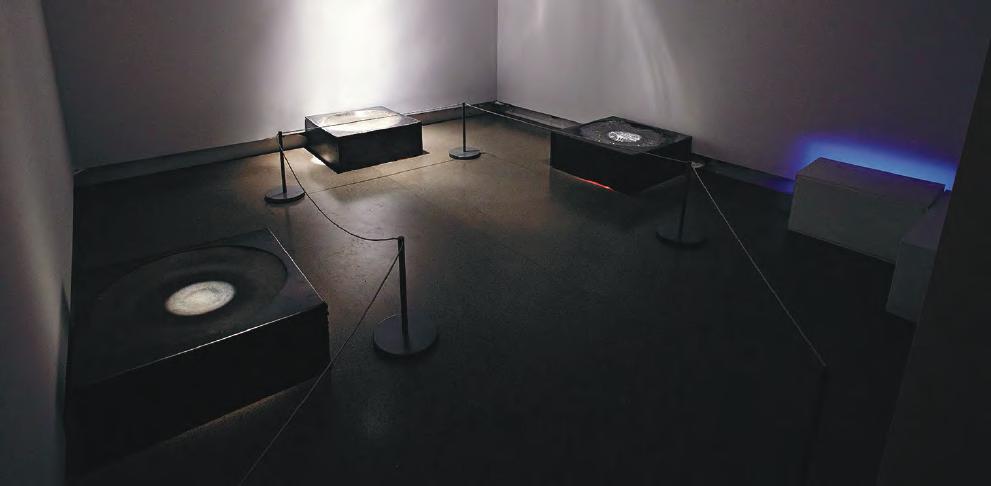
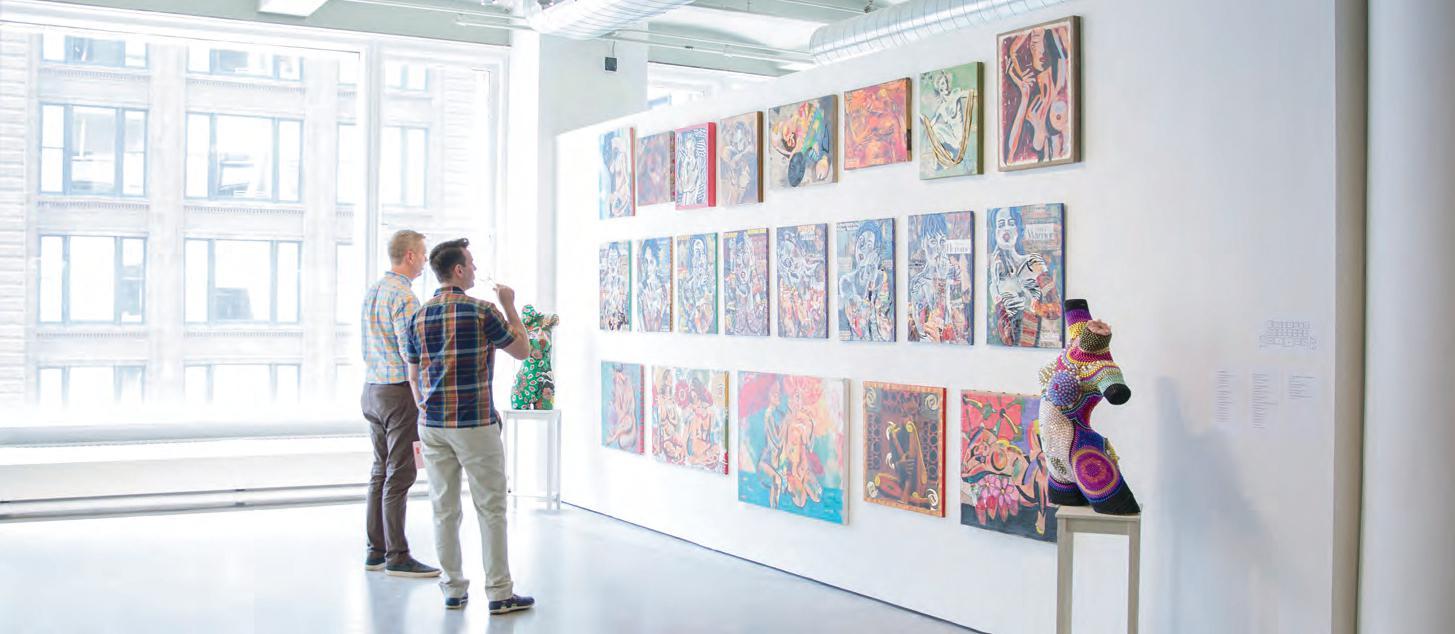
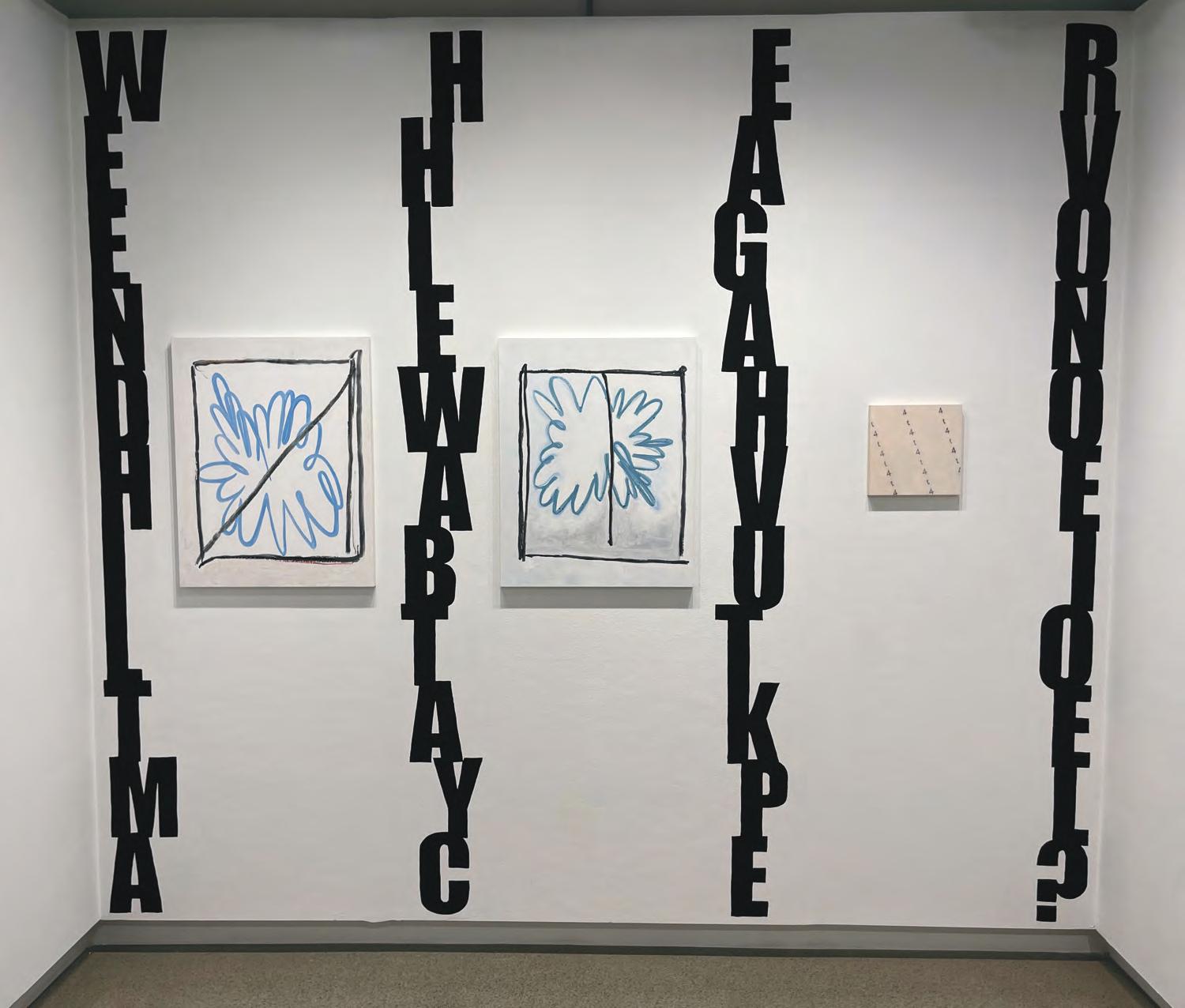
This groundbreaking program provides serious fashion students with an expansive exploration of contemporary fashion within the context of community, sustainability, technology, and the industry. Students benefit from rigorous artistic and professional training as they create and exhibit their body of work.
Students wishing to pursue this MFA but who require additional preparation should explore extended study options with the department.
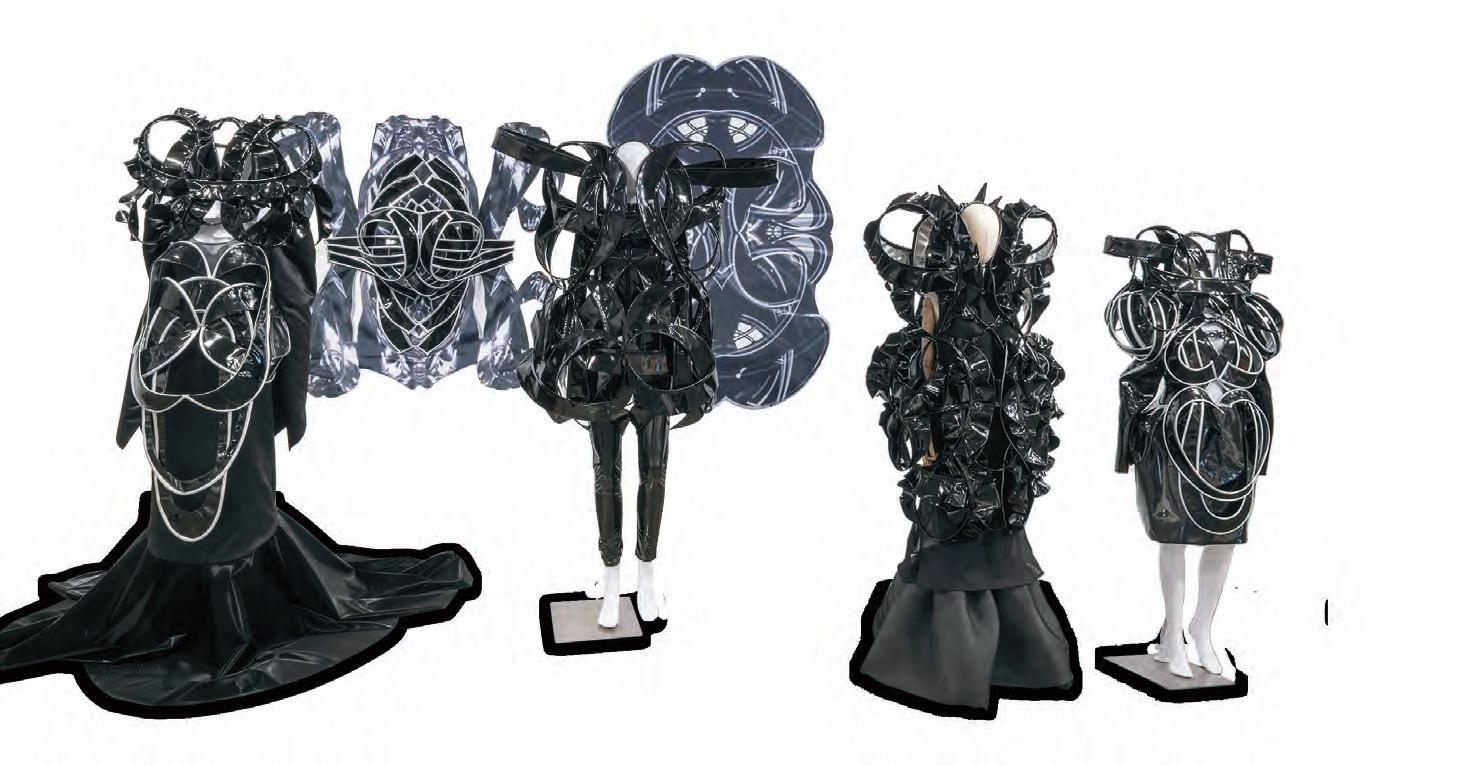
Our students engage in dedicated design studios, topical seminars, self-directed research, technical labs, and design history and theory courses. In their final year, they may take coursework in other departments at SAIC that complement their practice.
The culmination of the program, the MFA Thesis Exhibition, showcases a body of work that engages critical questions about the intersection and merging of fine art with fashion design and beyond. Presented in installation format, work can stand alone or influence the development of a fashion collection as it explores the body in motion, on show, in suspension, in conversation, and immersed in the world.
Working directly with SAIC’s internationally renowned faculty of fashion innovators, including visionary Nick Cave and designer Liat Smestad, students are exposed to business strategies, marketing, and designer branding concepts through professional practice seminars. The Visiting Artists Program and school-wide design initiatives offer additional inspiration.
Graduates of the program participate in the contemporary fashion and art worlds in myriad ways. Some go on to work in design studios or create their own lines, while others display their innovative work in gallery, installation, performance, or theatrical settings.
This hands-on department resource has an extensive collection of late 20th and 21st century designer garments and accessories that represent extreme innovation in the fields of fashion and beyond, as well as 3,200 fashion publications, scholarly texts, videos, designer biographies and interviews, and a print and fabric reference library.




 Han Wu
Rojae Li
Han Wu
Rojae Li
saic.edu/mfaw
The Master of Fine Arts in Writing (MFAW) program offers students the opportunity to explore diverse writing genres, emphasizing crossdisciplinary experimentation and discovery, and nurturing emerging writers as well as visual artists who view language as vital to their creative practice.
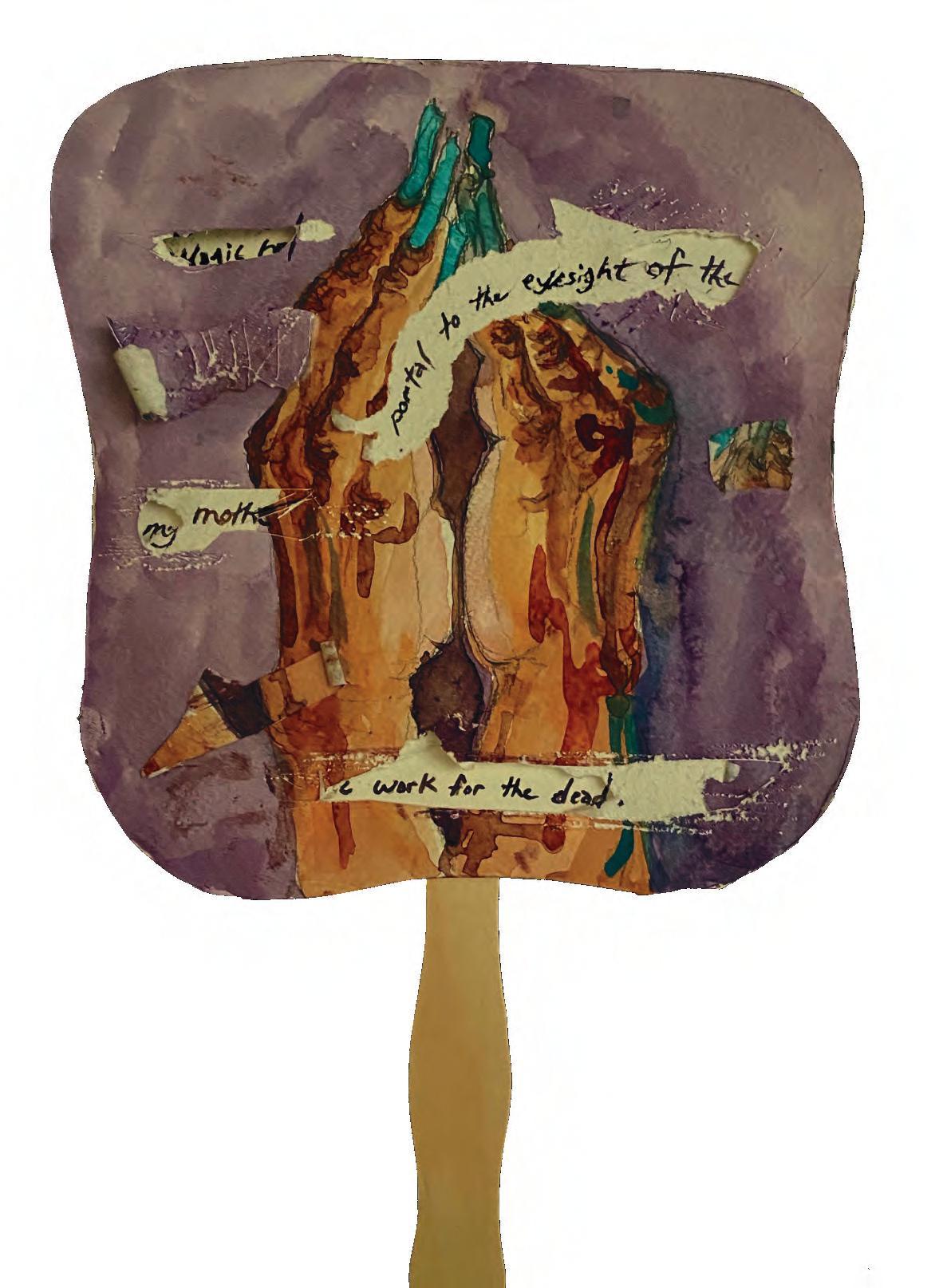
Our BlackBox Studio is designed to encourage writing-driven and transdisciplinary studio practice. Its modular smartspace layout features pinnable walls for exhibition and critique. The adjoining BookLab is equipped with tools and materials to aid the research and production of independent publications, artists’ books and related phenomena.
Nakiyah T.M. Jordan Prayer Portal, 2023The department nurtures the unique potential, process and production of each individual student. We draw freely from disciplines of fiction, nonfiction, poetry, playwriting, and comics—integrating new media, film, fashion, sculpture, art history and design. Students may customize each course of study with seminars and workshops on such topics as digital poetics, longform narrative, ekphrastic poetry, text art, virtual staging and more.
The program is led by a distinguished faculty of poets, authors, and artists. Interactions with students are modeled on the tradition of artist studio visits, with faculty offering in-depth insight and feedback on projects. Workshops, seminars, and electives foster
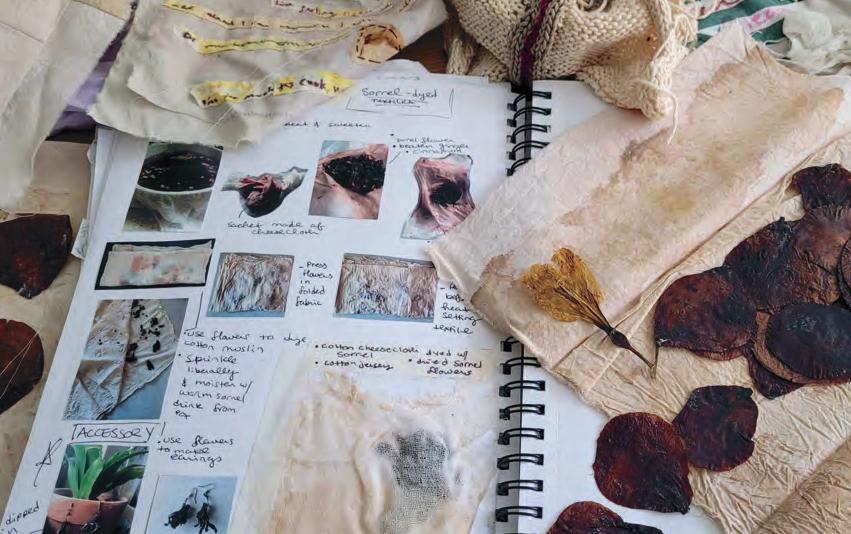 Samara Elán Huggins, Sorrel Soulangeana, 2023
Samara Elán Huggins, Sorrel Soulangeana, 2023
deeper engagement with interdisciplinary work to support student growth. The department regularly hosts visiting writers, artists, and designers, such as Christian Campbell, Cathy Park Hong, Juan Martinez, Maggie Nelson, Amitav Gosh, Claudia Rankine, Layli Long Soldier, and Mai Der Vang.
The department provides students with a variety of hands-on opportunities to prepare for a post-graduate career. Students often serve as editors and journalists for SAIC’s F Newsmagazine and other independent publications. They produce a reading series, podcasts and programming for the studentrun radio station, Free Radio SAIC. Students share their work and participate in peer critiques through a student-organized series.
SALLY ALATALO
JESSE BALL
MARK BOOTH
JANET DESAULNIERS
SARA LEVINE
RUTH MARGRAFF
JAMES MCMANUS
BETH NUGENT
Program alums go on to write and publish books and stage plays, perform, teach, and manage galleries, small presses, independent theater spaces, and salons, both nationally and internationally.
New Artist Society and Visionary scholarships are awarded to applicants of exceptional promise as part of the admissions process. Students may apply for teaching assistantships, or to tutor in our Writing Center and for small project grants. Three MFAW fellowships are awarded to graduating students each year.

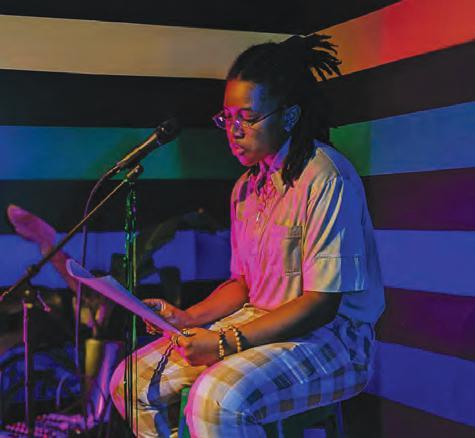
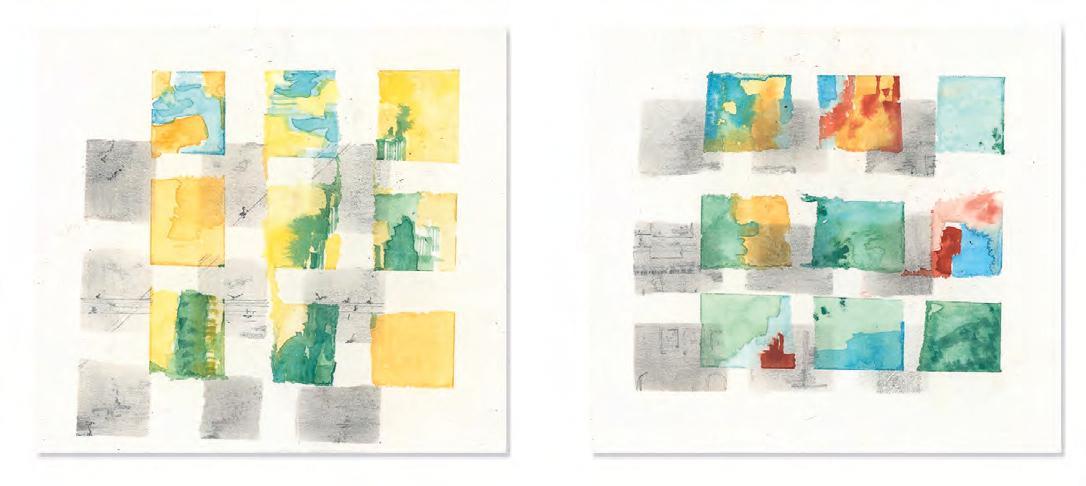 Caroline Preziosi Windows, 2022
Caroline Preziosi Windows, 2022
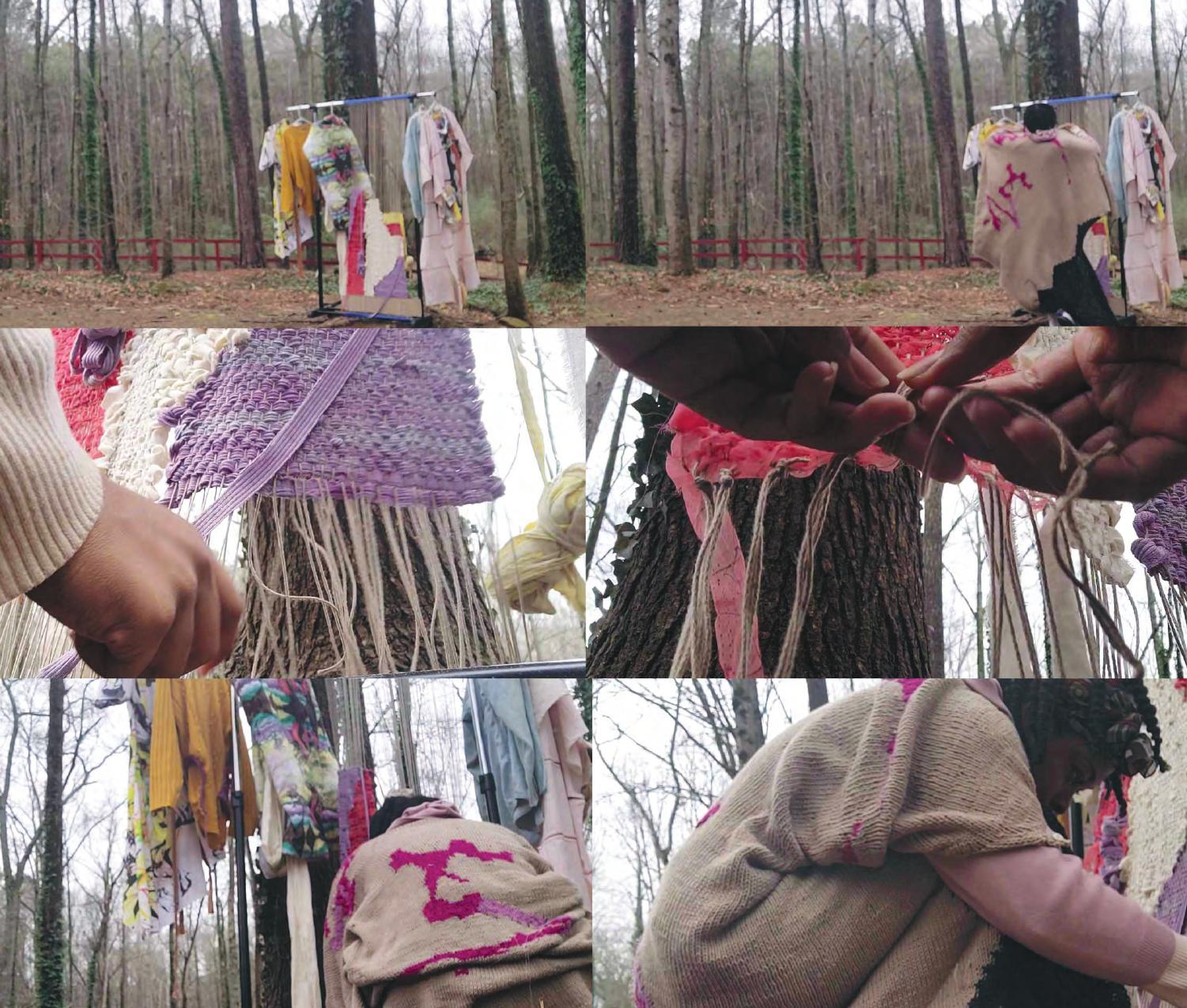
Our Post-Baccalaureate Certificate in Studio provides an ideal next step for those with an undergraduate degree seeking to advance their artistic development. Students benefit from SAIC’s diverse range of creative disciplines, creating a uniquely stimulating environment.
• Art & Technology / Sound Practices
• Ceramics
• Fiber & Material Studies
• Film, Video, New Media, & Animation
• Performance
• Printmedia
• Painting & Drawing
• Visual Communication Design
This two-semester program is designed for students from a range of academic disciplines who wish to elevate their creative practices by gaining technical proficiency and developing their artistic visions. Students produce strong bodies of work to position themselves for admission to a Master of Fine Arts (MFA) program or for artist residencies, grants, or juried exhibitions.
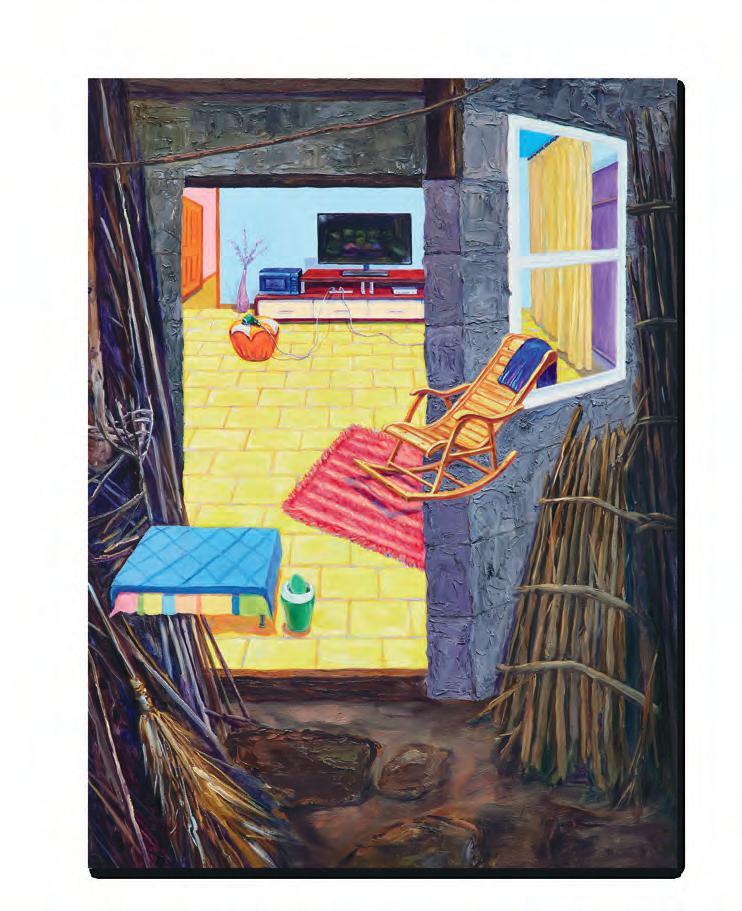
The curriculum combines the rigorous tutorial aspects of graduate school with the formal coursework of an advanced undergraduate program. In addition to their studio work, students expand their knowledge through art history classes, a one-semester seminar (or equivalent studio work), and an optional studio seminar. Our multidisciplinary approach enables students to work across multiple departments across SAIC.
The program is ideal for applicants pursuing a range of objectives. This includes emerging artists seeking studio experience to prepare a portfolio, those with a degree in art looking to pursue work in a different medium, or international students requiring a year of intensive studio work to acclimate to the U.S. educational system before beginning an MFA program.
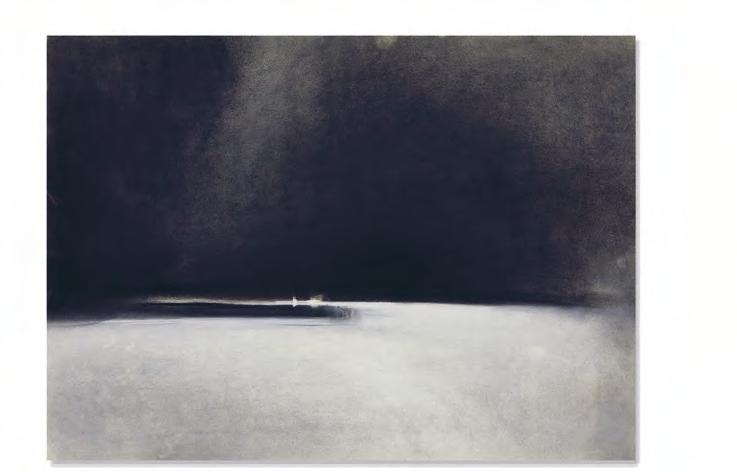
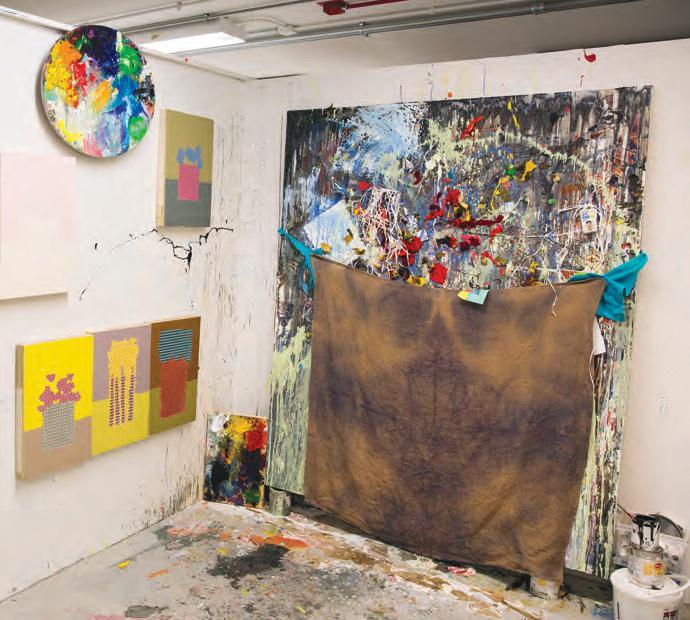
Completion of the Post-Baccalaureate Certificate in Studio does not guarantee admission to SAIC’s MFA in Studio program. Credits taken while a Post-Baccalaureate student cannot be counted toward an MFA in Studio degree at SAIC should you later be accepted into that program.
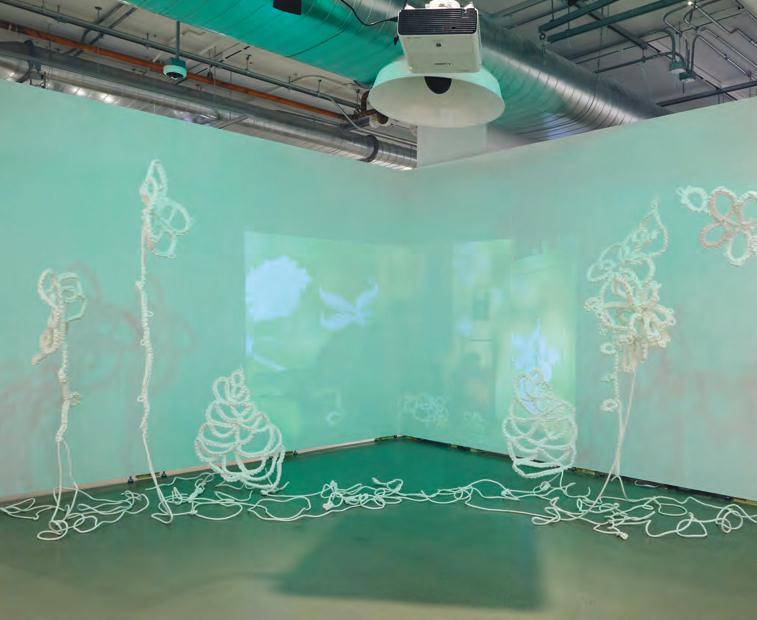 Shruti Dutta, Green(house) 2021
Sabrina Zhao, Looking Upon, 2021
Shruti Dutta, Green(house) 2021
Sabrina Zhao, Looking Upon, 2021
Born and raised in Jalisco, México, Salvador Jiménez-Flores focuses much of his artistic practice on exploring the politics of identity and the state of double consciousness, living concurrently in two different worlds. Melding elements of portraiture and magical realism, his sculptural ceramics are at once intensely personal and socially conscious.
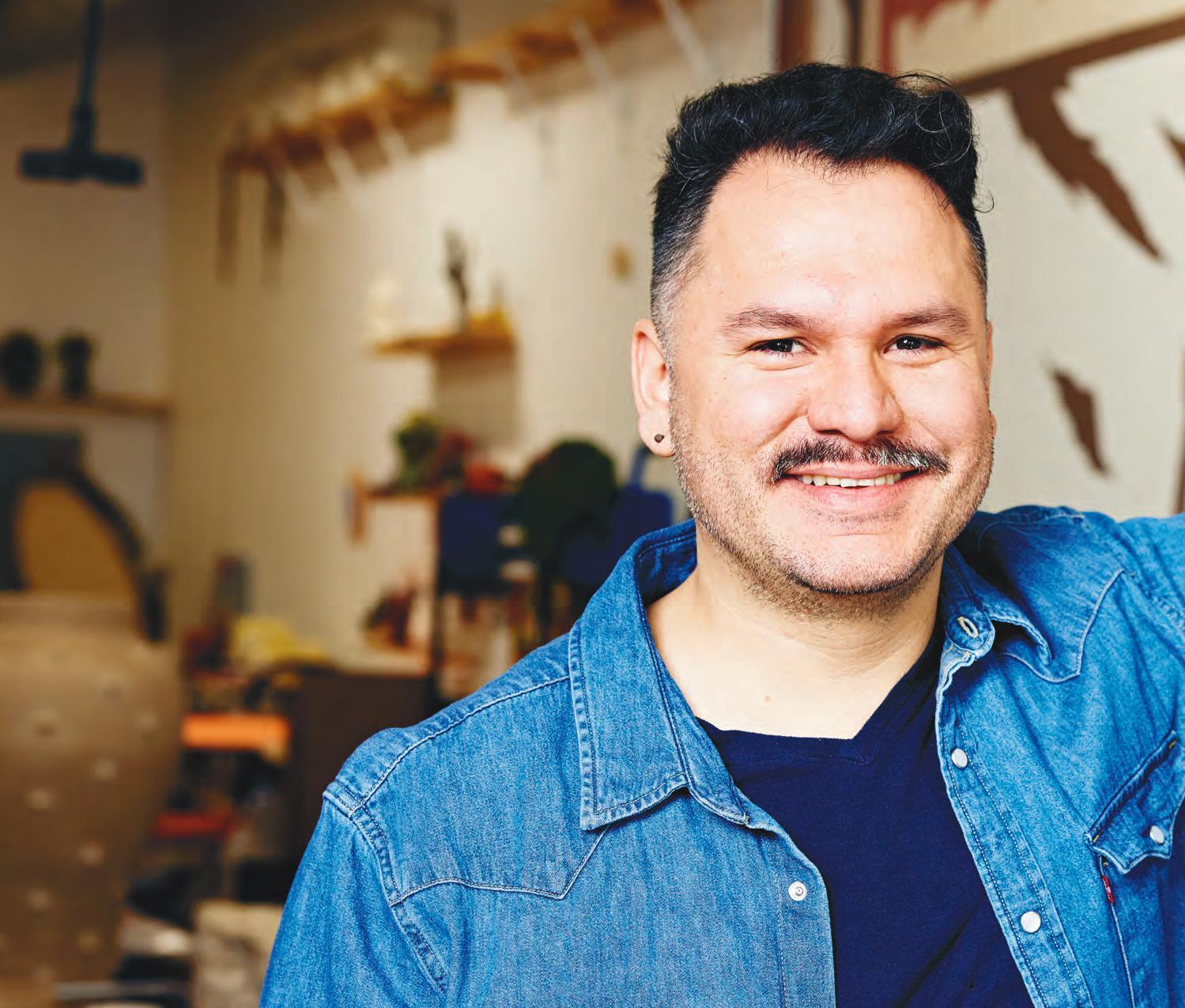
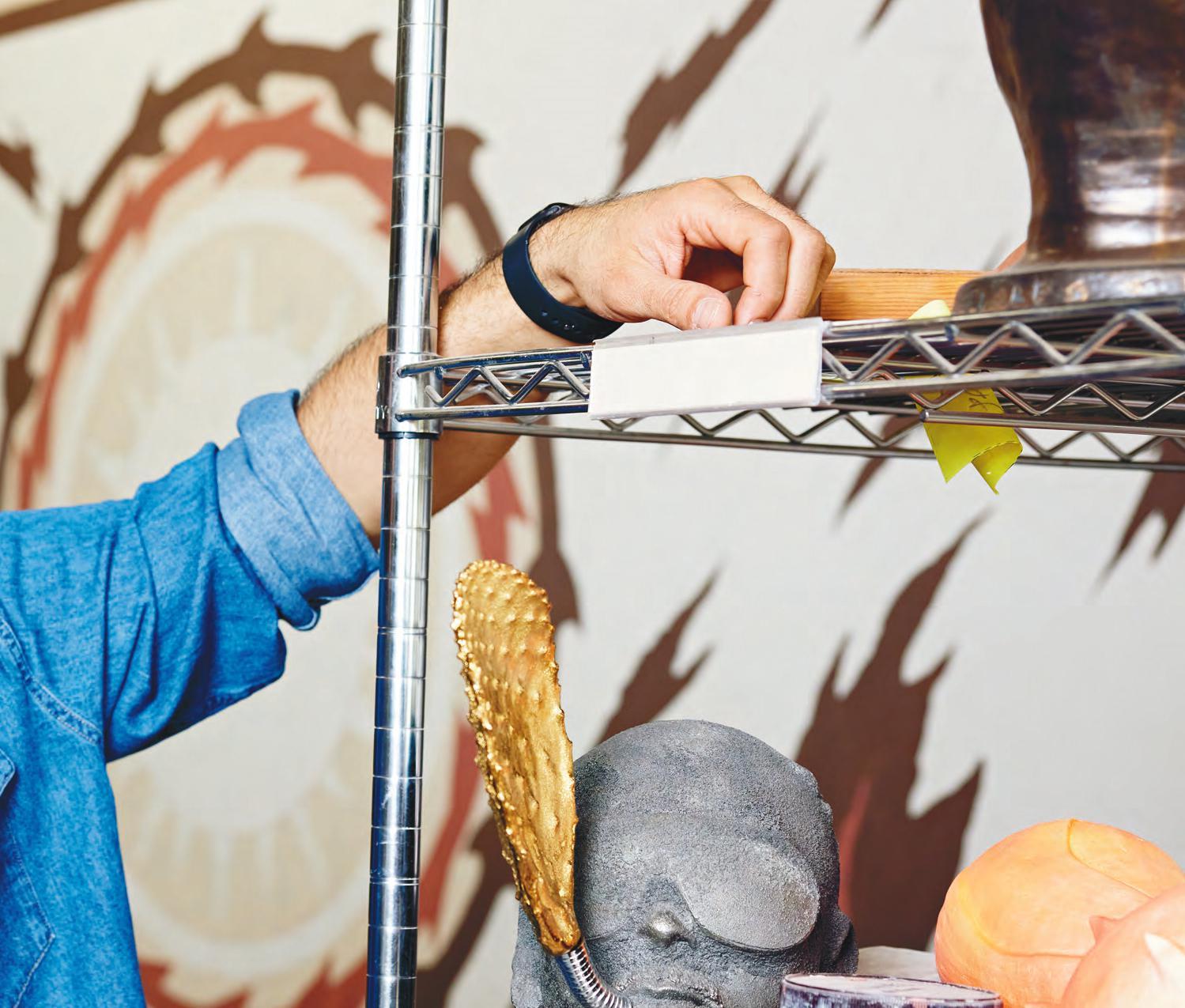
Think I Am is a series of ceramic portraits using a plaster mold of his face, altered in dramatic ways and presented as an installation, combined with hand-scripted text painted with clay slip, often with an ironic overtone. Three pieces from this series are part of the permanent collection of the Grand Rapids Art Museum.
“It was an opportunity to experiment with clay and different firing processes while exploring and playing with the different layers of my own identity. It almost reads as a timeline— though not a linear one—jumping across various assigned or chosen identities. I came to this country not speaking the language and I had a lot of insecurities. This work represents that journey, using art as a coping mechanism to overcome obstacles and as a tool of selfdiscovery, finding my voice in the world,” he explains.
Jiménez-Flores’s vision is on display beyond the Midwest. The Fire Next Time was created for an exhibition at the Museum of Art and Design (MAD) in New York entitled Funk You Too!, Humor and Irreverence in Ceramic Sculpture. The monumental piece reflects the
duality of identity, with two contrasting faces emerging, Janus-like, from a flaming column.
“This piece taps into the funk ceramics aesthetic influenced by the movement’s pioneers, including Robert Arneson,” he says, noting that the title and subject matter is inspired by the James Baldwin book of the same name. “I wanted to look at the subject of racial injustice, thinking about fire as a symbol of transformation. Within the flame are two portraits: one reflecting what you’re leaving behind and another that is more confident, having overcome obstacles. It’s playful but it’s examining an important subject.”
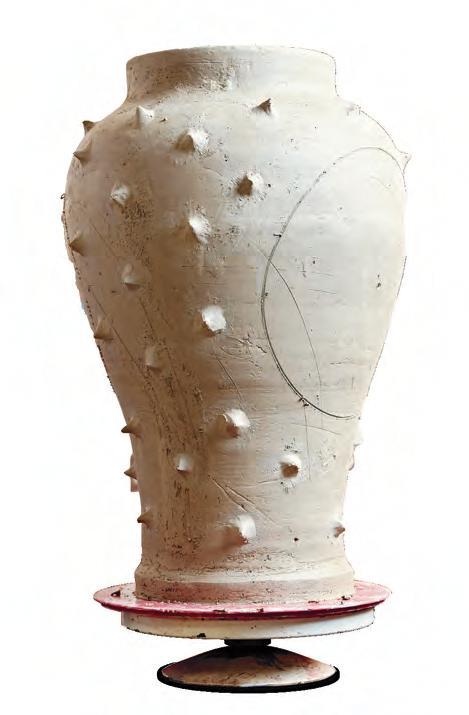
Outside the studio and classroom, JiménezFlores devotes time and energy to community engagement and making art more accessible.
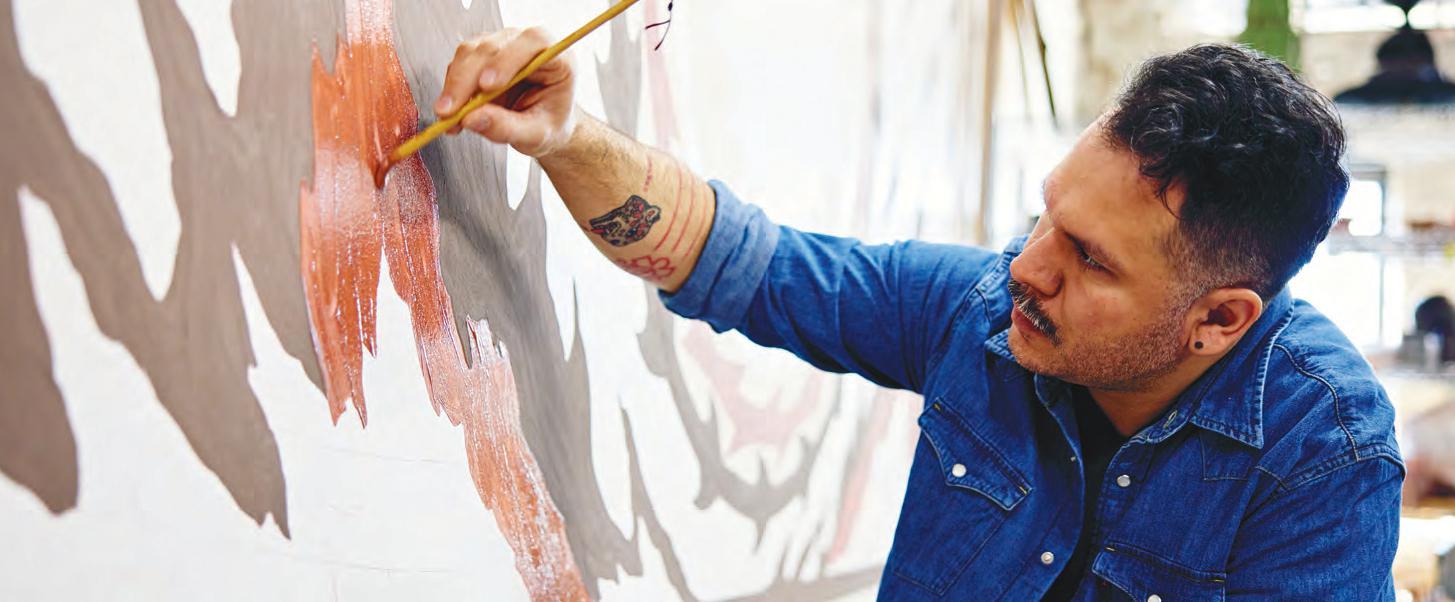
He is a founding member of The Color Network, an organization that promotes the advancement of people of color in the ceramic arts, and the Instituto Gráfico de Chicago, using art as a platform to inform and generate community discourse on social issues. He developed and led Arcilla Arte Cultura (Clay Craft Culture), a twoyear research project in collaboration with Threewalls, a Chicago-based contemporary arts space.
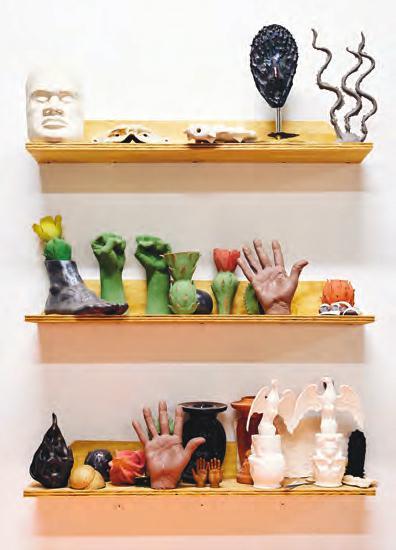
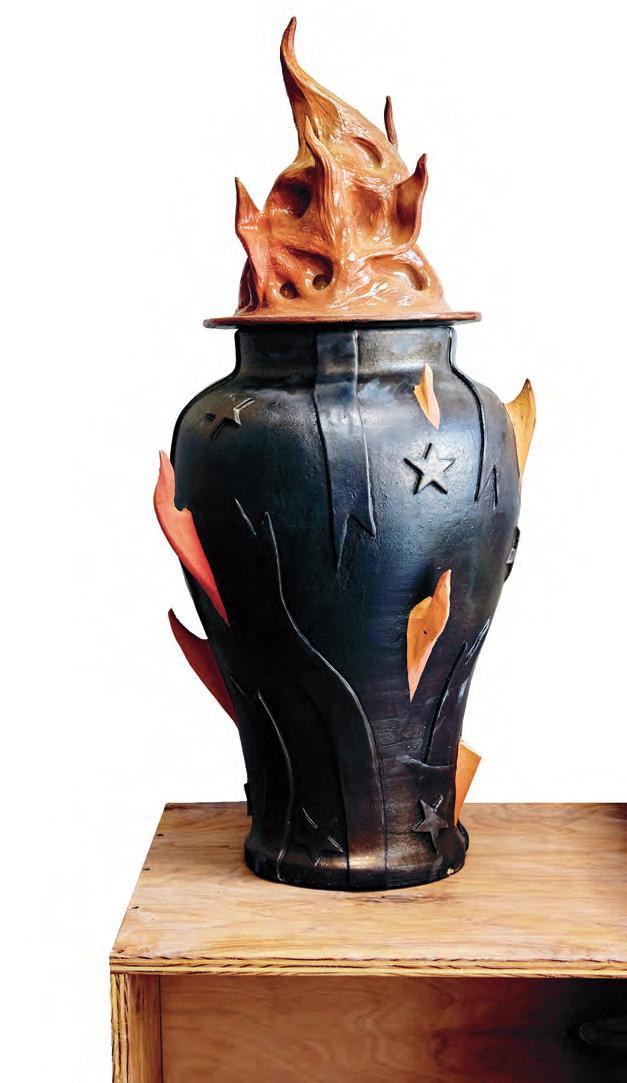
“The project brought clay into the local neighborhood, using it as a conduit for community building and healing,” he explains. “We delivered ceramics kits to families and conducted virtual workshops where people made objects, which we then fired in my studio and brought back to the families. It was really exciting to share ceramics with people in my neighborhood.”

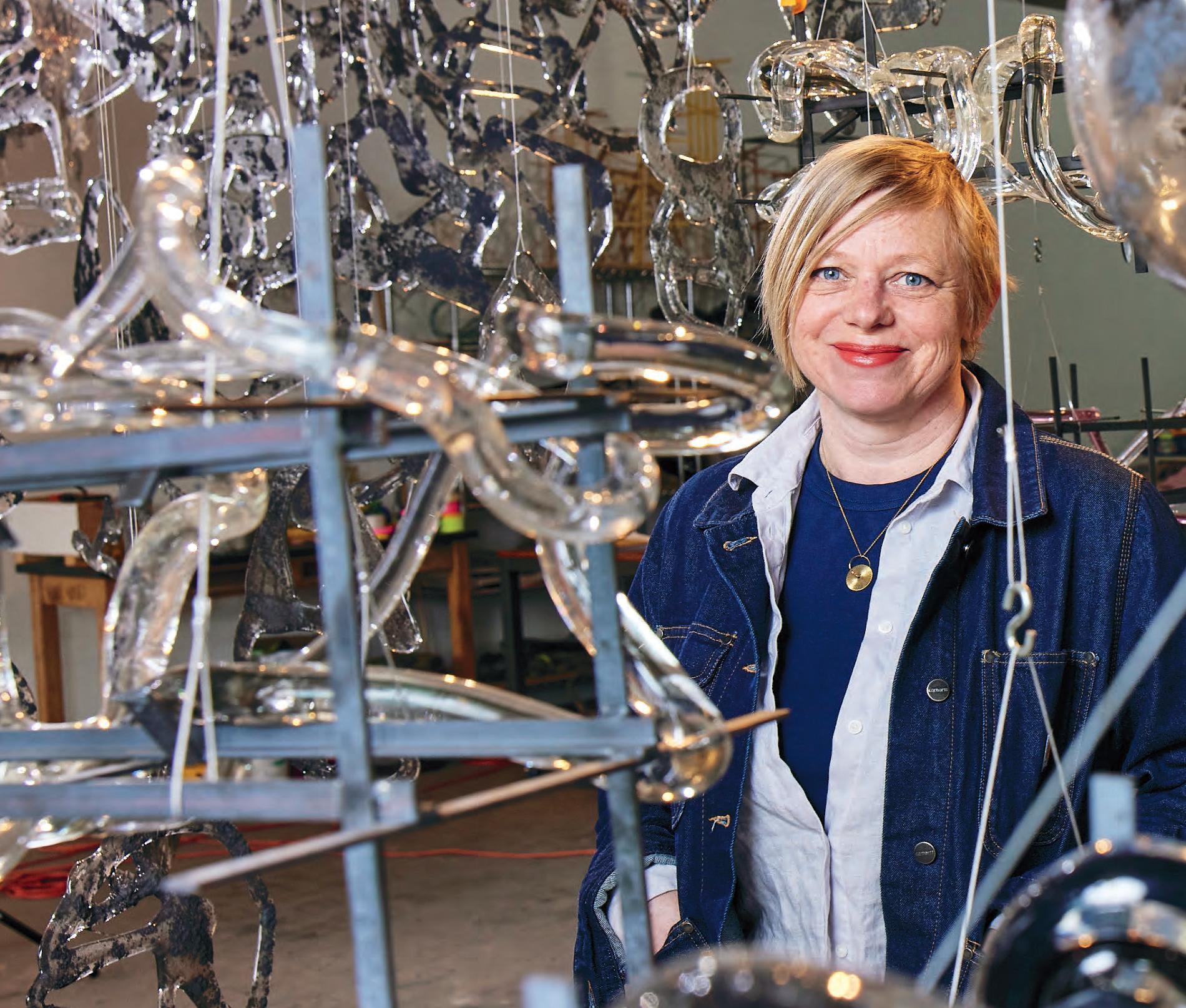
Pedestrians along the promenade in Chicago’s Millennium Park have navigated a series of angular, boulder-like structures encrusted with embedded glass and copper. Suspended above are dozens of candy-colored, irregular, blown glass orbs. The installation, When we call the Earth…, is inspired by a quote from a 19th-century astronomer. But Christine Tarkowski says her installation is not a meditation on astronomy.
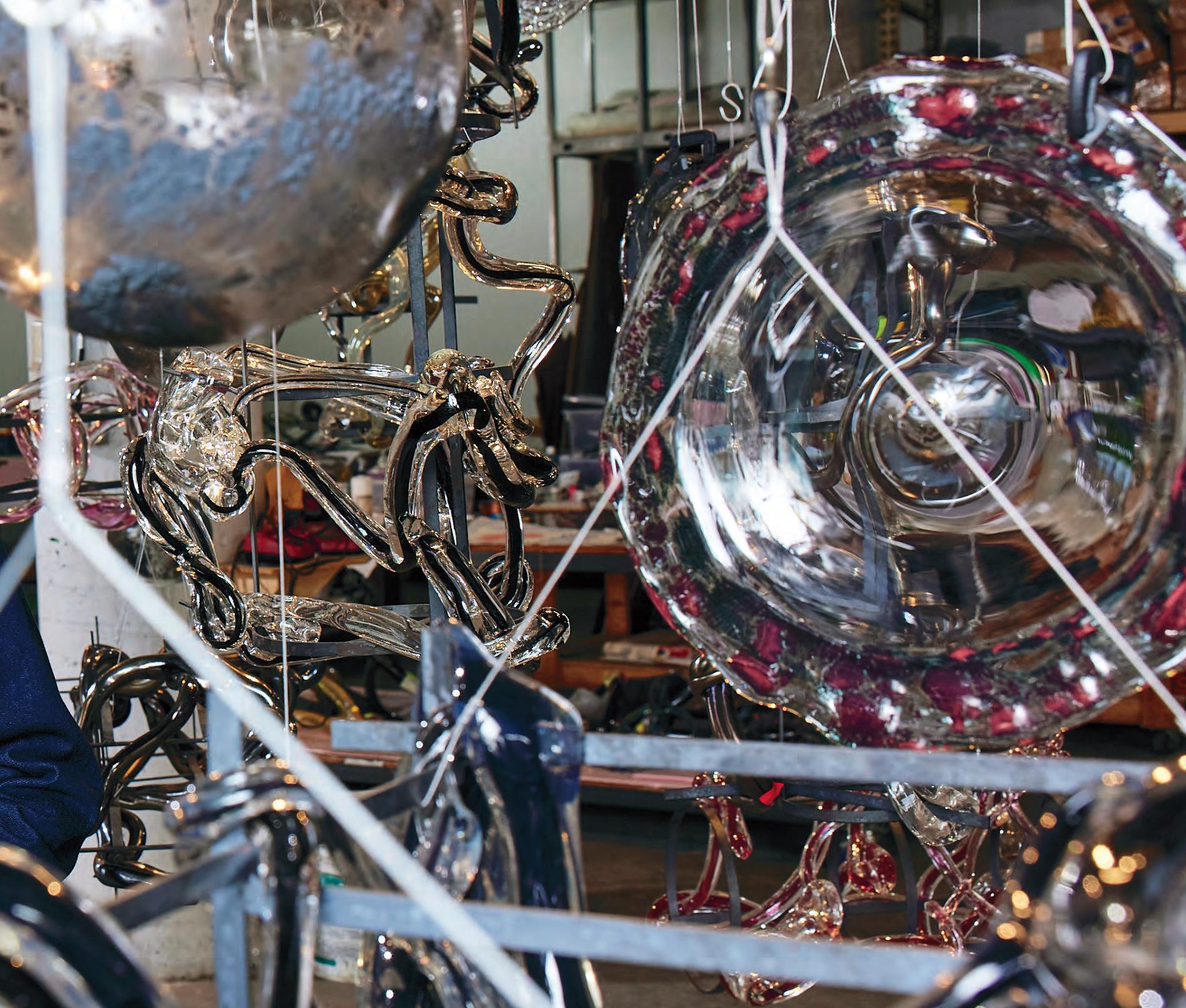
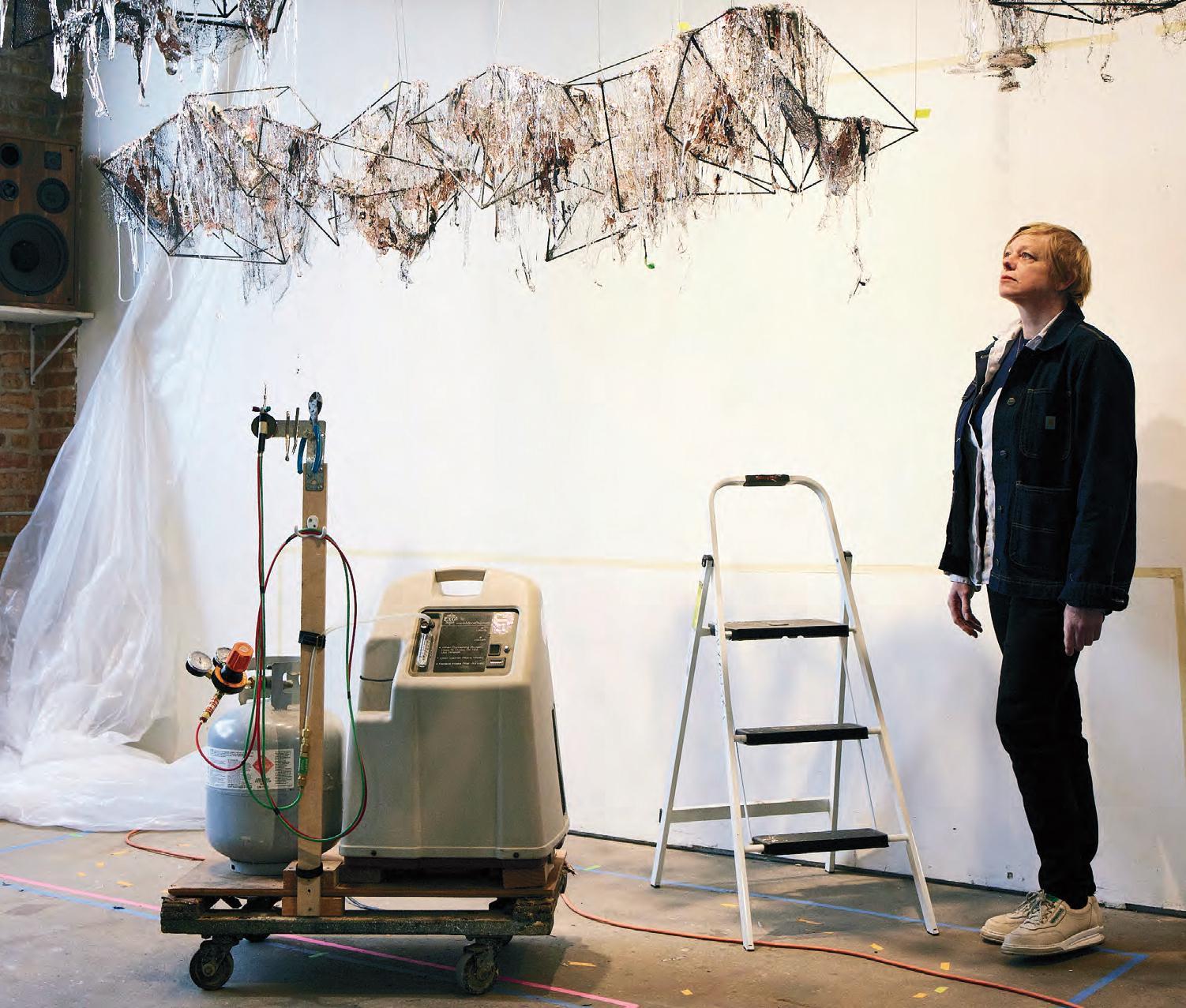
“It sets the stage for questioning where we are and what’s beyond us. It points to the possibility that we’re not the center of the universe or the most important thing in the world. It’s about systems that you might call into question,” Tarkowski says, noting that the commissioned work was created with the surrounding trees, buildings, and the park’s built environment very much in mind.
This questioning of systems is also evident in Tarkowski’s work Molten Drawing, which was displayed in the Milwaukee Symphony Orchestra as part of Sculpture Milwaukee. The series was produced by pouring hot glass and molten copper over steel armatures.
“The project brings together two different possibilities of systems: one rigid, geometric format and another that is less controllable and emergent. It’s a dimensional drawing but it’s failing all the time.” The piece reflects Tarkowski’s interest in entropic systems that fall apart within a closed container.
The nature of the materials themselves strongly influence Tarkowski’s work. “I do a lot of things with materials and see what behaviors emerge from them. I enjoy working with molten glass and viscous materials that you can’t completely predict but you can guide and articulate within your own artistic boundaries.”
Currently, Tarkowski is working on a project that involves natural materials procured at her neighborhood bodega—from avocado and eucalyptus leaves to woods used for medicinal purposes. “These things have a tactile quality. I respond to the materials.”
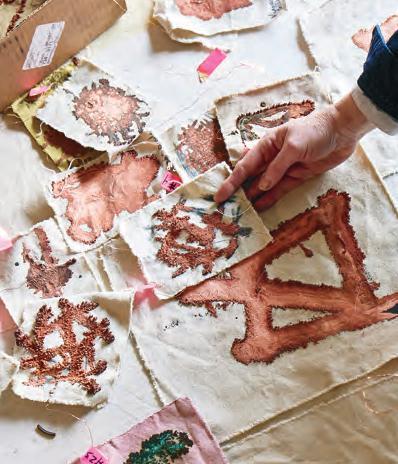
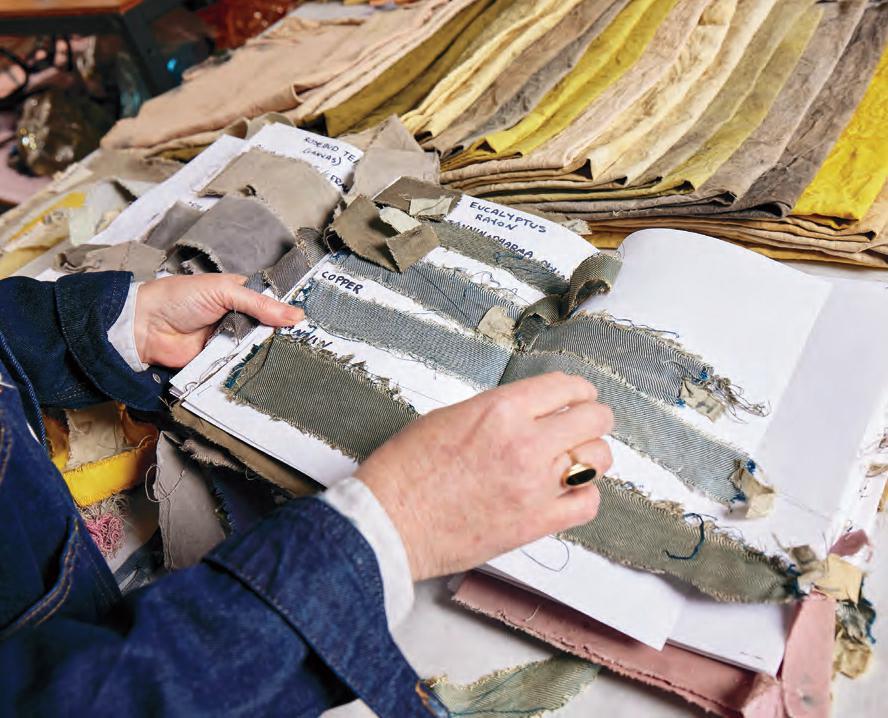
She is simultaneously experimenting with dying cloth. “I want native color that is familiar and derived from things that we have a deep but ineffable experience with. I’m trying to understand the genesis of color, not how it is received.” Tarkowski notes that she is in the early stages of research. “I don’t know yet what it’s going to look like.”
When she isn’t working in her studio or the classroom, you may find Tarkowski out on Lake Michigan. “I’m taking sailing lessons because I want to know about forces, like wind, currents, physics—invisible forces I can harness and control.”
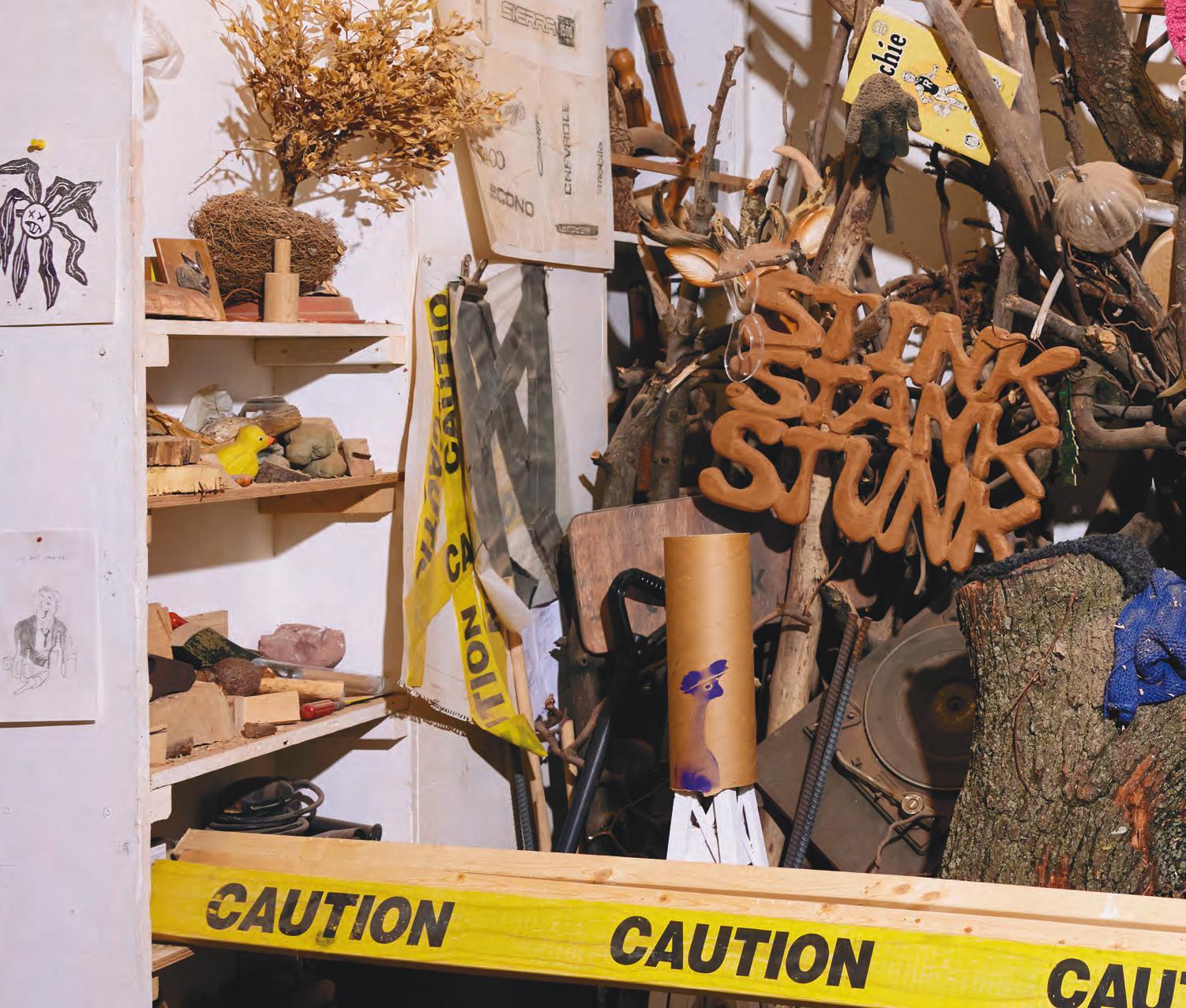
On sabbatical during the pandemic, Oli Watt happened upon a collection of roughly carved duck hunting decoys while visiting the Roger Brown House in New Buffalo, Michigan. This chance discovery sent Watt on a multi-month project that ultimately became 101 Decoys, a series of sculptures exploring variations on the decoy motif. Made with a vast array of materials—from hand-carved wooden elements to found objects, household items, and trash— the series was presented in a local Chicago gallery and immortalized in a printed book.
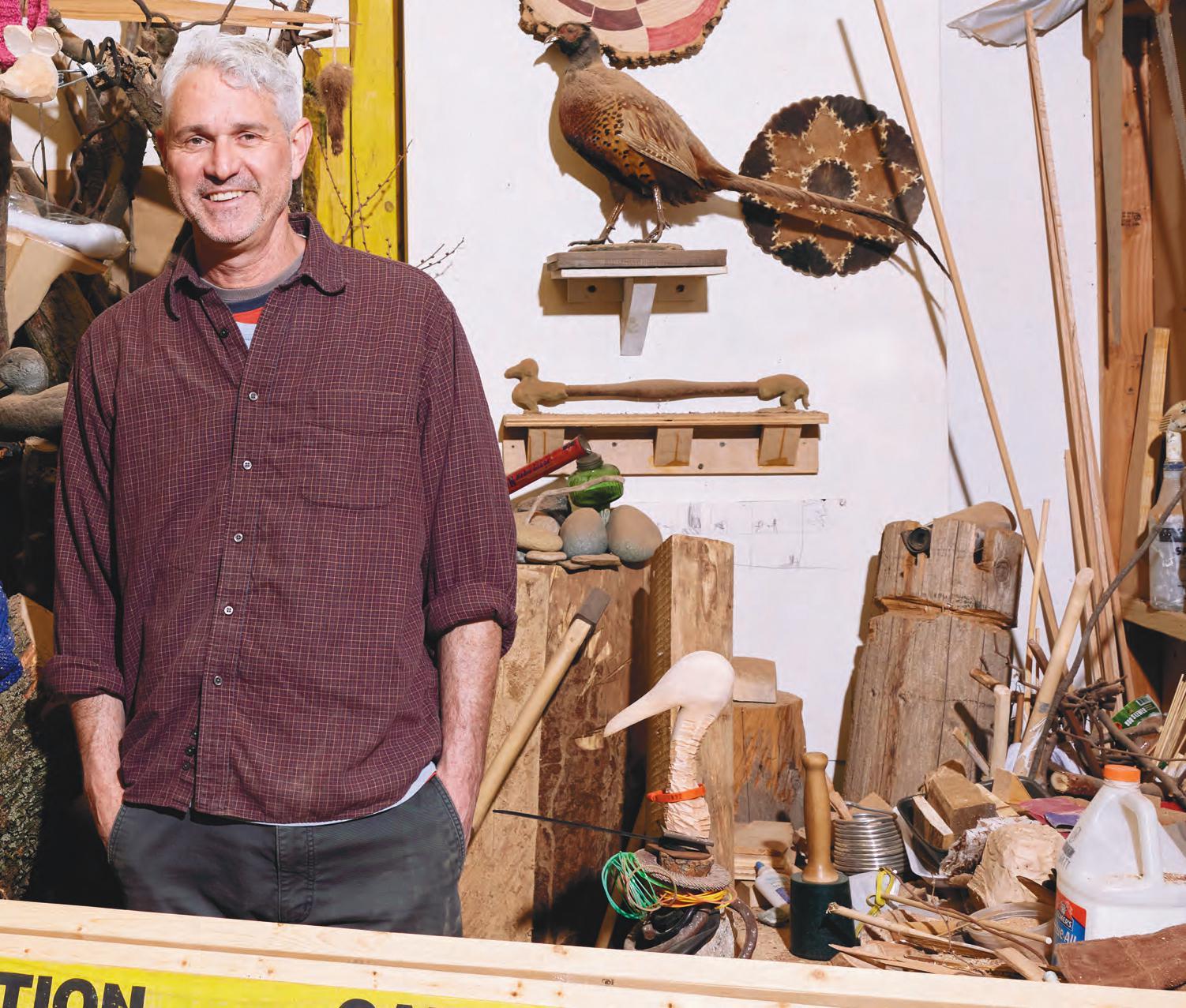
What was it about decoys that captured your interest?
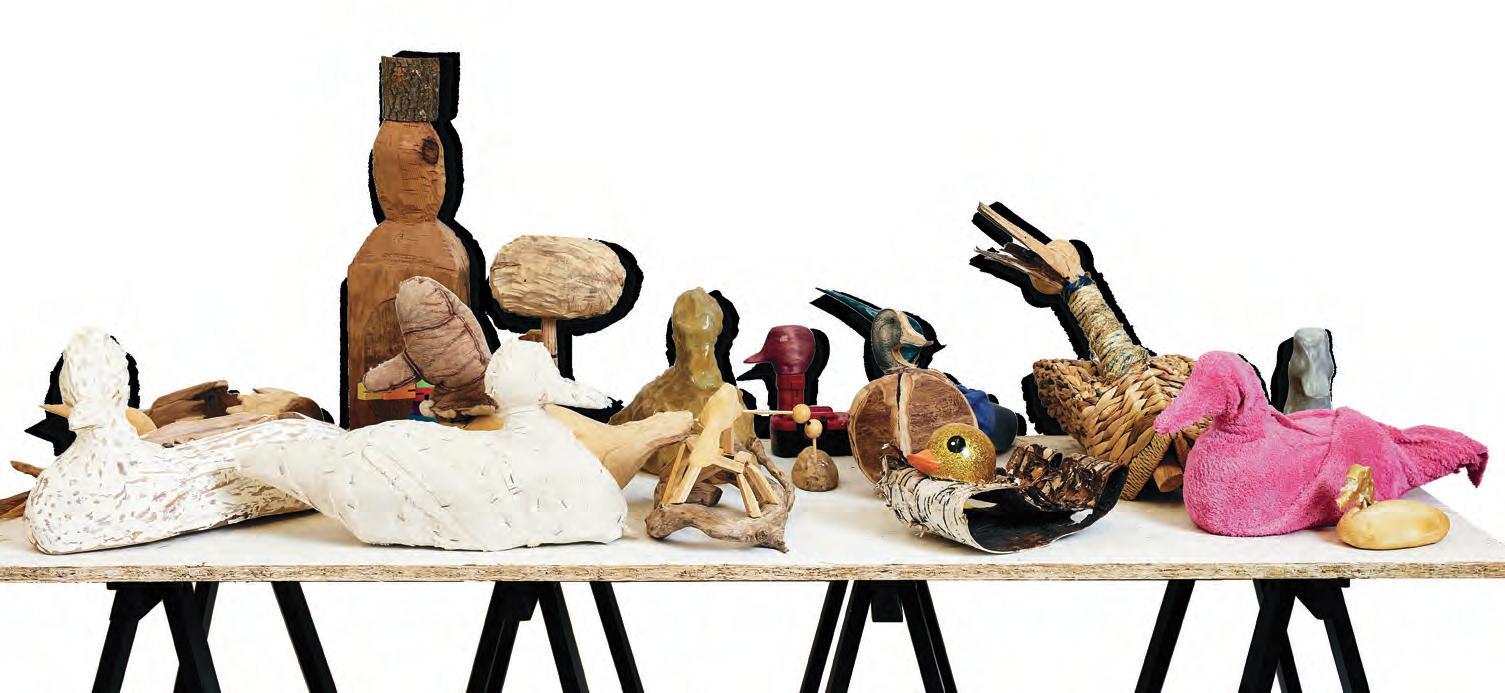
I’m interested in the idea of repetition and permutations of a form. 101 Decoys was an exercise in iteration, working sideways from a starting point. A lot of my work addresses issues of humor. Though the work isn’t necessarily humorous, it often incorporates tropes and templates of things traditionally considered funny.
Is there a connection between that work and printmaking?
It’s the idea of taking something that exists as multiples and working with a variation on a theme. Printmakers traditionally reproduce something repetitively, making them all exactly the same. For me, that’s not as interesting as playing with the idea of repetition but changing it through the process. I’m really into the idea of undermining what repetition means.
What other projects have you been actively working on?
For the past few years, I’ve been working on an edition of large wood block relief prints. The project is called The Rebellious Jukebox and
the images are all taken from pop culture references, influenced by the music I listen to or cartoons and films I watch, translating images and text through wood carved away and inked up. All the prints are black and white.
How do you view the juxtaposition between a traditional printing technique and pop culture?
I think a lot about how wood cut printing has been used historically to spread information, to influence people, incite revolution, or consolidate power. Today, it’s usually relegated to the fine arts. But it’s really fun for me to watch a movie and translate that through this very antiquated form. I recently did a print of Norman Bates’s house in Psycho and it’s this strange, eerie image that we recognize from the film, but it takes on different qualities when it’s carved away and inked up on a piece of paper.
Where else do you point your lens?
I gravitate toward things that exist as multiples outside the fine art realm. I often use signage or found documents and undermine either how they look or what they are trying to tell us. I like to grab things that exist in a strictly fictional space and turn them into things that bring them into the real world.


Can visual art be examined critically in the same way that a poem or a novel is interpreted? How do race and ethnicity shape our visual culture? These intriguing questions inform Romi Crawford’s approach to Visual and Critical Studies. Grounded in research, her work resides at the intersection of visual art, social history, and American culture.
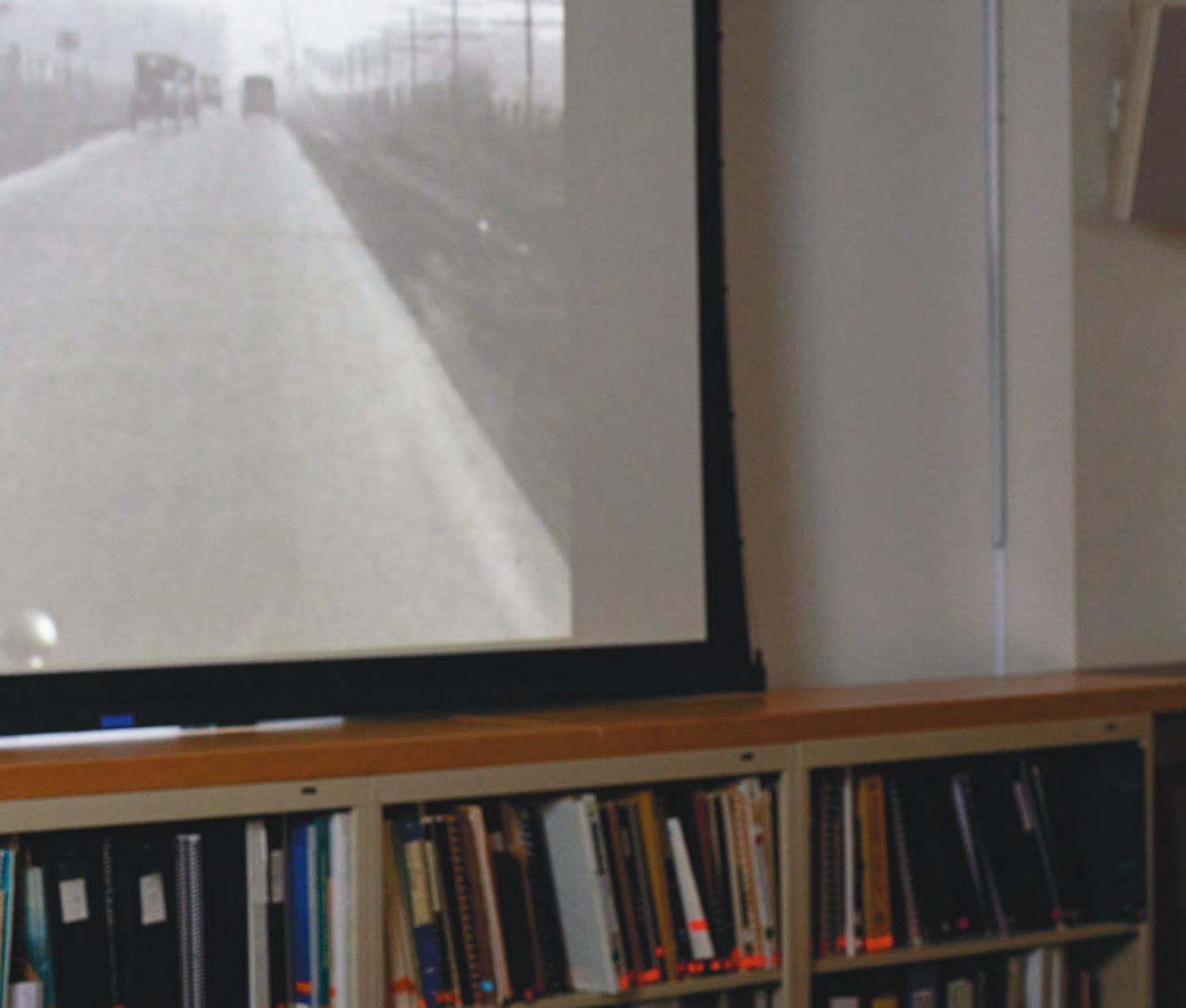

Is there a project that is particularly representative of your work and approach?
I’m working on a project that I’m passionate about called the Black Arts Movement School Modality. It evolved from research on a coauthored book about the Wall of Respect mural in Chicago. Painted in the 1960s by the Visual Arts Workshop of the Organization of Black American Culture, the mural is a representation of the Black Arts Movement. From that research, and the realization that pedagogical projects were often couched within BAM artists’ practices, I developed an intergenerational pedagogical format that brings members of this cohort—people in their 80s and 90s—into the classroom to teach an emerging generation about the Black Arts Movement. To date, there have been regional iterations focusing on Chicago and the East Coast, and I’m planning a third iteration focused on the West Coast.
As I look at a work of art, I’m often thinking about the precursor—the social histories and agencies that allowed it to happen. I’m equally interested in comparative interpretations of race and ethnicity. I’ve always cared about how race and ethnicity are constructed in the American context, and also embedded in a variety of art forms. In addition, I love to interrogate and challenge notions of form, and find ways to let my research sit in forms that are unique and that are compelled from the research.
What themes were you exploring with Citing Black Geographies, an exhibition you curated that brought together works by more than a dozen artists?
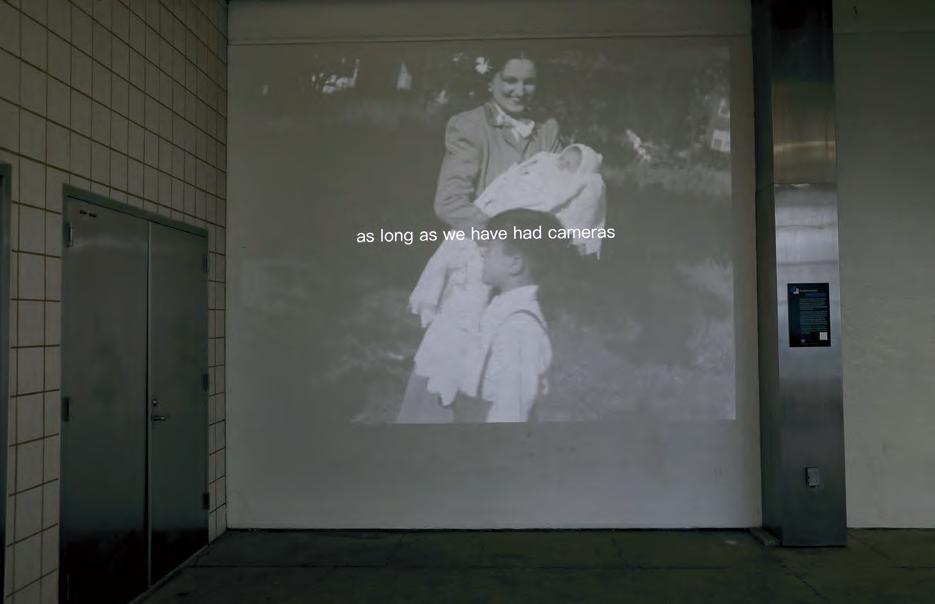
That also was inspired by the Wall of Respect, which established a specific site—a “loaded zone”—for varied forms of Black creativity. This sparked my interest in other periodic instances of vital and significant zones and territories that relate to Black experience. Through my research and writing, I had a list of artists whose projects and practices dig into this idea of Black Space. I wanted it to be a provocation, so that people might have room to locate their own examples of it. I also wanted people to think about how the idea translates to other races, ethnicities, and cultural examples.
I’m working on a short film project with director John O’Hagan called We Love, curating a selection of images from the Chicago Film Archive’s home movie collection. In researching these, we recognized there are similar gestures that show up in home movies from the 1920s to the present across different ethnicities— picking up a child, blowing out birthday candles, playing on a swing, riding a bike. They display a kind of universal humanity, which has become an idea that I want to work with this coming year. In these times, it might be productive to recognize on occasion our common humanity.
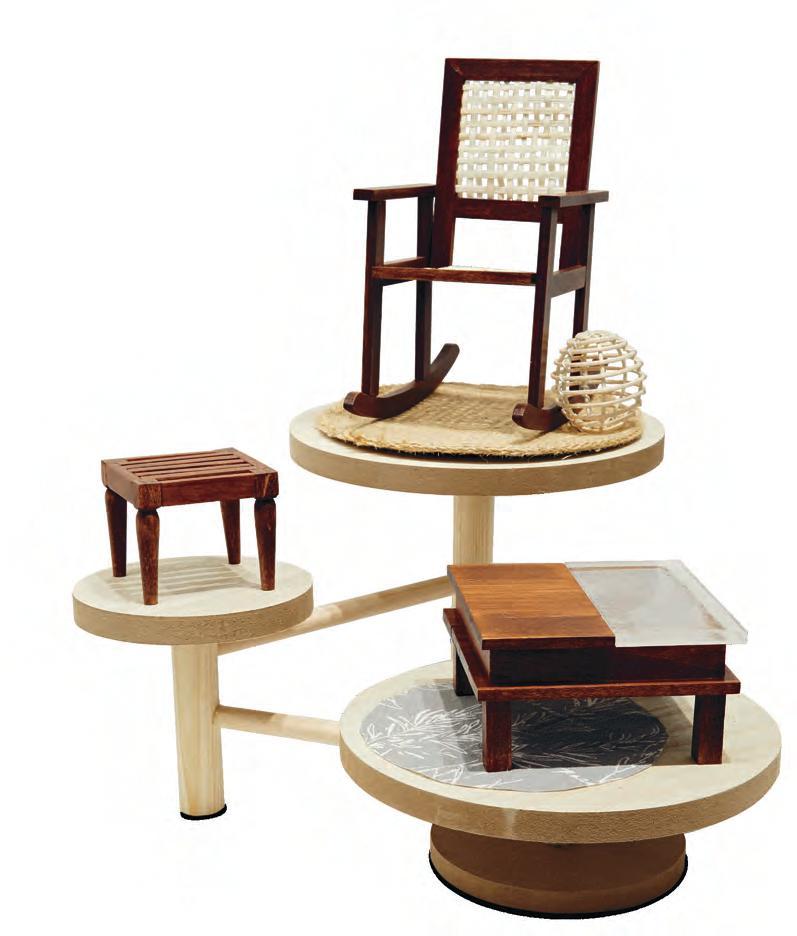
Rigorous and visionary, SAIC’s graduate design programs foster a future-oriented ethos and a focus on addressing a wide range of social, cultural, historical, economic, and technological issues.
SAIC faculty and students are at the forefront of design, rethinking how design impacts peoples’ lives—from architecture to designed objects to historic preservation—all against the backdrop of the diverse and dynamic built environment of Chicago.
 Vasisht Rajani
Stella Shen, Therapeutic Device (Technology 4), Stabber
Vasisht Rajani
Stella Shen, Therapeutic Device (Technology 4), Stabber
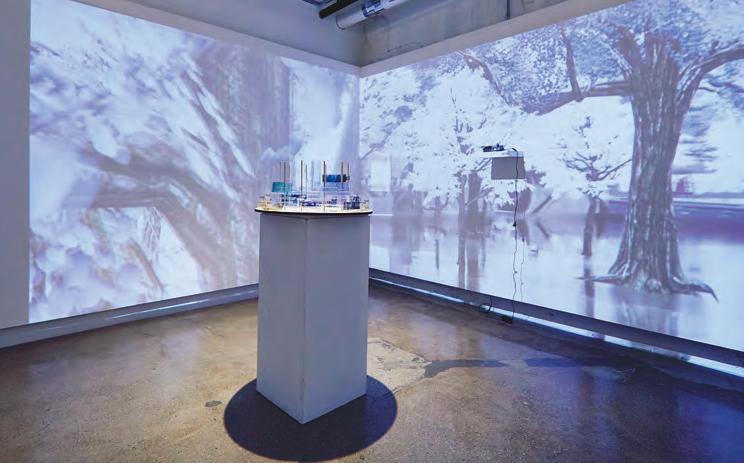
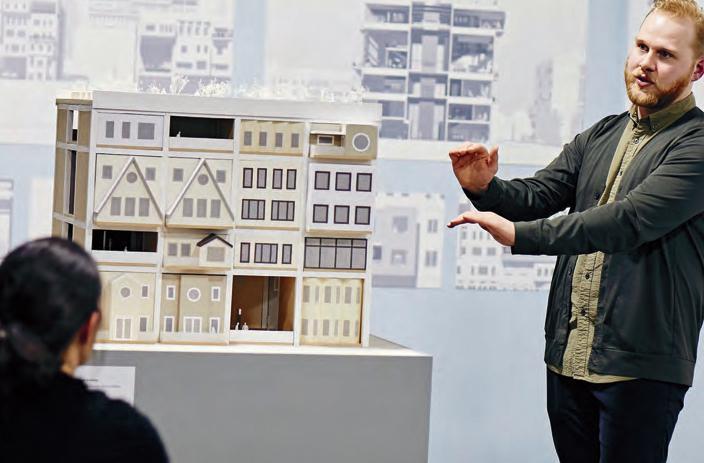

saic.edu/arch
Our Master of Architecture (MArch) program offers students an understanding of history, theory, and technique within the context of a highly ranked interdisciplinary institution. Students master the skills and critical thinking necessary to build a professional practice focused on advancing ideas and inventions in the field of architecture. We offer a National Architectural Accrediting Board (NAAB) accredited Master of Architecture degree with the options of a three-year track or a two-year accelerated track.
 Sarah Aziz
Sarah Aziz
Coursework combines project-based design studios organized around a contemporary intellectual focus, technical courses in building structures and systems, professional practice and architectural technology courses, and electives in architectural history and theory. Students develop their practice by taking courses across SAIC. In their final year, they complete a comprehensive studio and pursue a selfdirected design thesis under the supervision of department faculty.
Through independent studios and joint ventures, students gain the ability to translate ideas into spatial environments and artifacts. External partnerships provide professional expertise with collaborations in and around Chicago, as well as recent participation in the Venice Architecture Biennale and the Chicago Architecture Biennial. The department appoints the Mitchell Visiting Professor and hosts the Mitchell Lecture Series that brings nationally and internationally acclaimed practitioners to campus.
SAIC offers a professional degree accredited by the National Architectural Accrediting Board (NAAB) with two tracks: a three-year track beginning with a foundation of required skills and grounding in the history and theories specific to architecture, engineering, and design which is suited to students from a wide range of educational and professional backgrounds; and a two-year accelerated track for students with pre-professional bachelor’s degrees in architectural studies, architectural technology, or interior design. Both tracks recognize and underscore the significance of architectural design where form, structure, and enclosure are considered in proximity to materials, objects, human needs, and experience.
Students also have an opportunity to concurrently pursue a Certificate in Historic Preservation through coursework in SAIC’s Historic Preservation Program. With Chicago’s historic landmarks as their workshop, students work alongside faculty to gain experience with the practice, theory, and science of preservation. This certificate can be earned concurrently with the MArch degree, and is best suited for our three-year track graduate students.
ELLEN GRIMES
LINDA KEANE
T. CAMILLE MARTIN-THOMSEN
CARL RAY MILLER
DOUGLAS PANCOAST
HENNIE REYNDERS
JONATHAN SOLOMON
TRISTAN D’ESTREE STERK
ANDERS NEREIM
BEN NICHOLSON
SAIC’s Master of Architecture degree is STEM-designated by the National Science Foundation (NSF). This allows international students to qualify for a 24-month extension of Optional Practical Training (OPT) work opportunities.
Students have access to a fully equipped printing and prototyping lab, including:
• 120w laser cutters
• 3D printers, including machines that use PLA, ASA, and acrylic-like resin as building material
• 3D scanners, including Artec Eva, Handyscan, and NextEngine
• Flatbed and large format scanners
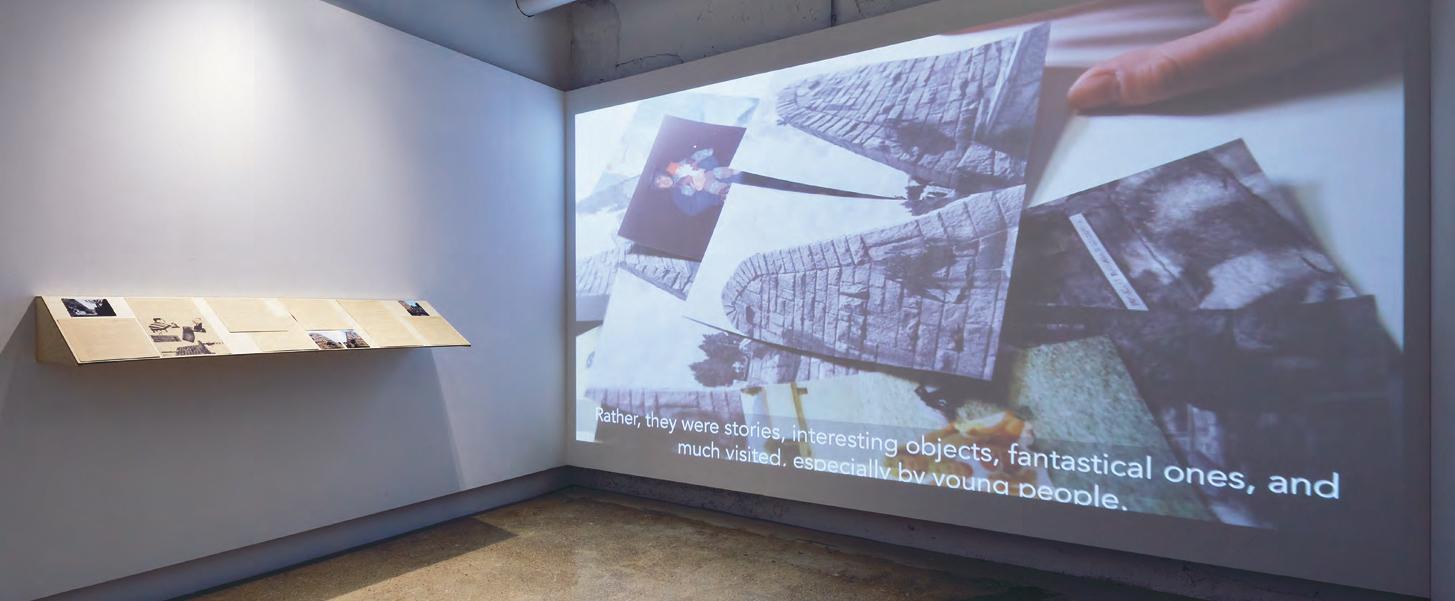
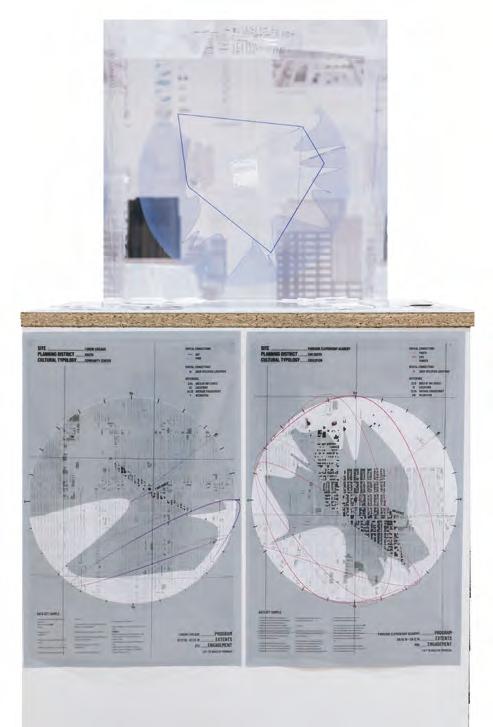
 Jovana Crnomarkovic Exchanges, 2021
Heidi Metcalf, 2019
Jovana Crnomarkovic Exchanges, 2021
Heidi Metcalf, 2019
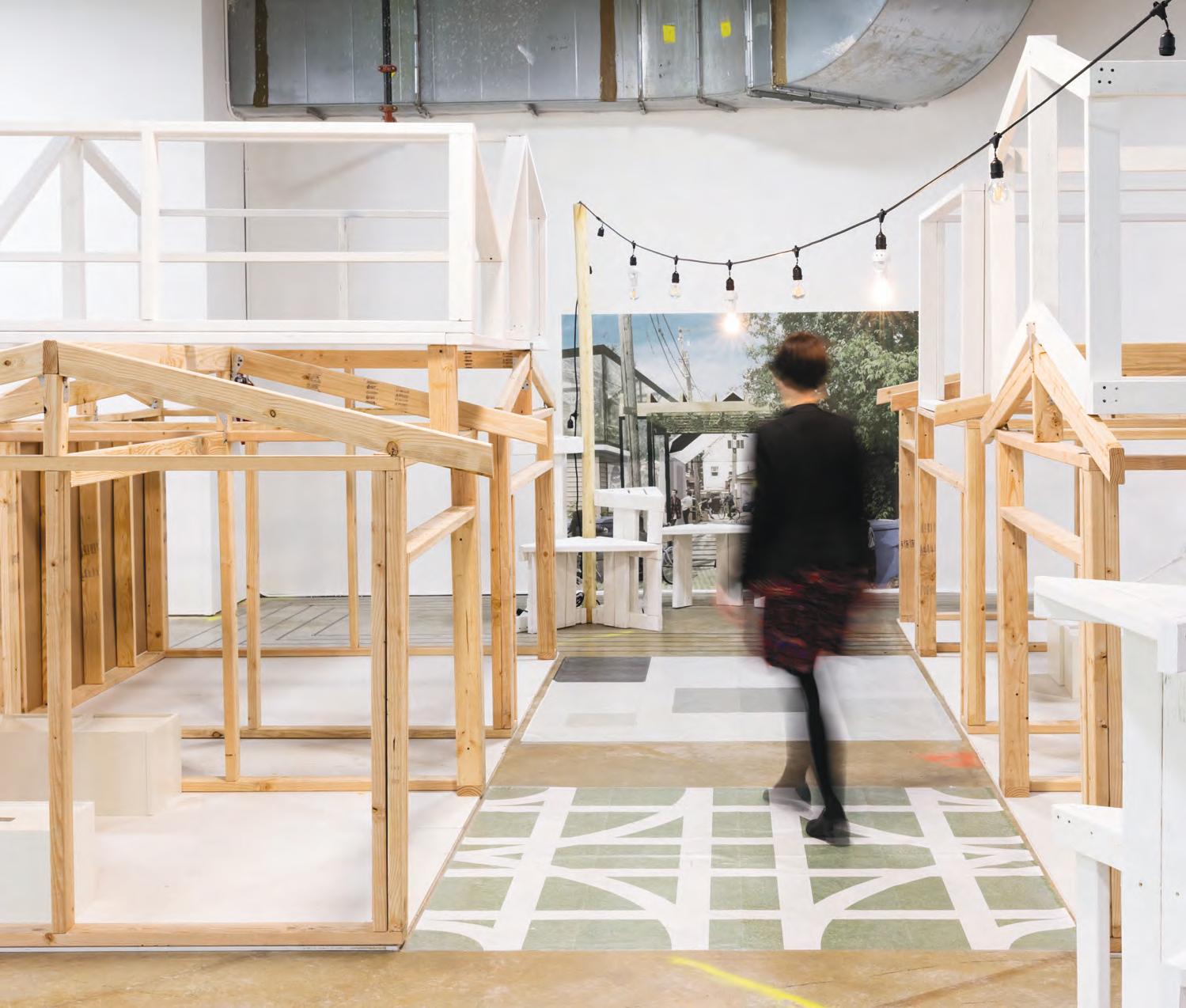
saic.edu/inarch
Reimagine the concept of interior space and our relationships to it. Our NAAB-accredited Master of Architecture degree with a track in Interior Architecture gives students the expertise needed for an architectural practice while acquiring specific sensibilities to the growing field of interior architecture.
Students have access to a fully equipped printing and prototyping lab, including:
• 120w laser cutters
• 3D printers, including machines that use PLA, ASA, and acrylic-like resin as building material
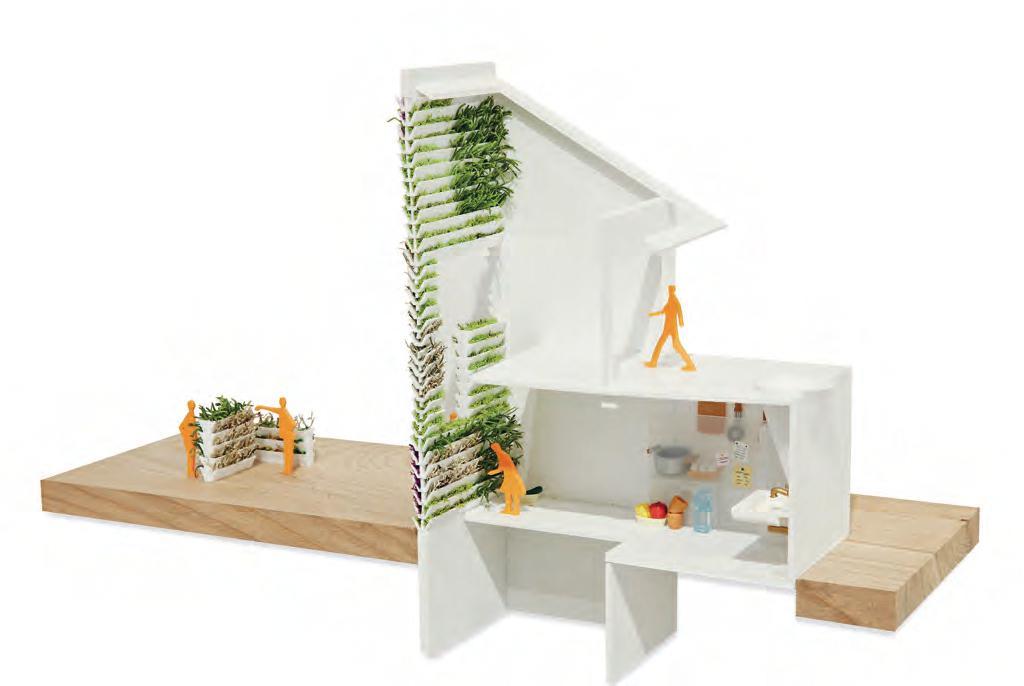
• 3D scanners, including Artec Eva, Handyscan, and NextEngine
• Flatbed and large format scanners
The program provides hands-on inquiry, experimentation, and exploration, allowing students to cultivate the skills and critical knowledge necessary for advancing new spatial ideas and inventions in interior architecture. The curriculum is centered on a series of project-based studios supported by courses in building structures, building technology, professional practice, and electives in architectural history and theory. In their final year, students complete a rigorous design studio and pursue a self-directed design thesis under faculty supervision.
Interior Architecture is a growing professional field where architects have an increasing impact. We teach through hands-on inquiry, experimentation, and exploration to develop the skills and critical knowledge necessary for the development of new spatial ideas and invention. Students are encouraged to expand their practice by taking courses in other departments across SAIC.
SAIC offers a professional degree accredited by the National Architectural Accrediting Board (NAAB) with two tracks: a threeyear track designed to provide the skills and sensibilities of contemporary interior architects grounded in theoretical and historical contexts suited to students with a broad range of educational and professional experience; and a two-year track for students with pre-professional bachelor’s degrees in architectural studies, architectural technology, or interior design. Both tracks recognize and underscore the significance of architectural design where form, structure,
and enclosure are considered in proximity to materials, objects, human needs, and experience.
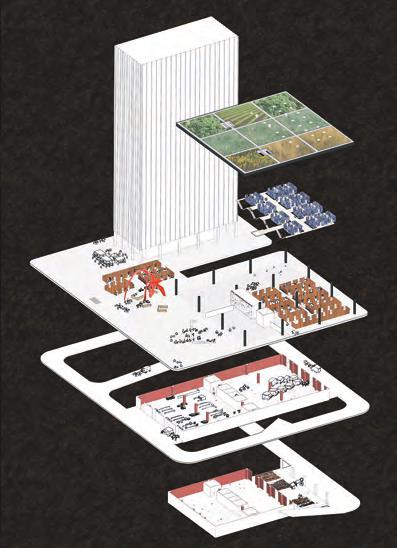
Students also have an opportunity to concurrently pursue a Certificate in Historic Preservation through coursework in SAIC’s Historic Preservation Program. Working alongside faculty members at Chicago’s historic structures, students gain expertise and experience in the practice, theory, and science of preservation.
Our professional, NAAB-accredited Master of Architecture degree is STEM Designated by the National Science Foundation (NSF). This enables international students to qualify for the 24-month extension of Optional Practical Training (OPT) work opportunities.
ELLEN GRIMES
T. CAMILLE MARTIN-THOMSEN
CARL RAY MILLER
DOUGLAS PANCOAST
HENNIE REYNDERS
JONATHAN SOLOMON
TRISTAN D’ESTREE STERK
This dedicated fabrication workshop has a full range of hand tools and industrial wood- and metal-working machines.
• Material sales center with sheet goods, hardwoods, plastics, foam, etc.
• 2 CNC routers (4’× 8’ Highspeed)
• Large bed vacuum thermo-former (2’ × 4’)
• Power tools, including a jointer, planer, mortiser, drill press, lathe, table saws, band saws, and sanders
• Assorted sewing machines
• Mold-making facility with plaster mixing, dust collection, fume extractor, and vacuum chamber
• Large, high-flow paint and finishing hood
• On-site materials library
• Dedicated workspace in large, open-plan communal studios

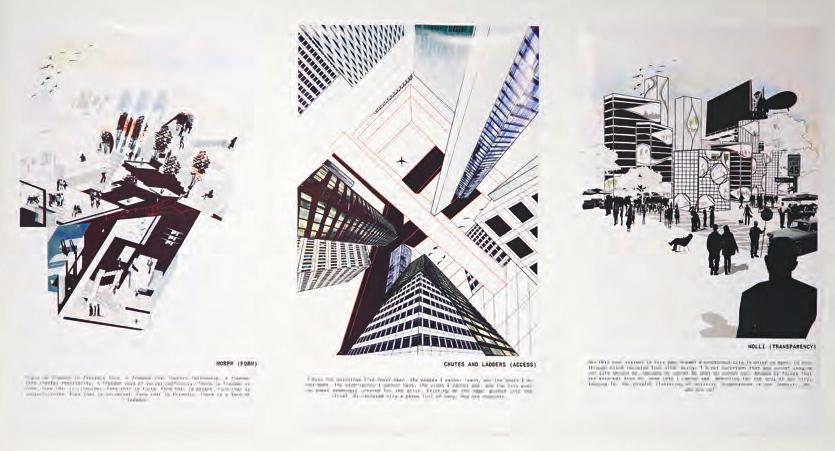 Lina Alsharif
Lina Alsharif

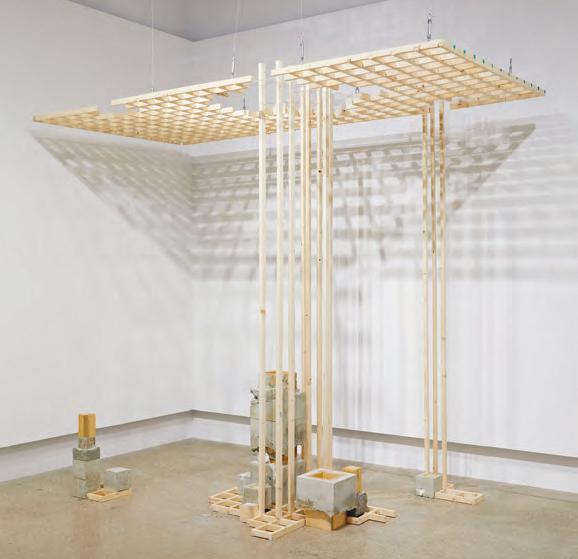
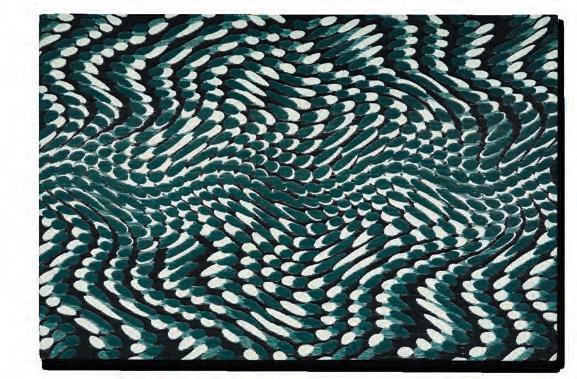 Yesha A. Mody, Towards a Phenomenological Design, 2021
Dor Maimoun, From Infinity to Beyond 2022
Yiwen Chu
Yesha A. Mody, Towards a Phenomenological Design, 2021
Dor Maimoun, From Infinity to Beyond 2022
Yiwen Chu

saic.edu/desob
The Master of Design in Designed Objects program encourages practitioners to challenge the boundaries of design and explore new territory. Students gain the critical skills to translate novel ideas into meaningful objects, systems, environments, and experiences.
Students have access to a fully equipped printing and prototyping lab, including:
• 120w laser cutters
• 3D printers, including machines that use PLA, ASA, and acrylic-like resin as building material
• 3D scanners, including Artec Eva, Handyscan, and NextEngine
• Flatbed and large format scanners
Jackson Schorer, MER weighted blanket (photo by Jonathan Allen)The carefully sequenced, course-based curriculum immerses students in both critical and technical skills, challenging them to invent, experiment and reimagine as they develop their individual voices as designers. By providing open platforms for rigorous thinking and making, the program presents students with a creative and intellectual context in which the materiality, agency, utility, and poetic potential of objects are studied and explored. A series of core studios, supported by seminars and technical labs, conclude with the public presentation of a year-long thesis project.
Throughout the program, the focus is on reimagining the objects and systems that populate our daily lives. The program fosters an expansive understanding of an object, borrowing across domestic, industrial, experience, systems and futures design. Students are encouraged to pursue classes in other disciplines across SAIC, as well as Designed Objects external partnerships.
External partnerships and course offerings like Whatnot Studio, SAIC Design & Homan Square, and Emerging Worlds Studio—yearlong thematic courses in which students design, prototype and bring relevant work for public exhibition to venues such as SxSW, The International Contemporary Furniture Fair (ICFF), and public engagements in Chicago—provide extensive professional experience. Program alums have attained success in a diverse range of careers, including industrial and furniture design, user experience design, design futures, design research and strategy, design education, emerging technologies, and independent design practice.
Students may opt to pursue the Master of Fine Arts in Studio, Designed Objects. This program is intended for students with previous experience and a strong portfolio in three-dimensional design. The tutorial structure of the MFA in Designed Objects allows students to pursue independently directed projects while working one-toone with faculty advisors.
GIONATA GATTO ERIC HOTCHKISS TIM PARSONS JIM TERMEERThis dedicated fabrication workshop has a full range of hand tools and industrial wood- and metal-working machines.
• Material sales center with sheet goods, hardwoods, plastics, foam, etc.
• 2 CNC routers (4’× 8’ Highspeed)
• Vacuum thermo-former
• Power tools, including a jointer, planer, mortiser, drill press, lathe, table saws, band saws, and sanders
• Tools for soft construction, including sewing machines, plastic casting, and interactive electronics

• Mold-making facility with dust collection, fume extractor, and vacuum chamber
• Large, high-flow paint and finishing hood
• On-site materials library
• Dedicated workspace in large, open-plan communal studios
Satori Ishihara, Fumi-yume (photo by Jonathan Allen)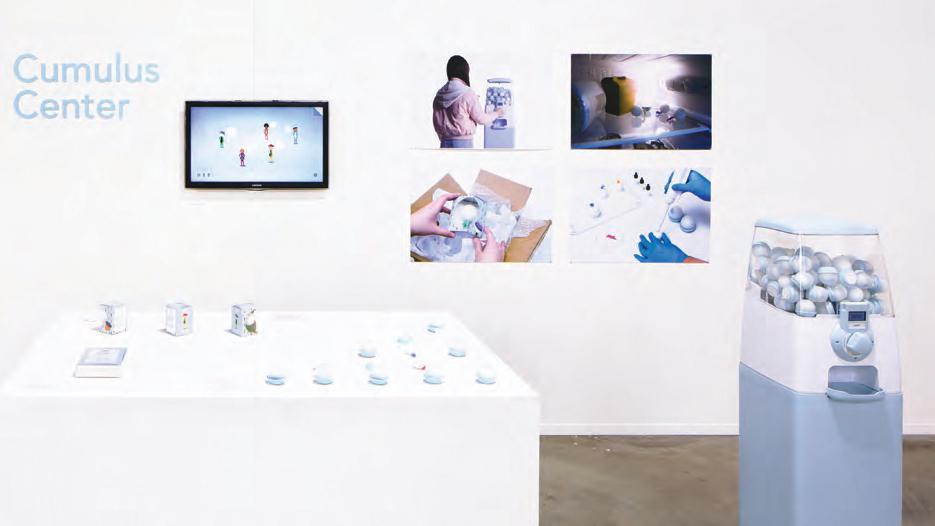
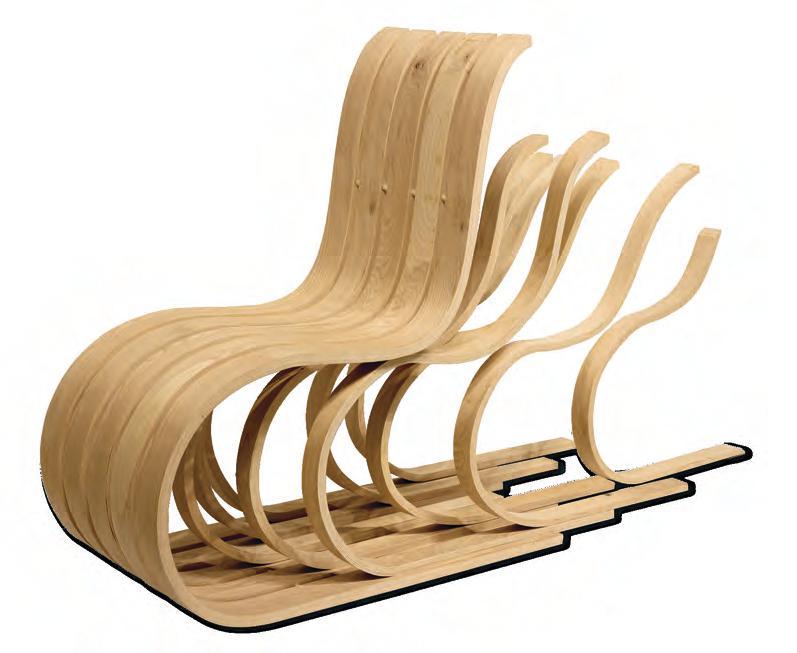
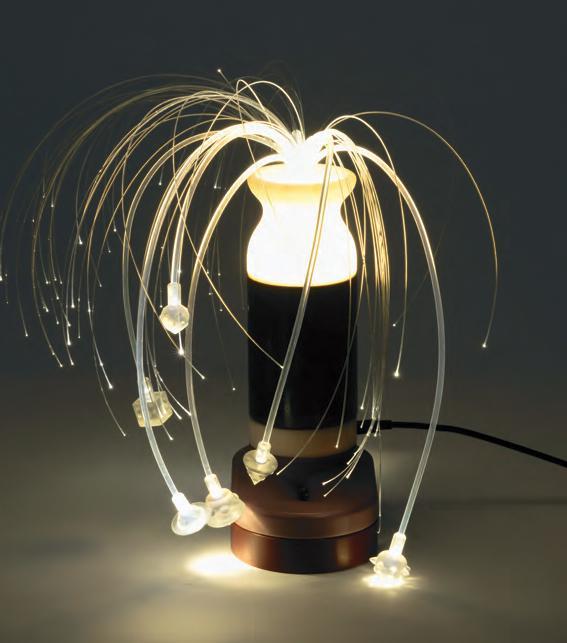
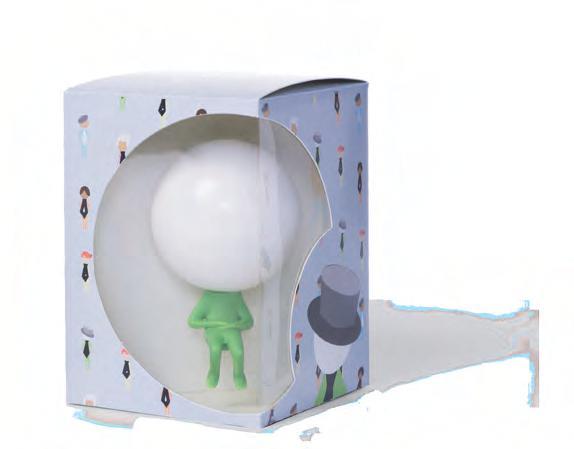 Haoran Yu, whatwater
(photo by Jonathan Allen)
Miiko Shan He
Haoran Yu, whatwater
(photo by Jonathan Allen)
Miiko Shan He
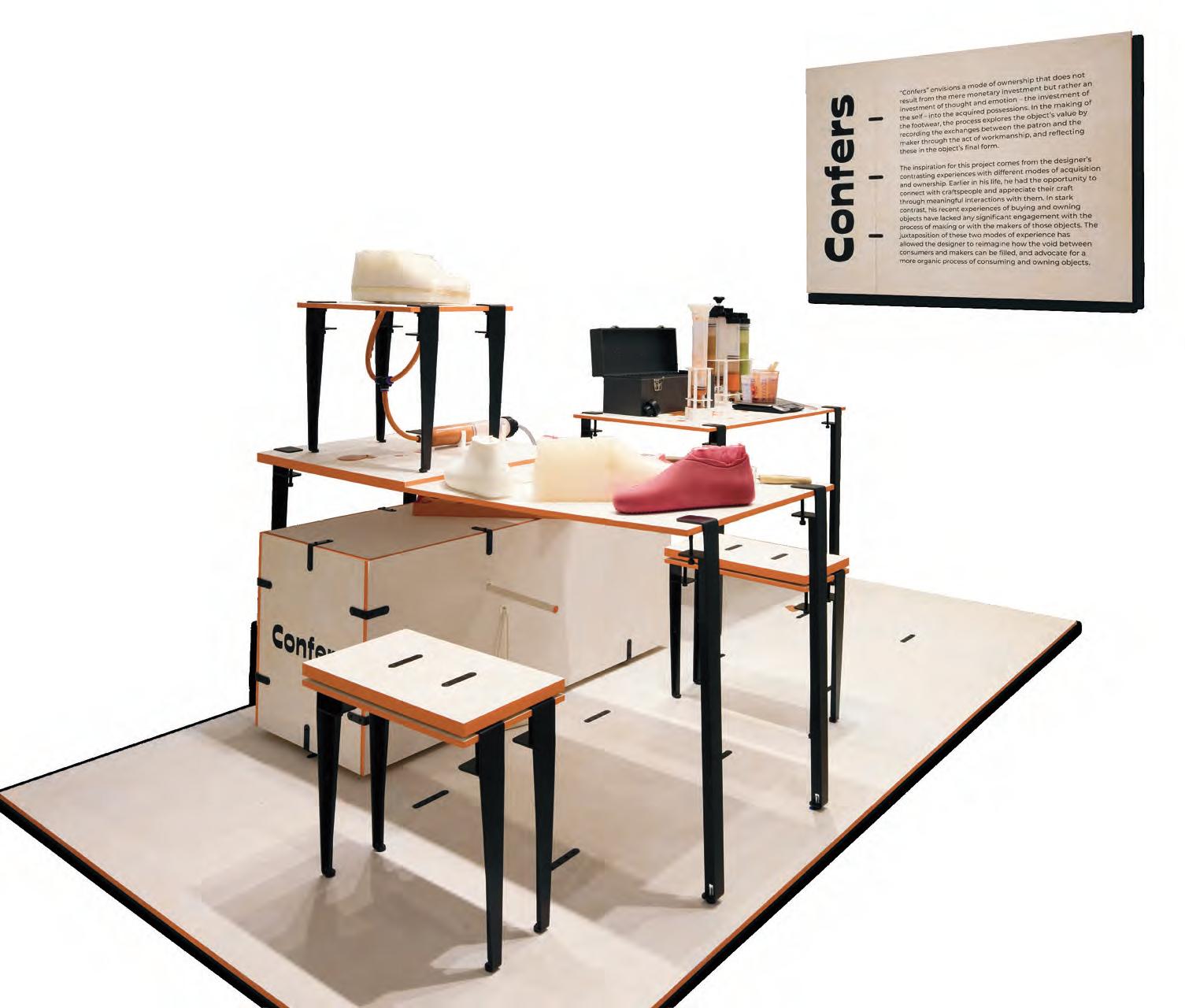
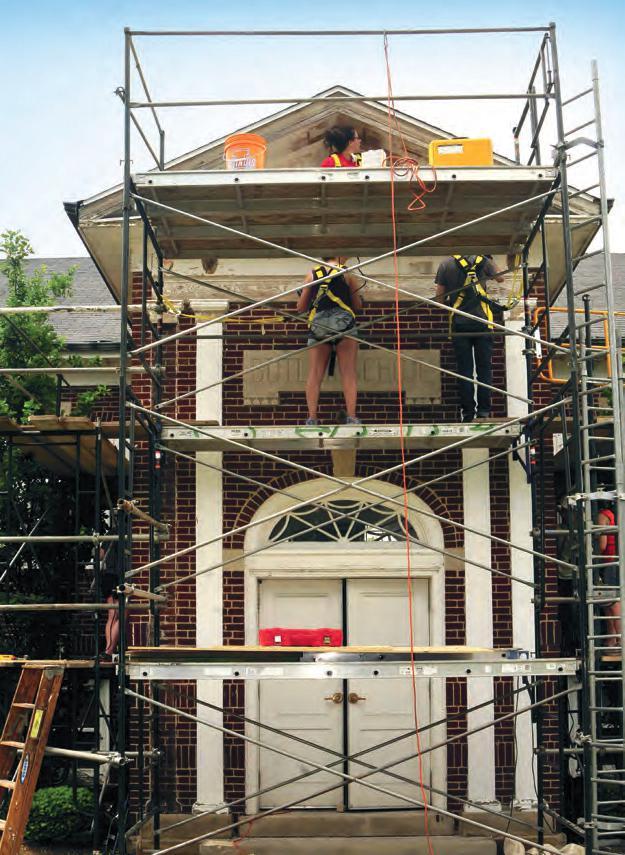
saic.edu/mshp
This dynamic and all-encompassing program effectively engages students in the multifaceted practice of documenting, conserving, interpreting, and preserving our architectural and cultural heritage. The program combines study and practice in the heart of Chicago, with its rich and varied architectural and social histories.
This 15-credit hour certificate is for individuals wishing to pursue a career in historic preservation or pursue study for personal enrichment, current practitioners wishing to update their skills sets, or those wishing to pursue a Master’s-level program and want to secure foundational competence. Visit saic.edu/hpres_cert.
Our intensive, two-year program includes on-site and studio-based practical learning in restoration design, materials conservation, architectural histories, and preservation planning. The program also includes critical, historical and contextual studies in cultural landscape, social conditions, and precedents. Students are encouraged to develop specific areas of interest through their elective coursework. Through the exploration of science, creative arts, politics, and technology, students learn the techniques needed to maintain, reuse, and revitalize the built environment.
Students gain valuable experience through a 210-hour internship with preservation agencies, conservators, restoration architects, and material specialists of their choosing. Students are exposed to the latest preservation techniques while working one-on-one with practicing professionals. Additionally, students investigate an area of personal and professional concern in great depth through a two-semester thesis tutorial. Our graduates become preservation planners, consultants, restoration architects and interior designers, historic site and museum managers, building materials consultants, contractors, site interpreters, collections managers, preservation researchers, and advocates.
Faculty members are highly respected, practicing professionals in historic preservation and related creative and critical fields. They share a passion for historical architecture, material culture and communities. They are committed to social inclusion and cultural representation through all aspects of their work. Their combined professional experience provides a robust network of connections from Chicago to various national and international affiliations.
Chicago serves as a living laboratory for students. Department projects involve buildings, sites, archives, and collections relating to rural, industrial, urban, and suburban communities, often resulting in projects serving the public.
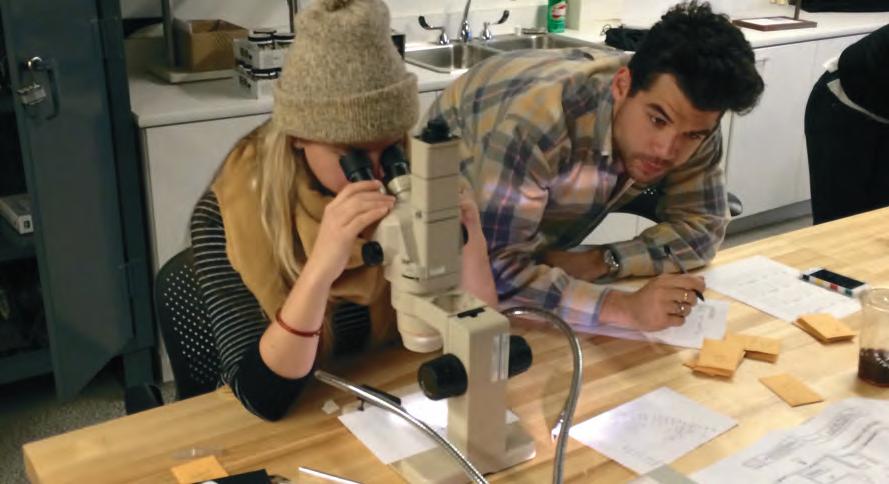
CARLA BRUNI
RICHARD FRIEDMAN
NICHOLAS KALEGORESIS, AICP
NICHOLAS LOWE
CHARLES PIPAL, AIA
LARA RAMSEY
ANNE T. SULLIVAN, FAIA, FAPT
RACHEL
L. WILL, PE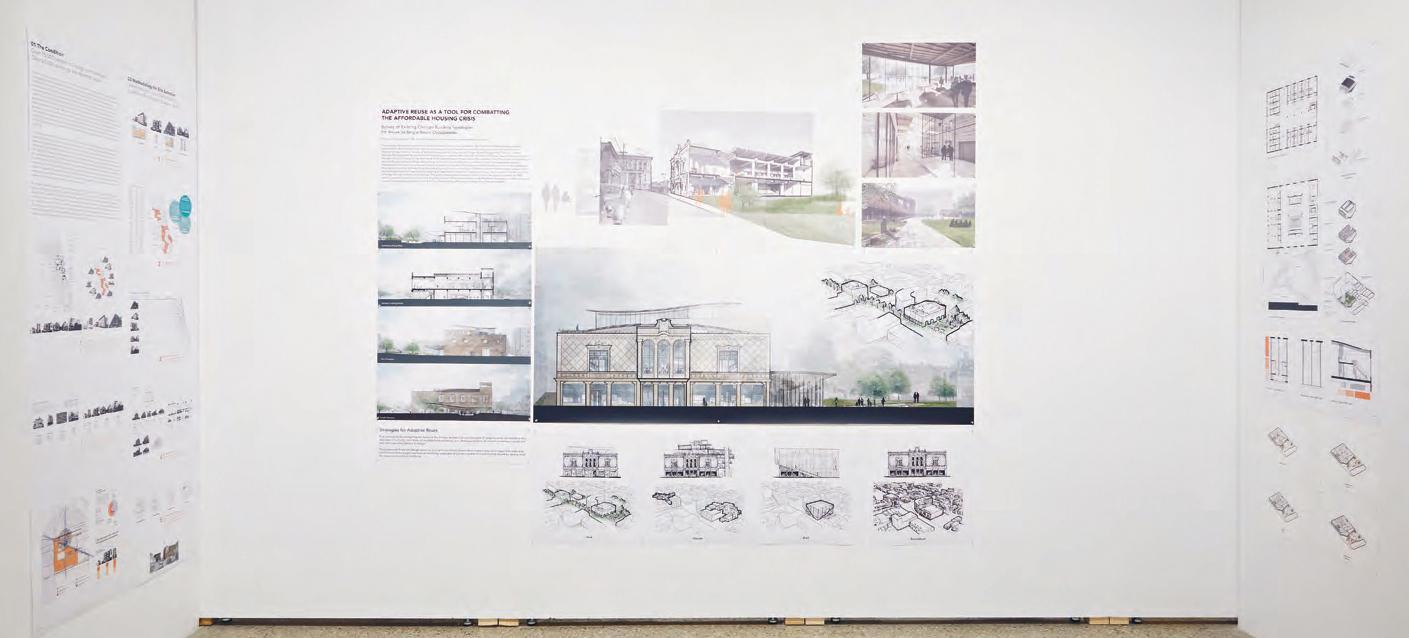

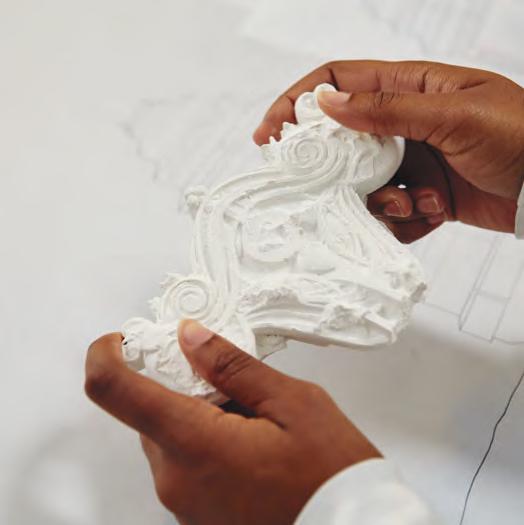
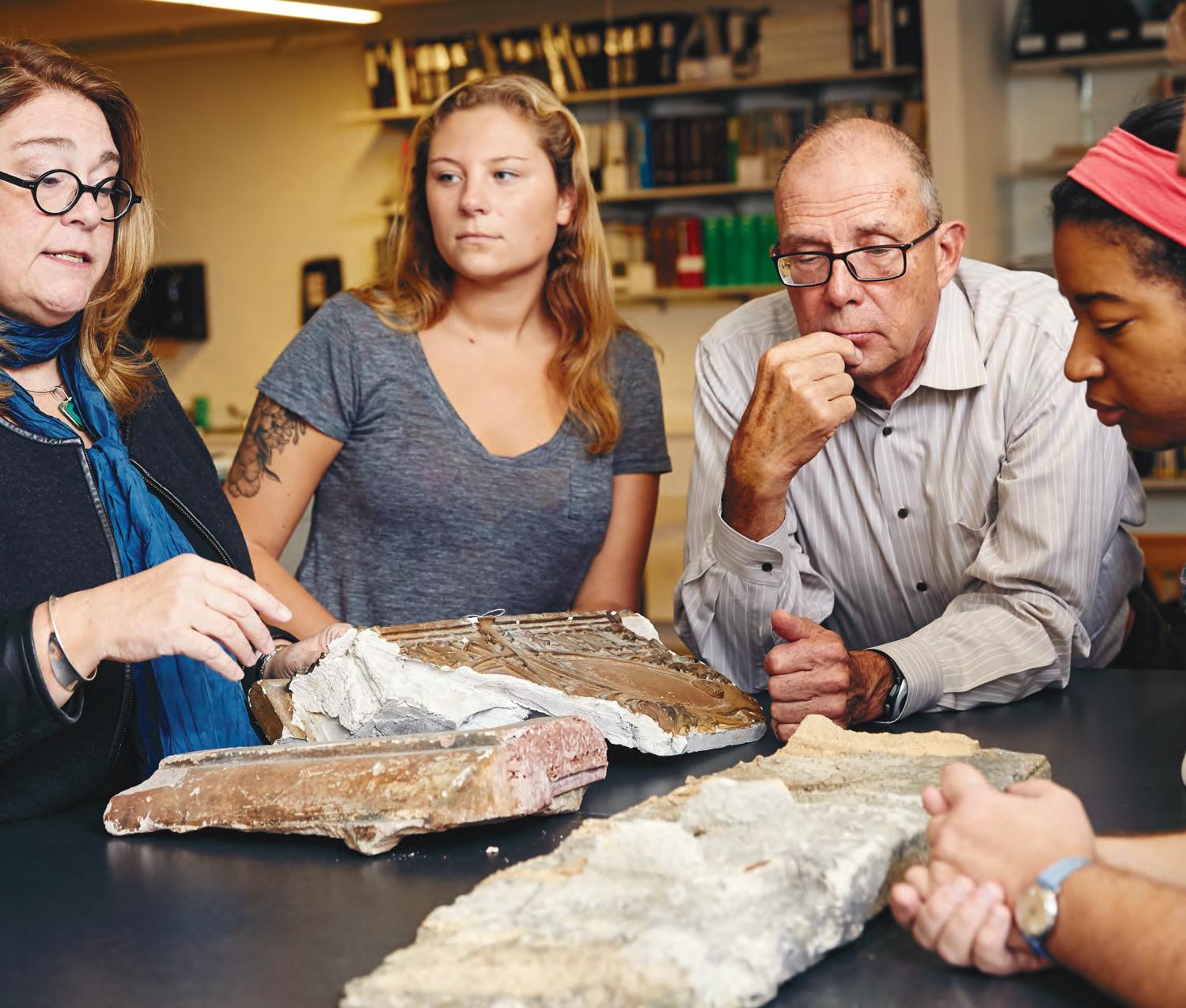


“I make objects that are interactive, like large puzzles and objects that teach, designed to help people understand and solve issues in the world,” Powell says. Her multimedia sculpture, Anansi’s Web is the Universe, is such an example. Four feet by four feet and composed of recycled crayons, wood and resin, the work references Anansi the spider from African folklore who traverses the sculpture’s colorful quadrants. “It represents how Anansi collects stories from life and the afterlife, stories that connect us.”
Prior to coming to SAIC, Powell organized a community-based art show at the Houston Museum of African American Culture that received an overwhelming response. “That experience solidified my focus to use concepts of Afrofuturism to reimagine what education means. I wanted to create school experiences that translate the symbolic, logical, mathematical knowledge of the African diaspora into material objects.”
Powell’s signal works were inspired by a connection of two seemingly disparate historical traditions. “I read a book by architecture and design critic Alexandra Lange where she discusses blocks and their connection to education. At the same time, I was researching abolition and its connection to quilts, how the symbols in quilts helped people escape enslavement. I decided to make building blocks for children that look like quilts.”
The resulting works resemble simple Montessori puzzles with symbols and patterns that reference traditional quilt designs. “It’s historically located while teaching children art history and a very specific means of communication.”
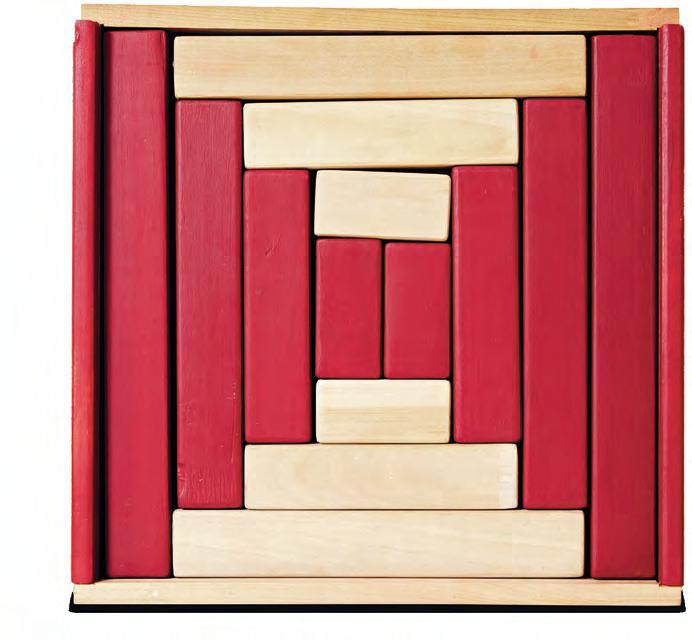
One such piece, Court House Steps, arranges wooden blocks in a stepped pattern that evokes images related to the complex history of civil rights in America.
A key theme in Powell’s work is abolition and its relationship to the built environment, sparking her interest in architecture.
“For me, abolition is building—building systems, building relationships, and building environments that are equitable,” Powell explains. “Now I’m arranging my puzzles as a sort of collage, displaying them together to create a pattern of communication, a visual narrative. I’m focusing on how to make this more of an architectural process.”
Powell says her experience at SAIC has helped her grow as both a maker and a thinker in a sustainable art practice. “I’ve been able to think through something small and see it in a larger context, which is mind-blowing.”
Schetauna Powell believes design should do more than spark thought—it should foster learning and inspire action toward social progress. A former classroom teacher, Powell combines historical research, craft, and dimensional design to create objects that connect learners of all ages to the richness of Black culture.
Art & Technology / Sound Practices
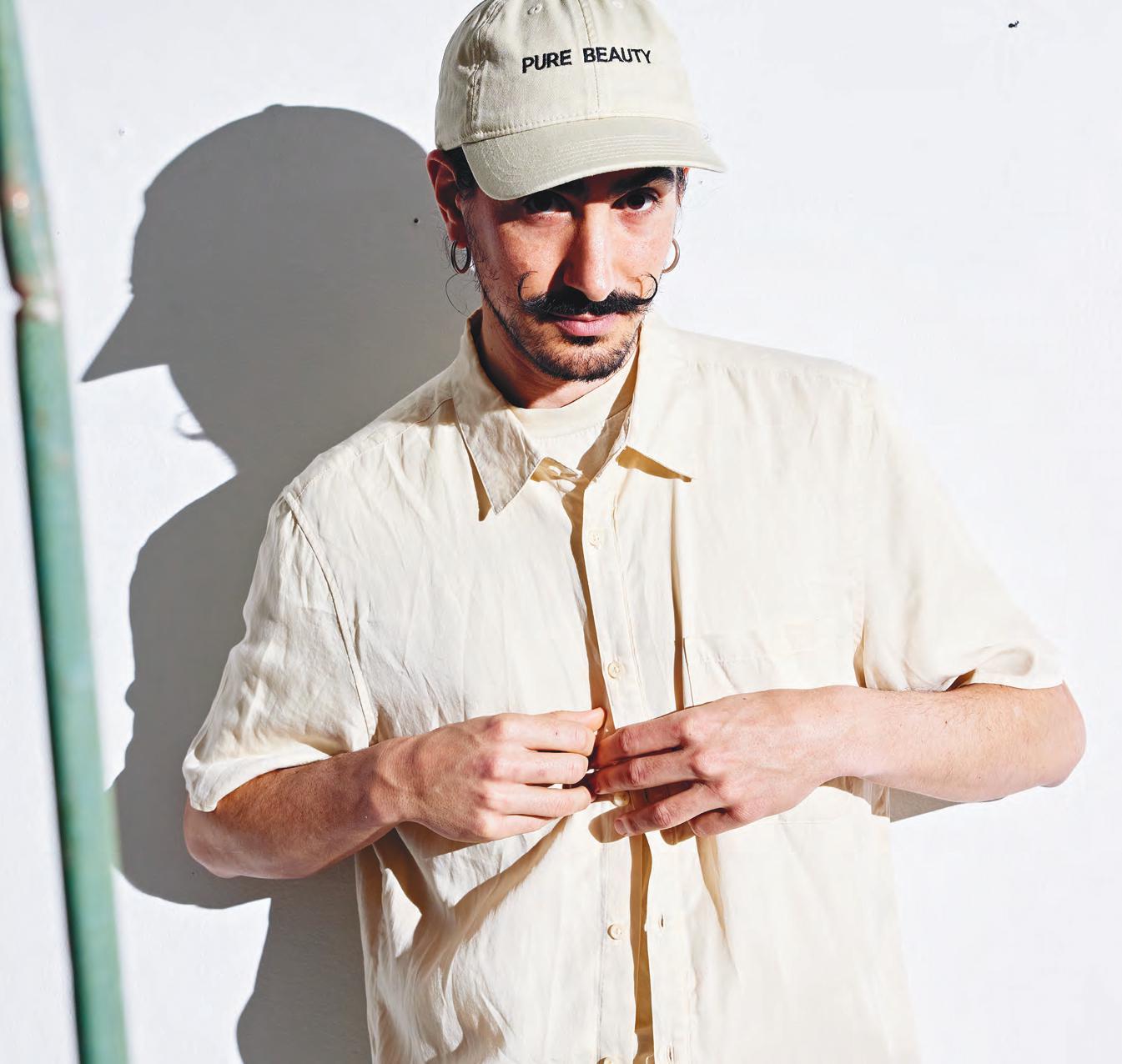
Nimrod Astarhan’s aspirations for his artistic practice extend from his native Israel into the far reaches of the universe. Combining digital technologies and media with a sculptural sensibility, he focuses on themes of invisibility, visualizing what is beyond the purview of our senses.
“I’m interested in things that are unseen, buried, or illegible, including invisible hierarchies and structures, from belief systems to history to identity,” Astarhan says, adding that he views technology as a way to reframe our concept of human history as an ongoing story and project it toward the future. “Technology changes our notion of reality. The pervasive space of electromagnetic signals is weaving invisibly these hierarchies and structures.”
Astarhan harnessed those electromagnetic forces in his radio sculpture Earth Signal Universe Wide. Created as a part of the Rakia AX-1 mission, the work involved both terrestrial and space-bound elements. Seismic data generated by sensors at the Dead Sea were transmitted to the International Space Station (ISS) via a web interface using the interplanetary internet. An astronaut on the ISS then broadcast the data into space via a radio transmission lasting 90 minutes—the time it takes for the ISS to complete one rotation around the Earth. Astarhan also created a website with a visual simulation of the transmission.
“Seismic data is like the heartbeat of the Earth, sent from the lowest point on Earth to the highest point of human activity,” Astarhan explains, noting that radio waves in space continue infinitely. “I think about it like a brush stroke that starts at the ISS and ends somewhere at the edges of the universe sometime in the far distant future.”
Astarhan’s installation piece Total Reflection represents another approach to the invisible made visible, based on his research into the history of fiber optics. Sensors activate optical fibers which flicker when electromagnetic radio signals are detected, such as when someone with a smartphone approaches the piece.
“I think of this work as reactive because it’s not asking you to do anything to activate it. Our phones are so active, that just receiving a text would trigger the fiber optics. In a way, it’s not really a work until someone walks by,” Astarhan explains, noting that all the components are on full display, further emphasizing the theme of revealing that which is usually unseen.
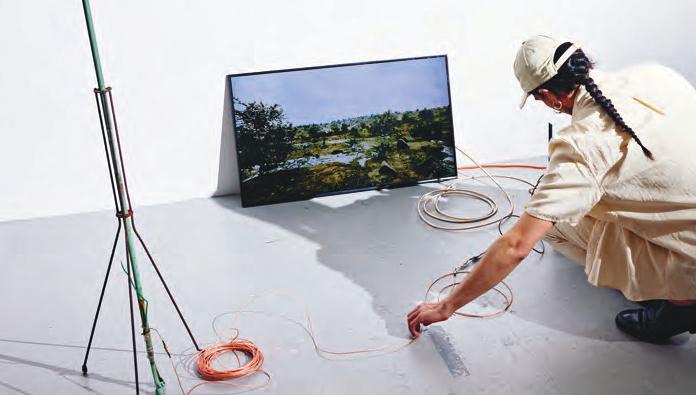
Though he has been working in the field of art and technology for years, Astarhan says his experience at SAIC has taken his work forward in important ways.
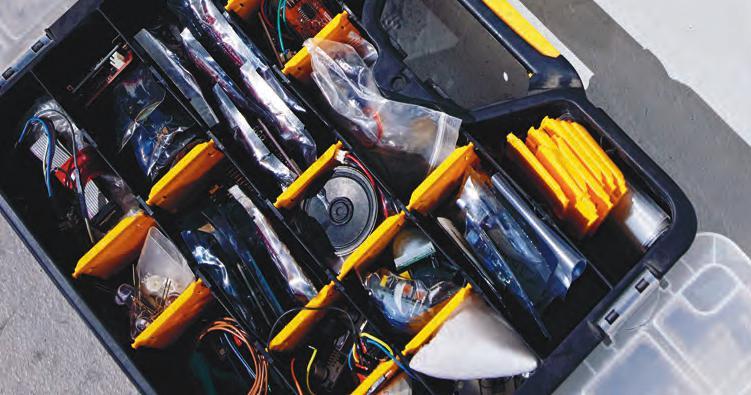
“I was able to gain a lot of experience in exhibiting digital work, which is very different from other types of installations,” he says.
“I got a lot of help and support from faculty mentors like Claudia Hart and Eduardo Kac, phenomenal artists who are household names in art and technology. The legacy here is amazing.”


streaming, Telegan explores questions around abject body positions beyond a binary context.
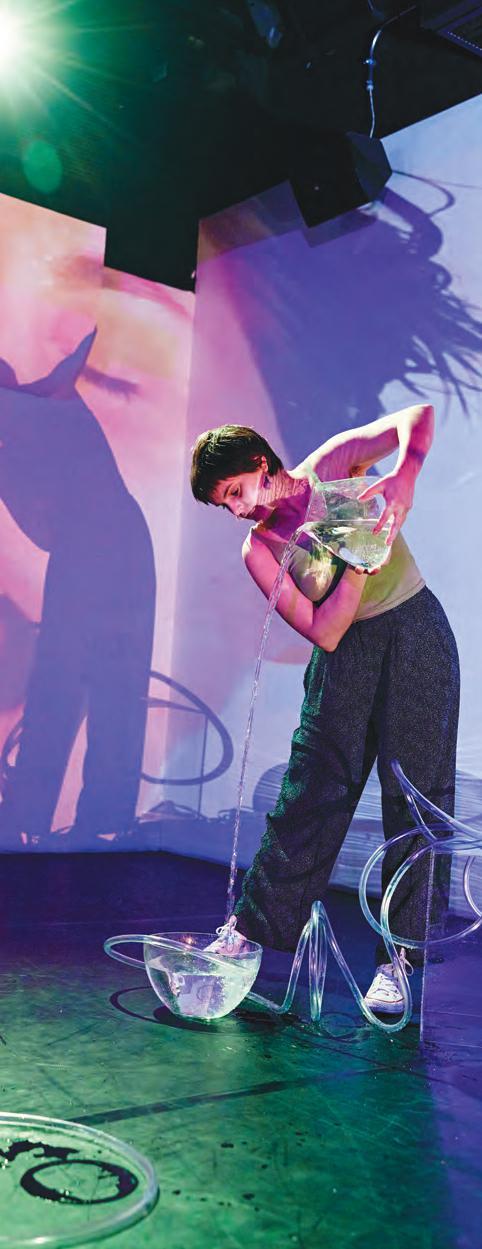
“I’m interested in what goes on in our bodies that we find grotesque, disgusting or not worthy of discussion. What parts of ourselves do we fear or celebrate?” Telegan says. What will you do with all of these wasted eggs? is an example of this. Performed as part of the 2022 INVERSE Performance Art Festival at the Momentary in Bentonville, Arkansas, the piece is a meditation on what is lost and discarded from the body, as Telegan goes through the messy task of separating the yolks from whites in 450 eggs.
“It was focused on the idea that the body has systems and functions that do what they do without any instigation. I’m a body with a capacity for pregnancy, with this monthly function that happens regardless of my say,” Telegan explains, noting that the work was in reaction to the Supreme Court striking down Roe v. Wade. “Why do we think anyone can have a say over what our bodies are permitted to do when they do what they want to do regardless?”
Telegan often turns to wet and messy substances, including food play, as a permissible way to show an audience what’s inside the body.
“I can’t cut my body open to show people but I can simulate this experience through other objects and substances,” they explain. “It creates a certain abject experience that is tolerable. It’s more permissible than my actual blood would be, but it evokes the same viscerality.”
What is or is not socially acceptable plays a central role in Telegan’s work, forcing them to think creatively about how to express ideas— in live performance or online—within the limitations of what is allowed. “I call censorship a collaborator in my work because it defines the boundaries that I need to push up against.”
In their thesis project, Telegan explores bonds over time and how long bodies exist, explored through the lens of birthdays—with birthday cakes as stand-ins for the body. “I can destroy the cake and expose its innards to explore themes of evisceration and degradation allegorically.”
Telegan says creating connections and sharing ideas with other graduate students and faculty has been a key part of their SAIC experience. “I’ve exceeded my expectations for what I would be able to do here. It’s enabled me to grow as an artist and in how I express my ideas. People here are really giving, just wanting to show up for each other.”
Combining elements of self-fetishization and spectacle—assisted by a range of wet and messy substances—Nikki Telegan’s performances examine the body as a site for both power and vulnerability. Combining live performance and video
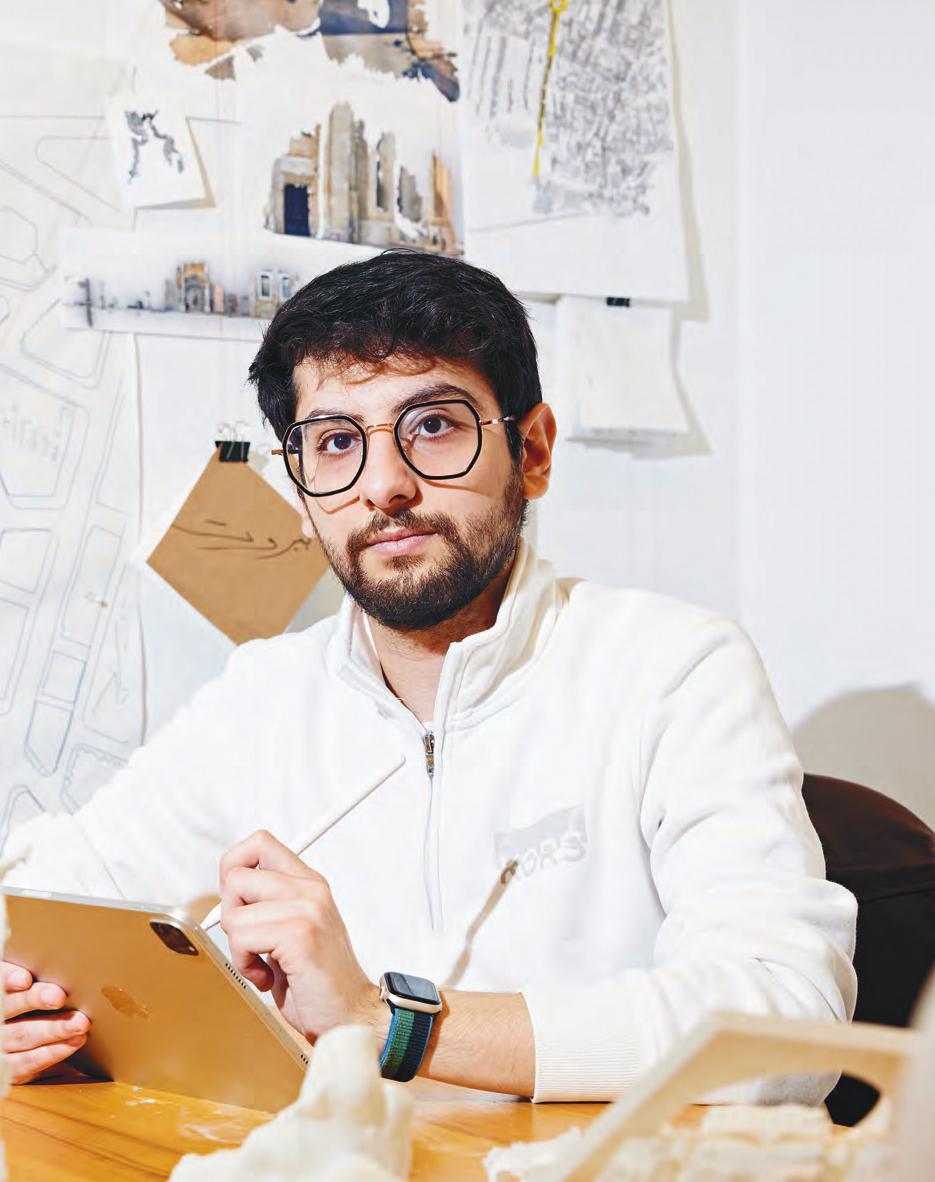
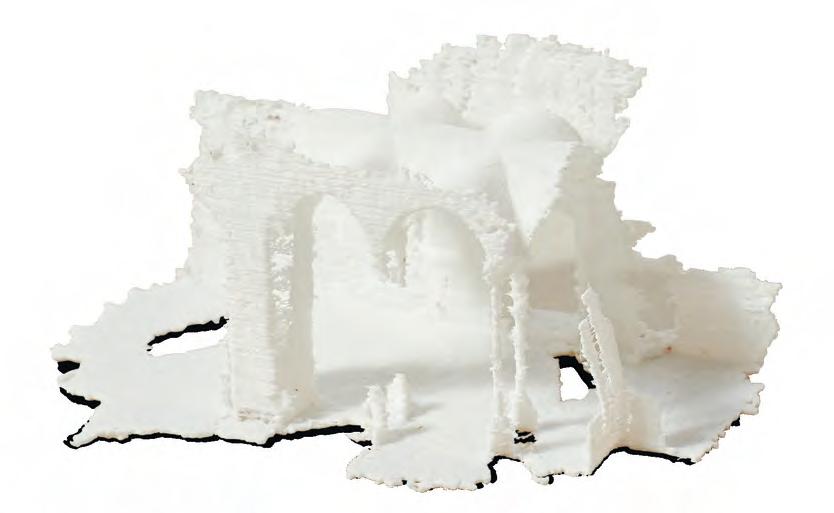
“I’m fascinated by psychogeography, how the design of spaces affects people and how we use our memories and perceptions to shape places,” he says. “Architecture has had the same language for centuries. My practice is focused on creating a new language, one that shows the lived experiences in the urban space.”
Machacca calls his approach “urban mapping,” which he emphasizes is not like urban planning, but a new way of looking at architecture.
“I think of spaces like cities and I redraw their map by removing ‘streets’ (elements) that people don’t use and focus on the spaces that people use the most and then combine them over time. I look at changes over a time span, say 20 years, and draw these into the map,” he explains. “This is something we don’t currently do in architecture. We eliminate the layer of lived experiences.”
This urban mapping approach is at the core of Machacca’s MFA Show project, a case study of his home city of Beirut, Lebanon, mapping the city’s evolution from 1940 to the present.

“The map shows all the hidden layers that you don’t see in a Google map, all the changes that happen in the urban environment,” he explains. “For example, in one part of the city there were moments that affected the city somehow. So I draw these moments. Or architecture that has been changed over time, which I represent in the mapping process.”
Media and technology play a key role in Machacca’s work. He makes full use of the Art and Technology / Sound Practices department to enable elements of augmented reality, 3D LiDAR scanning, and 3D printing. “I’m able to show this environment in 3D and see how it changes over time, how politics, planning, and users affect the map and how city centers shift through experience.”
Machacca says his SAIC experience has changed the way he approaches architecture. “In my undergraduate program, I was trained to be an architect in a firm working with clients. Here, it’s about designing philosophically and conceptually. That was a big change,” he says. “Now I can focus on just one aspect or fragment that translates the entire idea rather than focusing on all the elements and details. That has really changed my practice.”
As he maps his own future, Machacca looks forward to pursuing a Ph.D. in architecture and further exploring his urban mapping concept. “I’ve found what I want to do. I can be the very practical architect but now I can also be the philosophical architect.”
For Adel Machacca, architecture isn’t just about the built environment—it’s also about dreams, media and the passage of time. Moving beyond his undergraduate architecture training in his native Lebanon, Machacca is now exploring new dimensions in his design practice.
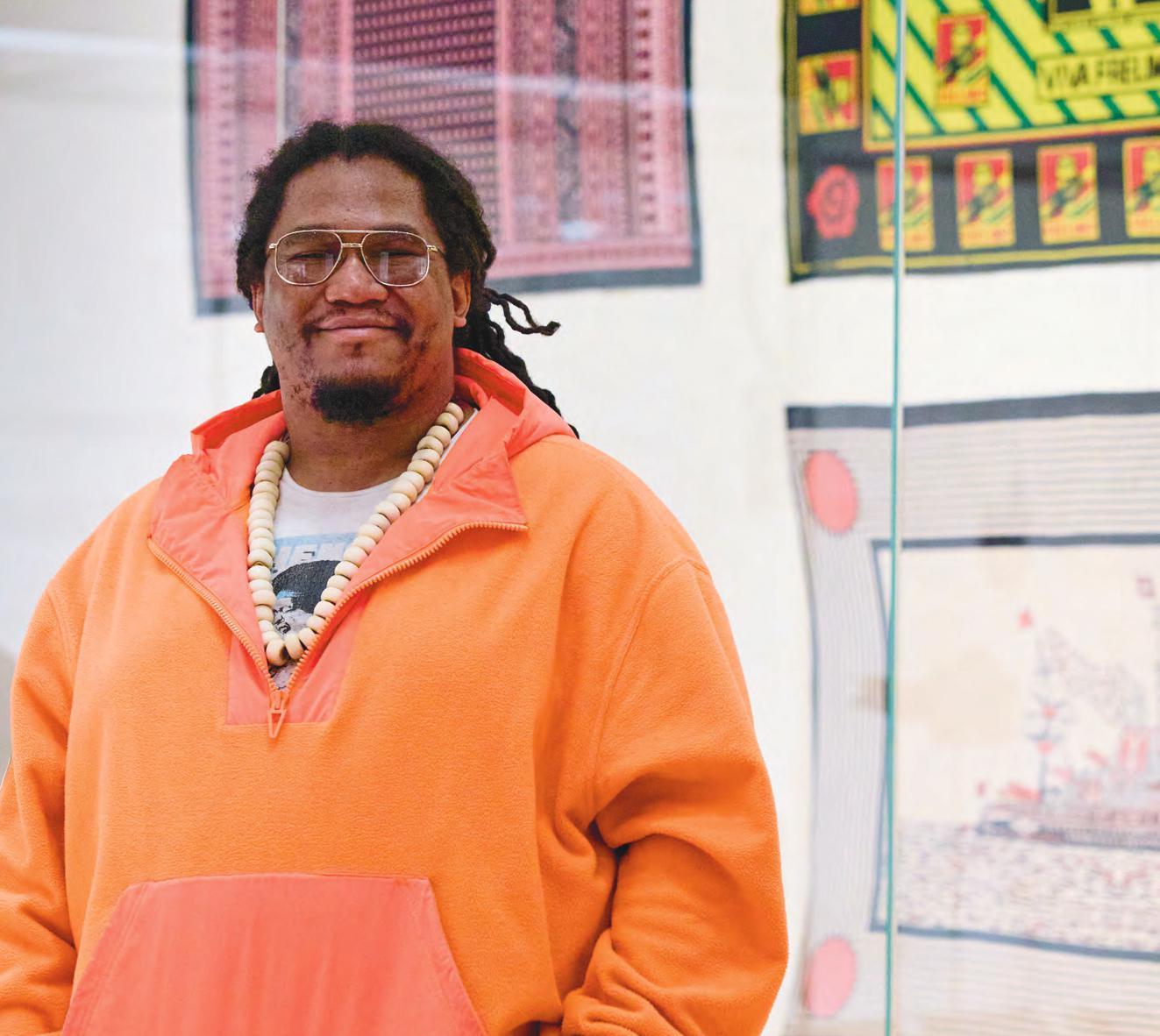
“I spent a year in Spain and fell in love with art through their museums and galleries,” he says, noting that he pursued his passion through some museum work in Florida and New York State. “That sparked my desire to get into curation at a high level. I saw SAIC as a way to correct the path I had strayed from and elevate my practice.”
Clark’s interest in both visual and performing arts was a driving force behind his curation of I Gotta Thang: Cocaine Dreams and Penitentiary Nightmares, a show examining the life and untimely death of southern rap icon Chad “Pimp C” Butler. The multimedia show was presented in 2022 in Butler’s and Clark’s hometown of Port Arthur.
“The show is about the transfiguration of Chad Butler, exploring his struggles with the self-destructive aspects of the southern rap culture he helped to build. It examines the human being behind the artist,” Clark explains, noting that the exhibition features a video essay, silk screen prints, artifacts from Butler’s boyhood home, religious symbolism, and elements related to the erasure of Black history in Port Arthur. Clark served as curator, developer, artist, and collaborator, working closely with members of Butler’s family and artists from Southeast Texas.
More recently, Clark embarked on a research project called Hair Like Dynamite, a group exhibition in Miami featuring multidisciplinary artworks and site-specific, interventionist installations. Inspired by a 1967 essay by Black sociologist Calvin C. Hernton, the show examines the evolution of Black identity as represented by hairstyles past and present.
“One piece involves a deconstructed retail Black haircare product display case, with petri
dishes containing the raw materials used to create the products. Each is labeled with its place of origin, bringing a global perspective,” Clark explains, noting that other highlights include a sound installation projected onto Miami’s segregation walls and a hair porosity test. “By having visitors reveal their individual hair texture, it explores who creates meaning—is it the society that tells me what my hair is or is not, or is it the individual?”
Looking ahead, Clark plans to expand his curation within a pan-African context. “I want to explore my interest in African art as a means of connecting the diaspora back to its point of origin—doing it responsibly, with intention. SAIC offers me a wealth of opportunity to pursue that goal.”
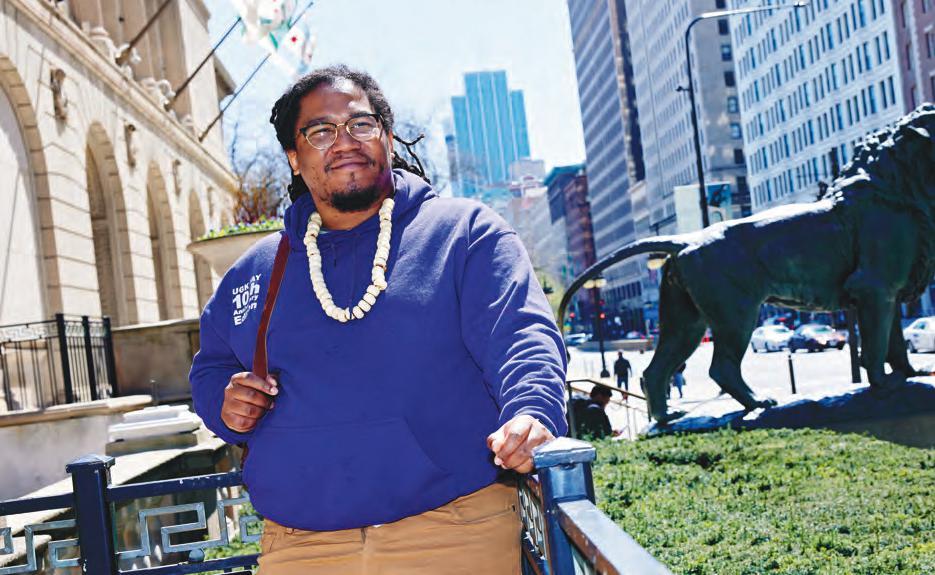
Charles Clark III’s personal journey has taken him from Port Arthur, Texas, through college drama and choir performances, to a graduate degree in museum studies. Throughout those twists and turns, his fascination with visual arts has been a constant.

SAIC’s Master of Arts degrees offer the unique opportunity to pursue academic scholarship in an acclaimed art school setting. Students immerse themselves in a rich, interdisciplinary environment as they forge their identities as researchers, writers, leaders, teachers, and therapists. Our academic programs provide the professional preparation needed to create a career that makes a difference.
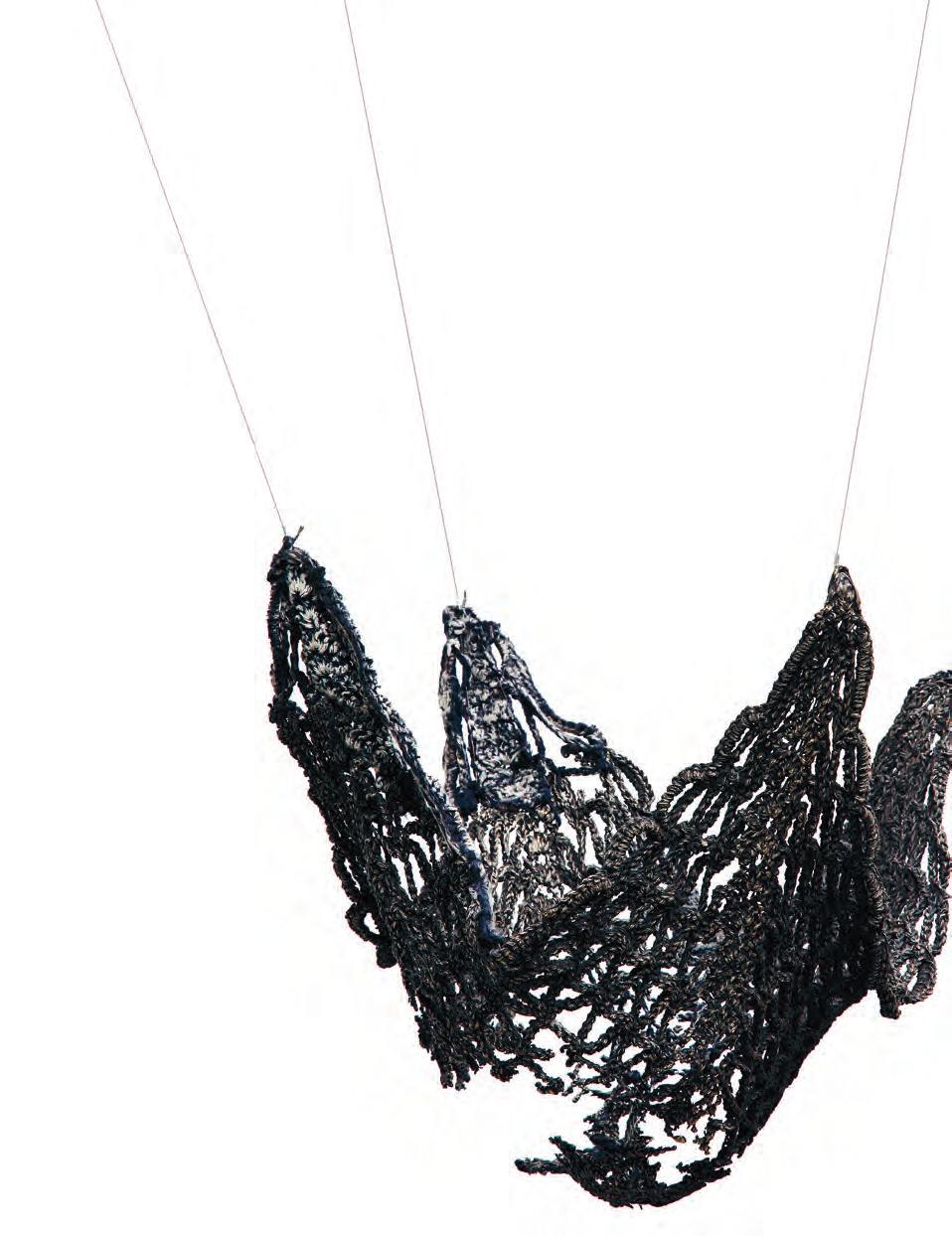


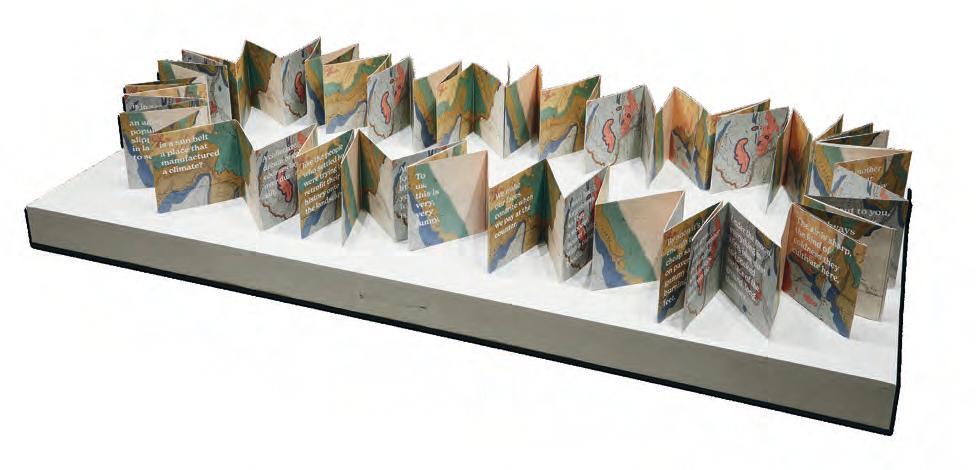


saic.edu/maae
The Master of Arts in Art Education program prepares artists, activists, designers, teachers, educators, and other professionals to be creative agents of social, cultural, and educational change. The program equips graduates to break out of the status quo and create meaningful, critical, and transformative, non-traditional educational experiences through art.
The 36-credit hour program reflects the expanding art and design education field, preparing students for careers in the arts, educational and social service institutions, museums, galleries, public and private universities, cultural centers, community-based organizations, and non-governmental organizations (NGOs). The focus is wide-ranging, including contemporary cultural production, socially engaged art and design practices, curriculum design, social justice teaching practices, audience advocacy, museum education, exhibition development and interpretation, and activism.
Students can choose full or part-time enrollment. Working closely with the program’s director and other faculty,
students create a personalized curriculum plan related to their area of interest and career goals. MAAE students pursue research and fieldwork in established art education settings and engage with issues of environmentalism, social practice, science, health, human rights, and literacy. The program culminates in a fieldwork project and final thesis.
Studio and project-based courses are balanced with opportunities to work with various communities, audiences, and organizations through internships and fieldwork. Students develop arts-based projects, teach in community settings, and facilitate cultural programming. In addition, visiting professionals share innovative strategies for combining arts experiences, community engagement, and social activism.
Chicago provides students with a diverse artistic and cultural backdrop for their studies. During their research, students have opportunities to engage in professional practice with established and emerging art education settings.
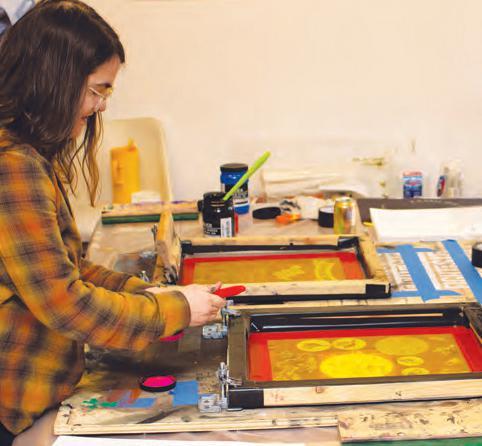
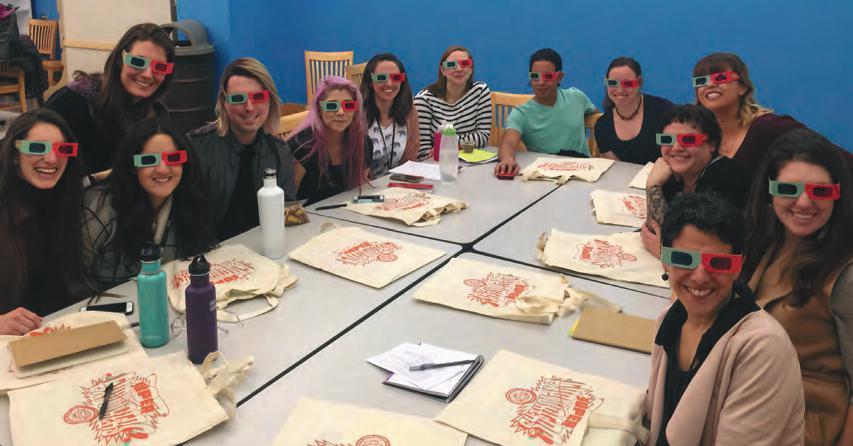
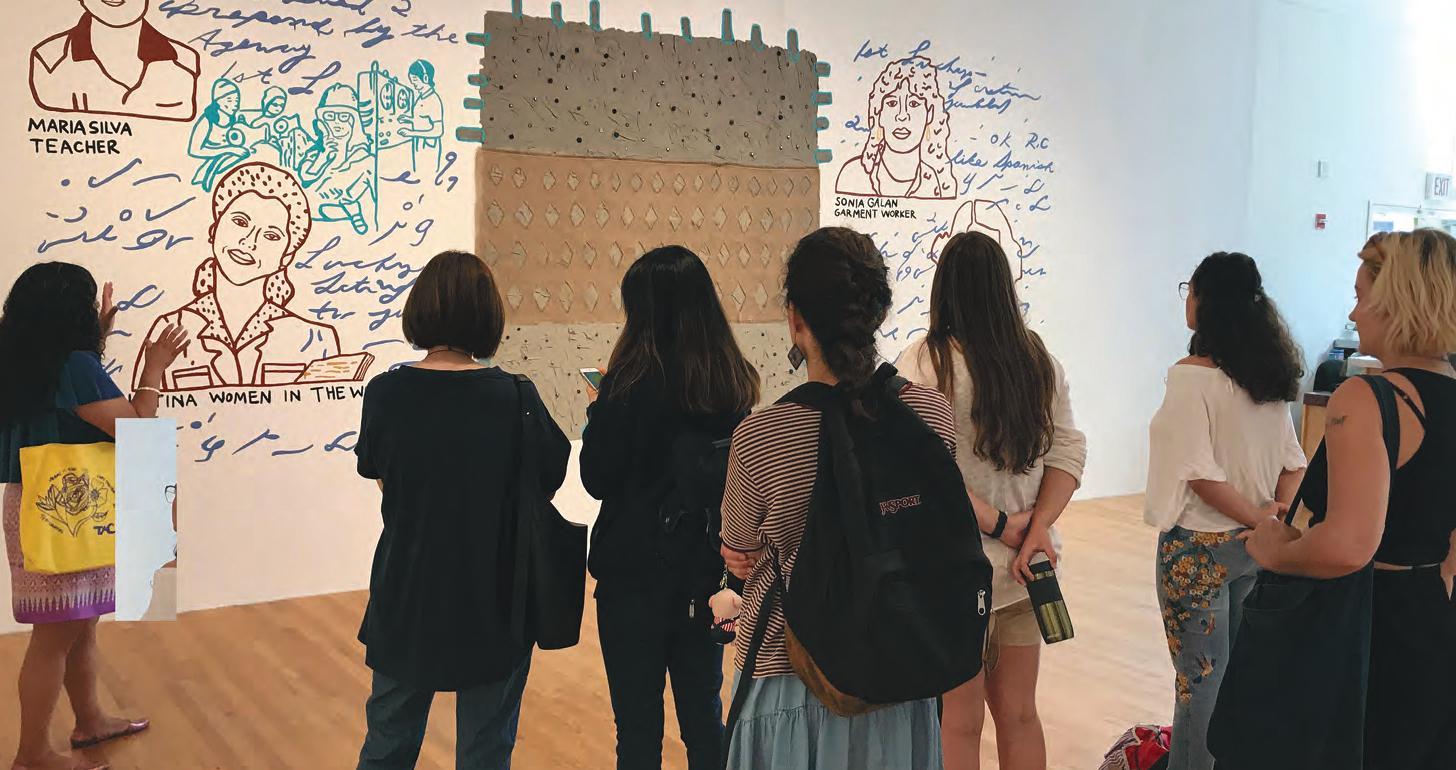
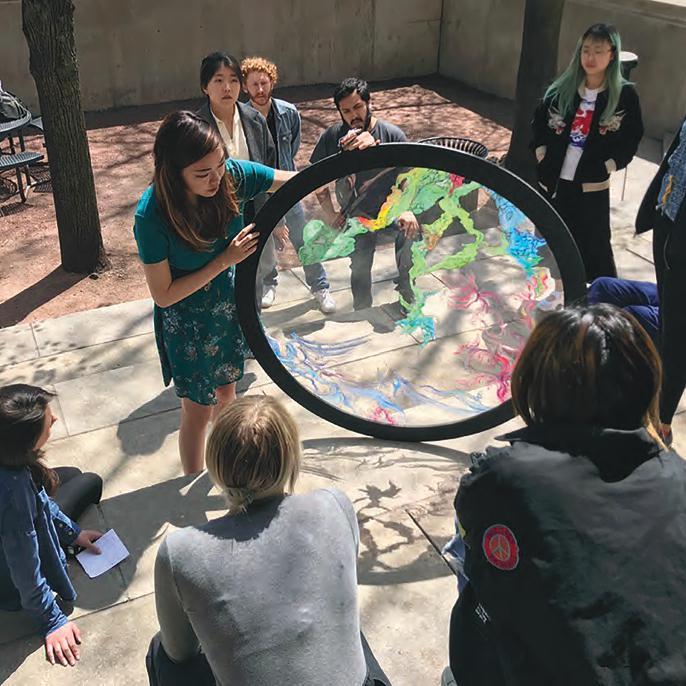

saic.edu/mat
The Master of Arts in Teaching program prepares students to become teachers of art, design, and visual culture while strengthening their own artmaking practices. Connecting contemporary practices of art and design with current educational theory and practice, the program fulfills K-12 visual arts educator licensure requirements in Illinois.
Chicago offers opportunities to teach art, design, and visual culture in diverse Chicago schools, museums, galleries, and community settings.
SAIC’s teacher preparation program coursework fulfills Illinois’s requirements to become a licensed K-12 visual arts teacher.
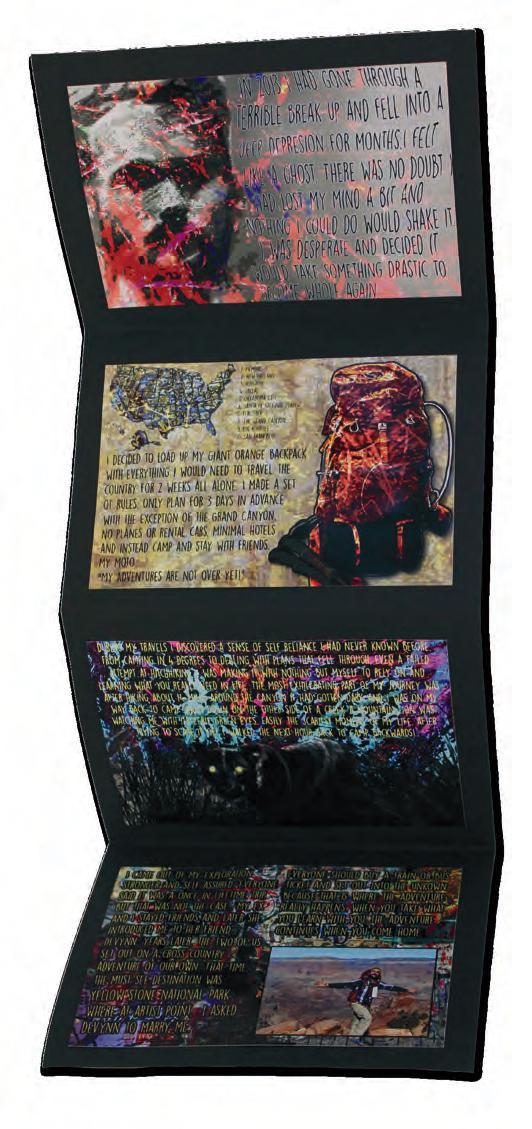
Everyday experiences and concerns of youth and communities are the basis for identifying subjects that can be explored through artmaking. The goal of SAIC’s Art Education community is to develop engaged and reflective teachers and artists whose work creates transformative experiences that support community engagement and foster social justice.
The curriculum is taught by artists-educators whose artistic practices and scholarly writing provide vivid examples of new roles and possibilities for 21st- century art and art education. Students integrate artmaking with learning and practicing teaching strategies and are encouraged to reflect deeply on traditional and cuttingedge theories and practices of art, design, and education. The curriculum addresses the aesthetic, technological, cultural, and political implications of schools and curricula. Students choose electives in contemporary art, craft and design, new technologies, art history, and visual critical studies to enrich their artistic and teaching practices.
Students teach in urban and suburban public elementary and secondary schools throughout the Chicago area. The Art Education Department identifies mentor teachers and placement schools whose
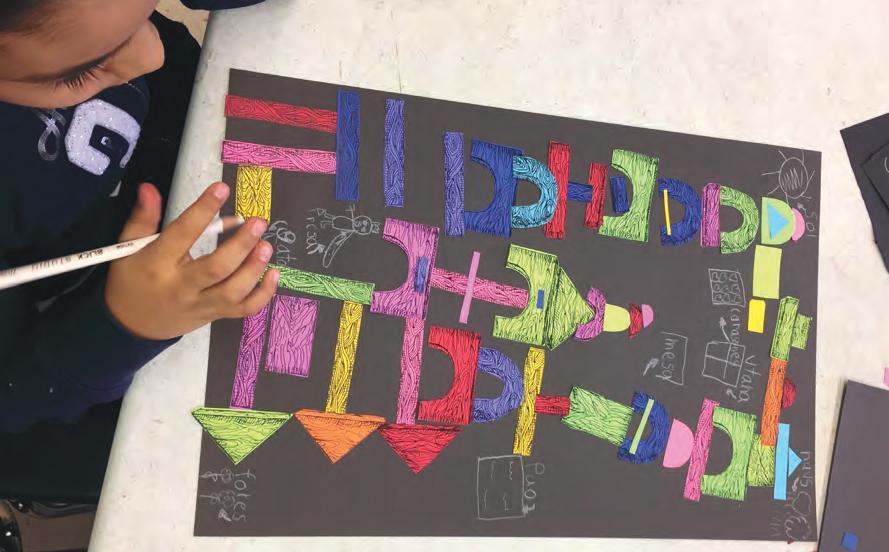
teaching practices and educational climate exemplify innovative and effective learning environments. SAIC faculty supervisors and mentor teachers work closely with apprentice teachers, providing one-on-one tutorials in developing a teaching style suited to each apprentice teacher and school environment.
Each student develops curriculum projects that connect learning art-making techniques to significant social and cultural concerns. These multi-week projects take place during apprentice teaching and invite elementary or high school students to become coresearchers with their teacher, learning to use their artmaking and cultural investigations to engage big ideas. This empowers students and teachers to use the arts as an avenue of meaningful participation in shaping democratic cultural communities.
MELITA
MORALESJOHN PLOOF
SARAH ROSS
The program fulfills State of Illinois K-12 visual arts professional licensure requirements, and our graduates build art education careers in schools and other educational settings throughout the United States. Alums secure well-paying teaching jobs upon graduation, and we typically receive more referral requests for recent graduates than we can meet.

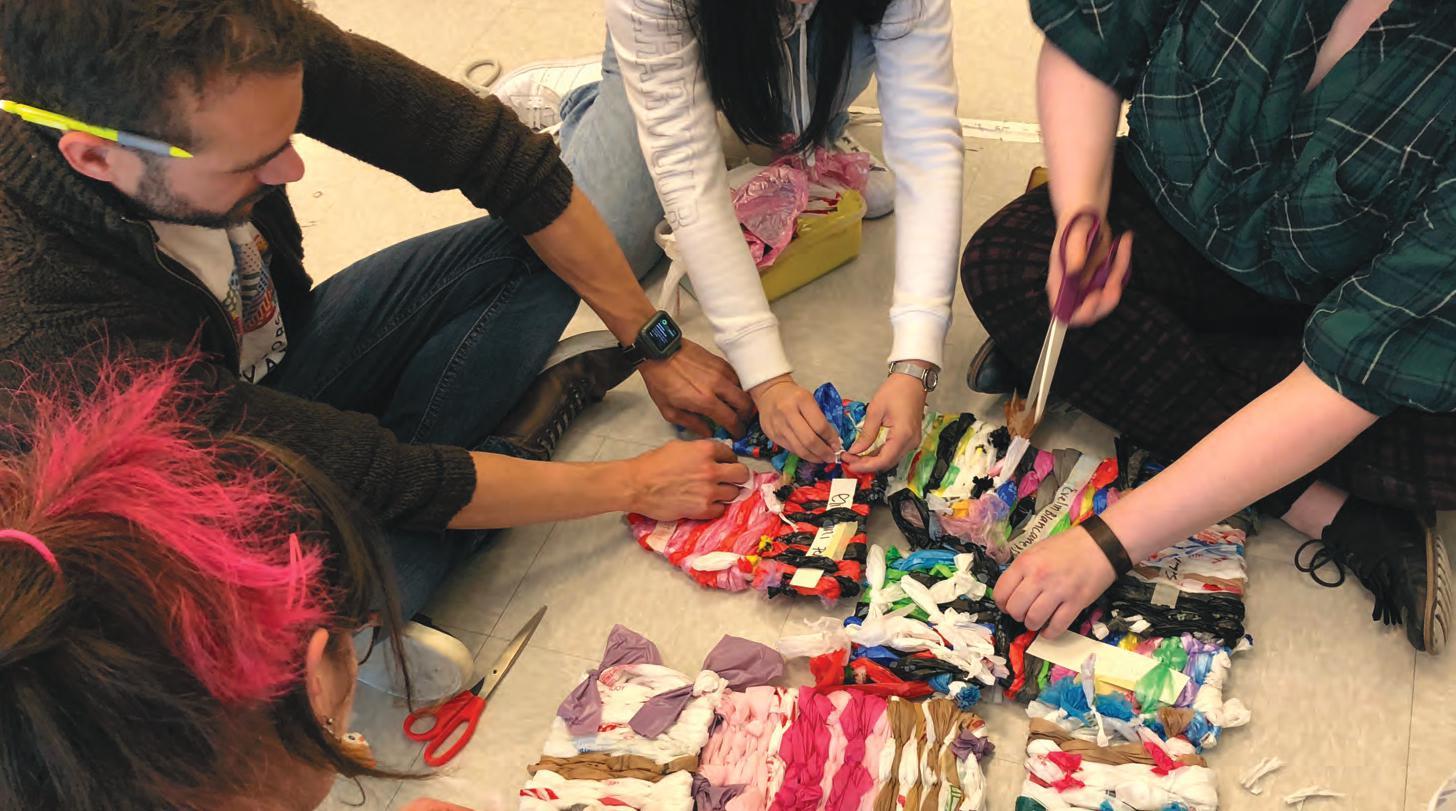

saic.edu/maatc
The Master of Arts in Art Therapy and Counseling (MAATC) program cultivates influential, compassionate leaders who utilize art and making as therapy in healthcare and social practice.
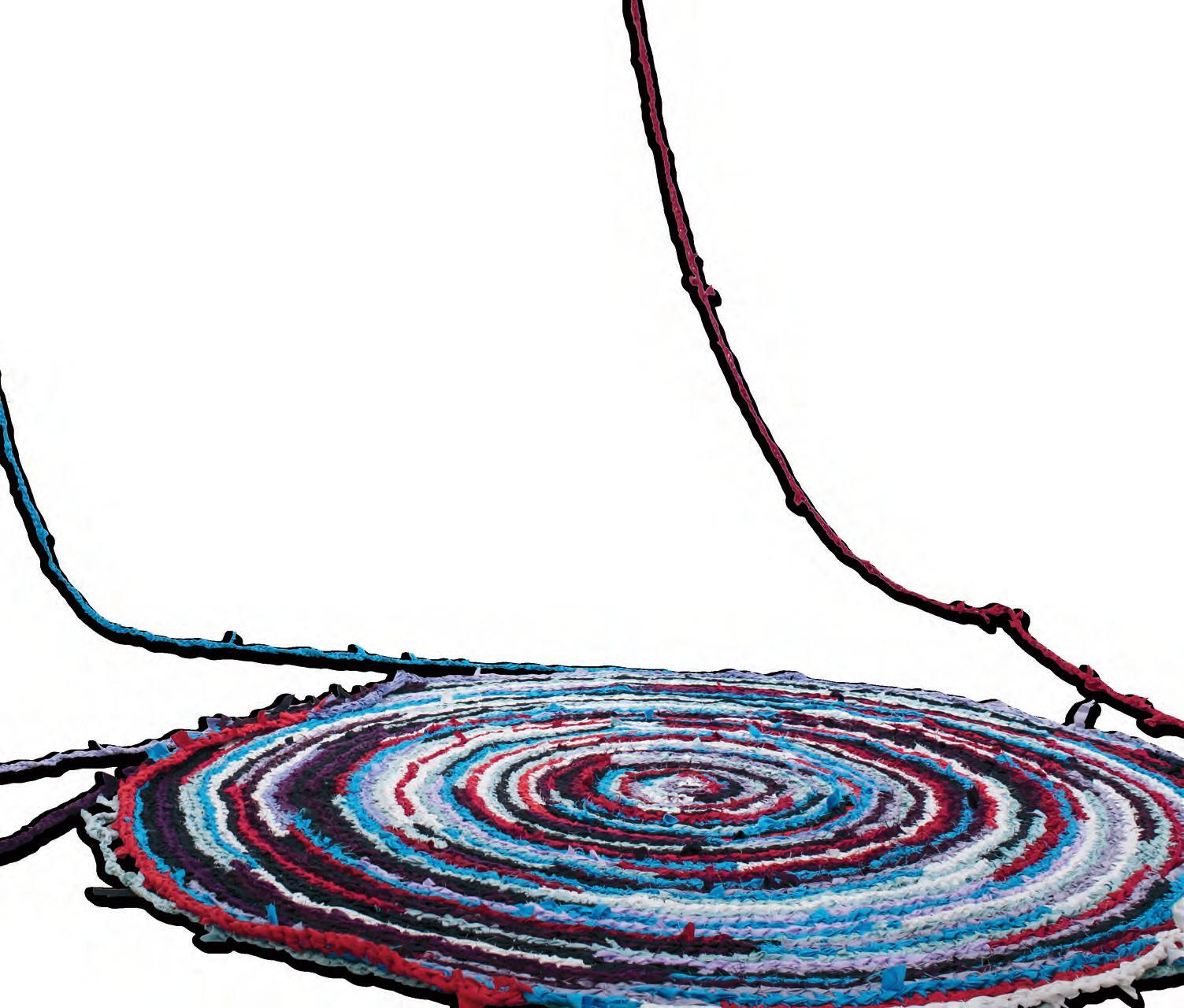
The program is a national leader in articulating the role of the artist and art therapist, led by faculty members who have made significant contributions to the field. Students are encouraged to think critically as they examine the intellectual dimensions of art therapy practices, research, theories, and significant trends in related fields—from contemporary art to counseling and psychology.

Artistic practice is at the core of art therapy and students explore their connection to artmaking through required studio courses, as well as through exhibitions and events. Engagement with peers across SAIC departments offers opportunities to benefit from diverse creative practices and perspectives.
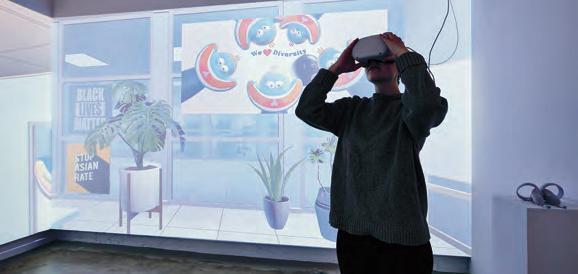
Students gain professional experience through required fieldwork in a healthcare or social service setting. Some of the options include hospitals, medical and behavioral health centers, residential care, schools, and community organizations. Working with both children and adults offers opportunities for students to gain a deeper understanding of the ethics, challenges, and successes unique to this field.
The curriculum is designed to meet the standards for post-graduation application for Registration and Board Certification with the Art Therapy Credentials Board and the academic requirements to sit for the Illinois counseling licensure tests and similarly designed exams in other states.
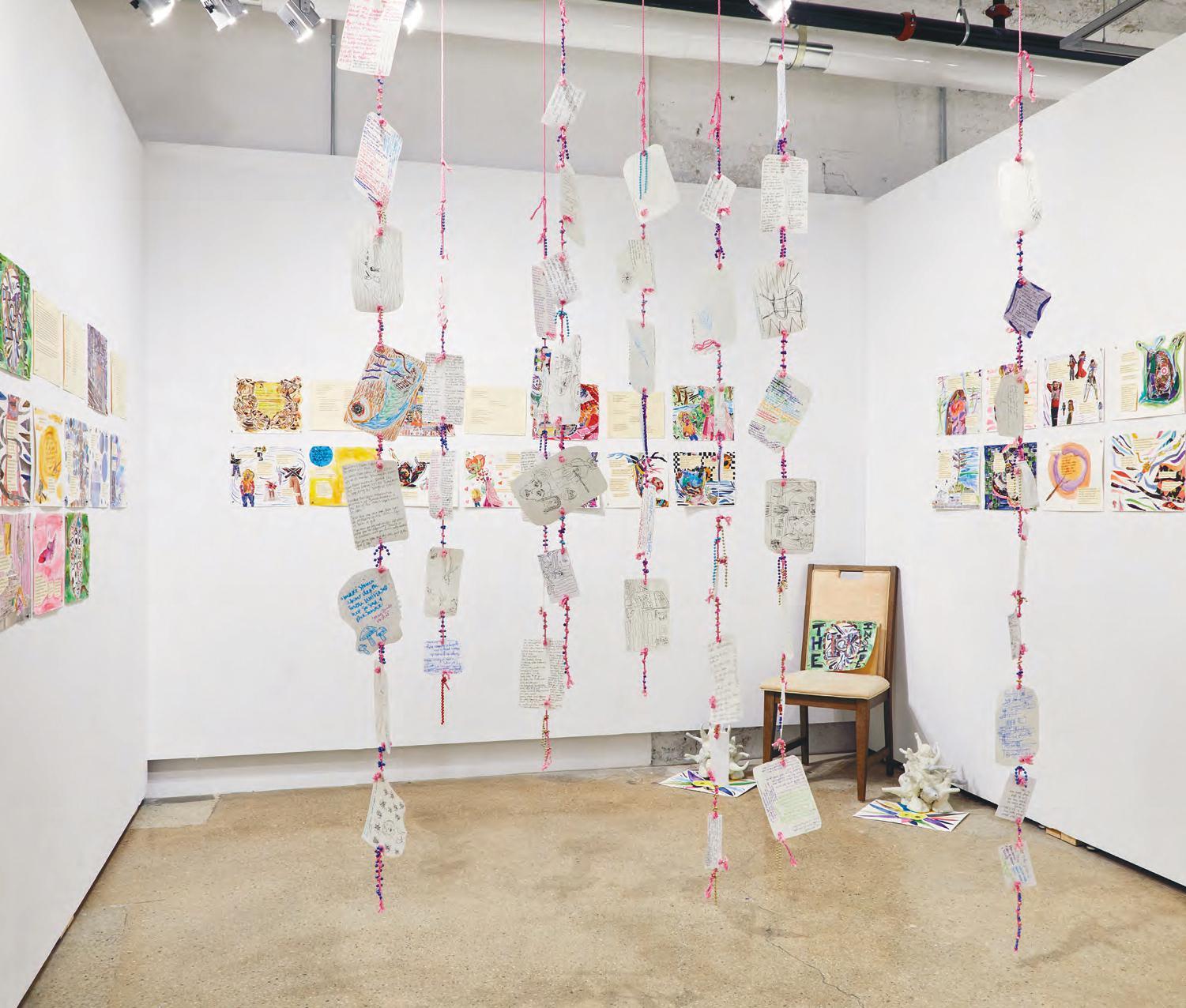

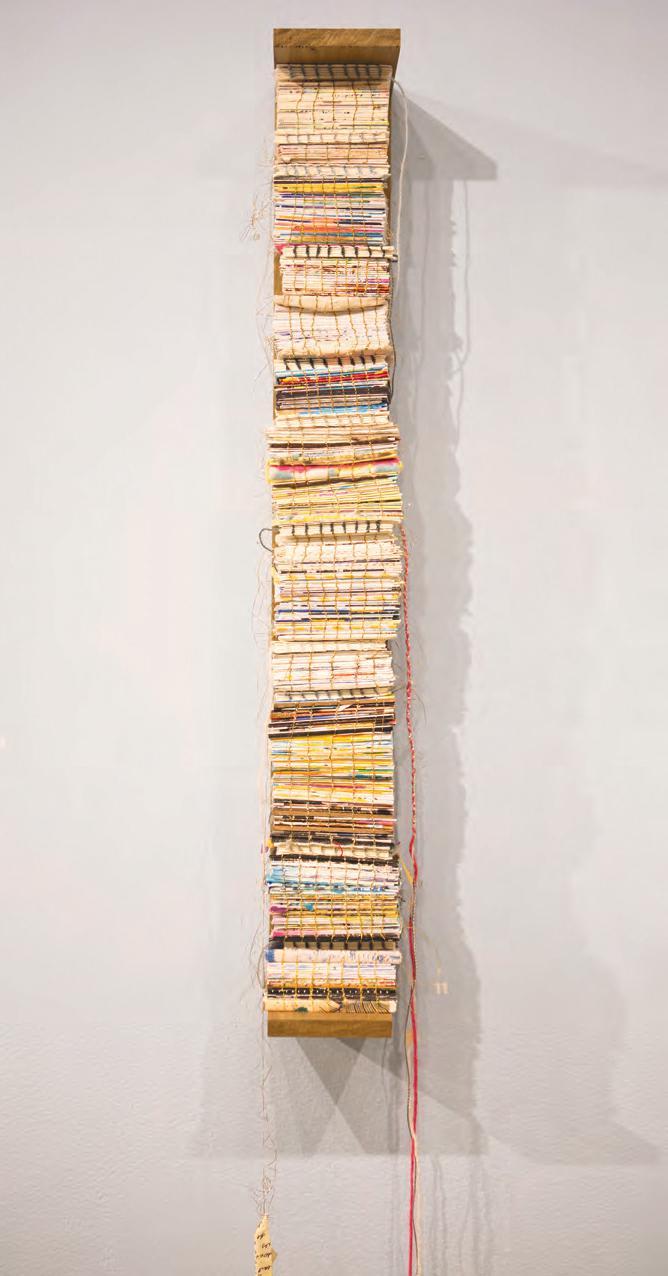
saic.edu/maaap
Integrating scholarship, practice, and research, the Master of Arts in Arts Administration and Policy program emphasizes collaboration, teamwork, creative leadership, and a dynamic process of reflection. Unlike traditional arts administration programs, we approach arts administration as a creative practice.

Our program prepares students to reimagine and lead arts and cultural organizations, and master essential skills while building a critical perspective on the issues of contemporary arts administration. Working closely with artists and cultural organizations, students promote ethical practice, advocate for the centrality of the arts and culture in everyday life, and develop new approaches to thinking experientially, critically, and politically.
Our program places equal emphasis on theory and practice. Students hold short- and long-term engagements with various organizations, allowing for real-world exploration and experimentation. Students graduate equipped to share and sustain their artistic and professional practices.
Our internationally diverse student body includes emerging administrators and mid-career professionals from a wide range of backgrounds—including visual arts, dance, music, theater, cultural
Students are exposed to an array of perspectives on arts administration from distinguished guests in the field. Recent guest speakers include:
studies, art history, social sciences, law, philosophy, political science, education, social services, hospitality, and social entrepreneurship— creating a rich tapestry of perspectives.
SAIC is a thriving, progressive arts community in which artistic, design, and scholarly practices interact, driving students to explore a range of disciplines. Shared experiences and encounters create an ever-changing space for dialogue that helps expand the definition of arts administration and what we do within it.
Ian David Moss Founder of CreatEquity and CEO of Knowledge Empower consultants
Peter Hyer Director of the Media & Technology Portfolio at IDEO San Francisco
Mike Reed Musician, composer, and founding director of the Pitchfork Music Festival; current programming chair of the Chicago Jazz Festival; and owner and director of the acclaimed performing arts venue, Constellation
Roberta Uno Director, Arts in a Changing America
Madeleine Grynsztejn Pritzker Director, Museum of Contemporary Art Chicago
Angelique Williams Power President and CEO of the Skillman Foundation, former president of the Field Foundation of Illinois
Roberto Bedoya Cultural Affairs Manager, City of Oakland
Jacqueline Terrassa Director at Colby College Museum of Art
Marc Bamuthi Joseph Arts educator-activist, writer, and performer; chief of program & pedagogy, Yerba Buena Center for the Arts; and Vice President/ Artistic Director of Social Impact at The John F. Kennedy Center for the Performing Arts
Claire Rice
Executive Director, Arts AllianceIllinois




saic.edu/maah
Our acclaimed graduate degree in Art History offers the opportunity to pursue research in a prestigious fine art school recognized for its curriculum in modern and contemporary art and connected to a museum of international renown. The program has a global focus, while drawing on Chicago, with its wealth of artistic, architectural, and cultural assets.
This two-year master’s program offers an immersive study of modern and contemporary art, design, and theory in its global and transnational contexts. Students develop a broad foundation of knowledge studying a wide range of artists and designers across a variety of art and design practices. Research culminates in a master’s thesis, written under the supervision of a department faculty member, on a topic of student interest.
Art History faculty members are scholars with global reputations whose research is on the cutting edge of trends in the field. Their specialties extend globally, including Africa, Latin America, Southeast Asia, East Asia, Europe, and North America. Their interdisciplinary teaching engages with a range of critical perspectives, such as race, gender, decolonization, performance studies, design history, and transnational, experimental media.
SIMON ANDERSON
SHIBEN BANERJI
ANNIE BOURNEUF
DELINDA J. COLLIER
JAMES ELKINS
MICHAEL J. GOLEC
SETH KIM-COHEN
JENNIFER DOROTHY LEE
DANIEL R. QUILES
DAVID RASKIN
NORA ANNESLEY TAYLOR
MECHTILD WIDRICH
BESS WILLIAMSON
Graduates of the program enjoy successful careers, pursuing a wide range of professions that include curation, writing, research and teaching, with many going on to influential positions in museums, art galleries, alternative venues, publishing, and academia.
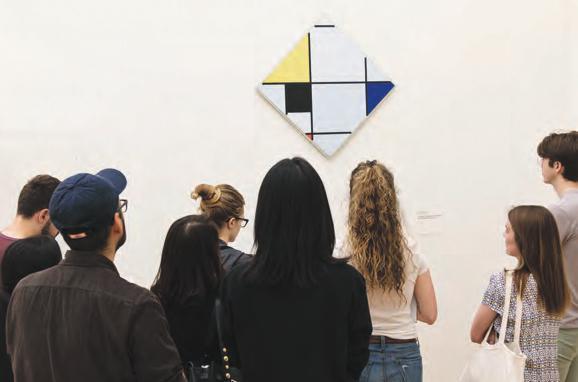
Students have access to the Art Institute of Chicago and its extensive research collections including the Prints and Drawings Room and Ryerson and Burnham libraries. Additional resources include the Flaxman Library, Video Data Bank, Fashion Resource Center, Roger Brown Study Collection, and the Gene Siskel Film Center. Numerous visiting artists, designers, historians, and critics offer opportunities to expand knowledge and challenge ideas. Chicago’s vibrant cultural and artistic environment includes major cultural institutions, numerous artist-run galleries, and community-based organizations.
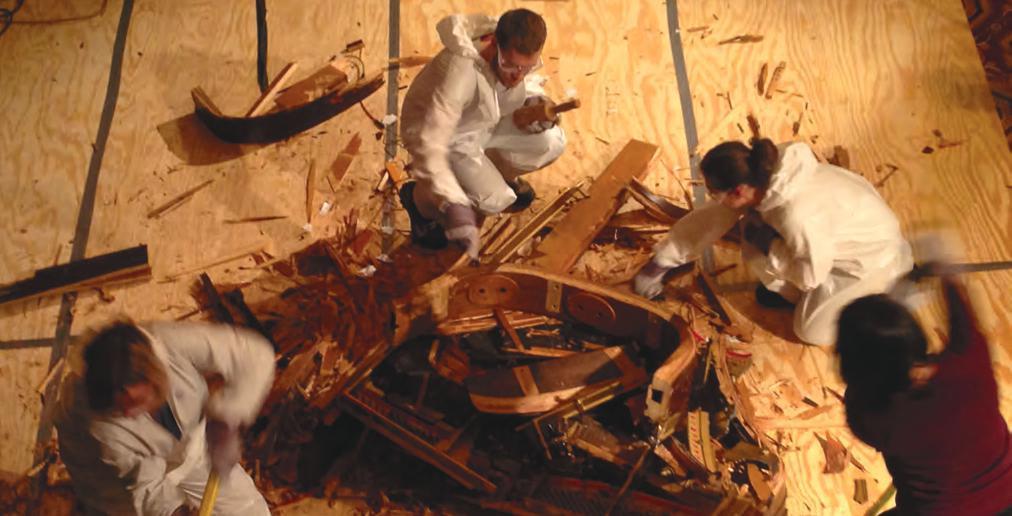
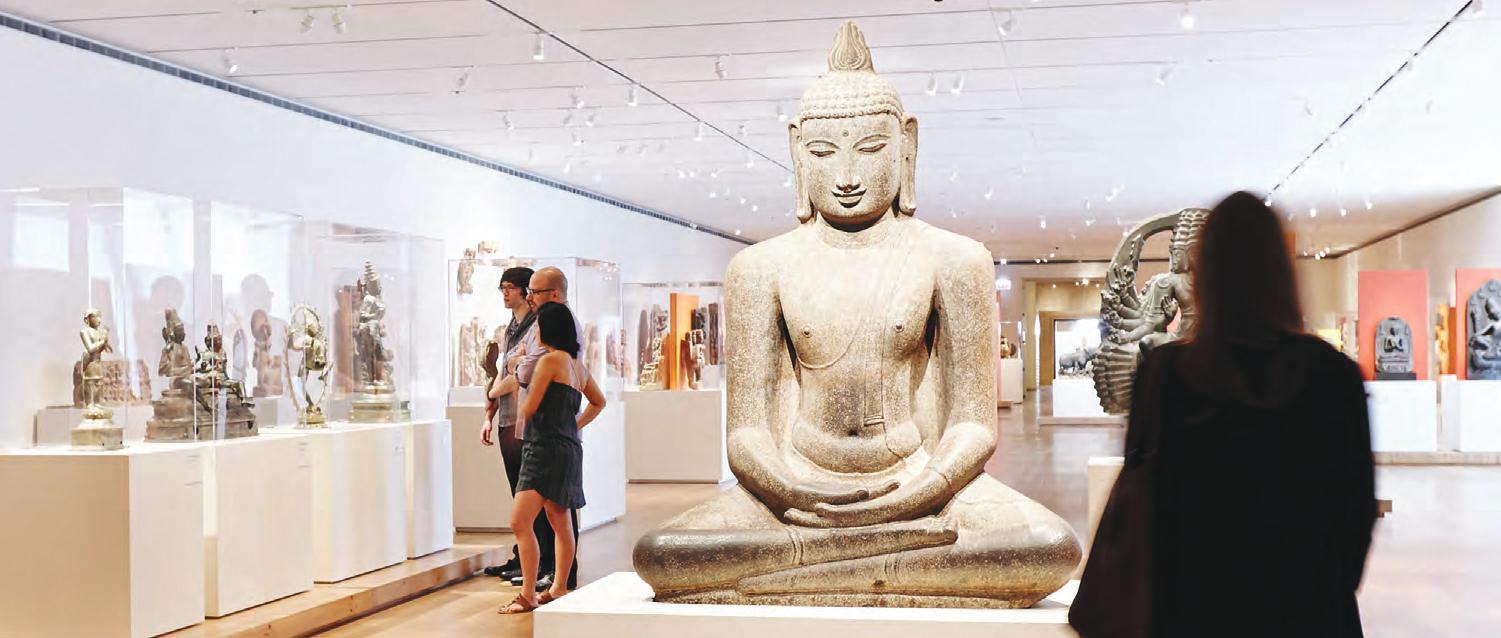
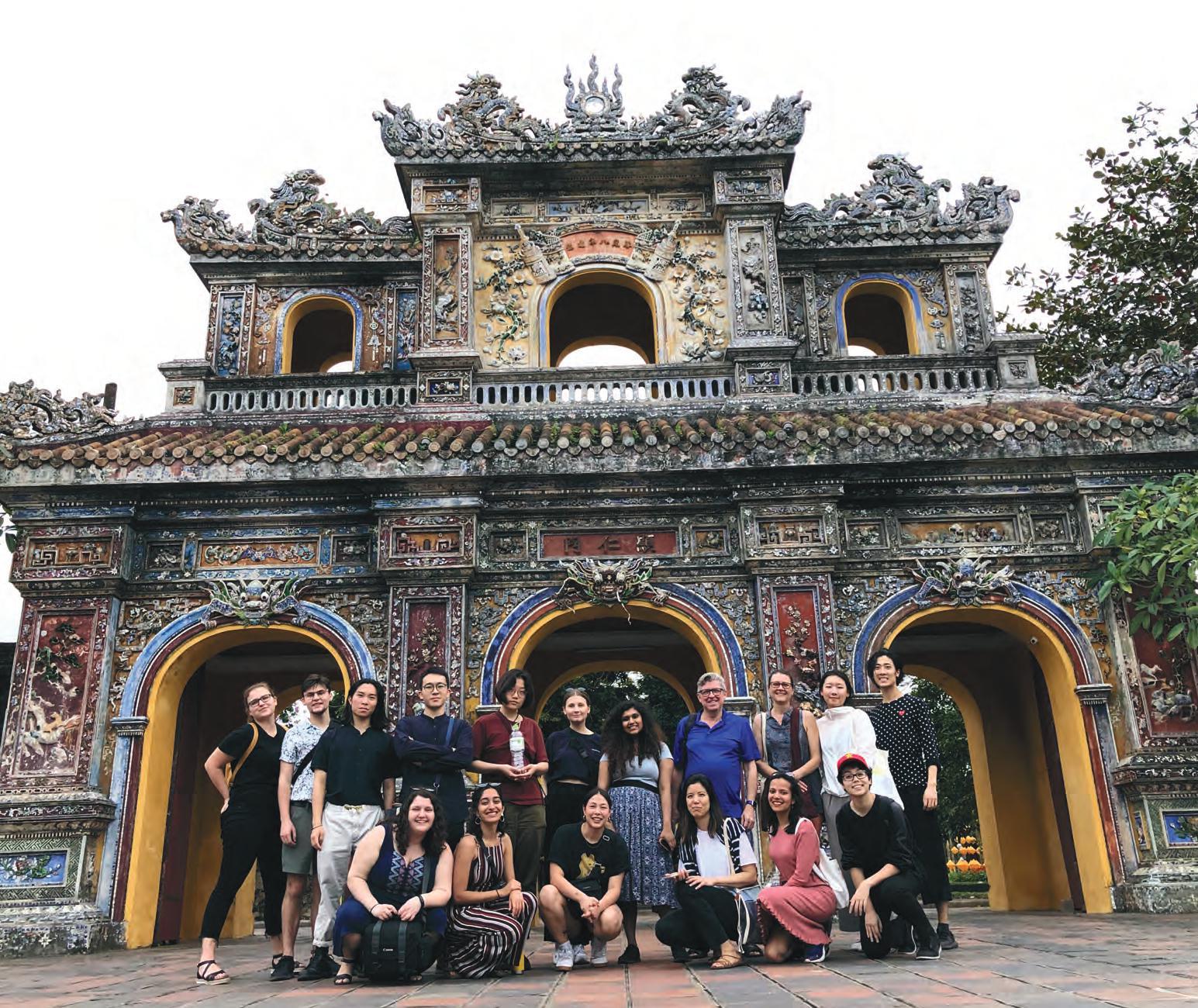
saic.edu/dual
Our dual degree provides immersive study in both art history and arts administration. The program positions graduates competitively for a range of career opportunities—from museum administration and curation to academia to cultural policy advocacy.
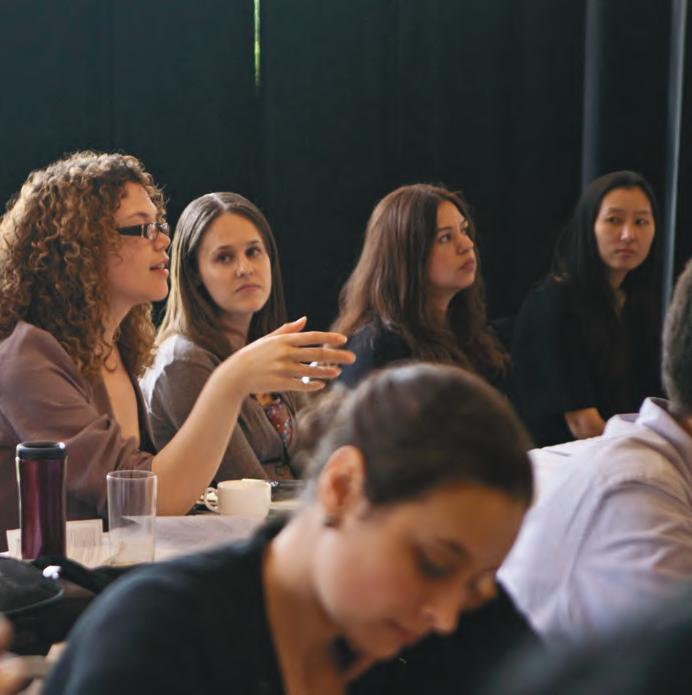
This three-year program combines graduate studies in the history of modern and contemporary art with the business of arts and cultural administration. Students explore current trends in both fields through a customized curriculum supplemented by lectures and events. Students are poised for a wide variety of opportunities in academia, museums and galleries, or work for nonprofit arts and cultural organizations. Graduates earn both a Master of Arts in Modern and Contemporary Art History and a Master of Arts in Arts Administration and Policy.
Students benefit from world-class research resources, including our own Art Institute of Chicago, its special collections including the Prints and Drawings room, and the Flaxman Library with its vast collection of books, publications, and recordings, plus numerous collections on- and off-campus, and a rich variety of public programs. Students also have easy access to Chicago’s diverse array of arts, cultural, and community organizations—with opportunities to partner with them on a variety of projects through the department’s Management Studio courses.
SIMON ANDERSON
SHIBEN BANERJI
ANNIE BOURNEUF
DELINDA J. COLLIER
KATE DUMBLETON
JAMES ELKINS
MICHAEL J. GOLEC
SETH KIM-COHEN
JENNIFER DOROTHY LEE
ADELHEID MERS
MAGDALENA MOSKALEWICZ
DANIEL R. QUILES
DAVID RASKIN
NORA ANNESLEY TAYLOR
MECHTILD WIDRICH
BESS WILLIAMSON
Students are exposed to leading voices in the arts through our Visiting Artists Program. Past participants have included distinguished artists such as Graham Pullin, Arlene Shechet, Anab Jain, Lewis Hyde, Irene Hofmann, Xaviera Simmons, Kendell Geers, Ron Athey, Beatriz Milhazes, and Iñigo Manglano-Ovalle. Each year, the Lifton Lecture Series features a prominent scholar speaking on a topic related to modern and contemporary art history, including women art historians and their contributions to the field.
Dual degree students also help produce e-merge: journal of arts administration and policy, offering valuable experience in publication management. The journal is dedicated to fostering creative discussions among leading professionals, academics, and students, and features collaborations with guest editors from across SAIC.

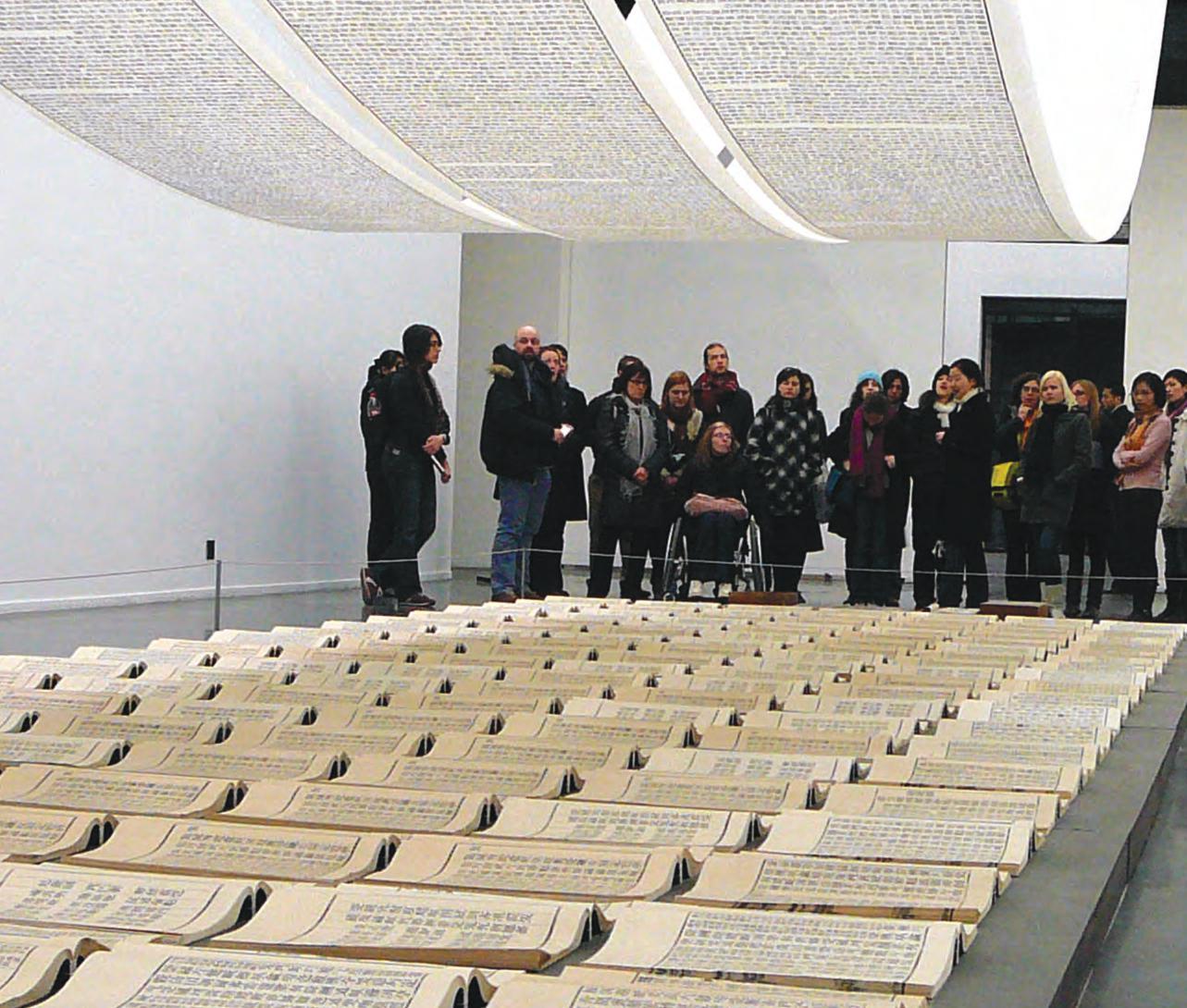
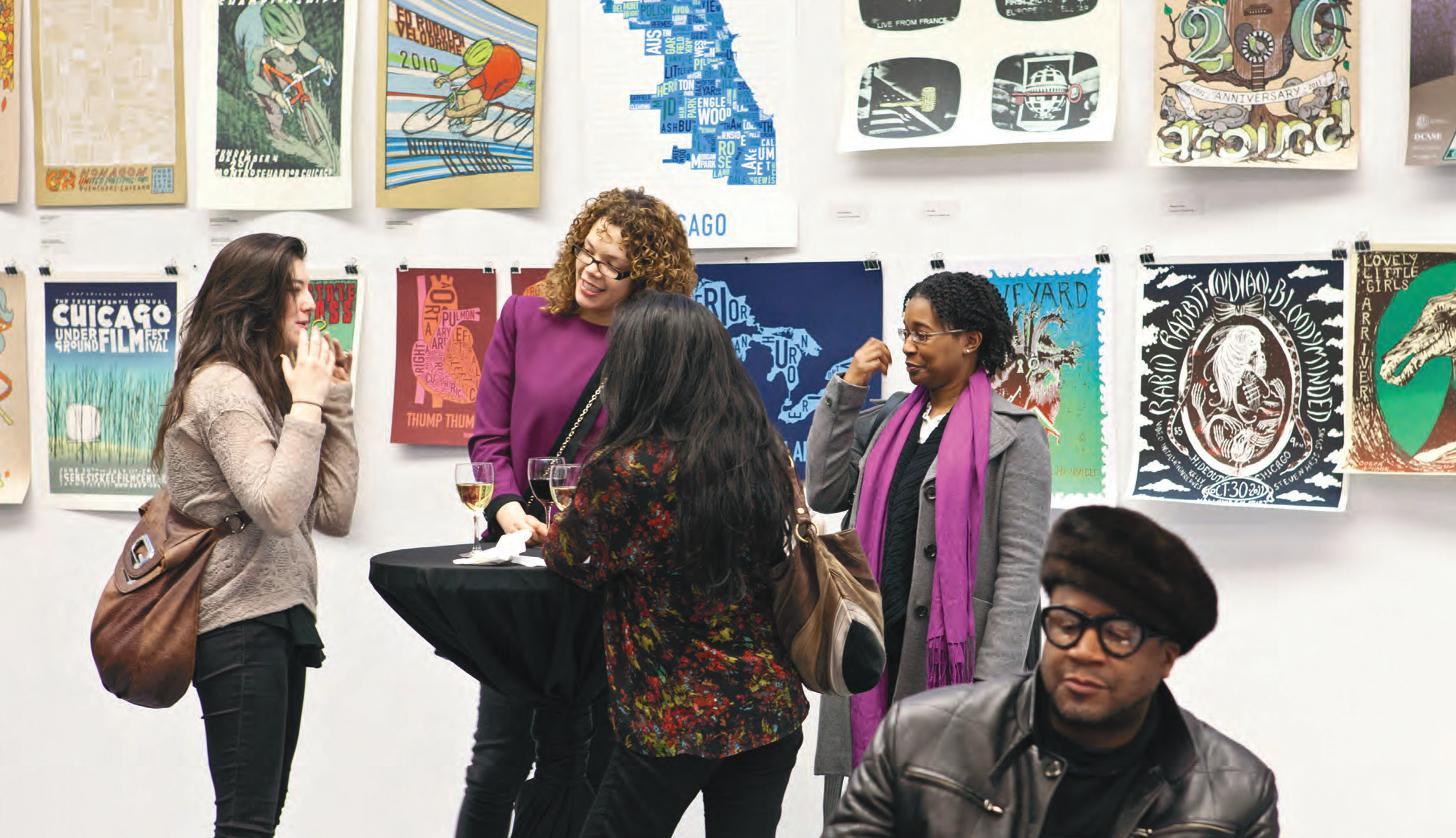

This innovative program integrates making, researching, and analyzing artwork in a transdisciplinary environment that emphasizes investigation and invention. Students pursue scholarly, studio, and hybrid research practices as they explore ways of seeing and representing social, cultural, and visual phenomena in the 21st century.
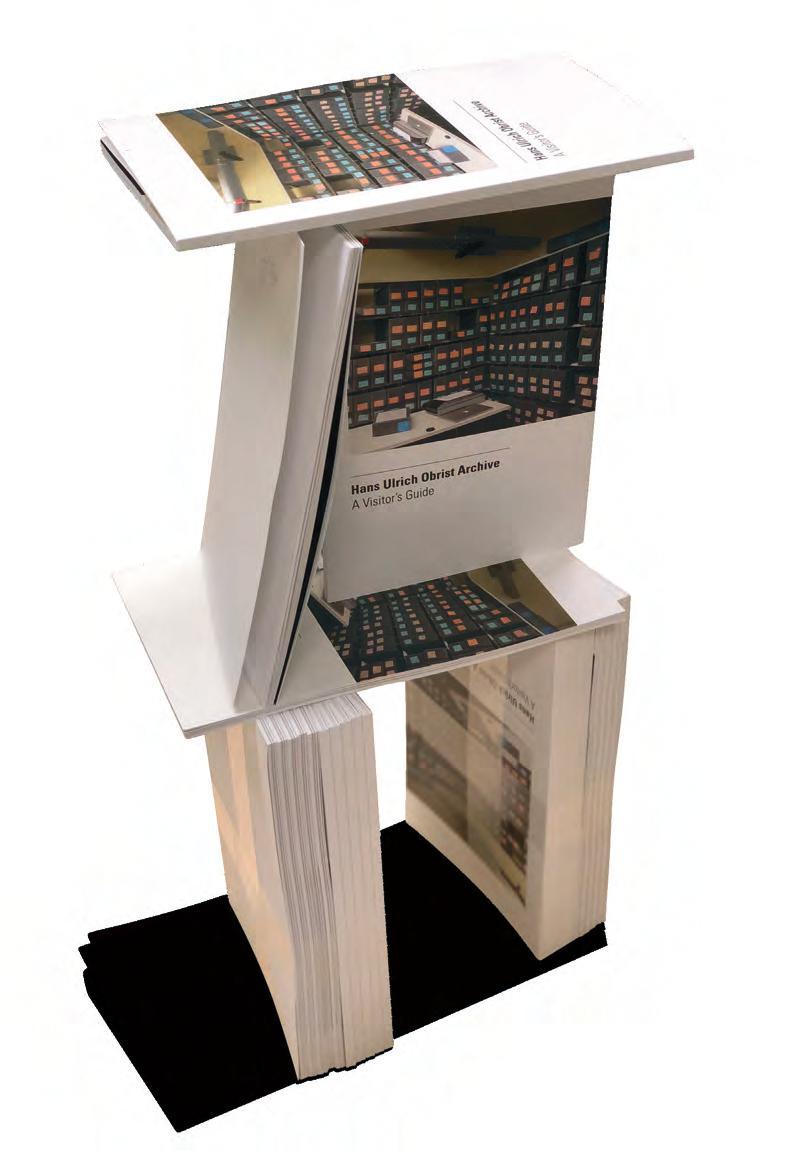
The program is based on a core framework combining visual theory and immersive research with the production of writing, artwork, or both. The flexible curriculum balances topic-based seminars, independent work with faculty advisors, and electives with a strong emphasis on interdisciplinary exploration.
Guided by advisors, students design their own course structure to match their interests, combining artistic and critical practices, allowing for the final thesis to be a creative body of work that prioritizes writing and/or making. Students organize an annual symposium and exhibition to share their research in a professional context, critiqued by artists, curators, and scholars.
Department faculty are internationally recognized artists, designers, critics, writers, and scholars who share a common interest in taking disciplinary knowledge beyond the boundaries of conventional practice.
ROMI CRAWFORD
PATRICK DURGIN
DANNY FLOYD
JOSEPH GRIGELY
TERRI KAPSALIS
KRISTI MCGUIRE
The Visual and Critical Studies Program sponsors visiting artists and critics representing a wide range of perspectives. Recent guests include:
Laila Fatimi and Adrian Pijoan on postcolonial and queer UFO futurities
Lai Yi Ohlsen, Salimatu Amabebe, Cherrie Yu, and Hannah Rubin on dance lessons
Ariella Aïsha Azoulay on potential histories and unlearning imperialism
Johanna Drucker on contemporaneity and crisis
Genevieve DeLeon, with NYAC (Native Youth Arts Collective) and Burn Something on art and poetry in community life
KAREN MORRIS
KAMAU A. PATTON
DUSHKO PETROVICH
JOSHUA RIOS
SHAWN MICHELLE SMITH
Their backgrounds are diverse, including sound and performance, critical race studies and anthropology, mass culture and gender/ sexuality studies, photography and social history, conceptual practices and textual criticism, and a range of emerging disciplines. Faculty members have won Guggenheim awards for both studio practice and critical scholarship.
Doug Ashford on reading through the non-human
Boris Groys on changing the world through art
Gordon Hall on object lessons
Lauren Berlant on dissociative poetics
Akili Tommasino on Black Panther Party newspapers
Ling Yang on boys’ love in Chinese online culture
Mitesh Dixit on Complex Projects at Delft University of Technology, Netherlands
Åbäke on socially reflexive design
Zak Kyes on fighting with inanimate objects
Carlos Fernández Pello on Caillois, camouflage, and night-sky constellations
Erica Barrish on post-reductive minimalist practices of women from 1960–present
Szu-Han Ho on transnational collaboration
Joey Orr on public art actions


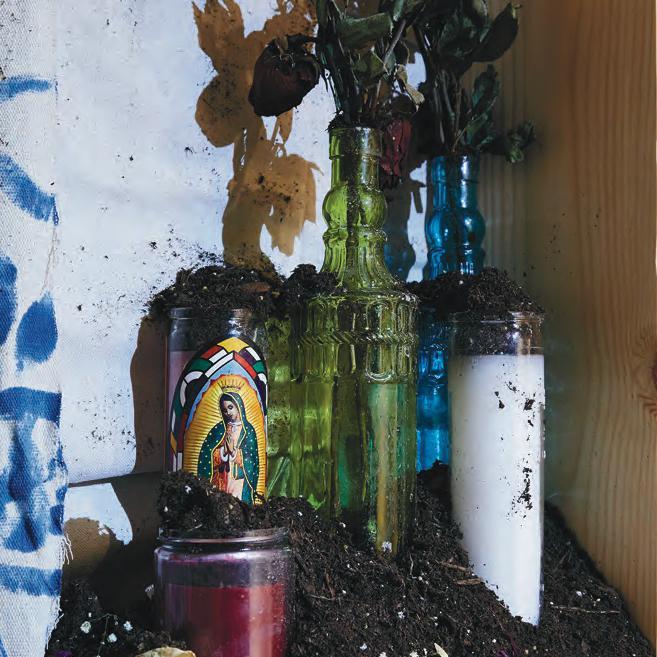
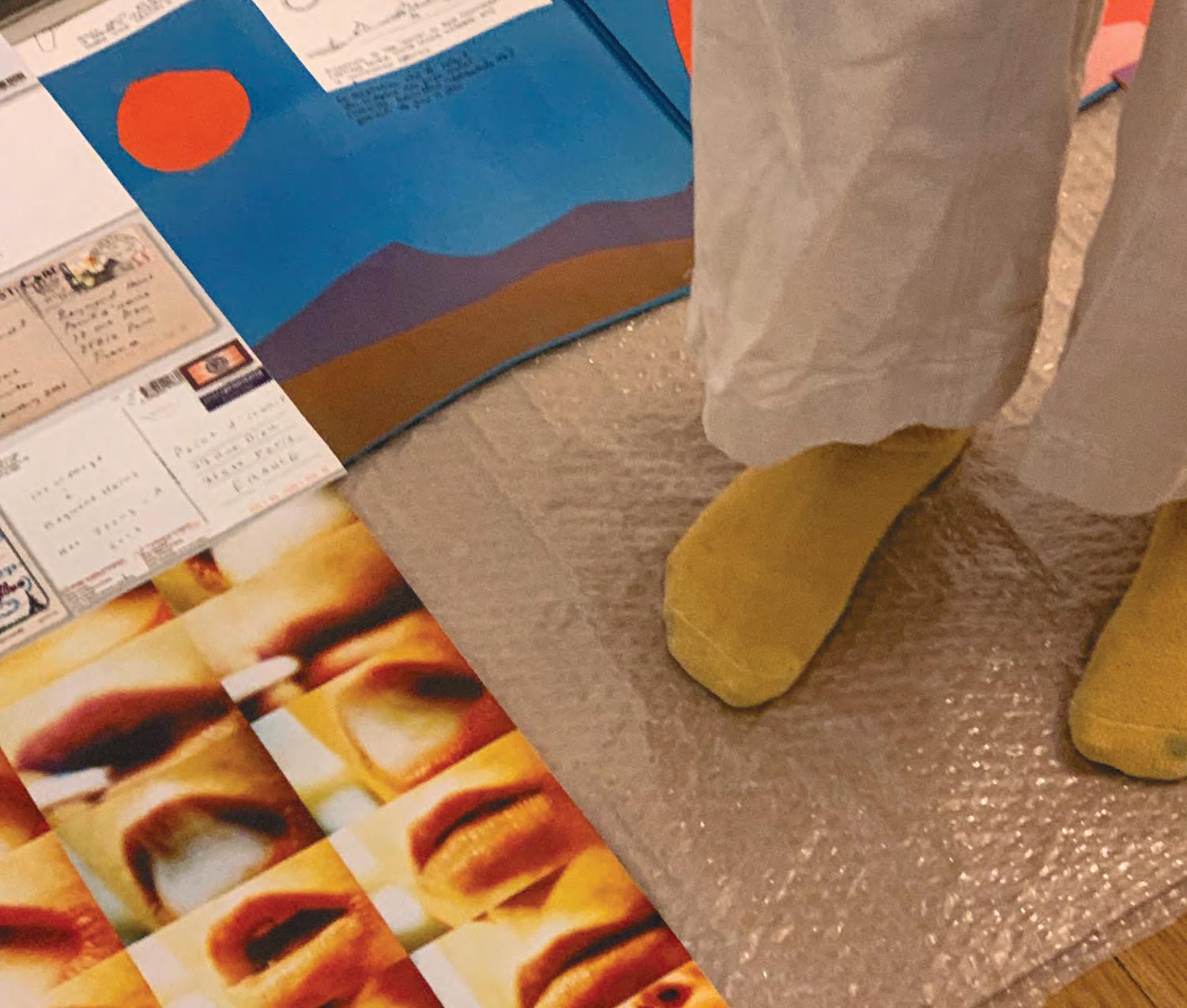
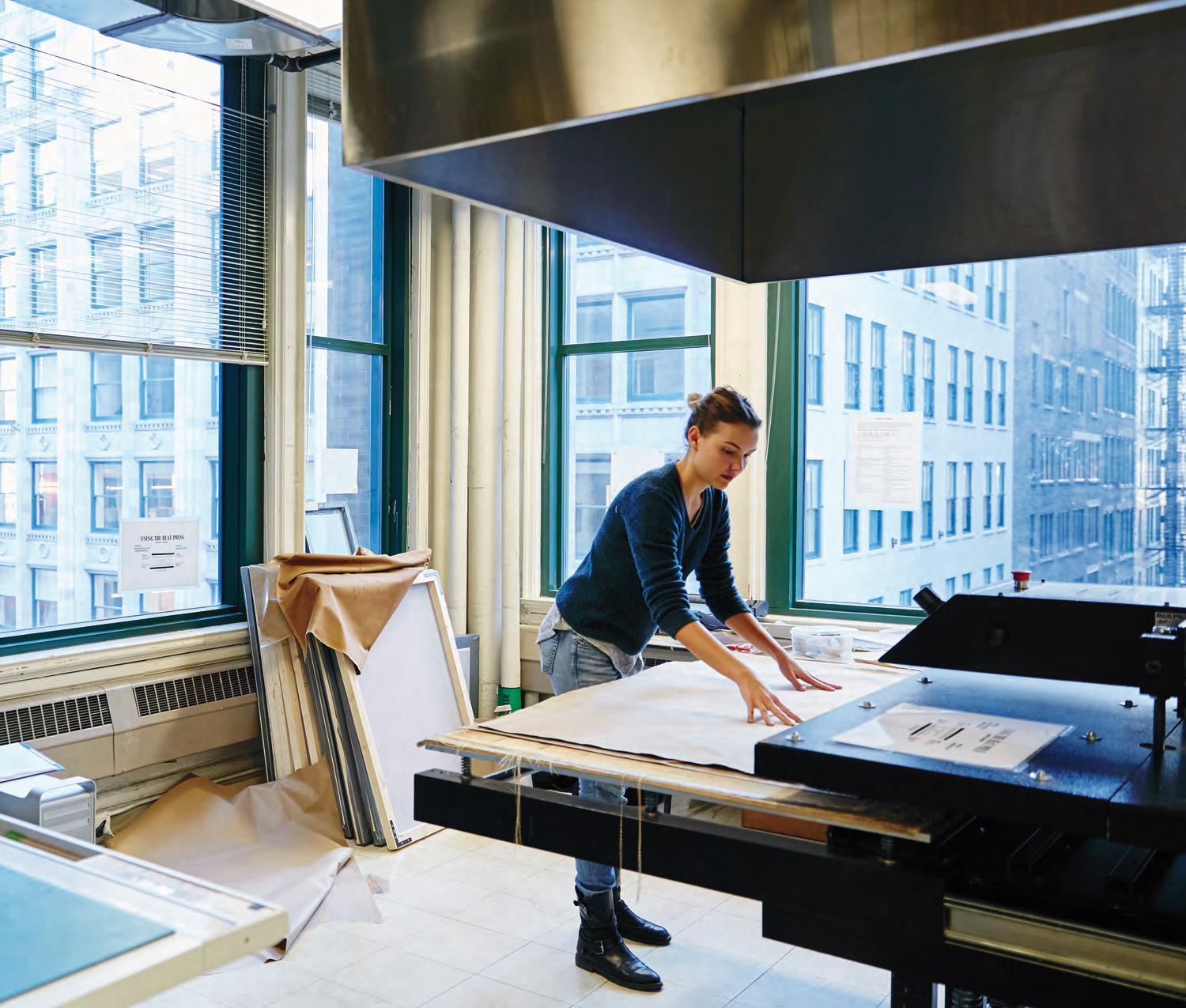
At SAIC, we believe that meaning and making exist as a perpetual, productive cycle driven by experience, research, and critique. Here, you’ll have many opportunities to perfect and define your work with the feedback and support of a strong network of artists, historians, designers, and educators.

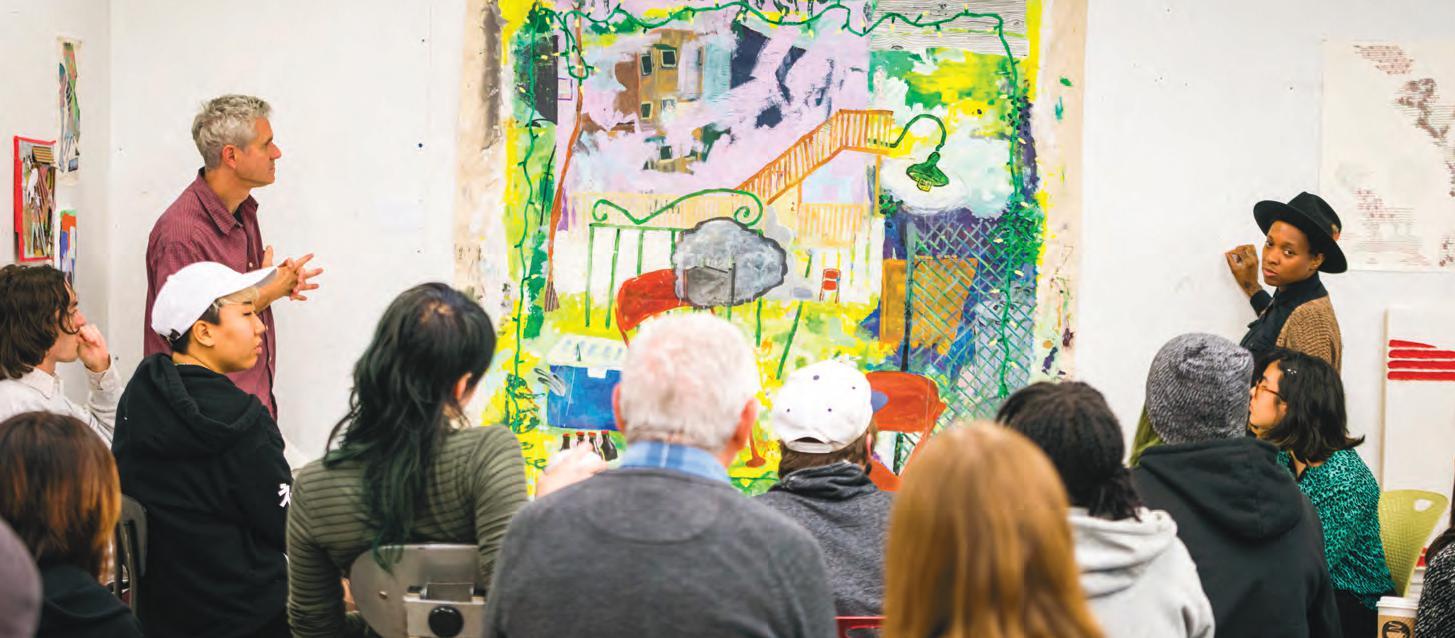
One of the principal means of assessment for studio programs each semester is a week-long schedule of critiques. Classes are suspended and the entire faculty and invited visiting artists and designers assemble into panels that conduct intensive studio critiques with all studio and writing graduate students. Students in academic departments are invited to participate on panels.

Critiques are interdisciplinary, with panels composed of faculty, visiting artists, and peers from across SAIC departments. Interdisciplinary critiques allow for a broader range of responses to the work, and are intended to assess the success of your work for a more general, yet highly informed, audience. Panels include faculty representing your department to ensure work is considered within your disciplinary point of view, and reinforce the expectations for your graduate study.
Studio critiques are required of every full-time graduate student pursuing an MFA in Studio or Writing degree. Typically, SAIC graduate students have at least four critique sessions throughout their studies at SAIC, augmenting twice monthly tutorials with their graduate advisors.

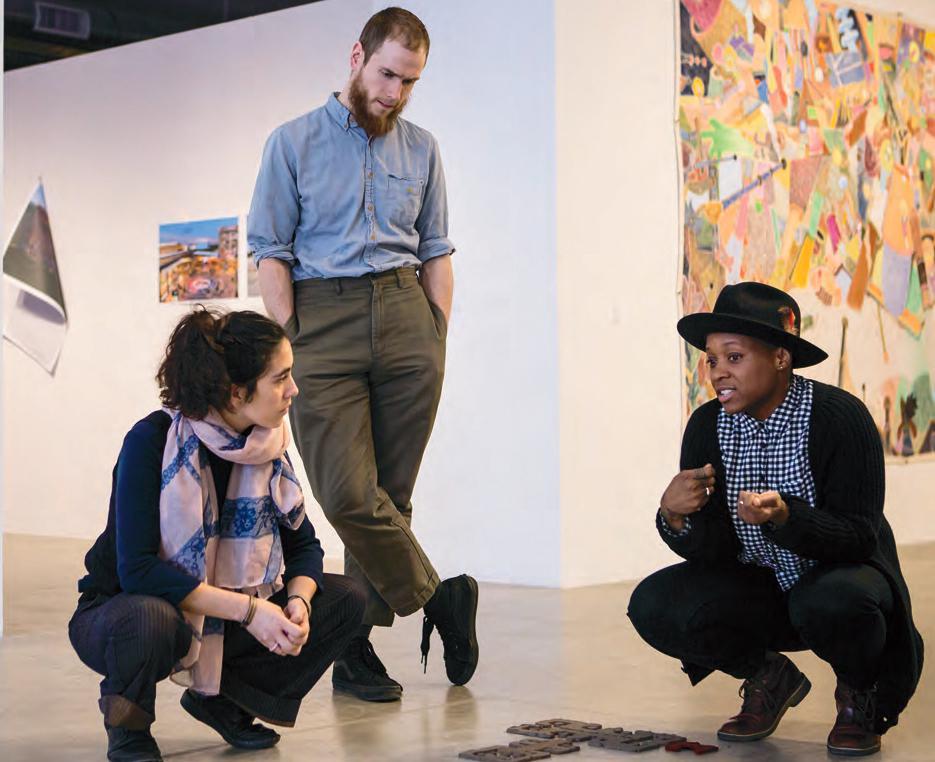
SAIC has a wide-reaching post-grad community of artists, historians, curators, and arts administrators. Our graduates maintain meaningful relationships with the school, collaborating with emerging artists, returning to campus as faculty members, and working in SAIC-adjacent institutions.
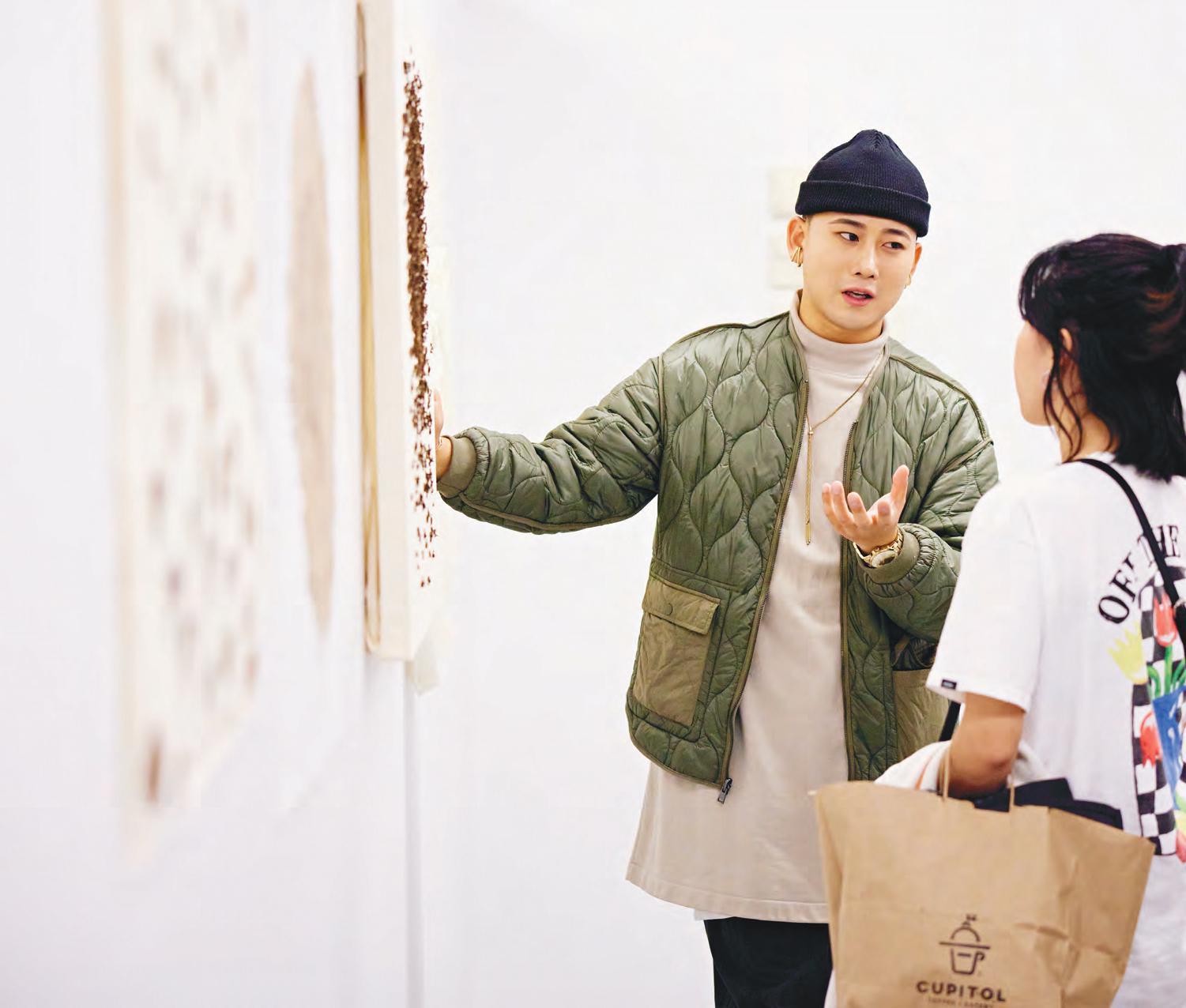
Our Career and Professional Experience (CAPX) office helps students and alums gain the self-knowledge, experience, skills, and confidence needed to develop unique, creatively satisfying career paths.
CAPX provides one-on-one advising, group workshops, and a wide range of professional networking services.
CAPX connects SAIC students with organizations and companies in Chicago, throughout the U.S., and internationally for rewarding internship experiences.
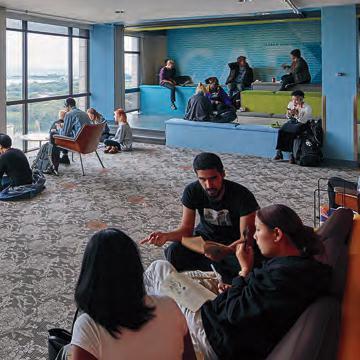
This innovative college-to-career platform connects students and alumni with thousands of internships, jobs, and other employment opportunities on- and off- campus.
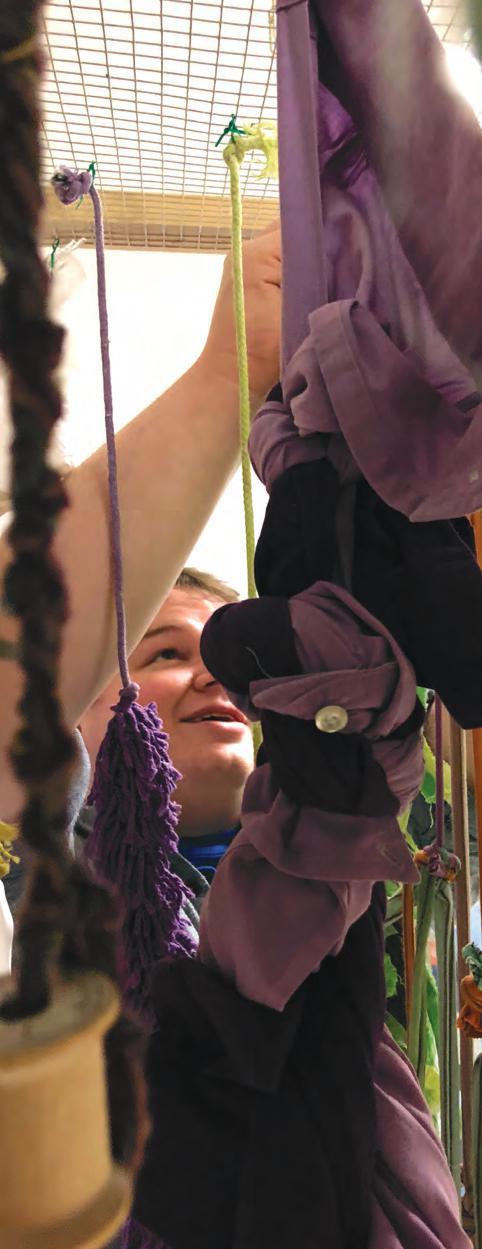
Students expand their horizons through informational interviews and consultations with alumni, creative professionals, and business leaders about venture ideas and future careers.
Students can sharpen their interview skills with this free, on-demand virtual interview training platform.
This personalized, online assessment and coaching service helps students discover their natural talents and develop their strengths.
saic.edu/alumni
While Angel Otero identifies most as a painter, that doesn’t begin to capture his art. His bold compositions of dried oil paint smash together colors, textures, and focal points, giving the pieces a kinetic aura. Employing unorthodox materials— from oil skins and silicone to resin, tar, and linen— Otero plays with the language of painting from a sculptural stance. This blending of representational and abstract characterized his first solo exhibition, Angel Otero: Swimming Where Time Was, held in 2022 at the New York City gallery Hauser & Wirth. Otero has also exhibited in the Museum of Contemporary Art Chicago, is featured in the Guggenheim’s permanent collection, and has been lauded in The New York Times.

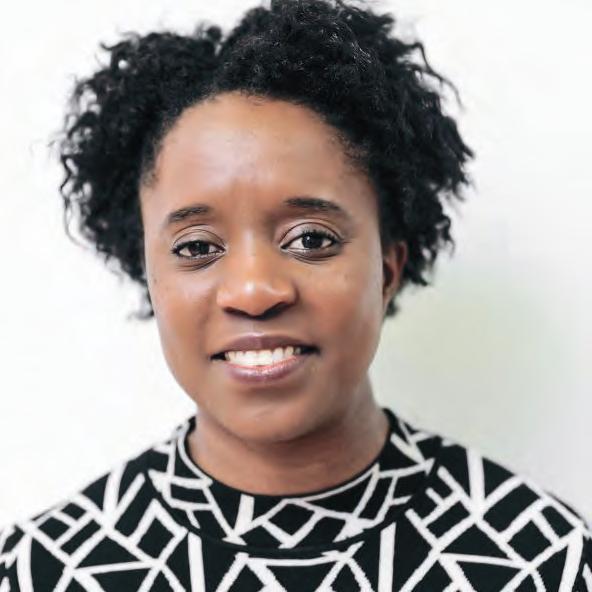

Yanique Norman’s first solo exhibition in Chicago, in 2022 at Goldfinch gallery, featured her multimedia series, Blue to Green. Part of Norman’s ongoing exploration of Black Fungibility, the installation is divided into three acts, each progressing through a different medium—drawings, collage, and digital images—to create intricately layered representations of Blackness. Born in Jamaica and raised in Brooklyn, Norman has been recognized with the Foundation for Contemporary Arts Emergency Grant (2022 & 2019), South Arts: Individual Artist Career Opportunity Grant (2022), United States Artists: Artist Relief Grant (2021), Artadia Award (2020), the Walthall Artist Fellowship (2016) and the Mary Brock Williams Scholarship (2013). Her works have been featured in publications and are held in several museum and public collections.
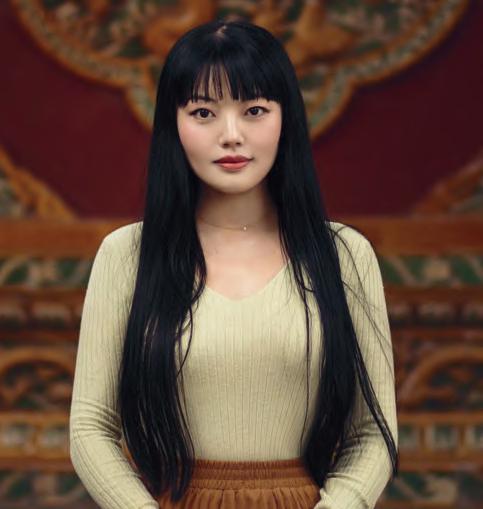
Yuge Zhou was a featured artist in the 2022 SAIC Alum Showcase at EXPO Chicago, Citizen: Artist. Trampoline Color Exercise is a video loop showing a collage of Olympic gymnasts from above whose uniforms and identities change throughout the video—a celebration of form and rhythm. Born and raised in China, Zhou is known for her intriguing video collages. Her solo show, Moon Drawings, was exhibited at the Chinese American Museum of Chicago in 2022 and in 2021 she received the Artist Fellowship Award for media arts from the Illinois Arts Council.
As Assistant Professor of Theater Arts at Brandeis University in Massachusetts, Mitsu Salmon creates original works of performance and visual arts, bringing together multiple disciplines. The Los Angeles native has lived around the world, from Europe to Asia, and her ability to combine diverse media echoes her interest in translating different cultures and languages. Salmon has presented work at the Chicago Cultural Center, Highways, Performance Space 122, and internationally at Hebbel Am Uffer in Berlin, London Performance Art Festival, and Urbanguild in Kyoto, Japan.
A curator whose career is firmly grounded in social and environmental justice, Tizziana Baldenebro co-curated the United States Pavilion at the 2023 Venice Biennale Architettura. Developed in partnership with Lauren Leving, curator at the Museum of Contemporary Art Cleveland, the theme for the pavilion, Everlasting Plastics, explores our complex and contradictory relationship with this ubiquitous material. A former Ford Foundation Curatorial Fellow at the Museum of Contemporary Art Detroit (MOCAD), Baldenebro serves as Executive Director of SPACES, an artist-driven institution in Cleveland.

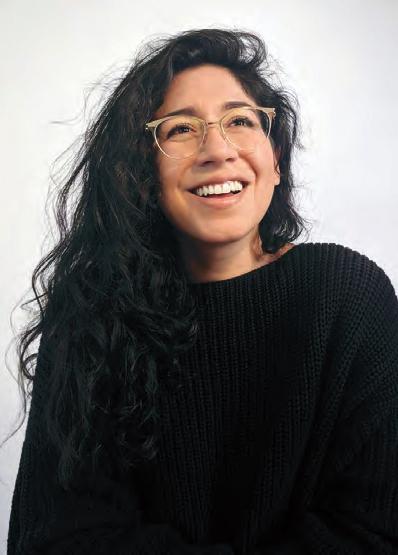
Known professionally as Ryan Ken, Blocker won an Emmy Award for outstanding writing for a variety series in 2022 for their work as a staff writer on Last Week Tonight with John Oliver on HBO. A writer, arts administrator, comedian, and musician, Blocker focuses on how the arts can facilitate a more just world. Their work has been recognized by The Hollywood Reporter, Vulture, NPR, and The Los Angeles Times. Blocker is also the program manager for Enrich Chicago, an arts-led alliance aiming to undo racism in the arts sector and beyond.

Iliana Regan’s new book Fieldwork was recently published in hardcover and is an Amazon Editor’s Pick for best biographies and memoirs. The memoir traces Regan’s life as a forager, her Eastern European ancestry, rural midwestern childhood, and new life as a Michelin star-winning chef currently working in Michigan’s remote Upper Peninsula. The book explores how her complex gender identity informs her work and her connection to the natural world. Fieldwork follows up Regan’s celebrated debut, Burn the Place, which was a National Book Award nominee.


Jess Bass has directed and produced viral music videos for punk band Stuck’s “Time Out” and Moontype’s “Ferry.” Bass created the wearable sculptures, props, sets, and served as choreographer. Bass’ work has been exhibited in galleries and art fairs in New York, Chicago, and beyond, and has been featured in the New York Times, Hyperallergic, and several other publications.

Complete your two-part application available at saicgraduate.slideroom.com
Provide basic information, unofficial transcripts, and test scores (if applicable) and select the programs to which you are applying. Payment will be collected at the end of this section and will cover the cost of all programs to which you are applying.
For each program selected in your application form, you will need to submit a corresponding electronic portfolio and references based on the requirements for each program.
Your application is not complete until you have submitted both the application form and the electronic portfolio for that program.
For detailed application information for individual programs, please visit saic.edu/gradapp.
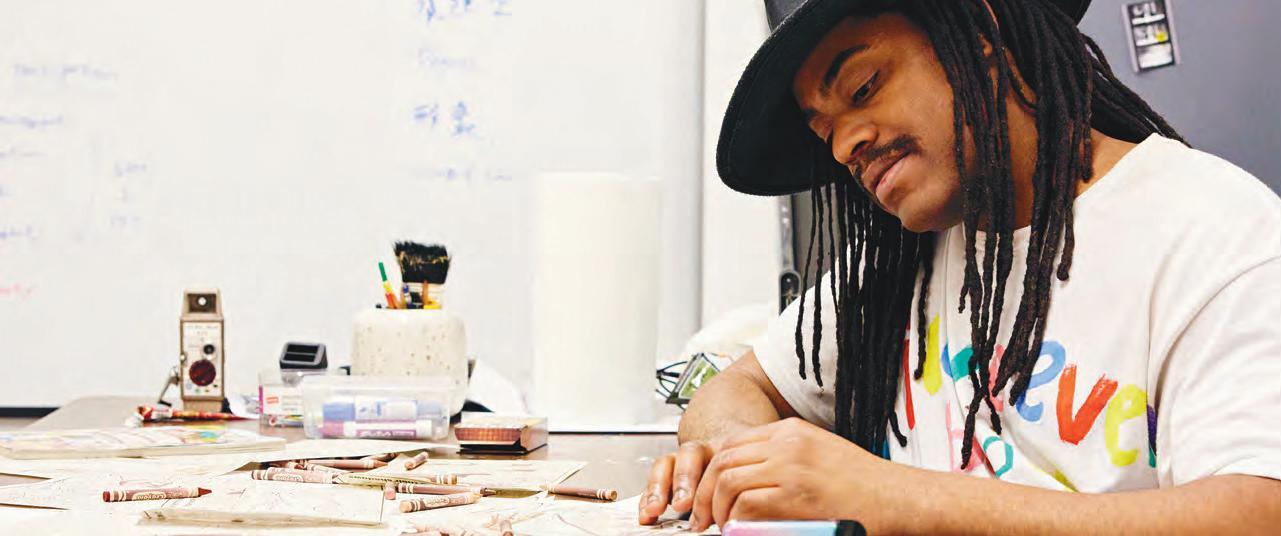
For programs requiring an interview prior to an admission decision, we host an interview weekend in February. Keep an eye out for a Save-the-Date after applying. For students far from Chicago or unable to travel, interviews may be conducted remotely.
Students accepted for admission can get details on next steps, including orientation and semester start dates, at saic.edu/grnext.
Important updates about your application decision and any special instructions will be sent directly to the email address included your application. Please make sure your email settings will accept messages from SAIC.
Each spring we host New Student Receptions where you can meet faculty, other students, and alums. Find a reception near you at saic.edu/grnext.
Accepted students will be notified of their deposit deadlines via their admission letter. Most programs have an April 1 deadline to secure a space with a $500 deposit. Once your deposit is received, you will work with your department to select and register for classes.
With both virtual and in-person events, you can easily connect to admissions and faculty throughout the application process. Events include campus tours, portfolio days, application preparation sessions, community critique days, individual counselor meetings, and more.
For details, visit saic.edu/grevents.
Students are automatically considered for merit-based aid during the admission process and notified at the time of acceptance. U.S. students should complete the Free Application for Federal Student Aid (FAFSA) at fafsa.gov prior to applying in order to expedite the financial aid process and determine eligibility for need-based aid.
For information on available funding opportunities, including outside scholarships for U.S. and international students, visit saic.edu/sfs.
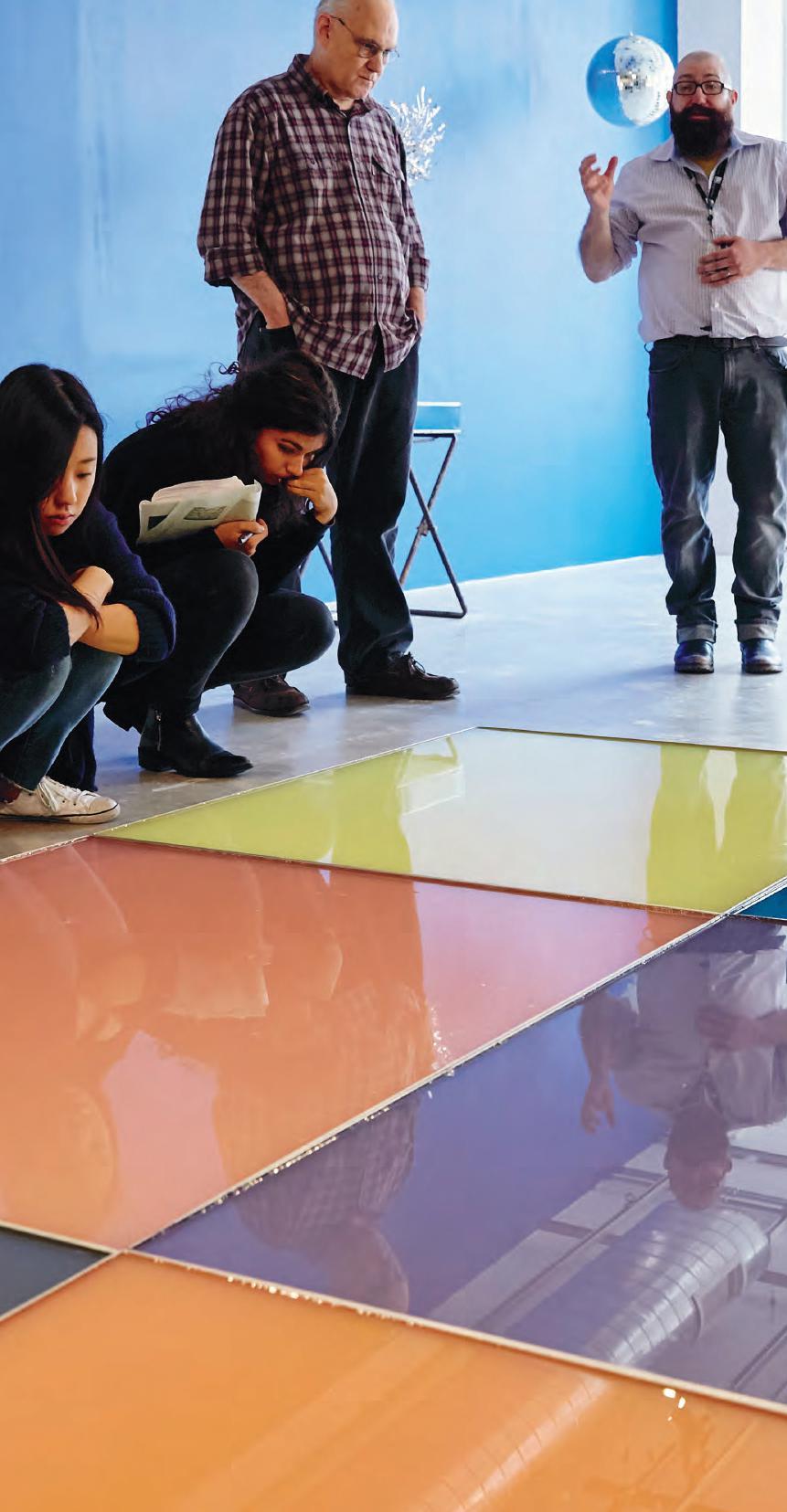
The Art Institute of Chicago is a private, non-profit corporation. The School of the Art Institute of Chicago (SAIC) is a professional college of the visual and related arts, accredited since 1936 by the Higher Learning Commission.

The BFA with Emphasis in Art Education (BFAAE) and the Master of Arts in Teaching (MAT) art education programs are certified by the Illinois State Board of Education, and its Master of Arts in Art Therapy and Counseling (MAATC) program is accredited by the Commission on Accreditation of Allied Health Education Programs (www.caahep.org) upon the recommendation of the Accreditation Council for Art Therapy Education (ACATE). The Master of Architecture (MArch) degree program tracks are accredited by the National Architecture Accrediting Board (NAAB).
SAIC is a member of the Council for Higher Education Accreditation, the American Association for Higher Education, the National Art Education Association, the College Art Association of America, the Federation of Independent Illinois Colleges and Universities, the Illinois Art Education Association, the National Conference of Artists, the College Scholarship Service, the Council for Advancement and Support of Education, the Institute of International Education, the National Association for Foreign Student Affairs, the American Association of University Women, the National Association of College Admissions Counselors, the American Association
of Collegiate Registrars and Admissions Officers, the College Entrance Examination Board, and the National Association of Student Personnel Administrators.
In the United States, most state registration boards require a degree from an accredited professional degree program as a prerequisite for licensure. The National Architectural Accrediting Board (NAAB), which is the sole agency authorized to accredit U.S. professional degree programs in architecture, recognizes three types of degrees: the Bachelor of Architecture, the Master of Architecture, and the Doctor of Architecture. A program may be granted a 8-year, 3-year, or 2-year term of accreditation, depending on the extent of its conformance with established educational standards.
Doctor of Architecture and Master of Architecture degree programs may consist of a preprofessional undergraduate degree and a professional graduate degree that, when earned sequentially, constitute an accredited professional education. However, the preprofessional degree is not, by itself, recognized as an accredited degree.
In order to meet the education requirement set forth by the National Council of Architectural Registration Boards, an applicant for an NCARB Certificate must hold a professional degree in architecture from a program accredited by the NAAB; the degree must have been awarded not more than two years prior to initial accreditation. However, meeting the education requirement for the NCARB Certificate may not be equivalent to meeting the education requirement for registration in a specific jurisdiction. Please contact NCARB for more information.
Our Master of Architecture Degree has been accredited by the NAAB since 2011 after candidacy accreditation was granted in 2007. Our next accreditation visit is scheduled for 2023.
Our professional MArch degree is STEM designated. Our MArch graduate students have the option of completing a Certificate in Historic Preservation concurrently while pursuing their Master of Architecture degree.
• Master of Architecture, 3 year option (total 90 credits; requirement: nonprofessional degree)
• Master of Architecture, 2 year option (total 60 credits; requirement: preprofessional degree)
• Master of Architecture, Interior Architecture track, 3 year option (total 90 credits; requirement: nonprofessional degree)
• Master of Architecture, Interior Architecture track, 2 year option (total 60 credits; requirement: preprofessional degree)
The Art Institute of Chicago, including both the school and the museum, is committed to providing an inclusive and welcoming environment for its students, visitors, faculty, and staff, and to ensuring that educational and employment decisions are based on an individual’s abilities and qualifications. The Art Institute of Chicago does not tolerate unlawful discrimination based on race, color, sex, marital status, religion, national origin, disability, age, sexual orientation, gender identity, military or former military status, or any other status protected by federal, state or local law, in its programs and activities, public accommodations or employment practices. The following individual has been designated to handle inquiries regarding the nondiscrimination policies:
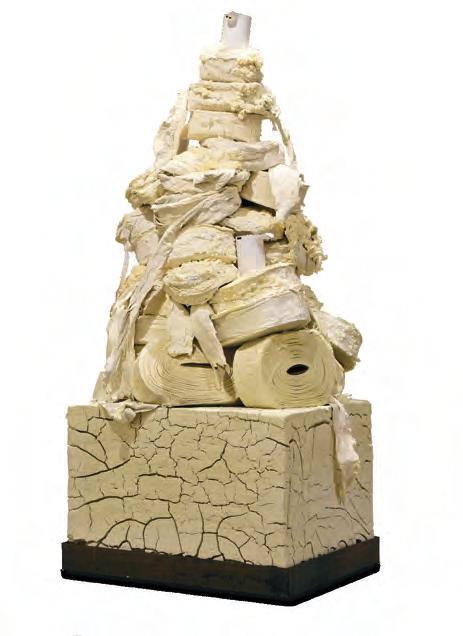
Robert Babcock, Ed. D. Human Resources Department
116 S. Michigan Ave., suite 1200, Chicago, IL 60603
312.499.4165 | title9@saic.edu
The Title IX Coordinator also serves as the designated Section 504 Coordinator for student disability claims.
The Office of Civil Rights can be contacted at the US Department of Education, Office of Civil Rights, Lyndon Baines Johnson Department of Education Bldg., 400 Maryland Avenue, SW, Washington D.C., 20202-1100; the phone number is 1.800.421.3481 and the email address is OCR@ed.gov.
Knowing that a more diverse, equitable, inclusive, and anti-racist campus is critical for the School of the Art Institute of Chicago (SAIC) to fulfill its mission and institutional aspirations, our anti-racism committee established a number of action items to support diversity, equity, and inclusion (DEI) efforts, and catalyze DEI and antiracist work throughout all areas of SAIC. For further information, visit saic.edu/ diversity-equity-inclusion.
The School of the Art Institute of Chicago’s Annual Security & Fire Safety Report is accessible online at saic.edu/clery. The report contains information regarding campus security and personal safety
including these topics: crime and violence prevention, fire safety, crime reporting policies, disciplinary procedures, emergency procedures and other matters related to security and safety on campus. It also contains information about crime statistics for the three previous calendar years concerning reported crimes covered by the Clery Act that occurred on campus; in any off-campus buildings or property owned or controlled by SAIC; and on public property within, or immediately adjacent to and accessible from the campus. Paper copies of this report are available by contacting the Campus Security Office at 312.899.7442 or by emailing John Pack, Executive Director of Campus Security, at jpack@saic.edu.
